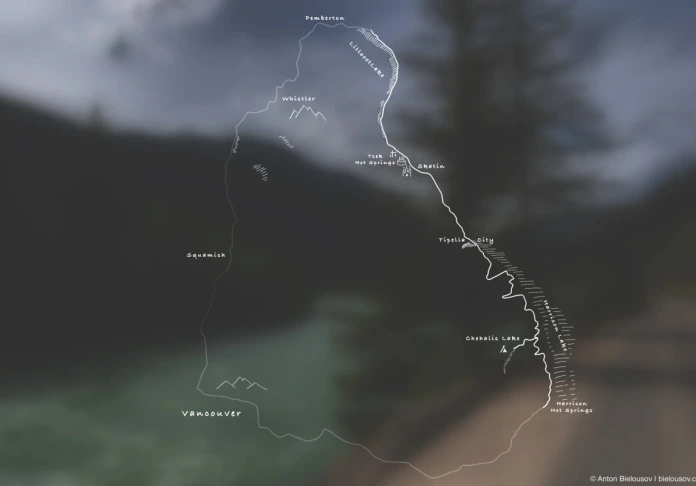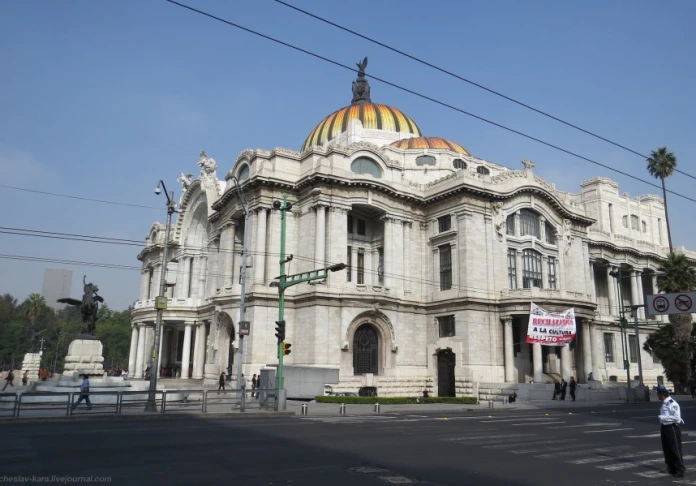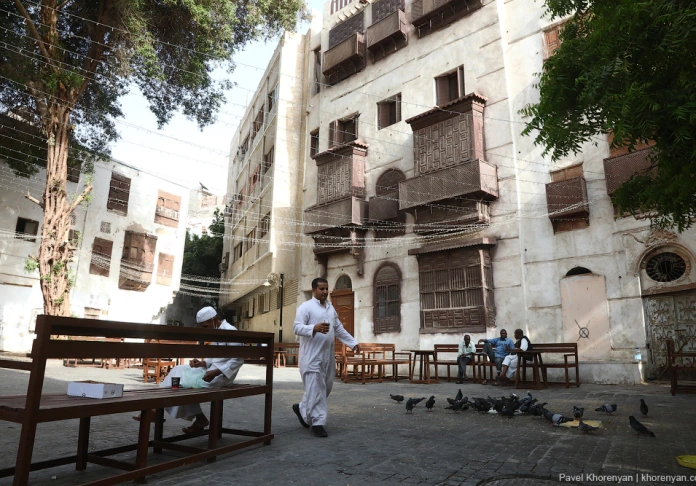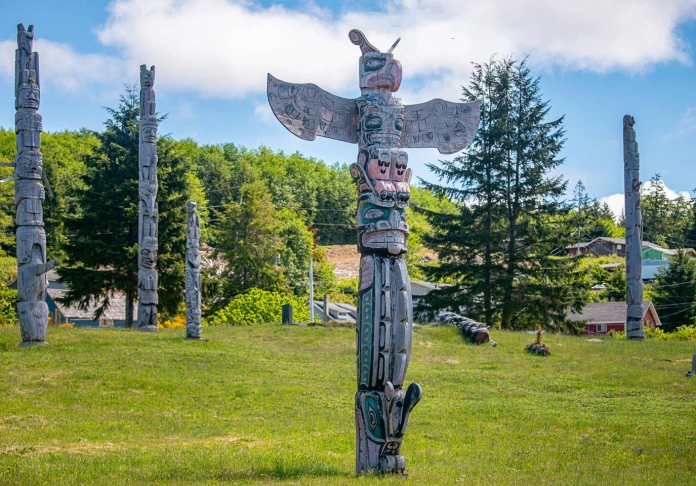Detroit
If you had asked me last year where in the USA I would most like to visit, I would have answered that if we’re talking about a state, it would probably be Alaska, and if a city, it would undoubtedly be Detroit. Why Detroit and not, say, New York, Washington, San Francisco, or Los Angeles? It’s quite simple — all other metropolises seem to symbolize humanity’s triumph over nature and society’s triumph over individuality, whereas Detroit is not so straightforward… probably. I imagined it as a modern dying ghost town, like Pripyat without the exclusion zone, like a deserted military town after the Cold War. On top of that, Detroit carries a bad reputation regarding its crime rates. But at the same time, I heard that the city is rapidly recovering, and it might not be long before it loses its uniqueness and becomes… just an ordinary U.S. city.
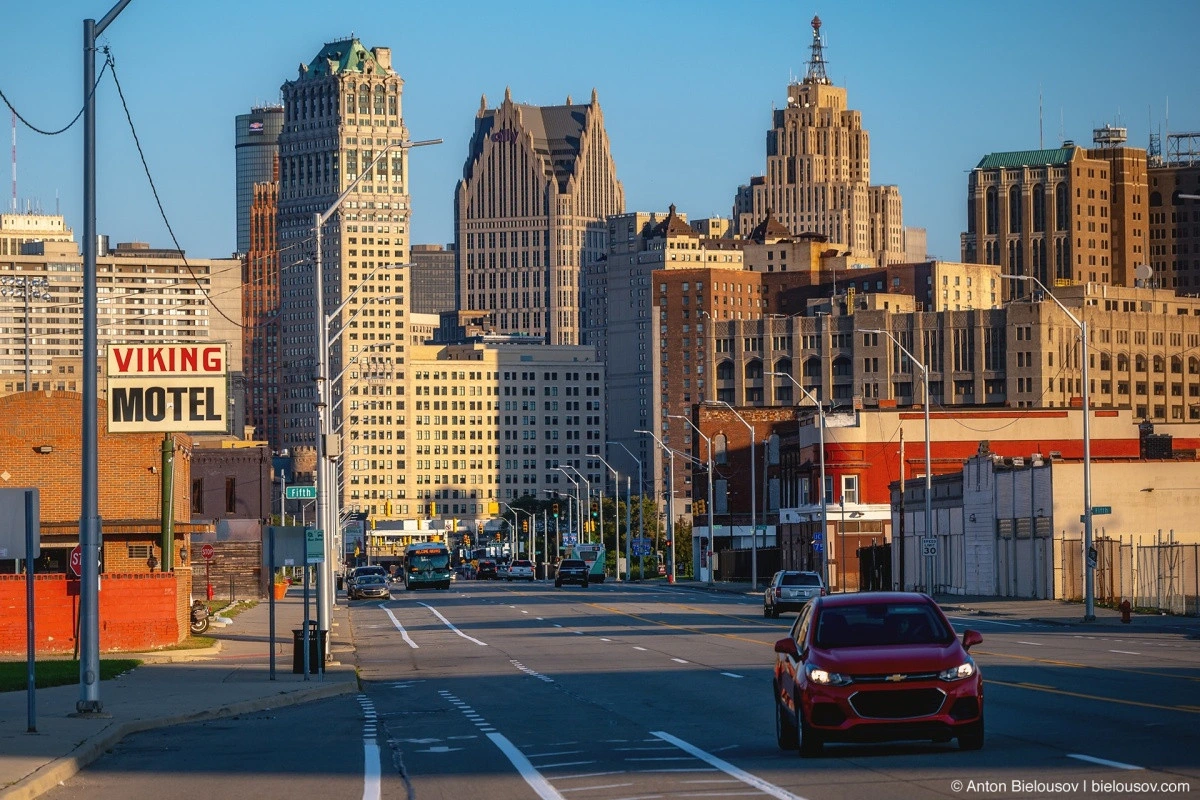
Today, there will be yet another lengthy post about how Detroit reached this point in its history, what its current state is, and whether it’s worth visiting.
In the first half of the 20th century, Detroit became the embodiment of U.S. industrialization — the 4th largest city in America by population and the most significant for the country’s automotive industry.
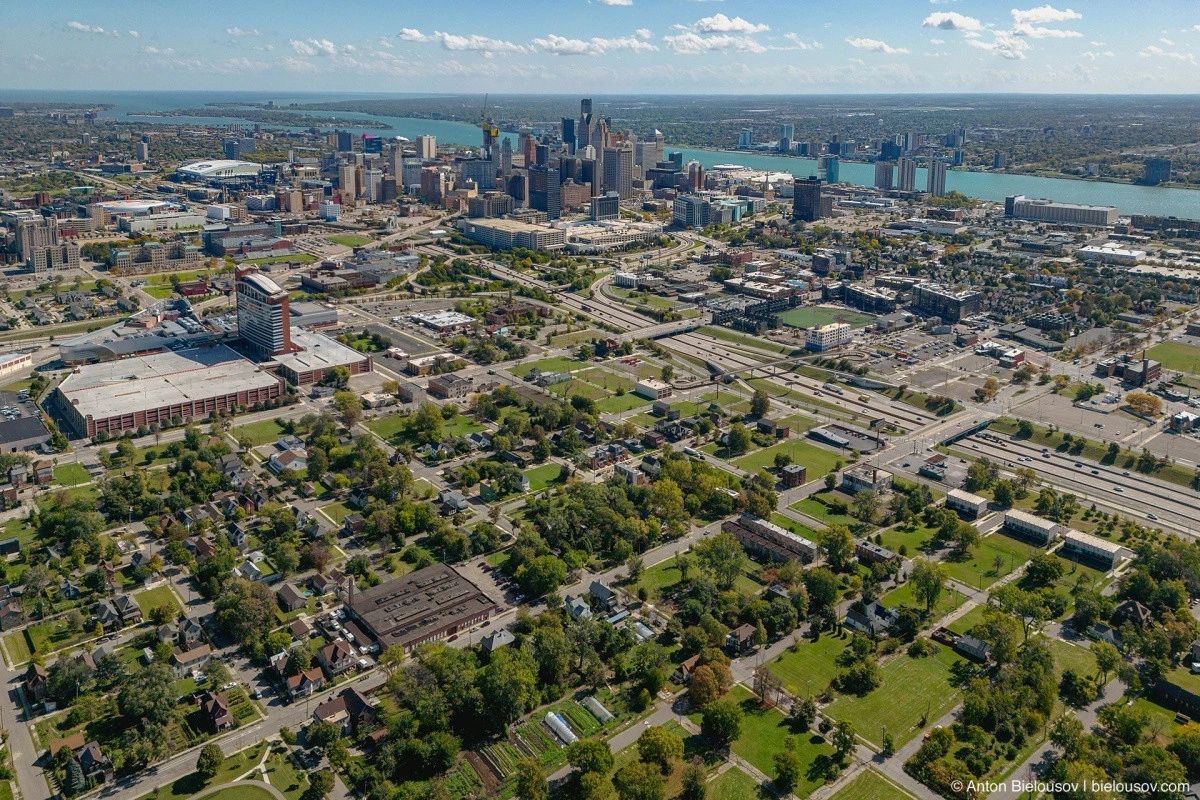
As early as the 19th century, it became a beacon of freedom for Black people escaping slavery (more on this later). At the beginning of the 20th century, the Southern states faced a cotton crisis, and unemployed individuals were equated with homeless people based on race and subjected to deportation; meanwhile, due to the First World War, immigration flow from Europe sharply decreased — all of this created conditions for lifting racial restrictions and mass migration of Black populations from the South to the industrialized North, where there was a great need for labor. After Henry Ford’s technological revolution, hundreds of thousands of jobs with minimal qualification requirements and only the ability to perform monotonous labor opened up at the city’s numerous automobile plants. In the first 30 years of the 20th century, Detroit’s population grew sixfold — to one and a half million people. At the same time, the African-American population barely exceeded 10%. The Second World War demonstrated that racial segregation hadn’t disappeared, at least in the army, and a situation arose where white people went to the front while Black workers took their places in the factories. A new wave of migration from the South turned out to be even larger than the first — about 6 million African-Americans moved to the Northern states, and by the end of the 60s, they already made up a quarter of Detroit’s population. During this time, reverse processes began in the city, and as the concentration of Black residents increased, those who didn’t want such a neighborhood sold their homes and left the city — primarily settling in the suburbs. This was also encouraged by government policies, which aimed for every citizen to become a small landowner — it was believed that this made them less likely to become communists. The more the racial balance tipped, the more domestic culture changed, and the more inter-racial confrontation emerged, which accelerated the outflow of white residents. A vicious cycle emerged, a system that fed itself. The boundary between the areas where white people settled in the suburbs and Black people in the center became the famous Eight Mile Rd. — the same one immortalized by Eminem in «8 Mile.» The rapper himself, by the way, also hails from Detroit. This confrontation reached its climax in 1967, when unrest broke out over the arrest of several Black patrons at a bar selling alcohol illegally. These events, known as the «12th Street Riot,» became one of the most violent uprisings in U.S. history.
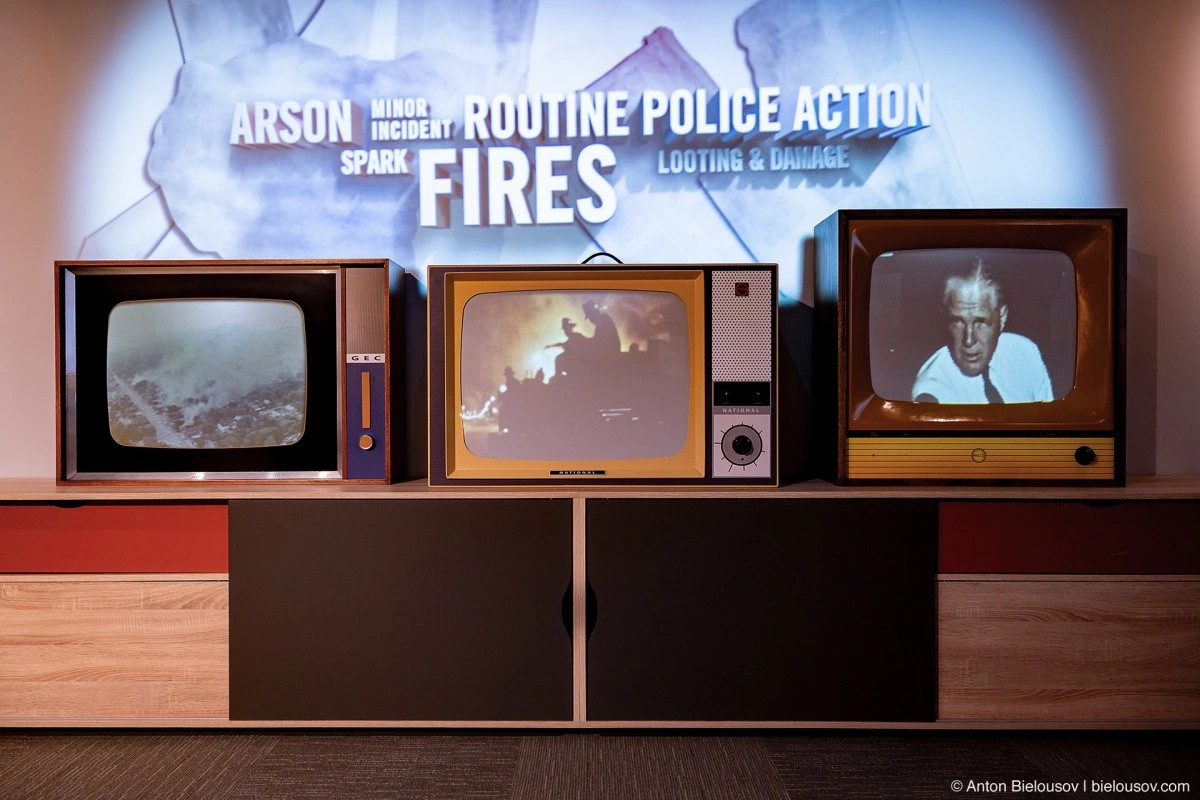
Confrontations with the police escalated into looting, riots, and fires that lasted for 5 days. The riot was suppressed only by bringing in the National Guard troops, totaling 8,000 soldiers with armored vehicles. During these raids, approximately 43 people were killed, 467 were injured, and over 2,000 buildings were damaged.
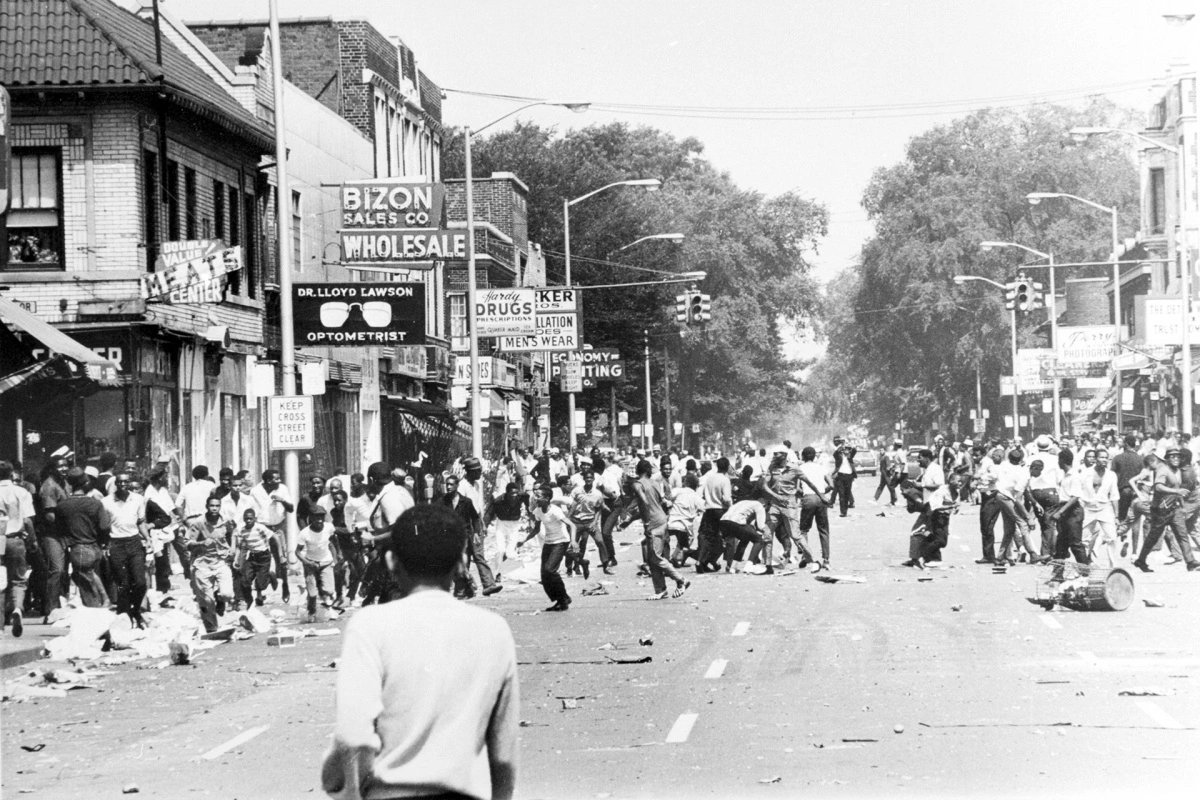
Walter P. Reuther Library, Archives — Riots, Rebellions, 12th Street, 1967
The consequences of these events were devastating for Detroit and led to an even greater migration of residents from the city — primarily, of course, those who didn’t want to be nearby if such events happened again. Just 6 years later — in 1973 — an oil crisis occurred, bringing job cuts and a cascading outflow of the middle class. Mostly, only those who had nowhere else to go and no means to move remained. Due to poverty and unemployment, the crime rate in the city soared. By 1994, African-Americans accounted for 90% of all remaining Detroit residents.
Today, Detroit’s population is almost three times smaller than it was in the 50s, declining from 1.85 million people to 630,000 in 2023, with one-third of those remaining living below the poverty line.
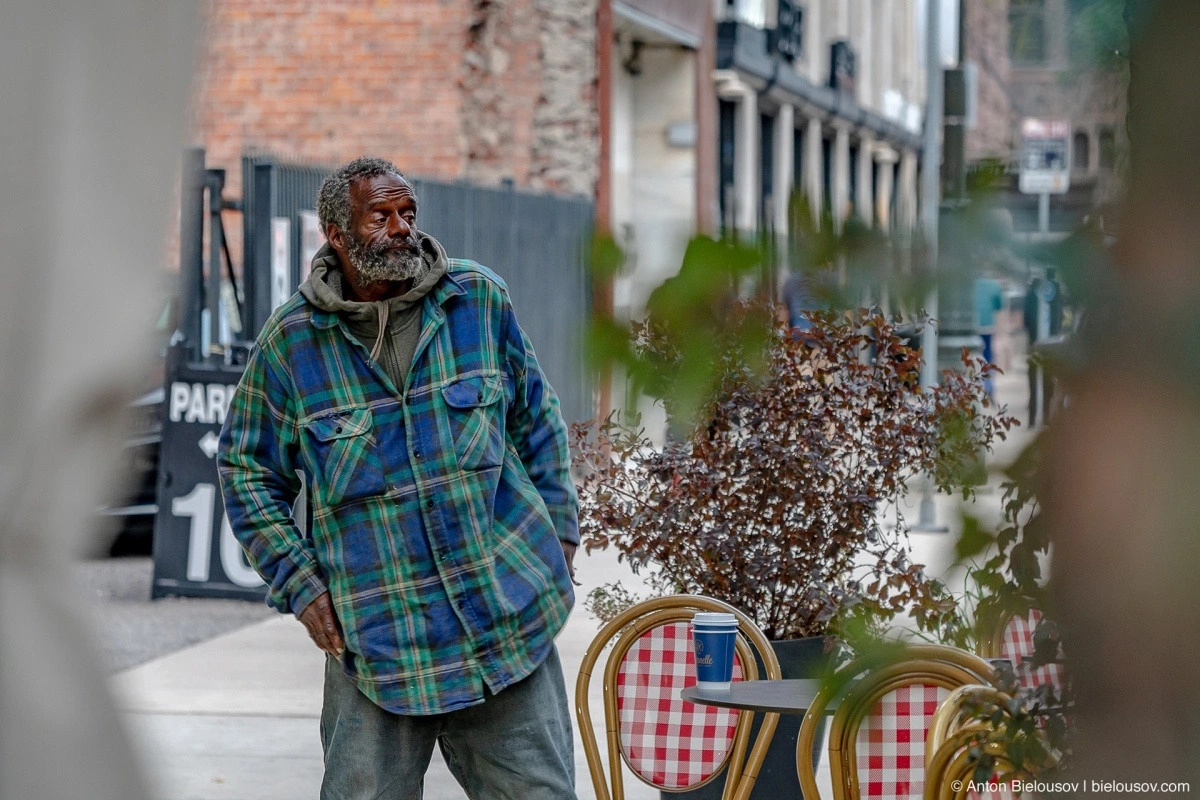
Detroit hit rock bottom in 2013 when the city declared bankruptcy with debts exceeding $18 billion. Interestingly, just five years before that, the mayor of Detroit was sentenced to 28 years in prison for corruption. When one candidate for Detroit mayor was asked why the city’s murder rate was decreasing, they replied: «there’s simply no one left to kill.» Abandoned factories, warehouses, shops, skyscrapers, and even entire neighborhoods turned Detroit into a ghost town, with some parts of the city resembling post-apocalyptic wastelands.
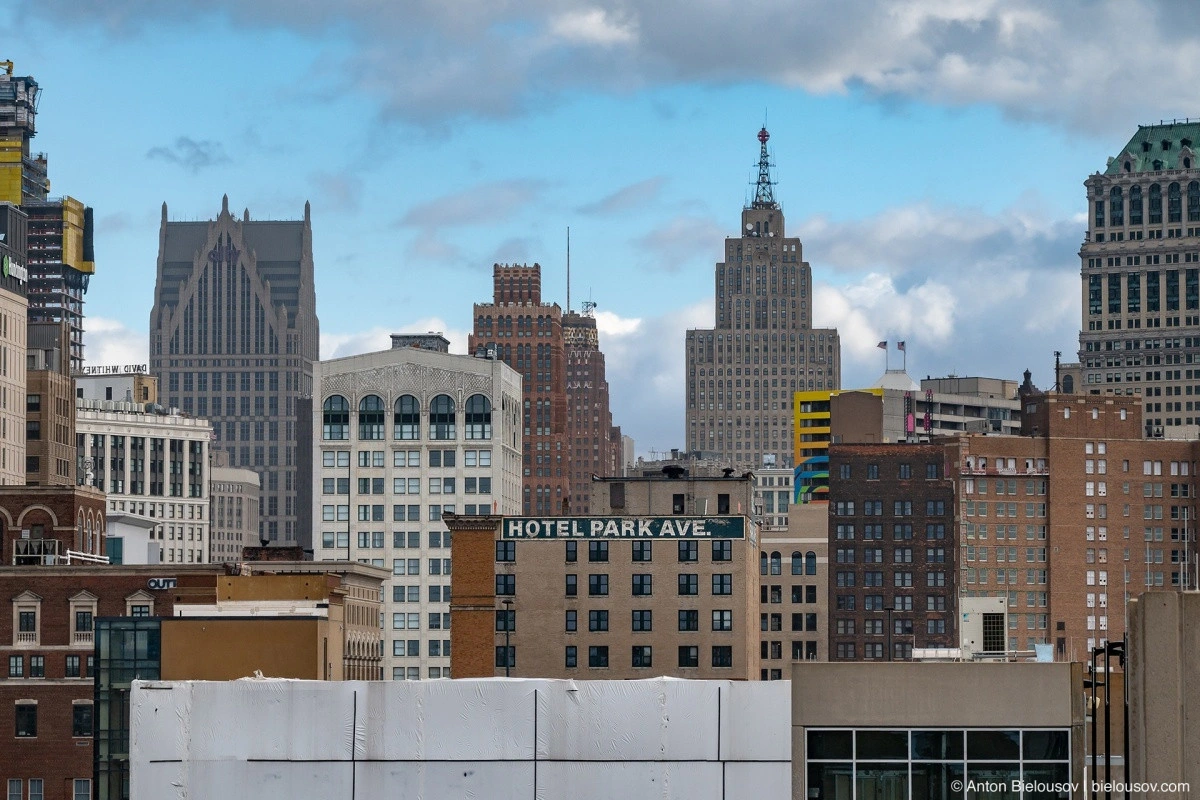
And yet, despite the challenges of the subsequent decade — including the pandemic and the BLM movement — local governance seems to have found a turning point, and today Detroit is undergoing revitalization at such a pace that perhaps it won’t be long before the ghost town is no more.
Corktown
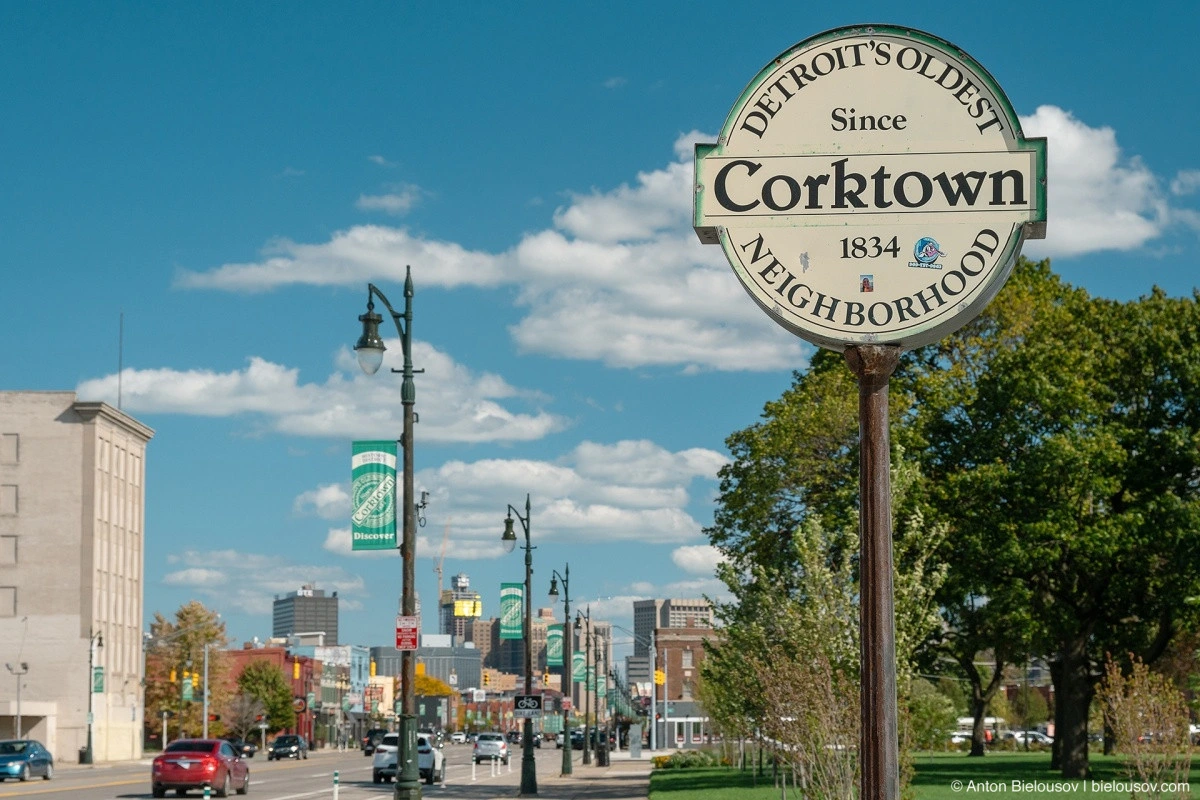
Today, from a bird’s-eye view, Detroit might seem like quite a decent, very green city.
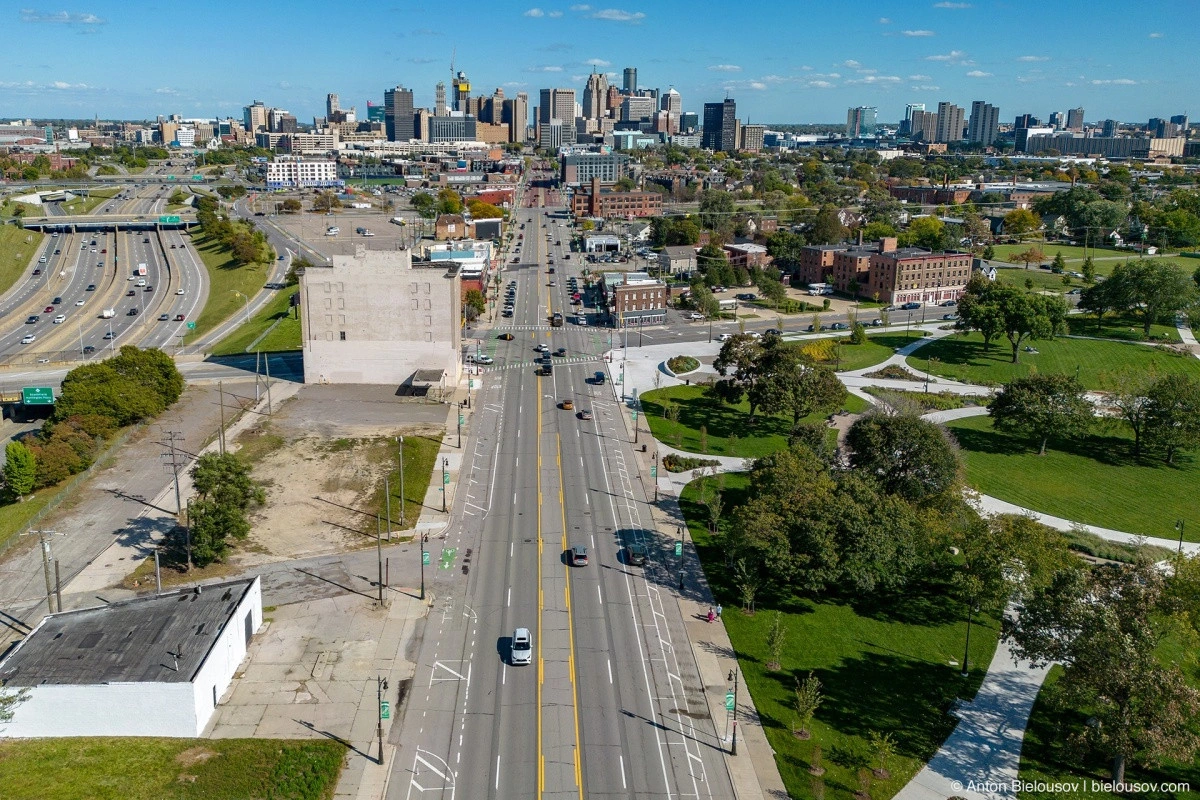
But upon closer inspection, all these green lawns and meadows turn out to be vacant lots where houses once stood.
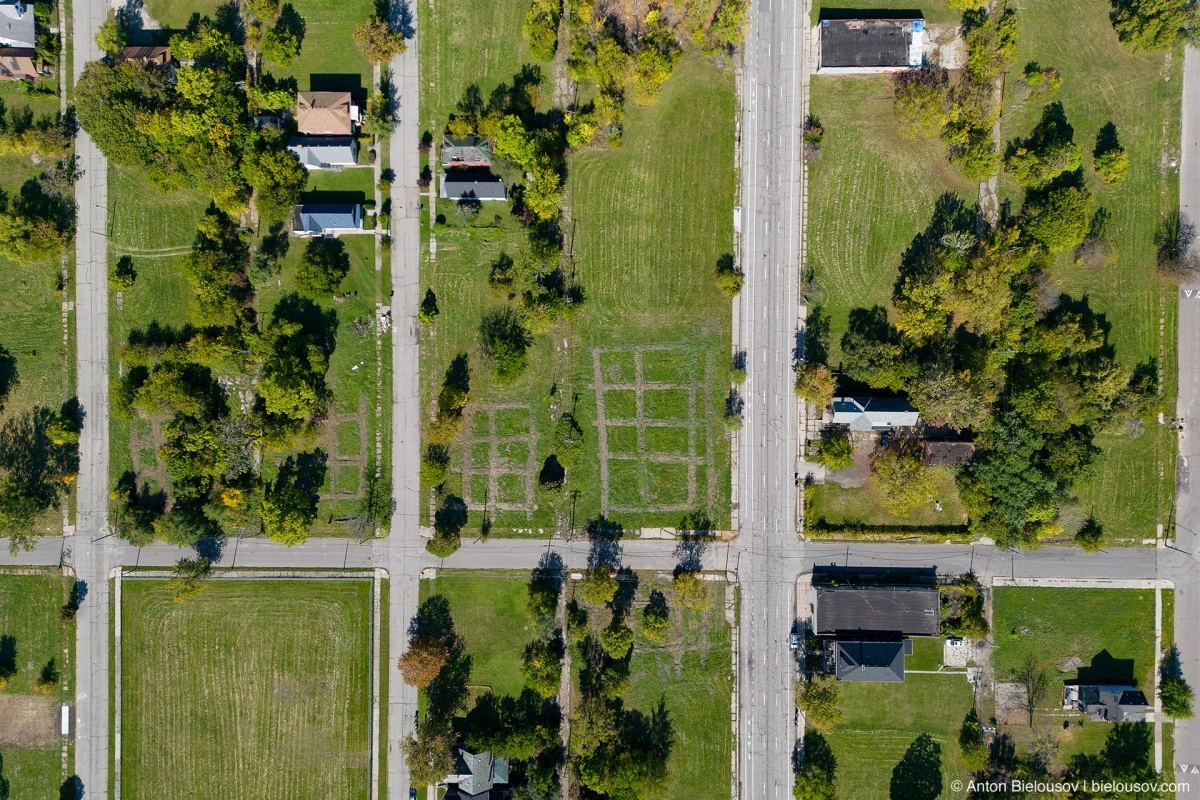
In the 80s, local teenagers developed a new pastime — setting abandoned houses on fire on Halloween Eve. This phenomenon reached its peak in 1984, with over 800 homes being set ablaze. Some even used Devil’s Night as an opportunity to burn down their own homes to claim insurance payouts and monetize their devalued property in some way.
In 1986, Detroit even introduced a curfew for minors before Halloween.
Gradually, many neighborhoods were left with only one or two standing houses.
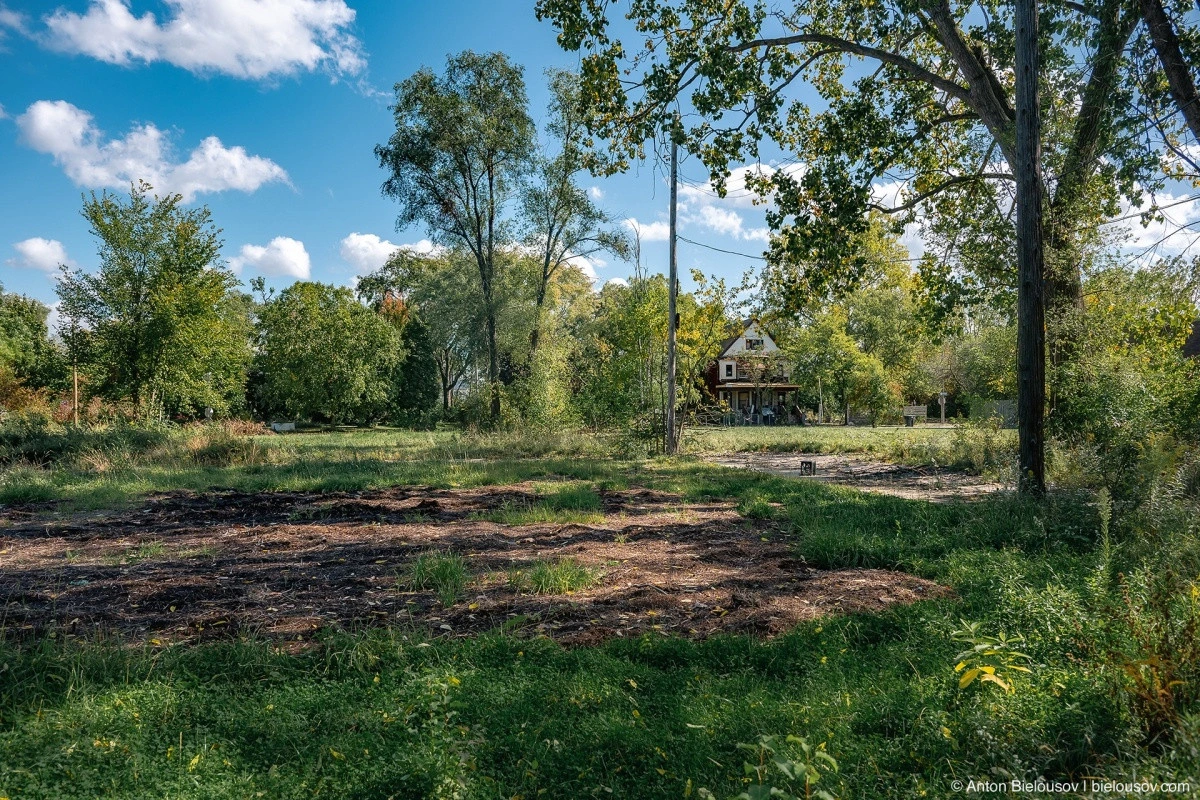
And a few streets became completely empty.
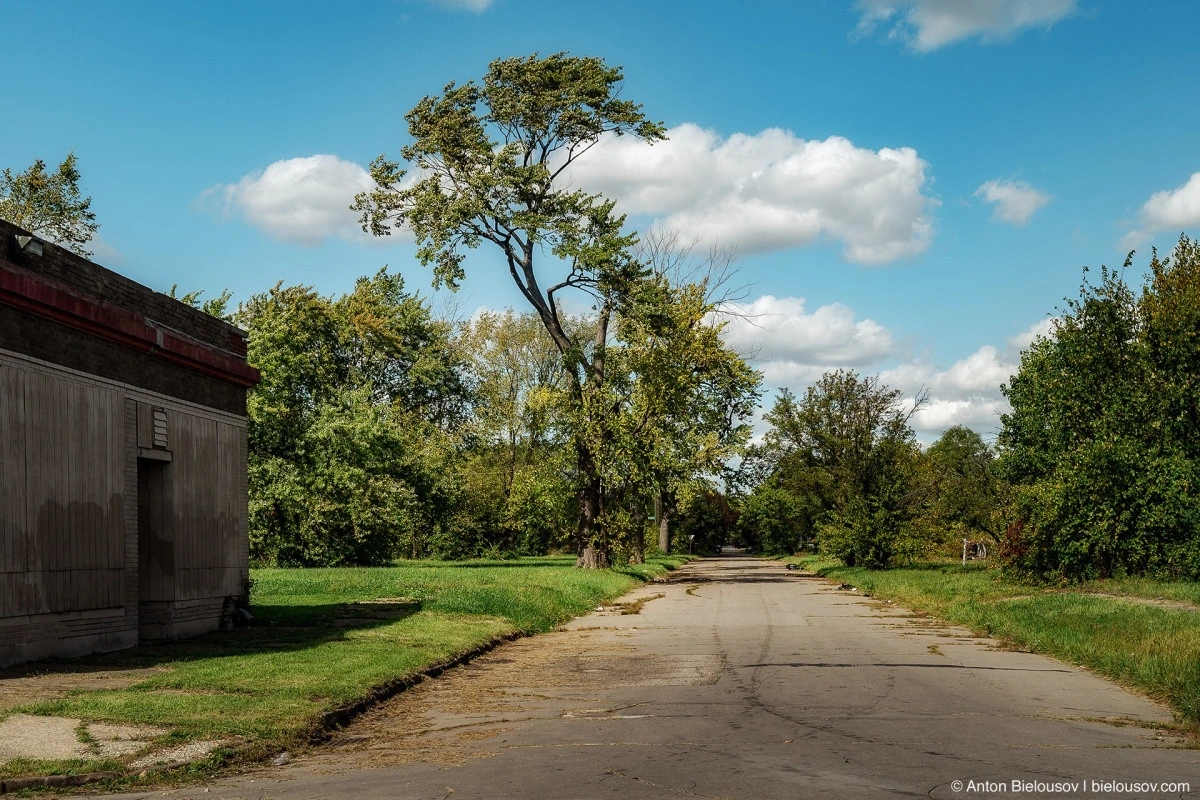
It might seem that this is even a good thing — a huge yard, neighbors far away, but in reality, the size of the lot hasn’t been changed.
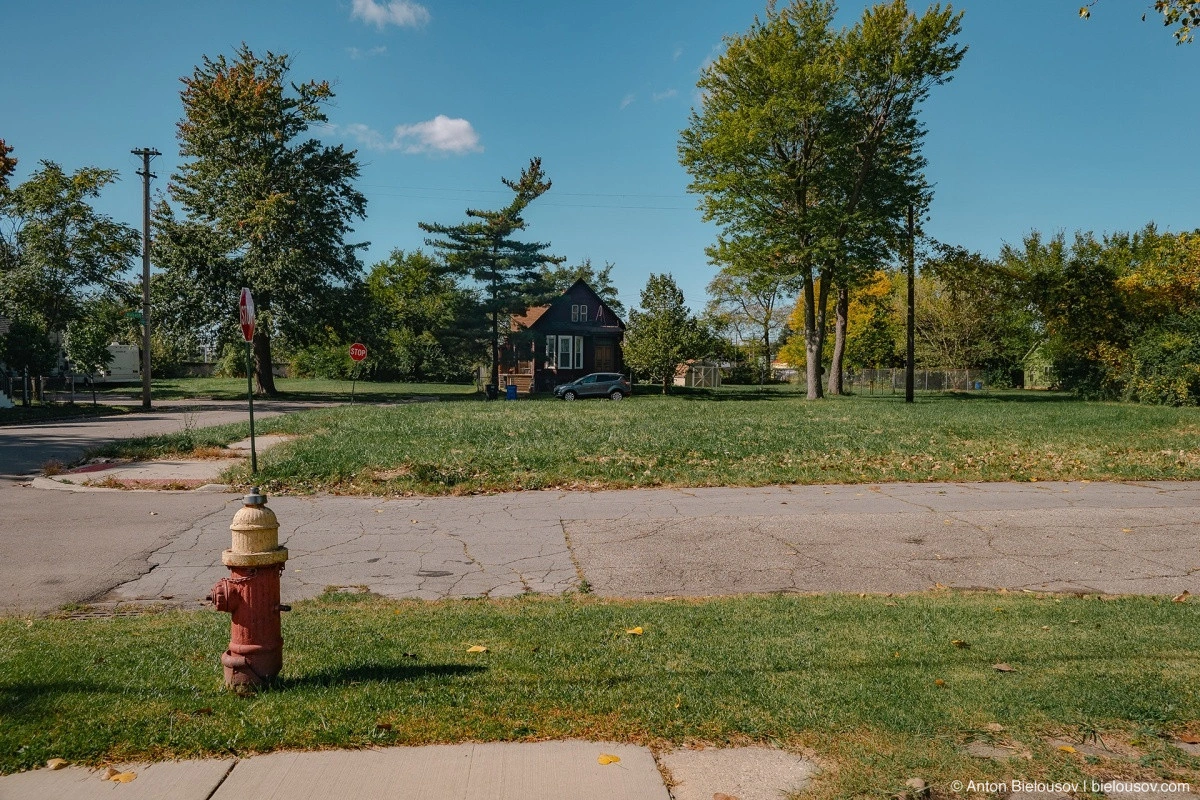
And neighborhoods vary greatly from one to another.
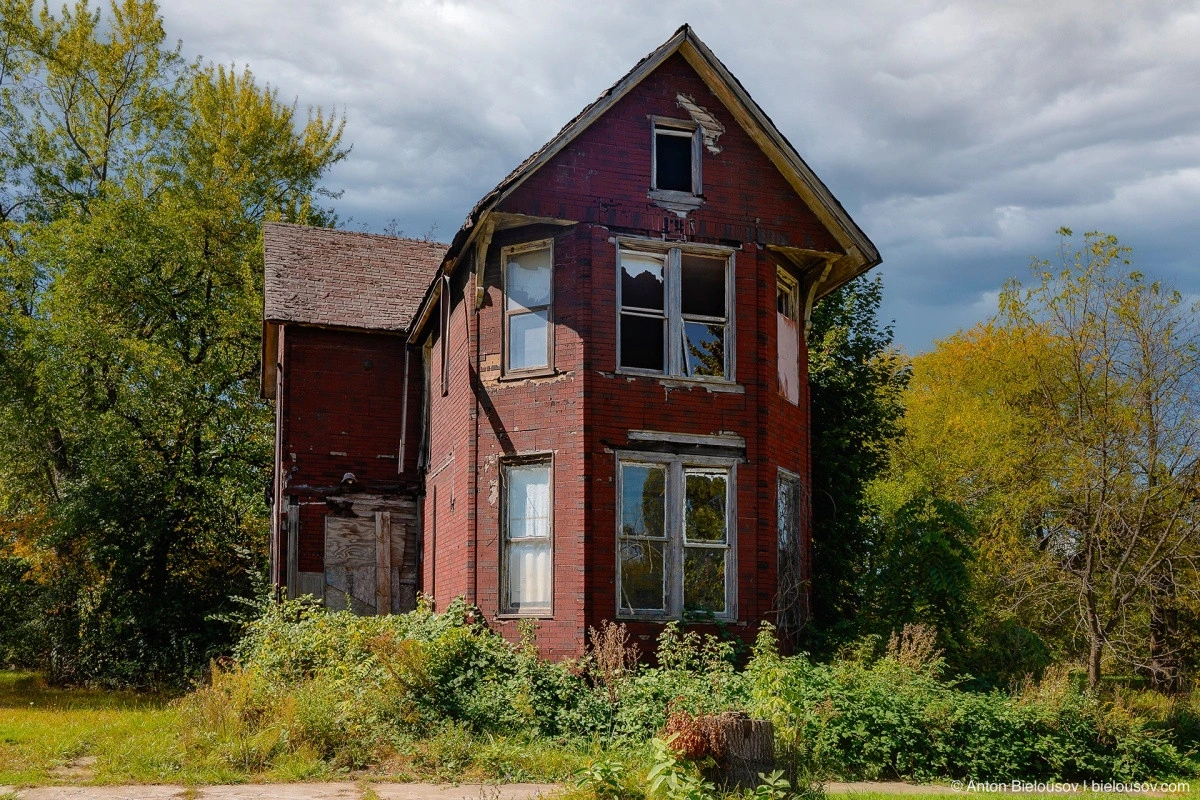
Not to mention who might move into an abandoned house.
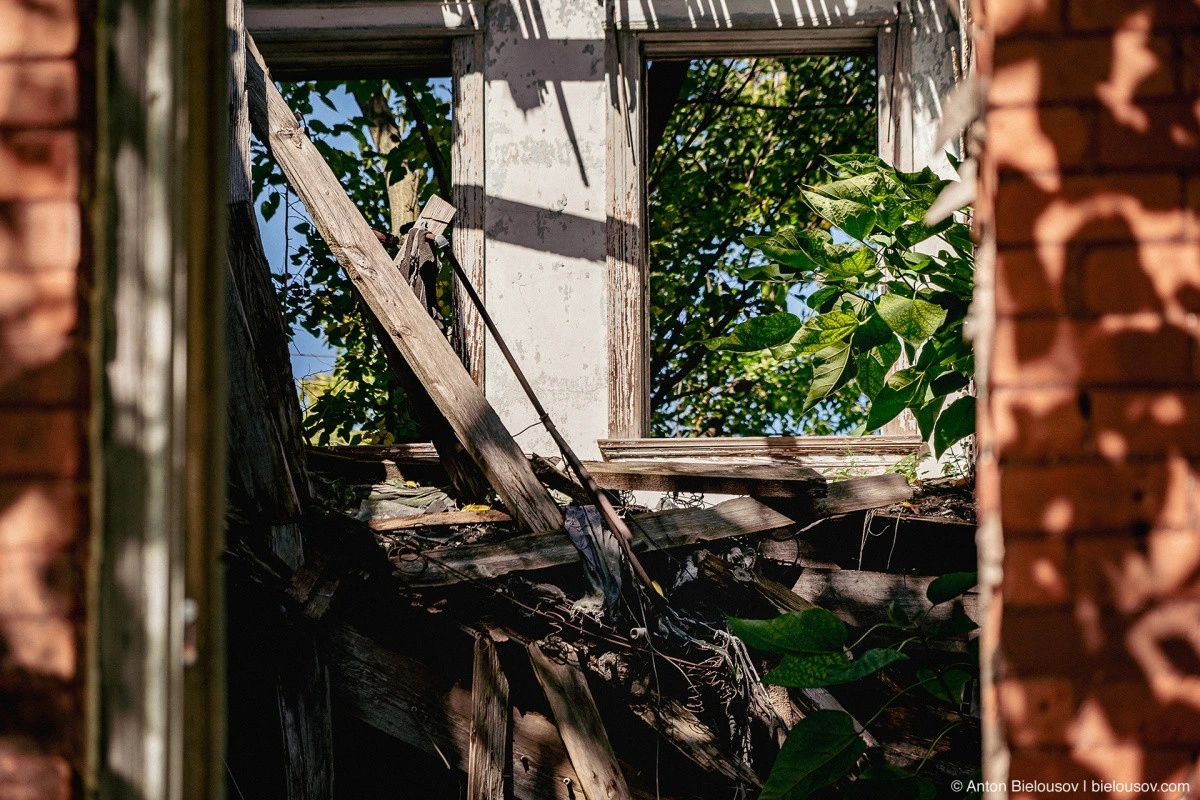
But not all houses in this area are abandoned: if there’s a pile of mail in the mailbox, it means the house was left recently or is periodically visited.
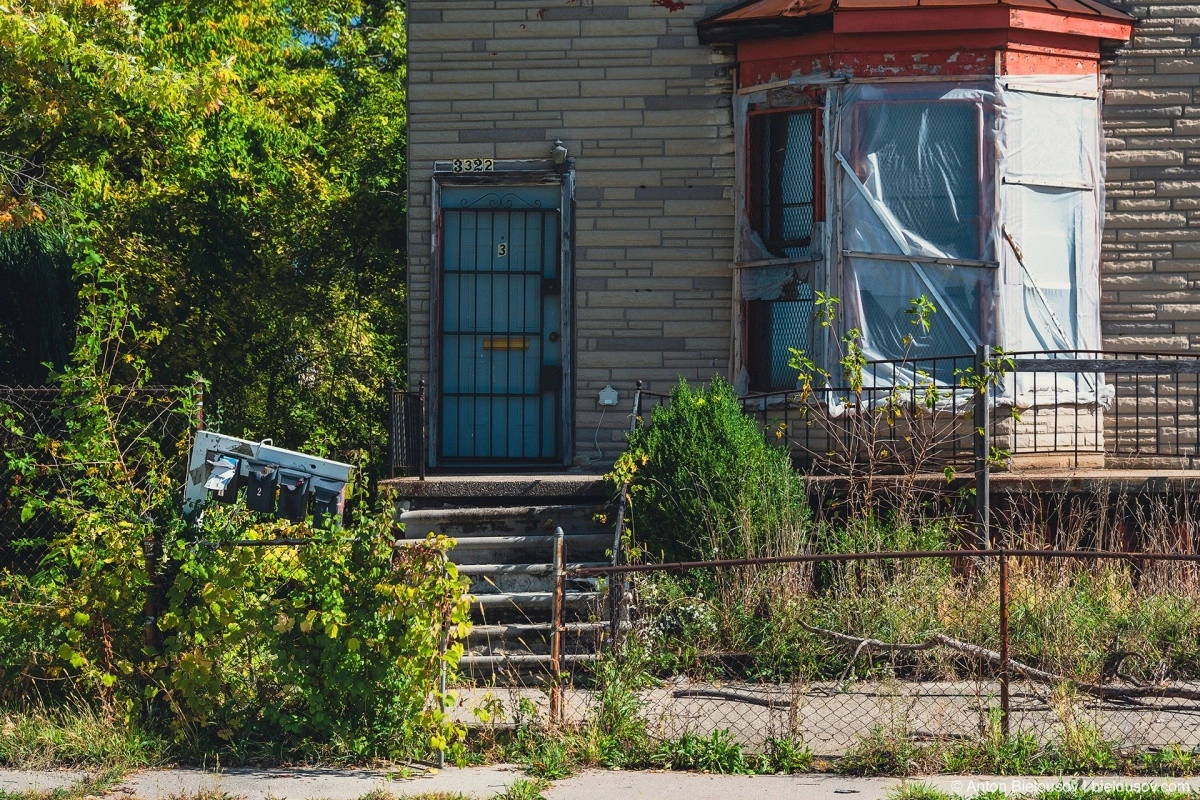
The easiest way to determine is by looking at the doors and windows — in abandoned houses, they are boarded up or sealed.
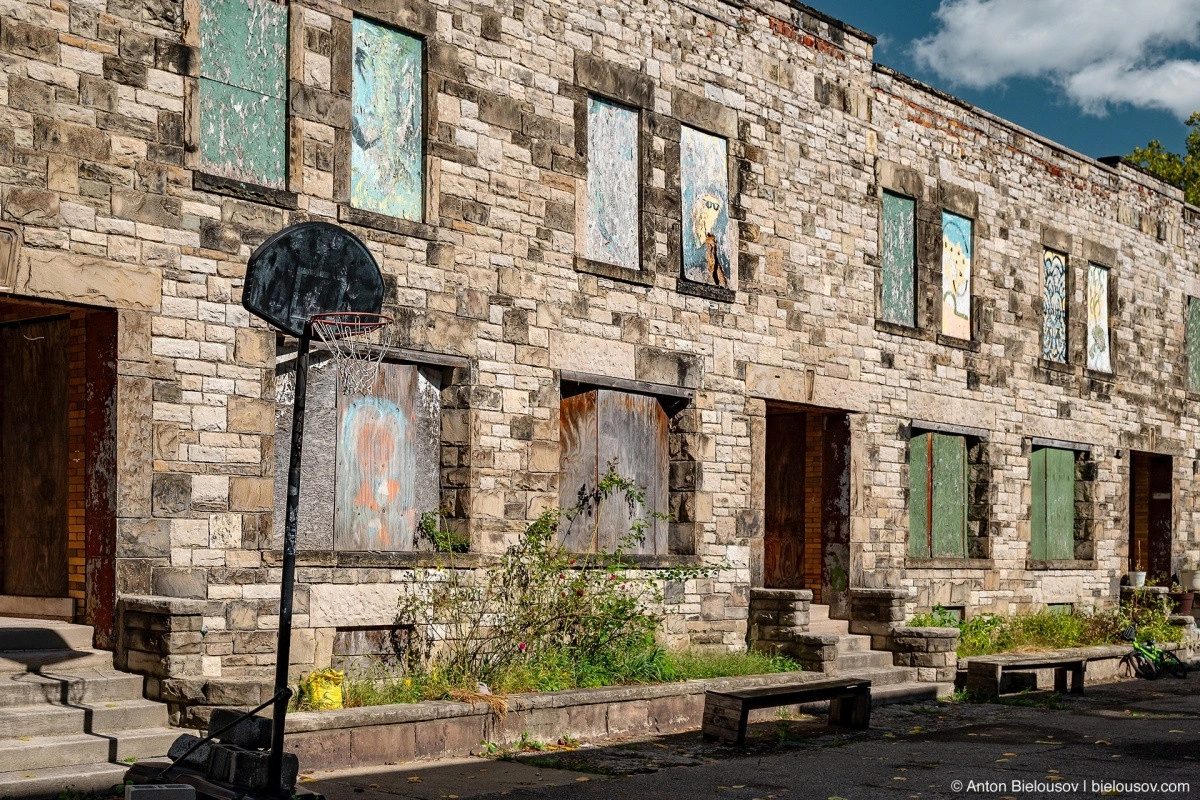
In occupied houses, the windows are mostly intact.
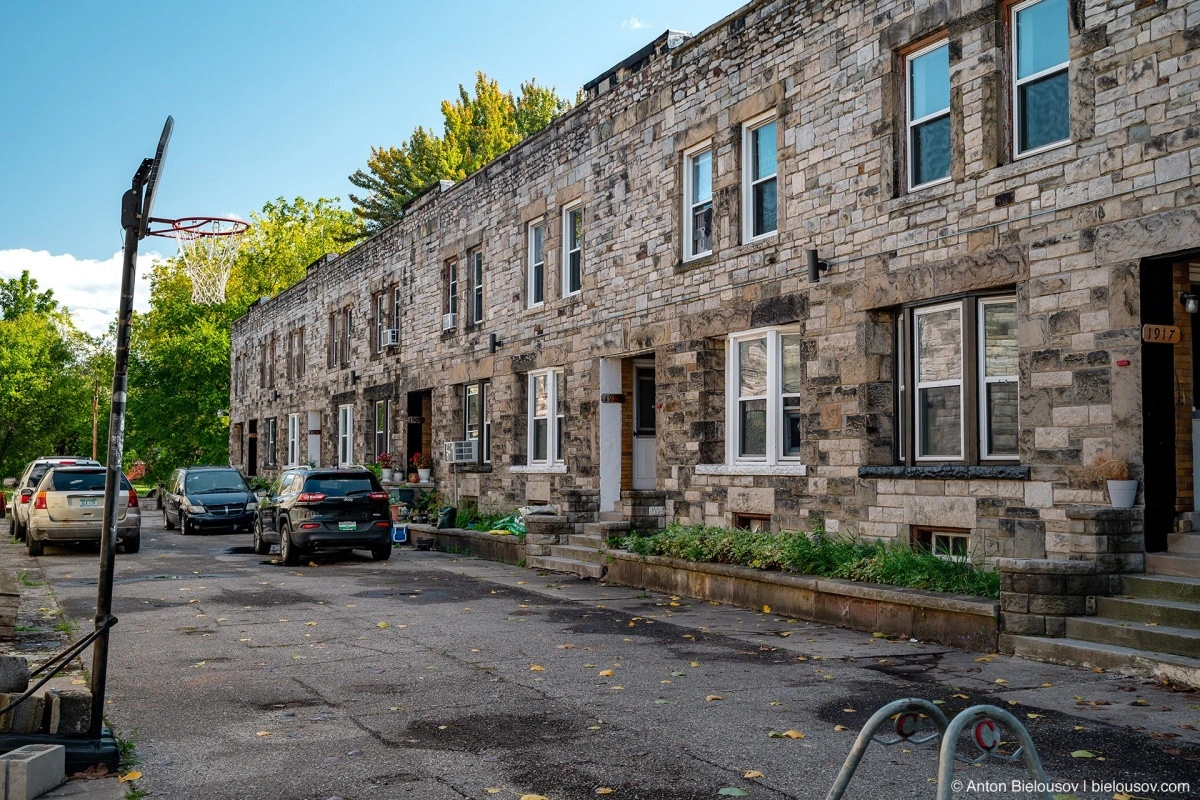
Sometimes you even find that one half of the house is abandoned, and the other half is not.

But there are many houses where it’s difficult to tell if anyone lives there or not. One thing I can say for sure — almost everywhere, the owners were home on Friday during work hours…
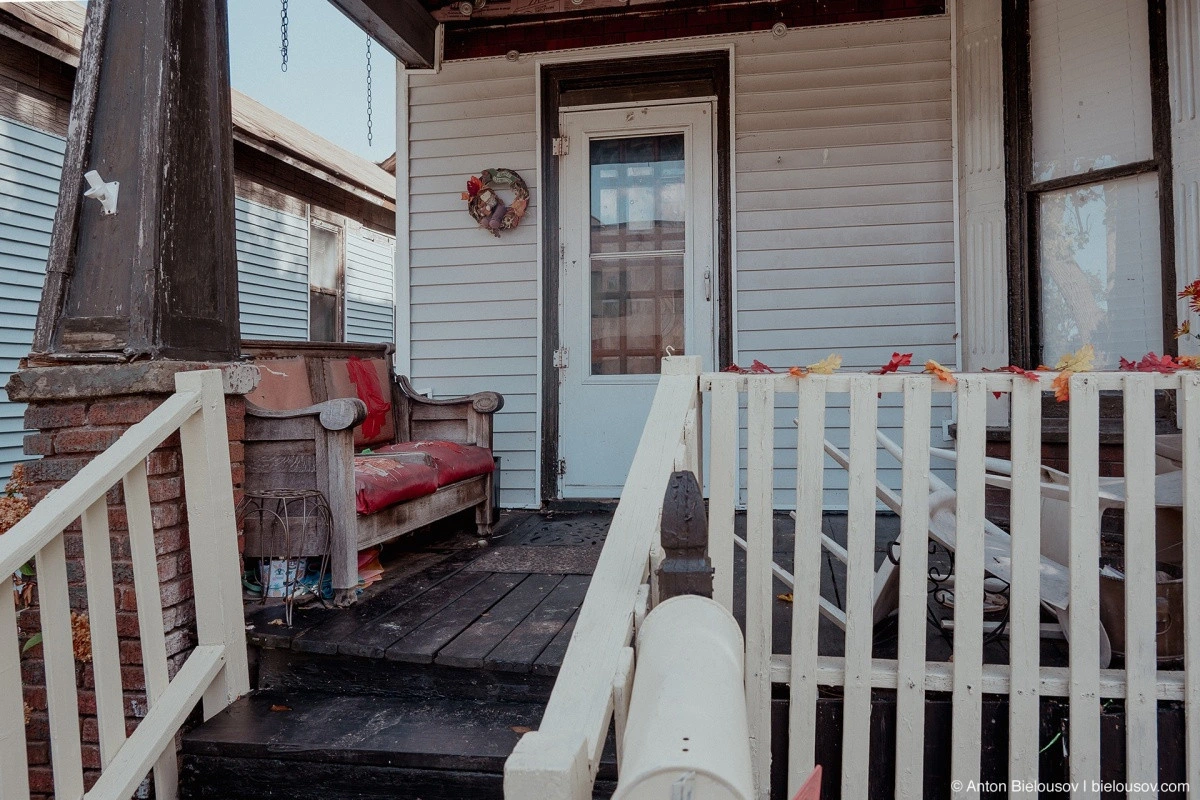
Also, most occupied houses have at least one pit bull.
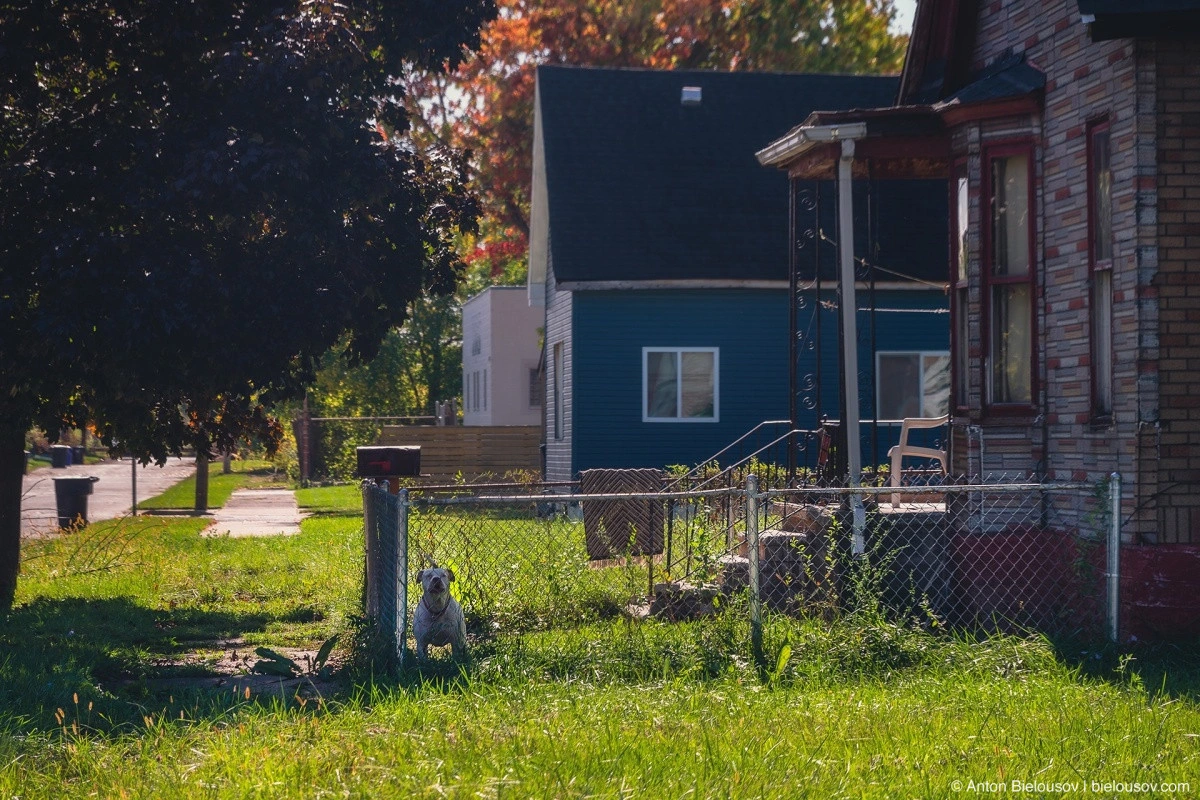
It’s from these streets of Corktown (between Rosa Park (12th), Trumbull, Grand River, and Michigan Ave) that a wave of looting, vandalism, and violence spread back in 1967.
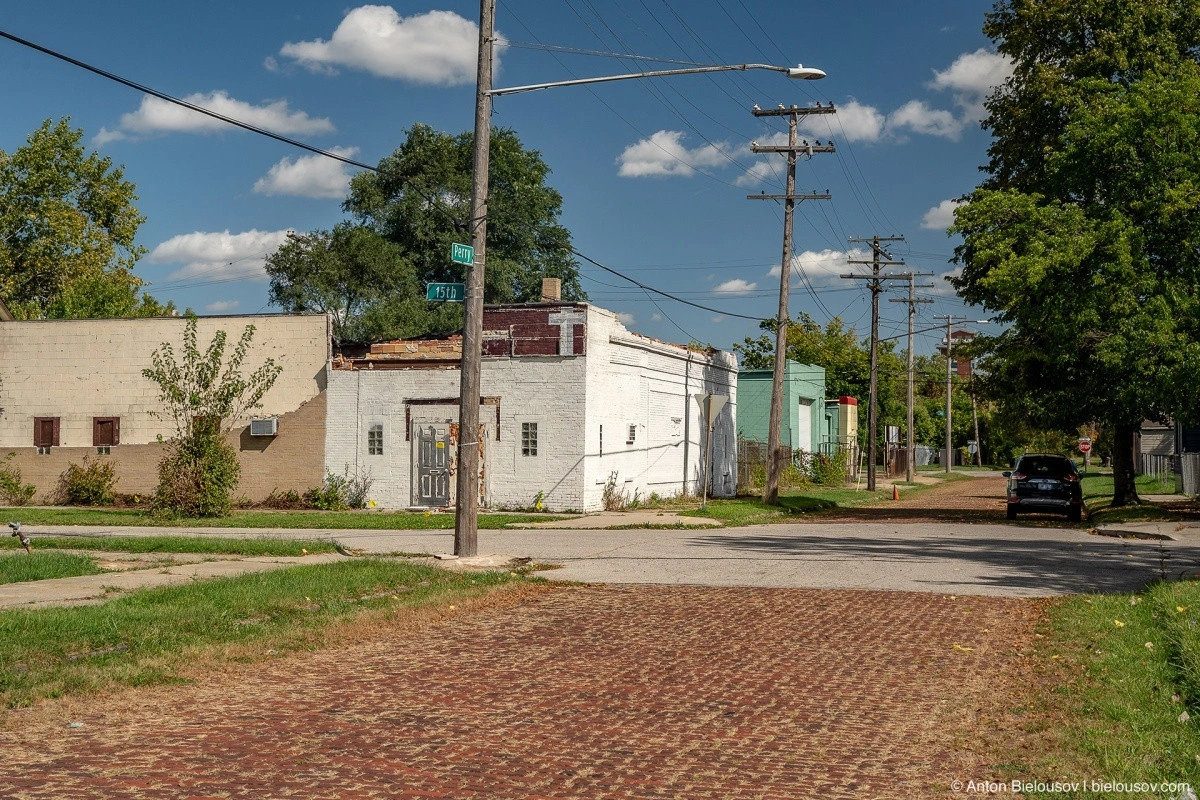
At the very heart of this zone is one of two cobblestone streets in the entire city — Perry St. (the other one is, of course, on Michigan Ave.), which hasn’t been repaired since those events.
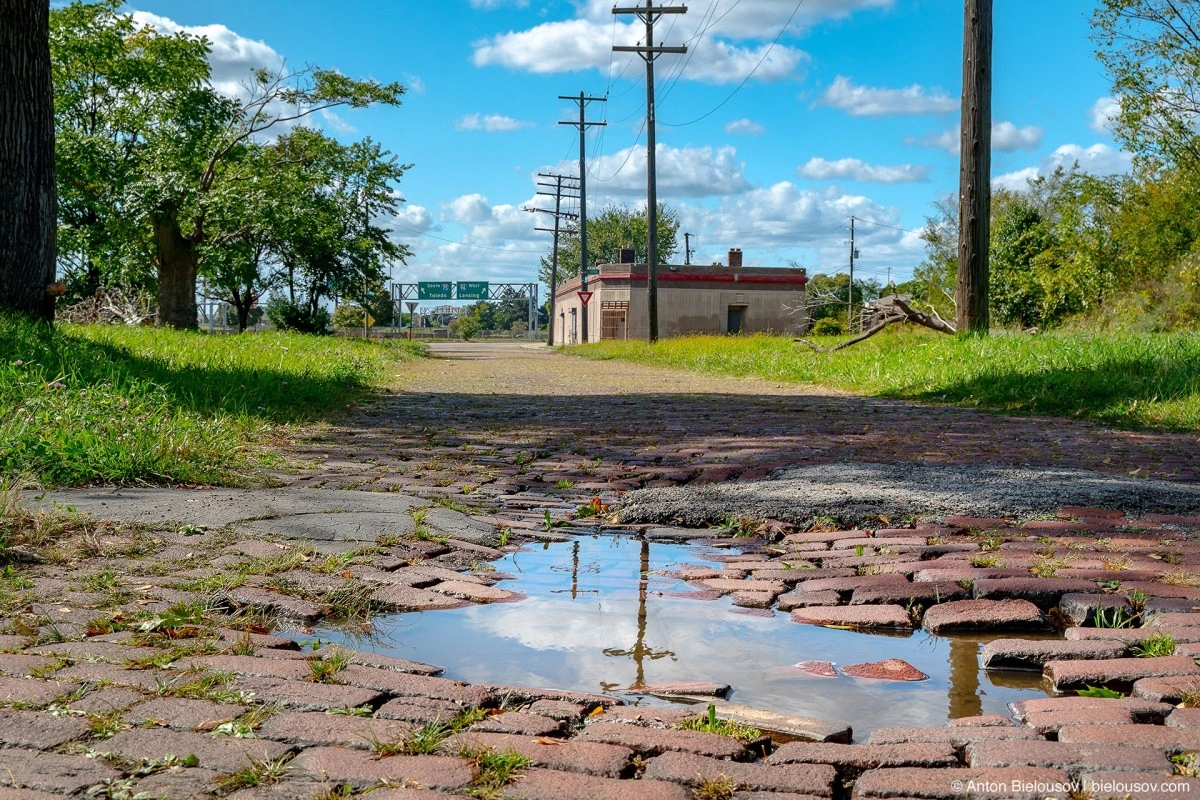
Abandoned stores.
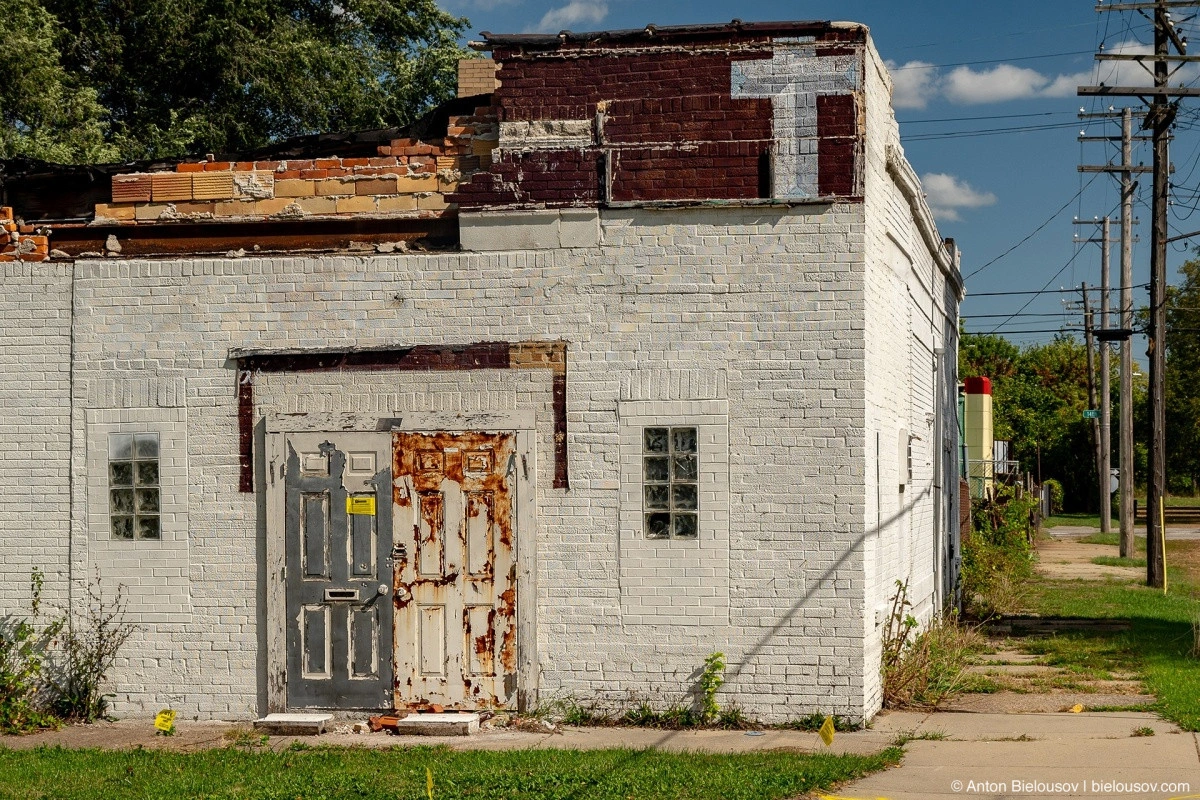
Alcohol and lottery tickets. By the way, Detroit residents always seem to be buying lottery tickets — in every store I visited, someone ahead of me bought tickets and eagerly discussed the lottery. It reminds me of the 90s in post-Soviet countries.
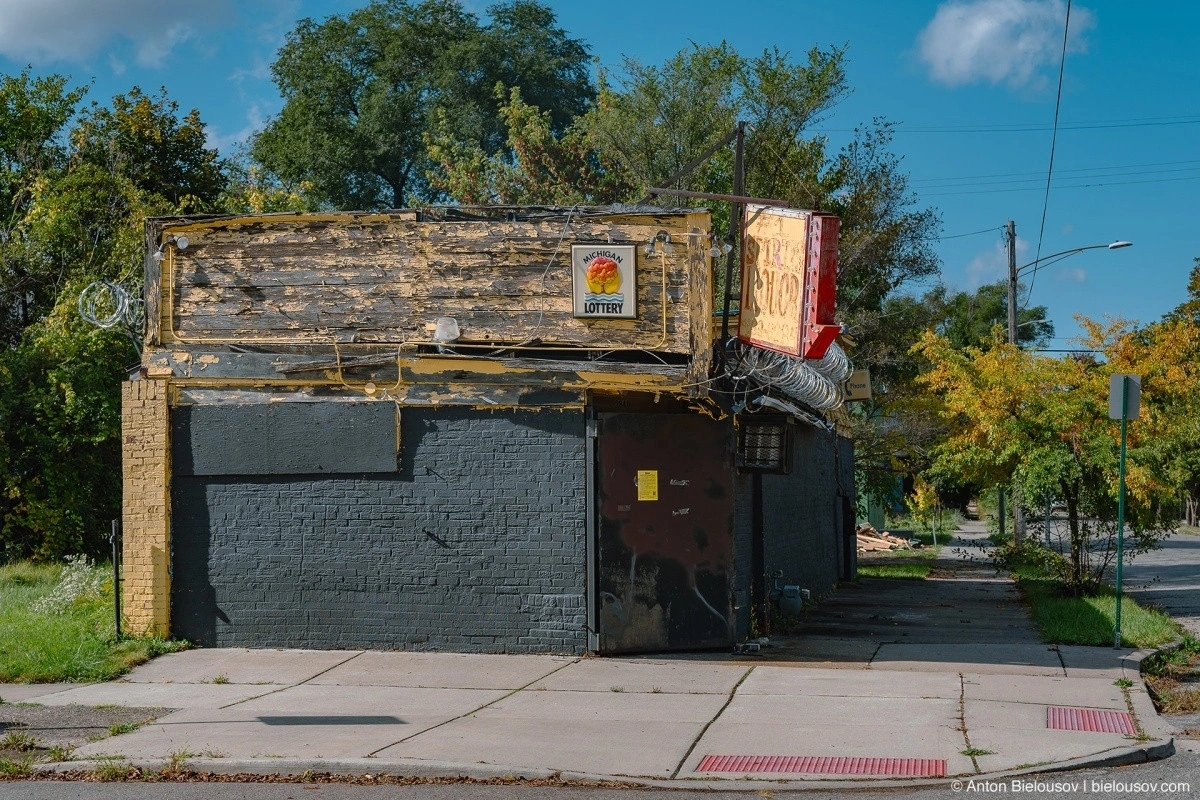
This was the exit from the Matrix.
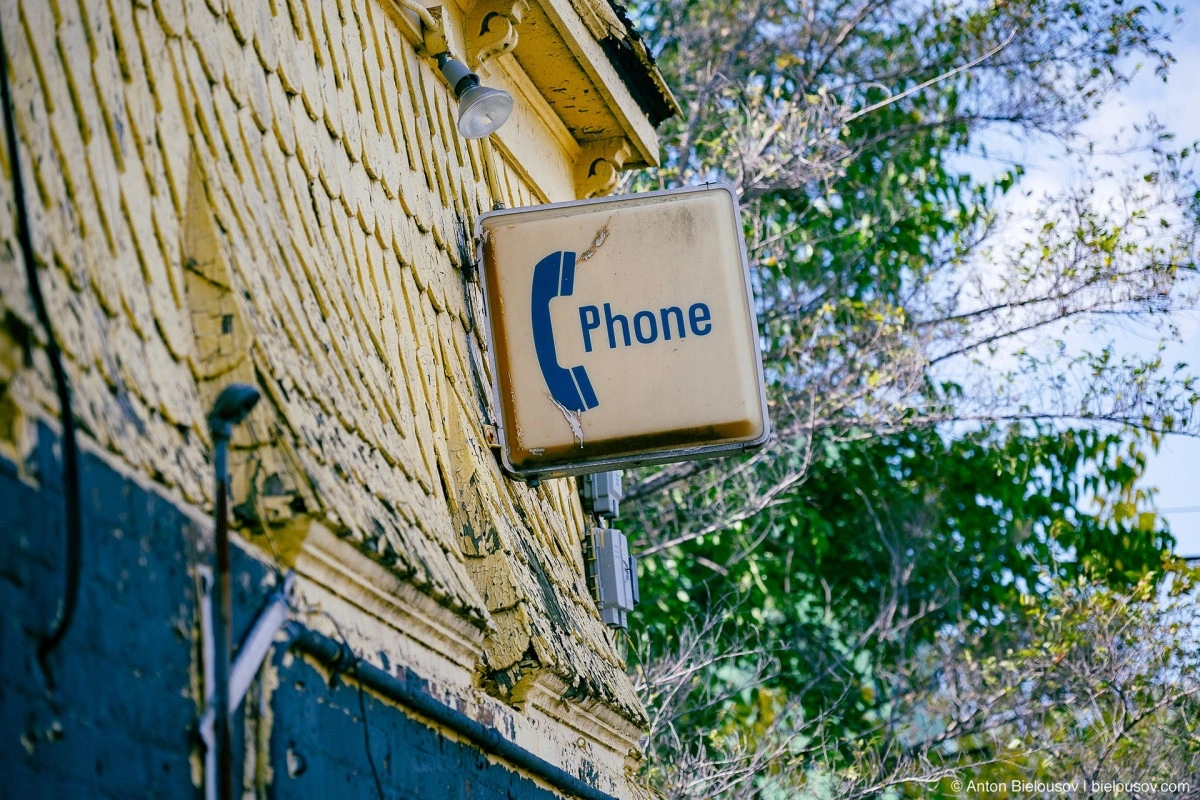
Abandoned churches.
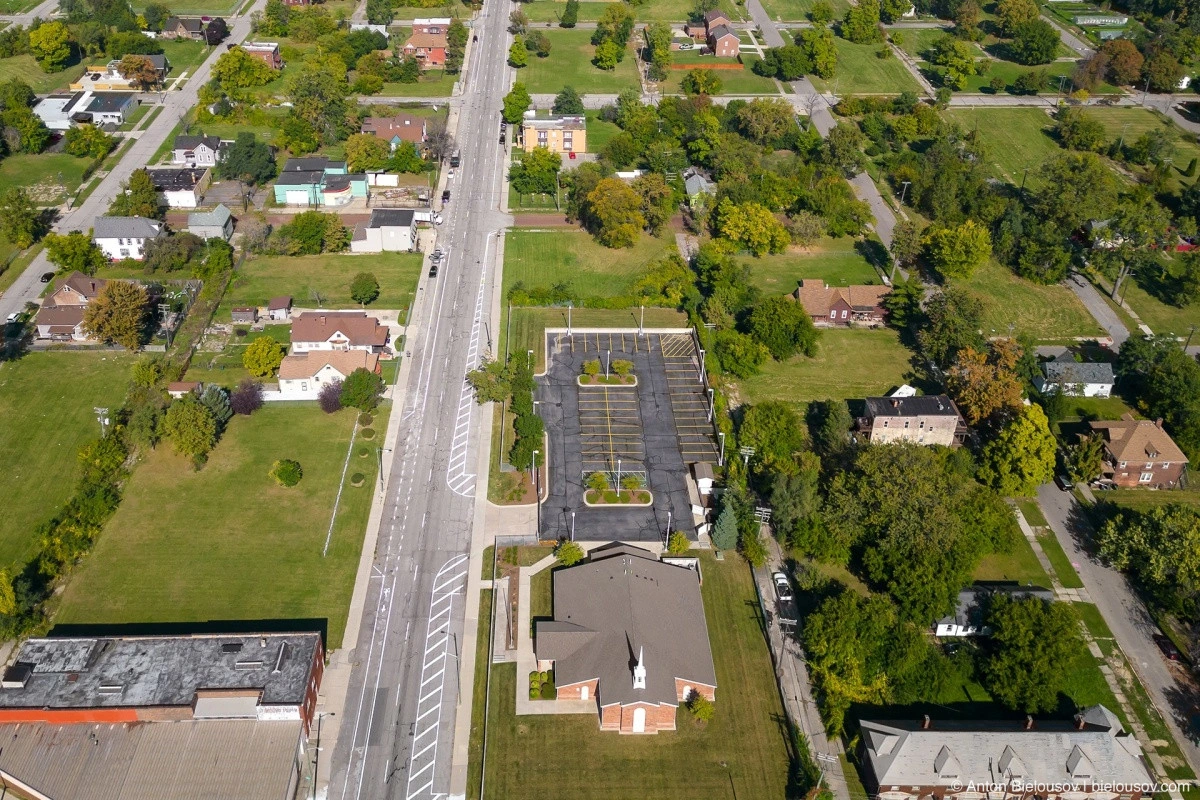
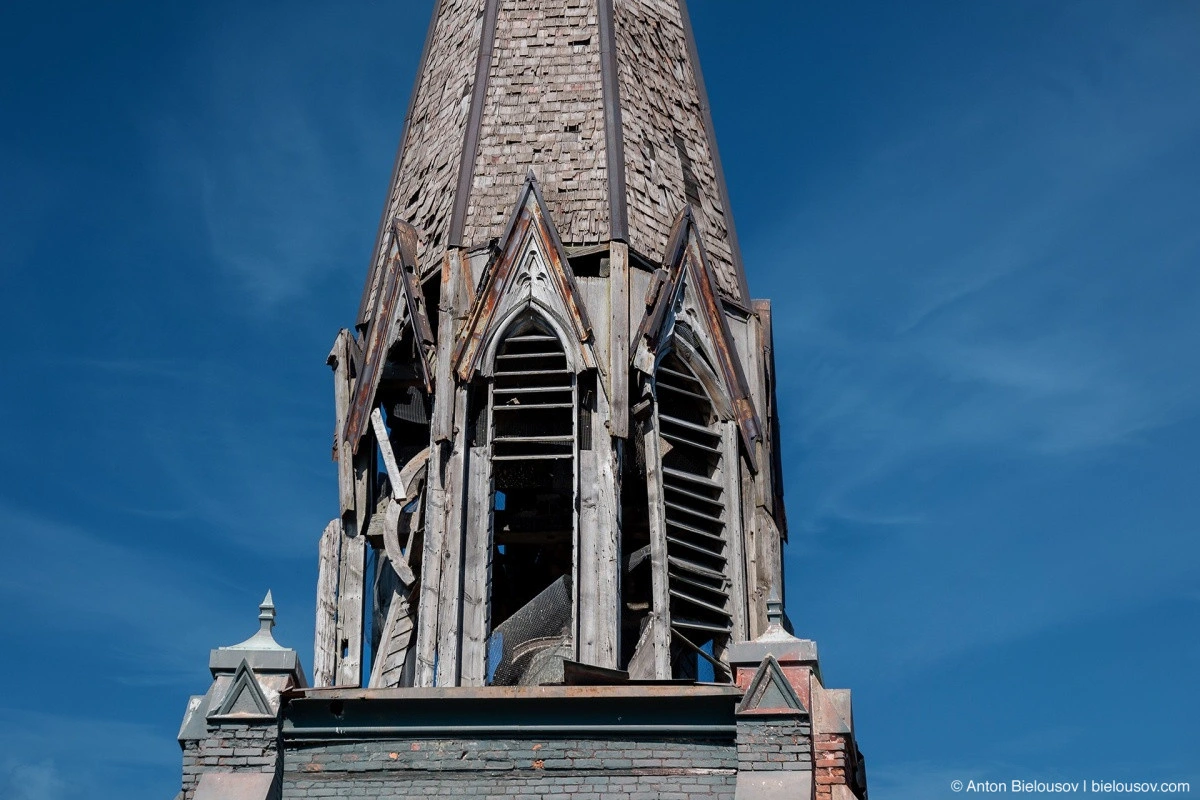
Abandoned auto repair shops.
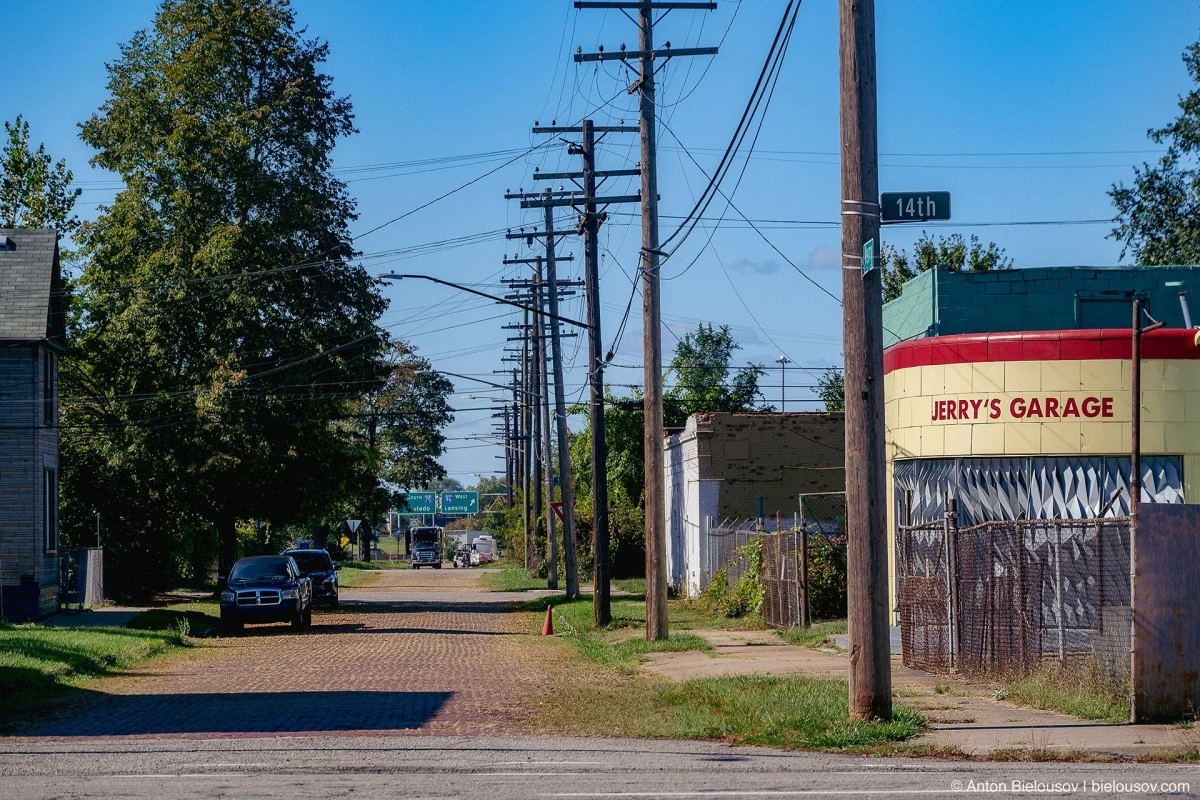
The associations with post-apocalyptic wastelands from Fallout are so abundant that I couldn’t resist playing the game’s soundtrack in my headphones while wandering through the empty neighborhoods.
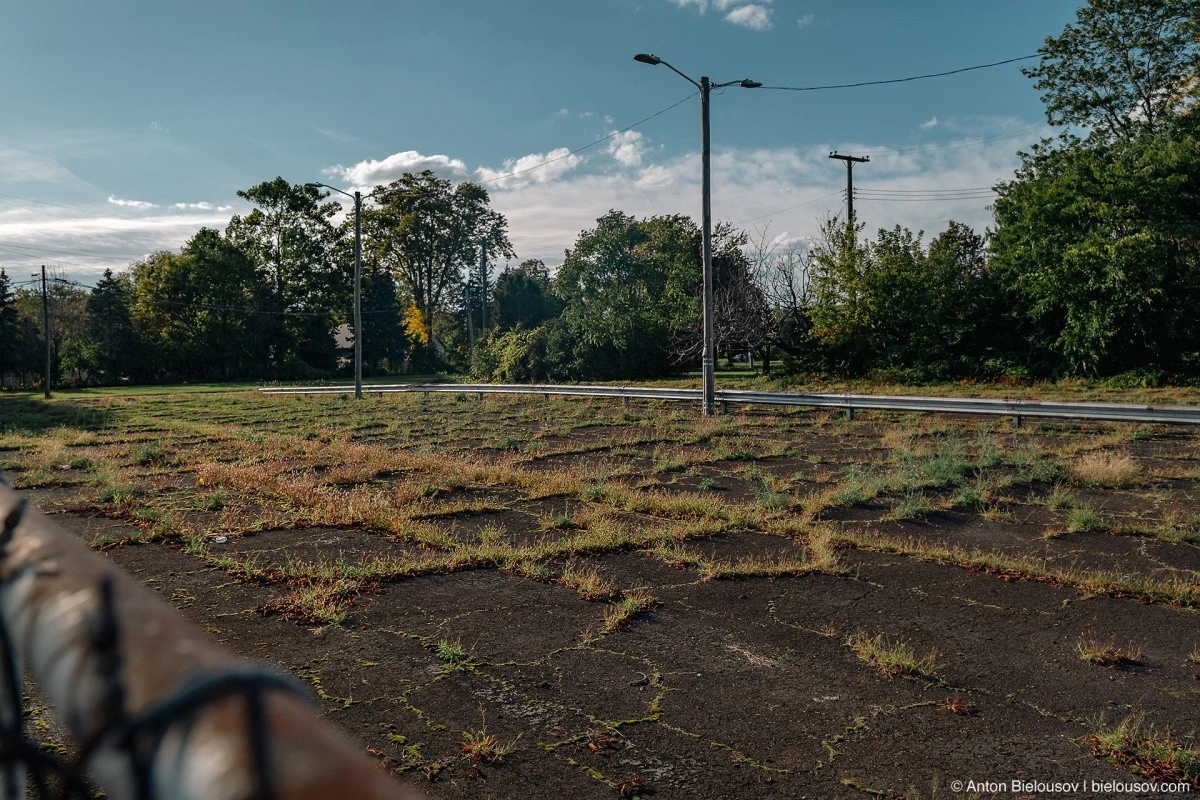
Empty buildings, rusty fences, sidewalks and parking lots overgrown with grass and bushes, rounded corners of architecture characteristic of the 60s Art Deco style. All of this feels like it came straight out of the screen or, conversely, like Detroit itself inspired the game’s creators.
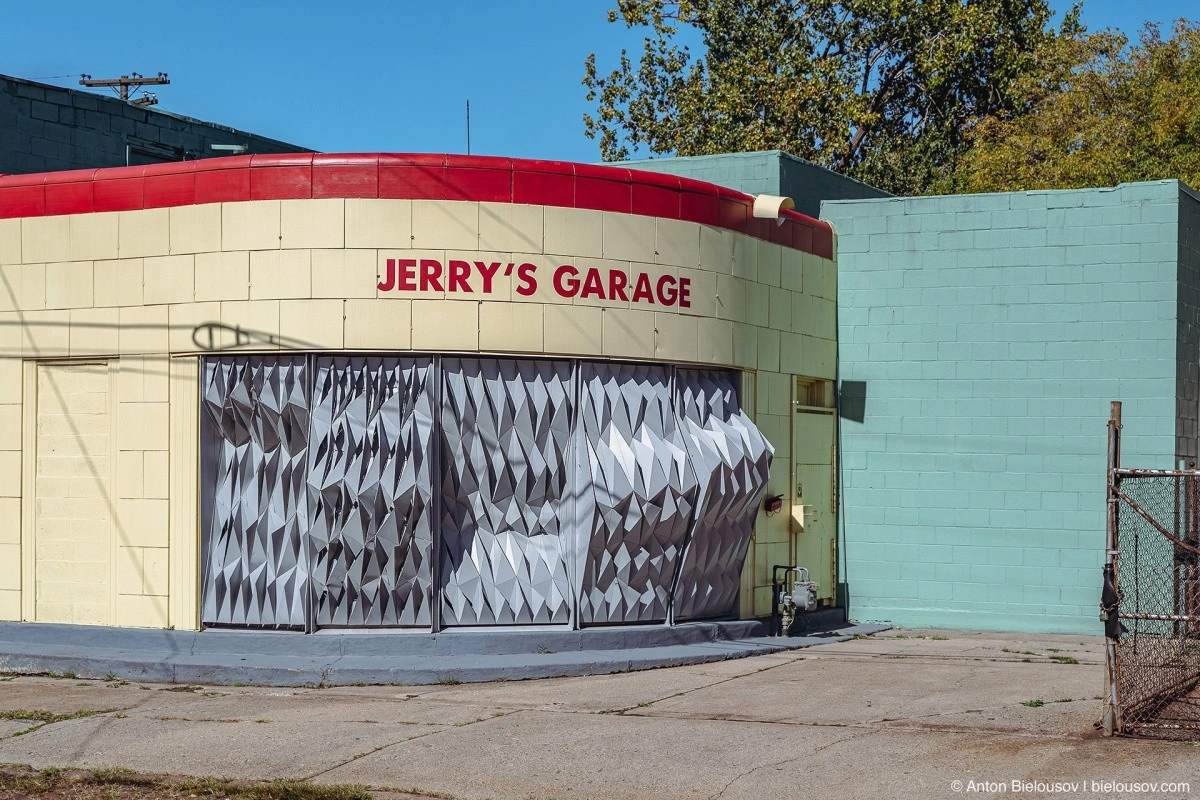
Perhaps the only thing missing amidst all this was a nuclear bunker. Actually, no, there is one, right in the center of the area.

Abandoned factories and plants — some of them likely witnessed Henry Ford himself, and until recently, they served as hideouts for gangs.
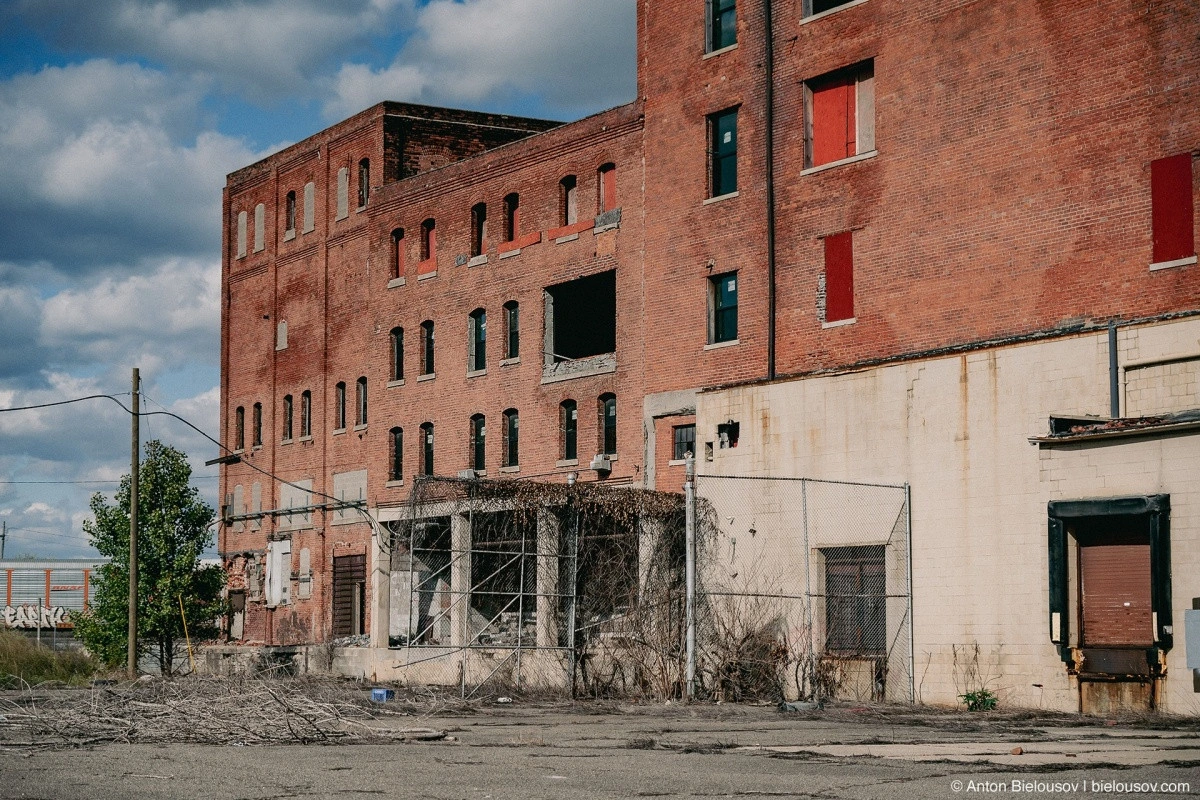
Abandoned warehouses.
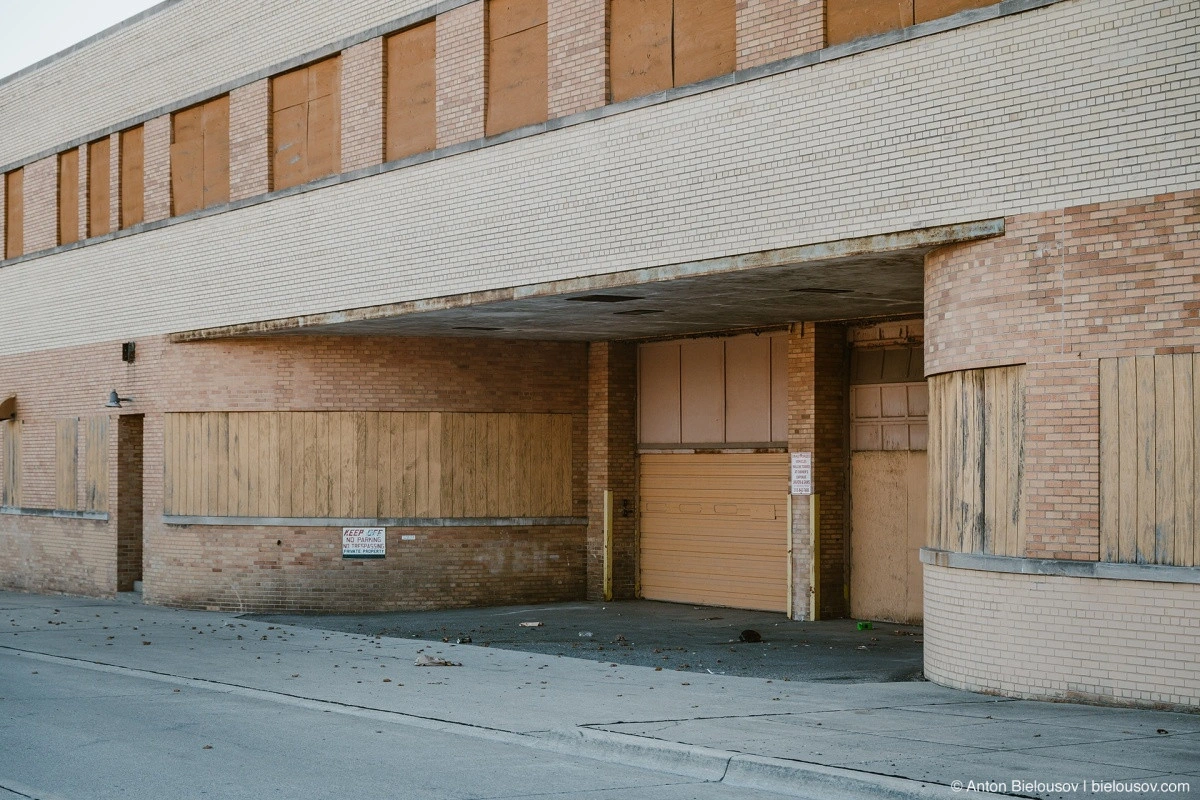
That awkward moment when an antique store becomes an antique itself.
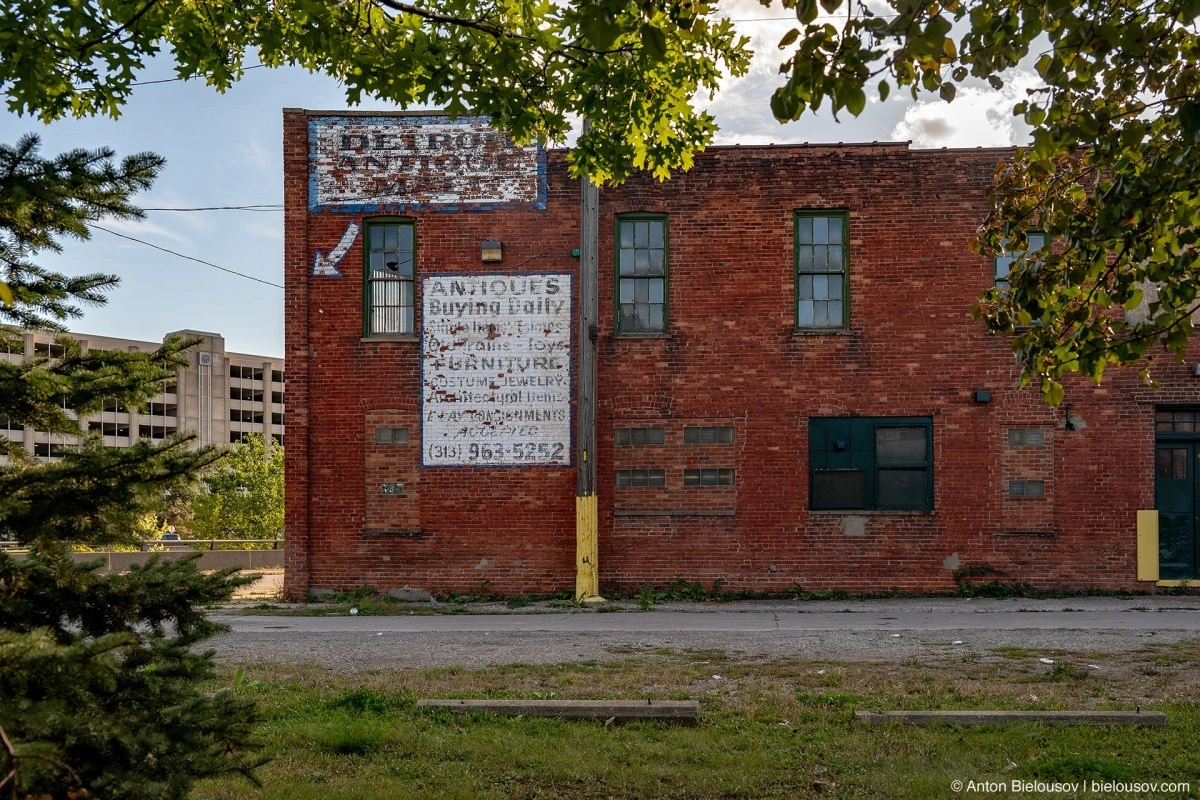
An abandoned department store.
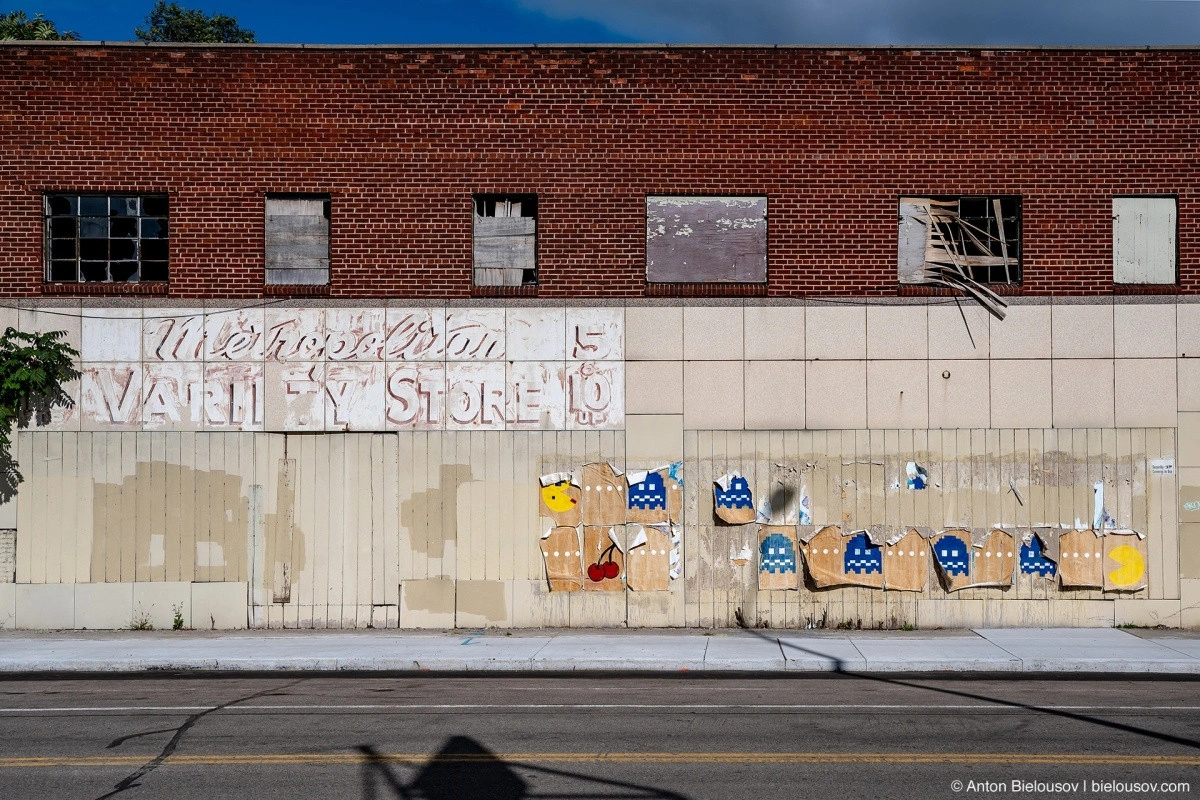
Even Pac-Man isn’t entirely «forever» here.
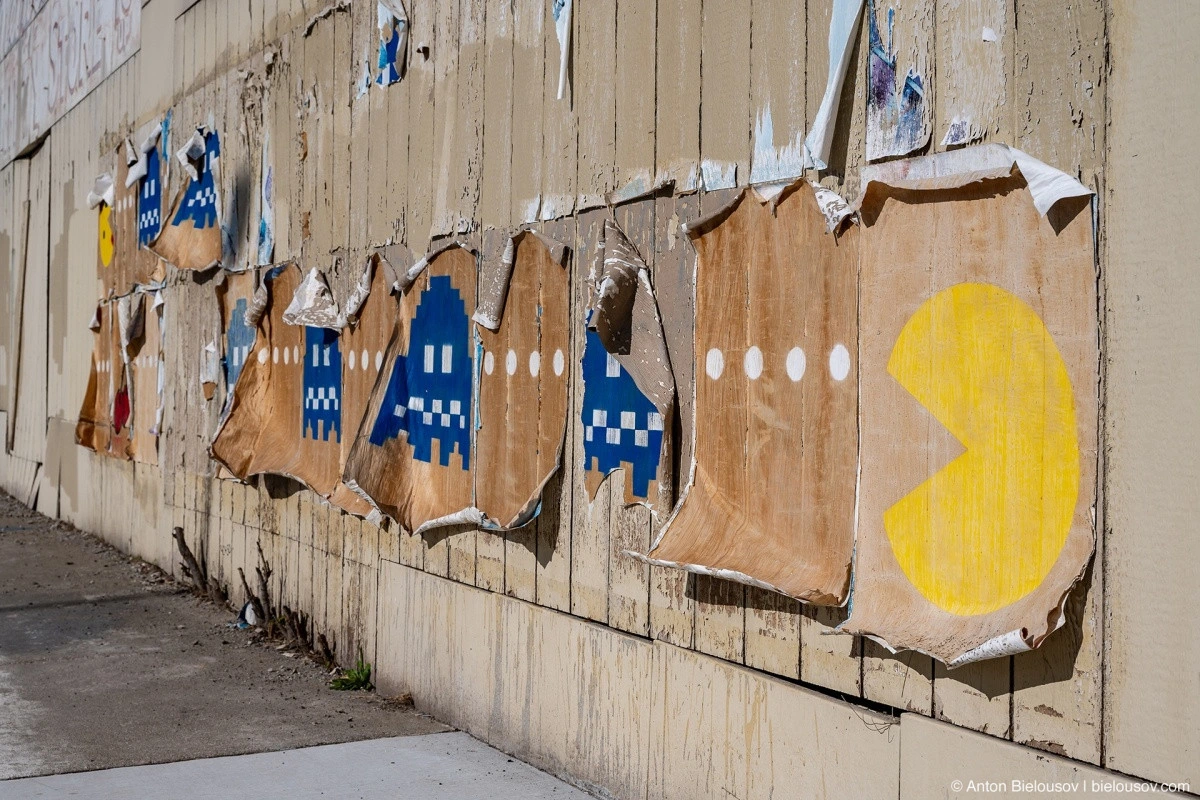
But this mural (which I find excellent) is somewhat more recent.
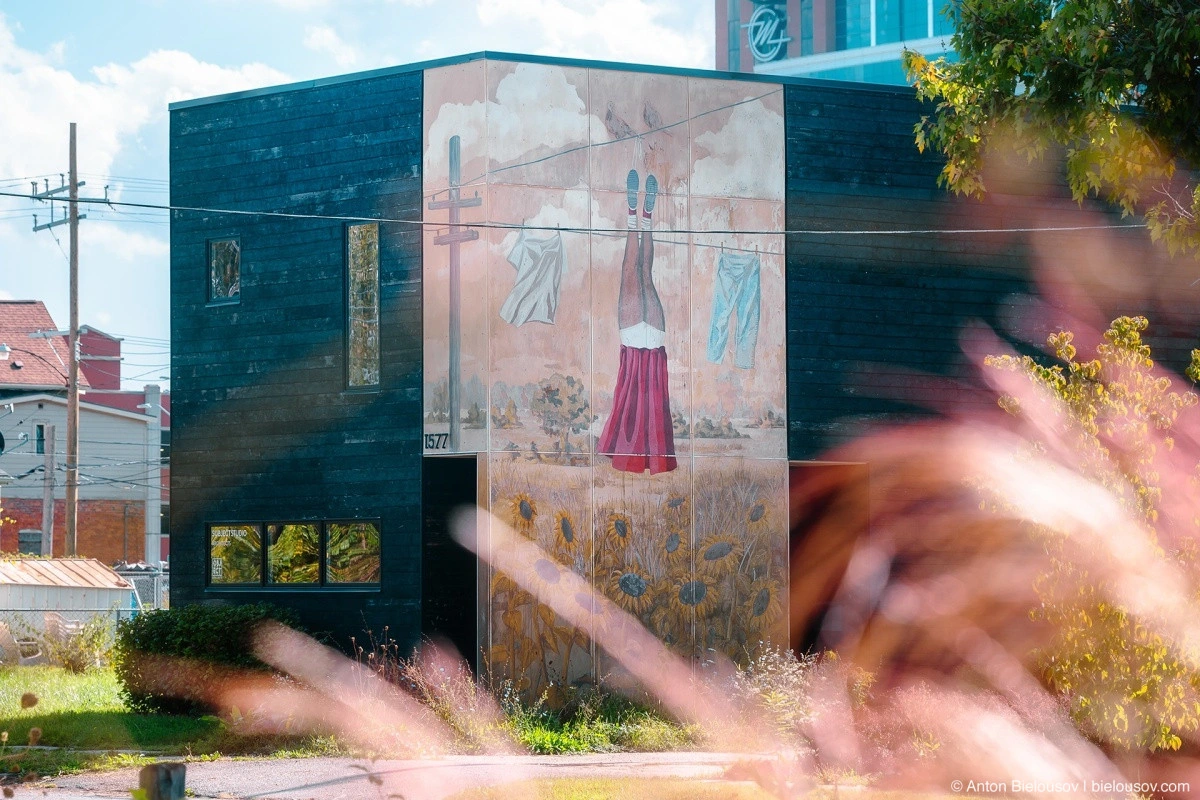
Behind the abandoned houses are neglected alleys.
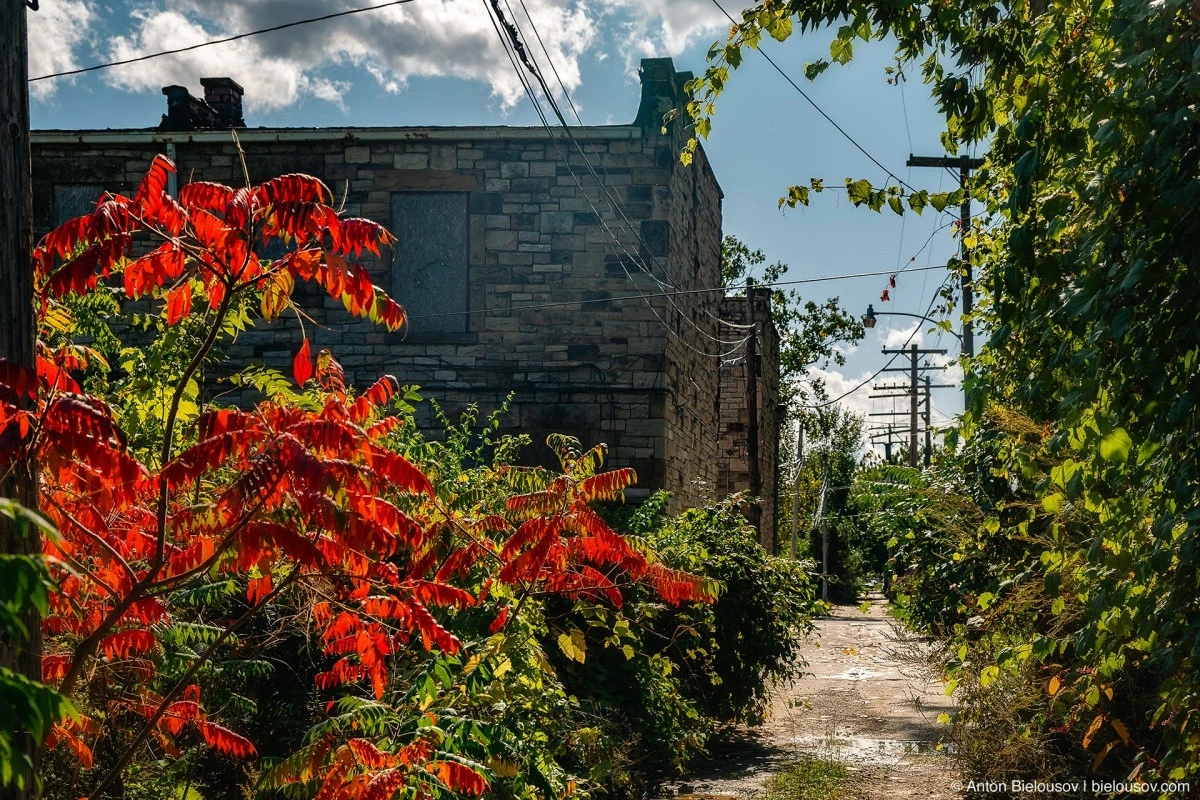
In some neighborhoods, the sidewalks are so overgrown that they’re impassable, though at least the roads are empty.

The sidewalks have long since lost their battle with nature, which is slowly but surely reclaiming the city from within.
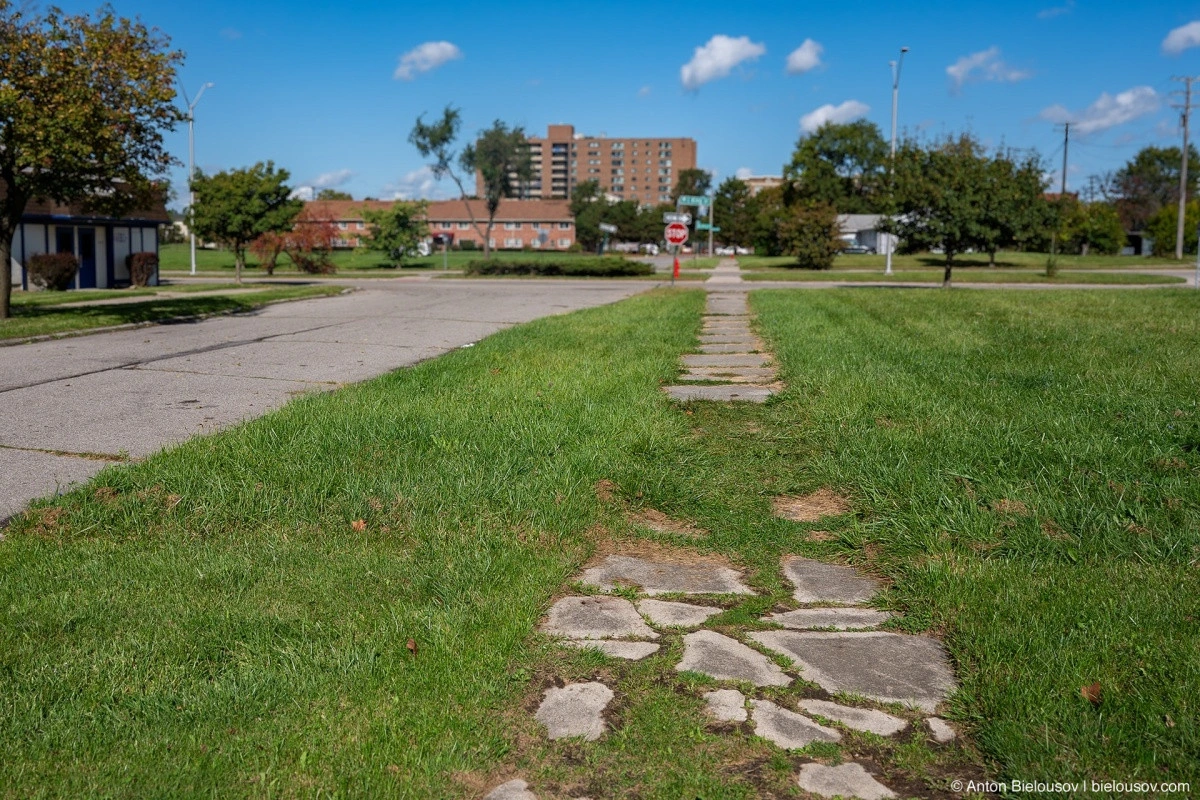
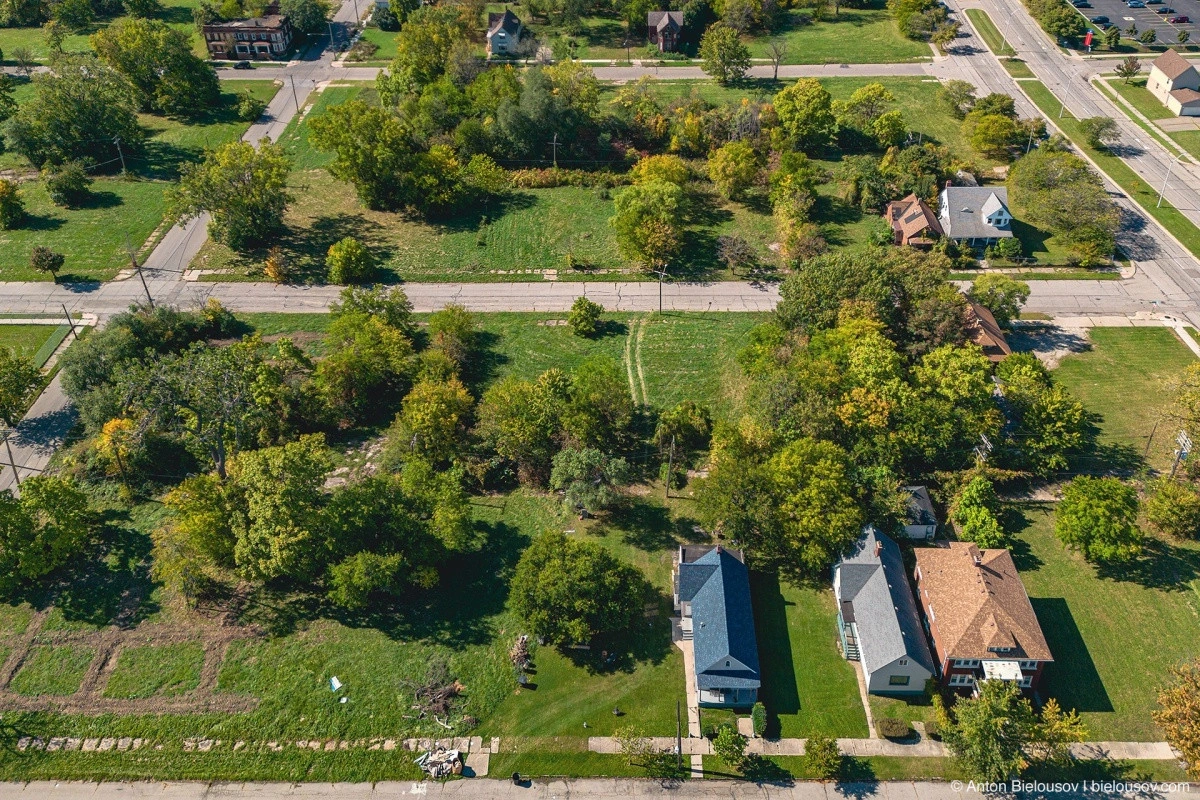
The city maintains infrastructure only at intersections. Here, short stretches of sidewalks lead to nowhere — they’re just a few years old and already equipped for strollers and the visually impaired. For the future.
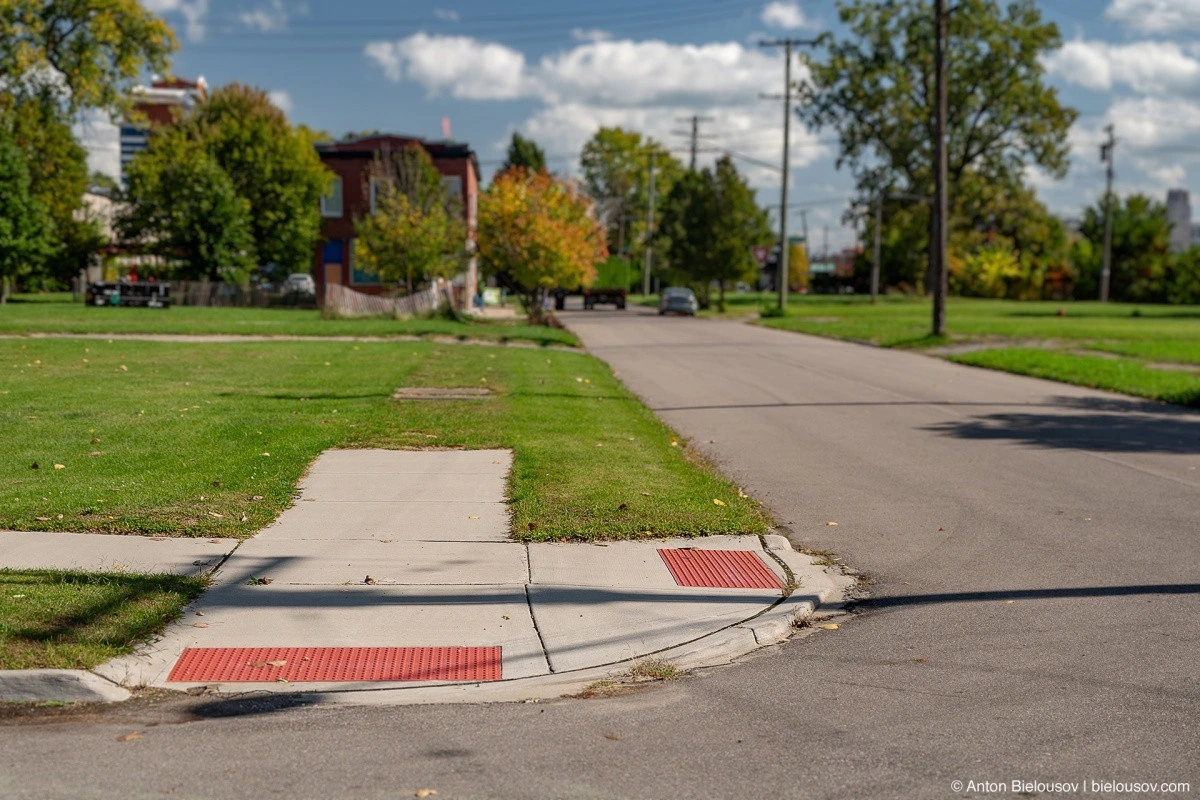
And the future isn’t as far off as it might seem — on the lots that could be purchased for just a few thousand dollars not too long ago, new construction is already planned.
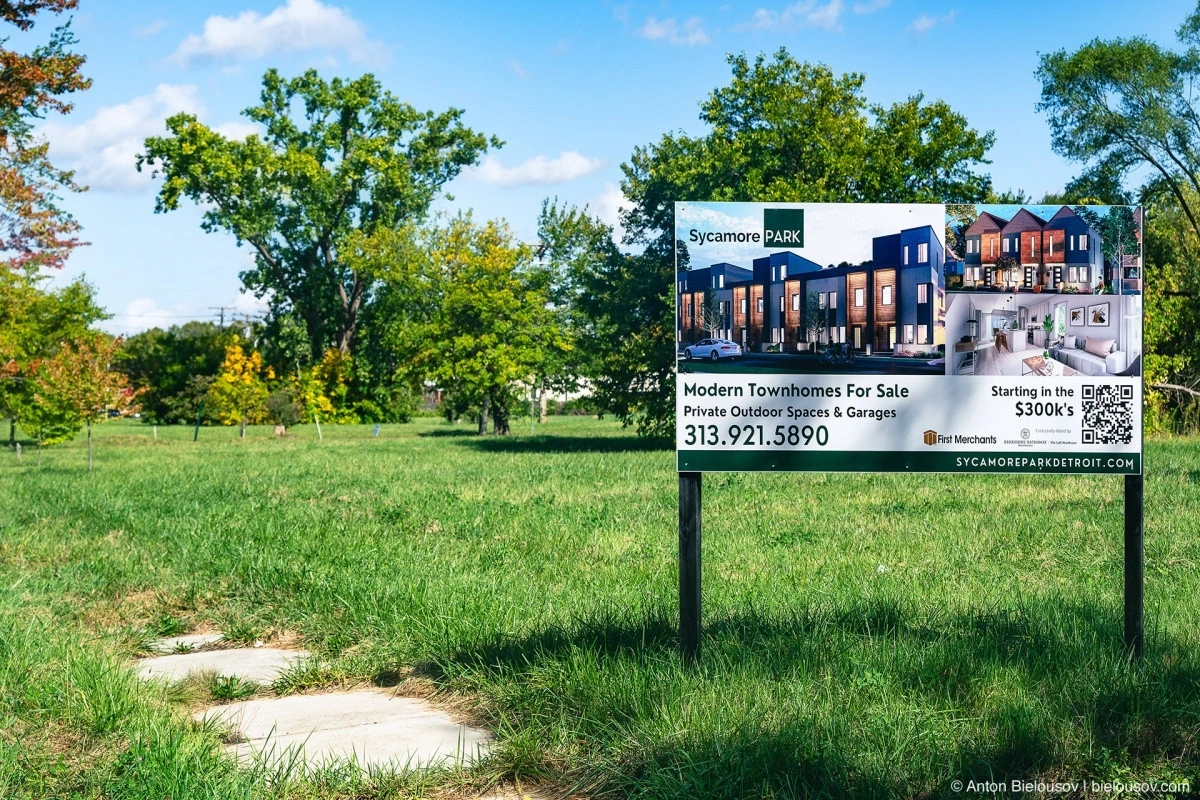
Boarded-up houses and simple vacant lots aren’t abandoned; they’re mostly being bought up by banks to later sell in bulk to some developer.
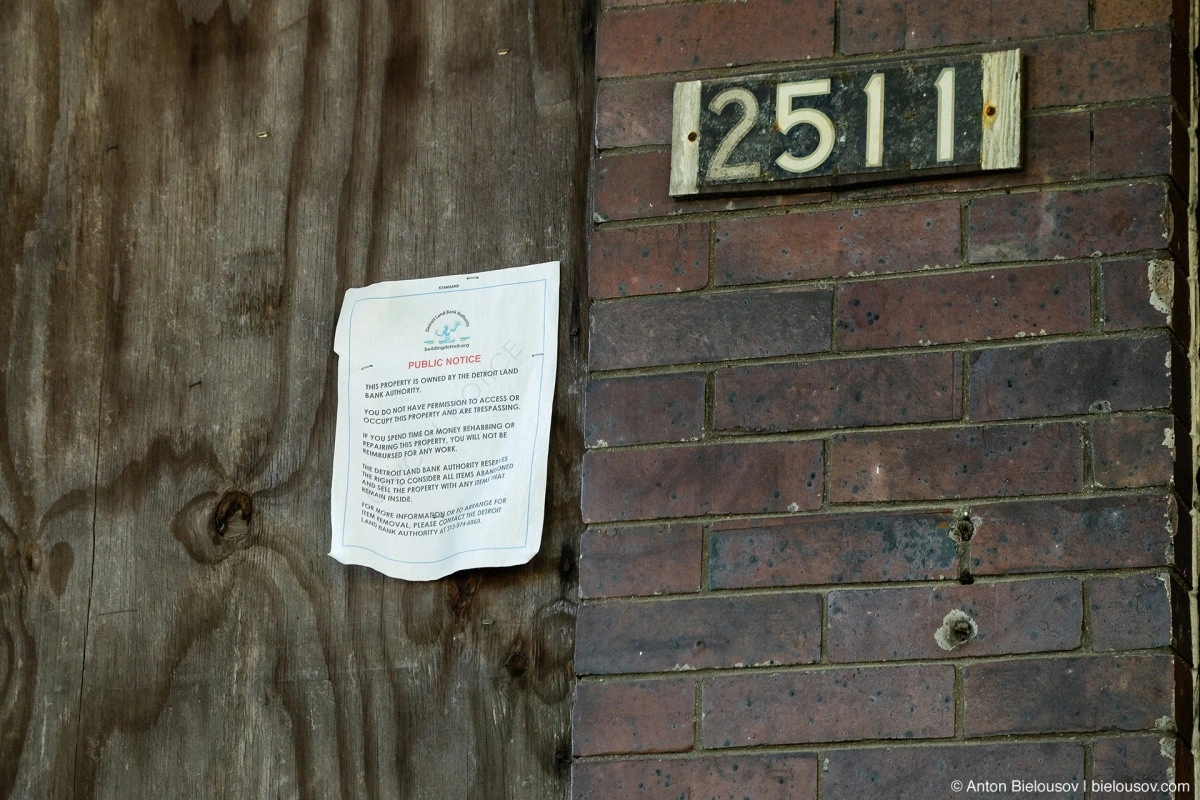
For example, this hotel was recently sold for… $1.
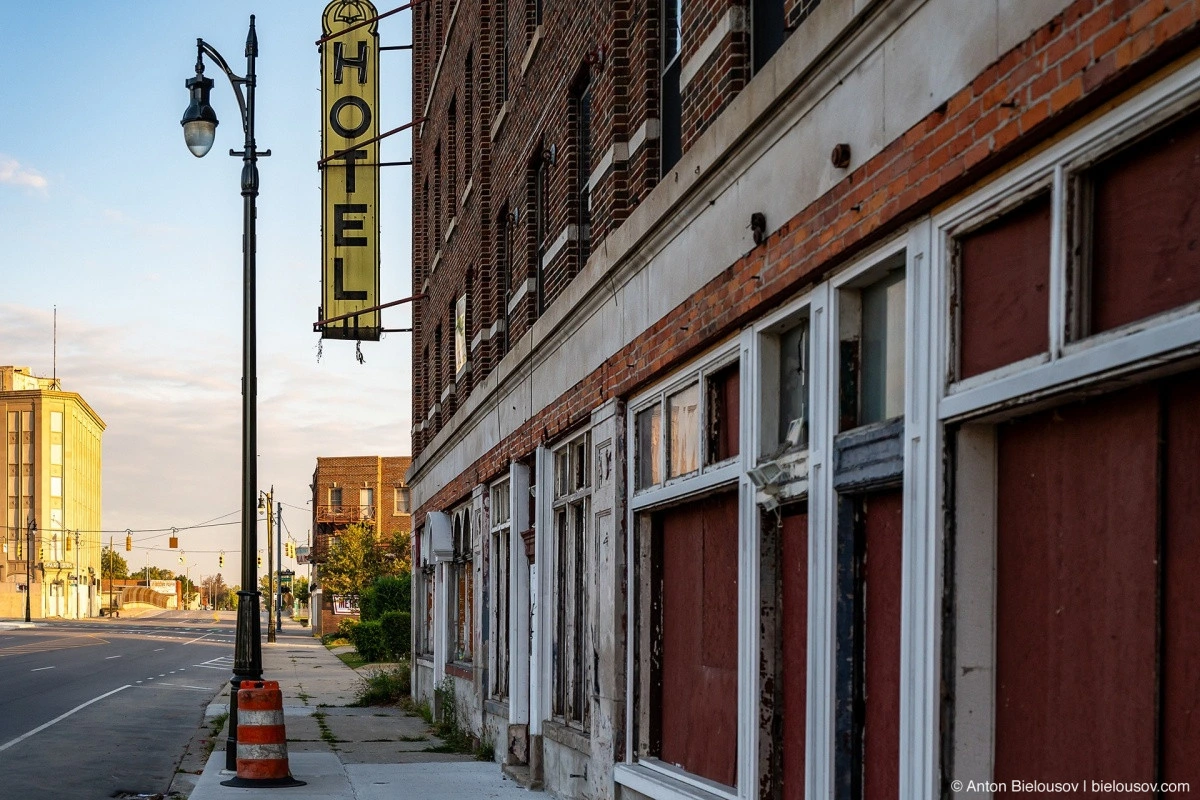
And this one is now on sale for $1.75 million.
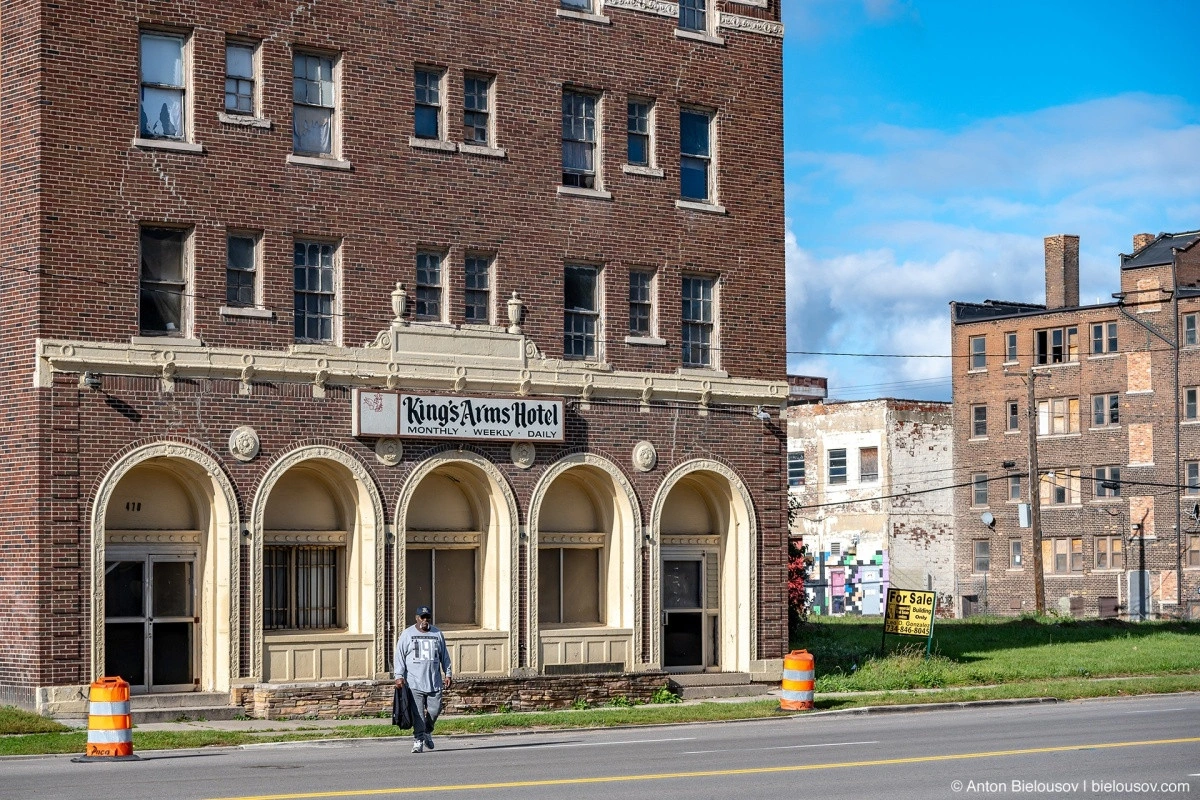
Closer to the city center, brick apartment buildings replace the private sector, but the degree of neglect in neighborhoods doesn’t change right away.
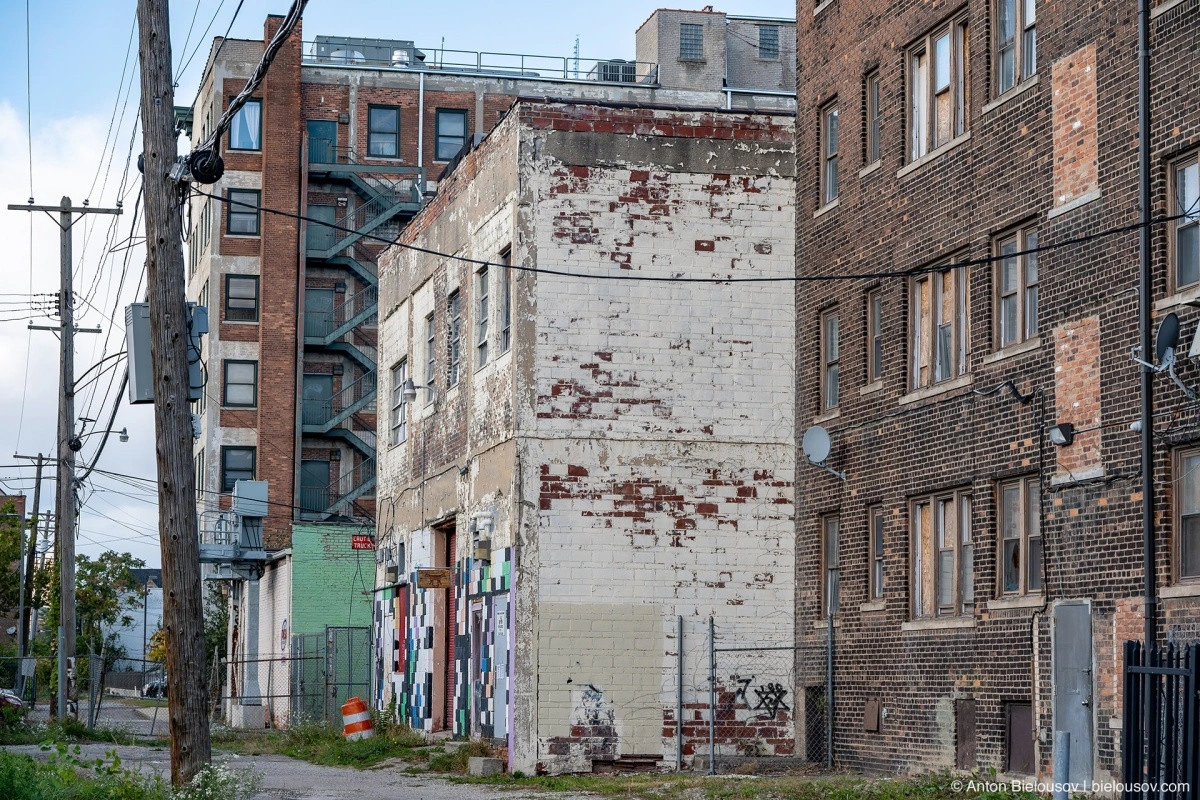
Somewhere around here, a woman came out to me, seeing my camera, and complained about constant nighttime activity in the nearby alley — drugs, alcohol, sometimes gunshots. She said she could practically reach out and touch it from her window. She mentioned she had repeatedly called the police, but it was all in vain. I, of course, explained that I had nothing to do with the city but promised that if I could, I would pass it on. So, here I am, passing it on.
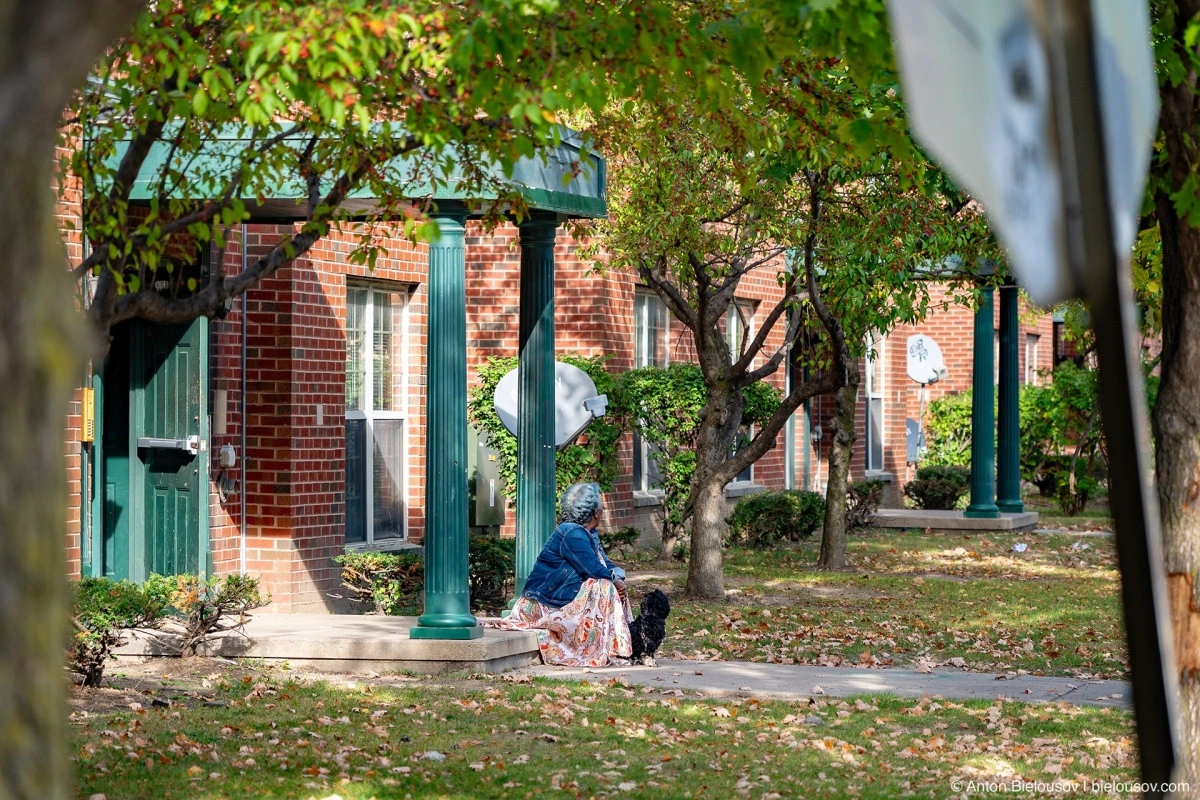
The railway workers’ union building — abandoned for several decades. In its later years, when it was still open, it housed a drive-through ATM — there’s a small canopy on the left side.
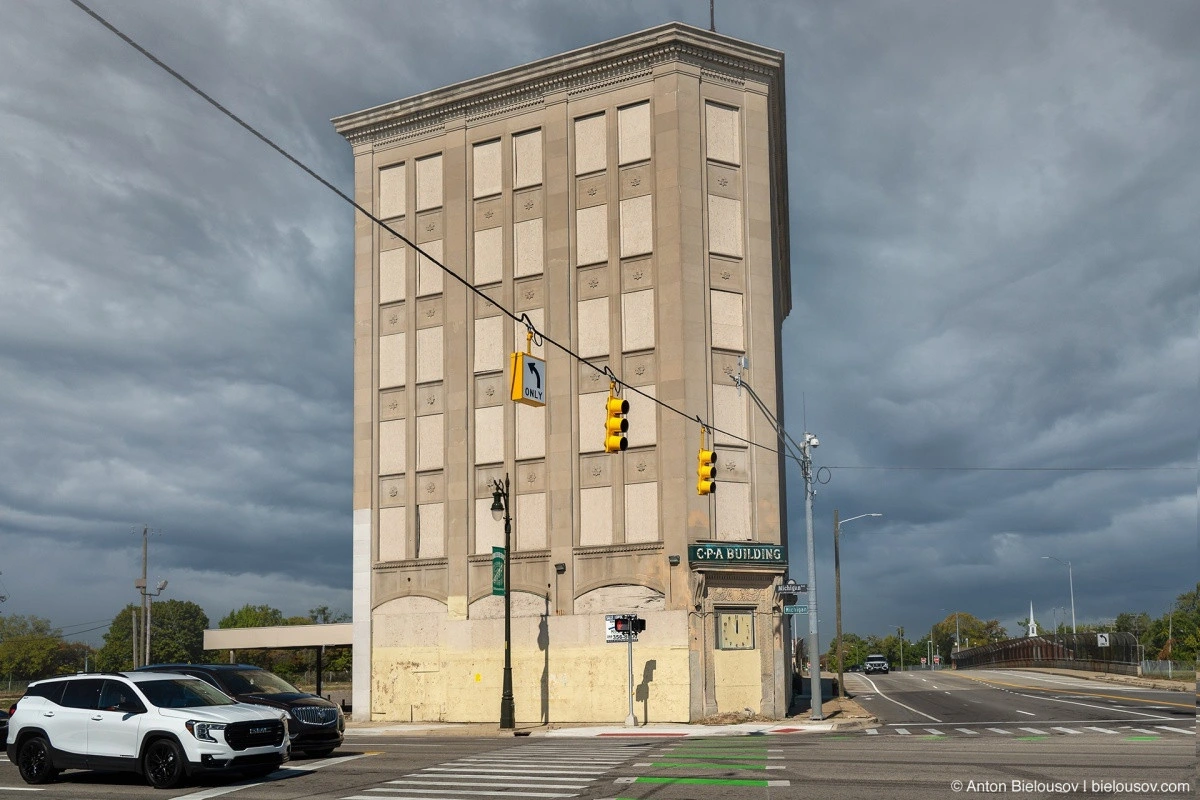
The insurance company sign on the building outlasted the company itself.
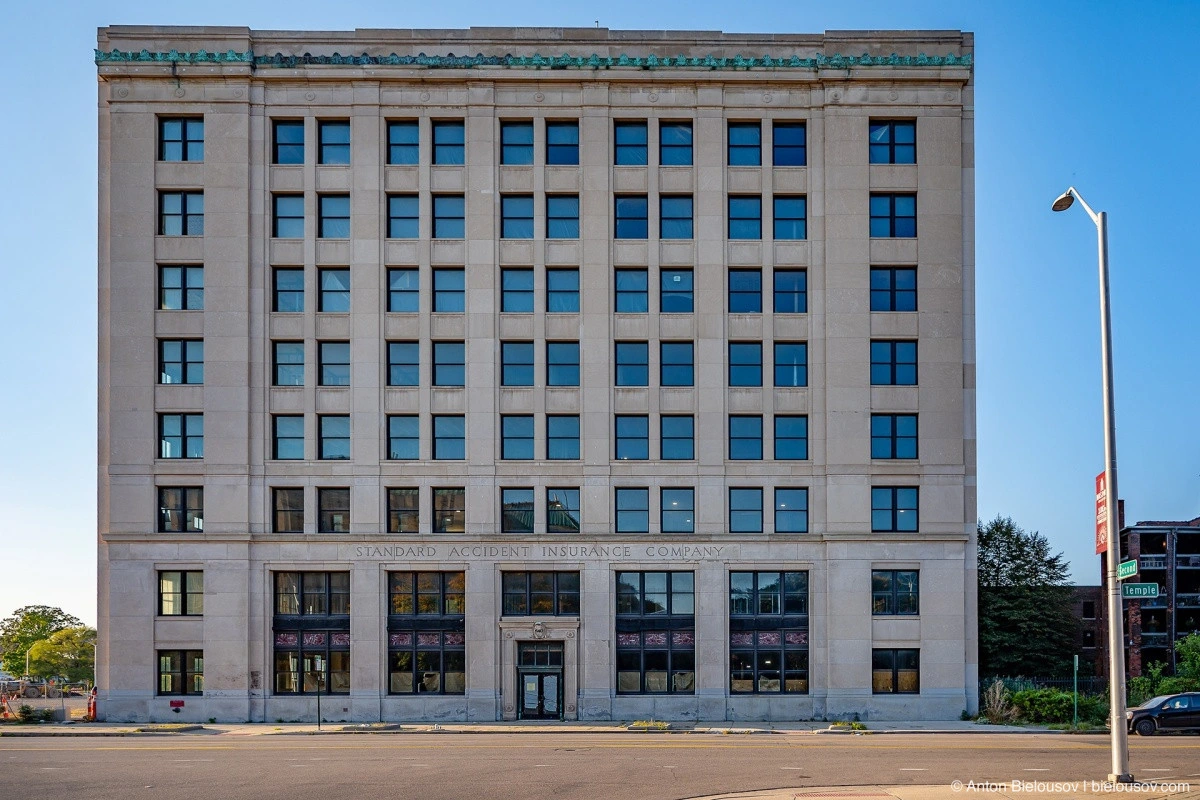
Michigan Theatre
Many have probably seen photos of an old theater in downtown Detroit that was turned into a parking garage. On Grand Tour, they even tested cars here with a decibel meter — to see which was louder.
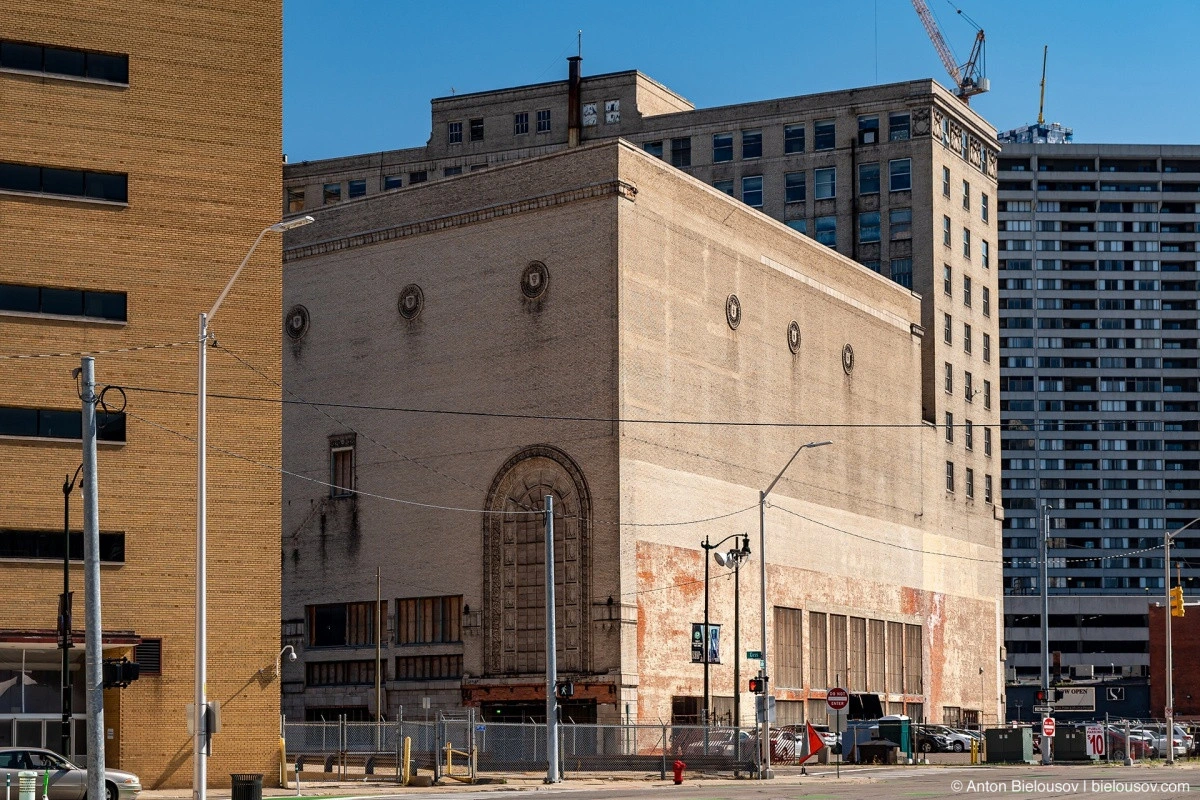
The Michigan Theatre, with 4,000 seats, was built in 1925 in the French Renaissance style. Interestingly, it stands on the very spot where Henry Ford’s first workshop was located, where he worked on the idea of a production-line car.
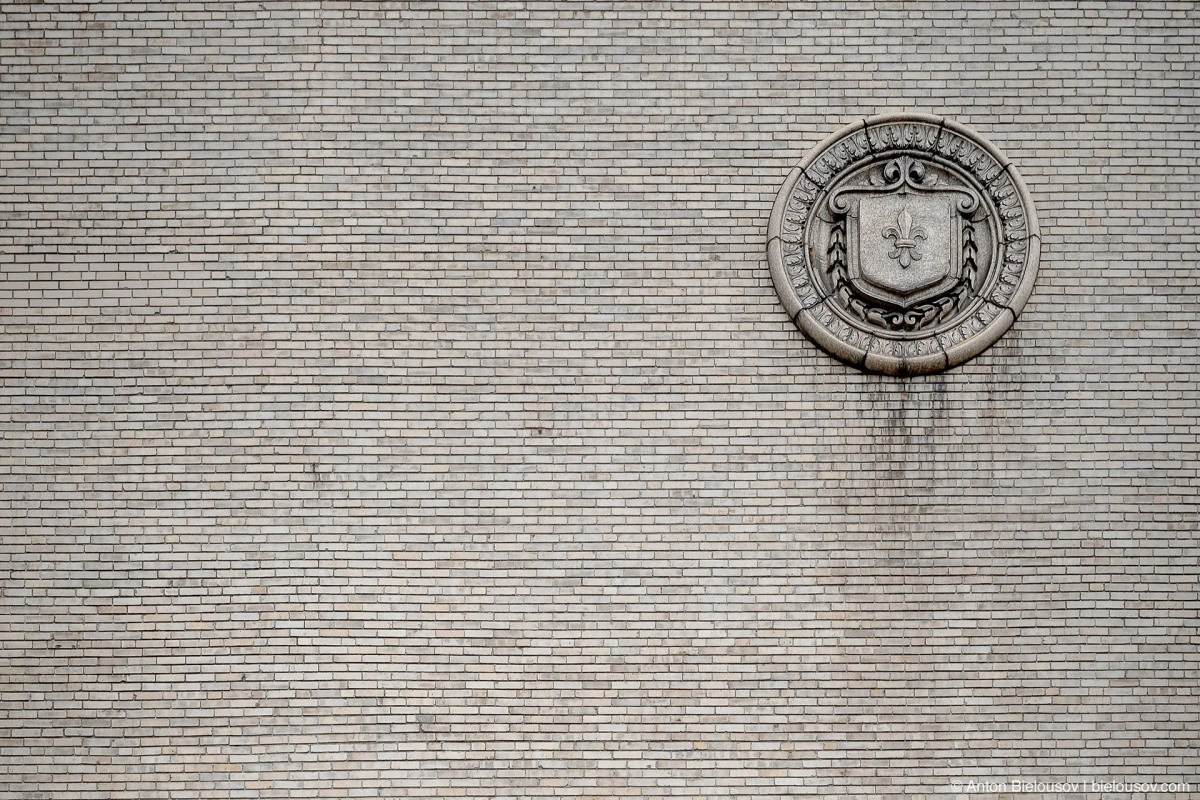
The theater building was designed as part of a complex with an adjacent 13-story office building, which ultimately became its downfall.
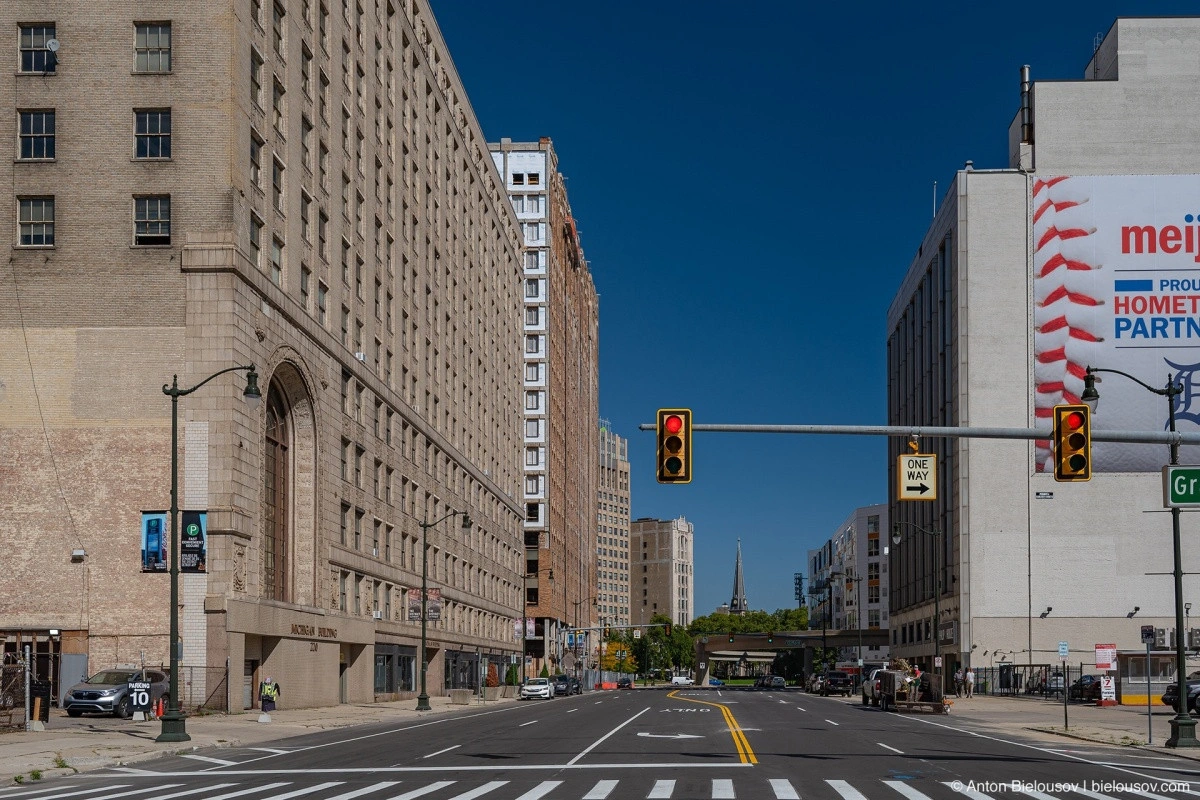
By 1967, the theater had become unprofitable, and the entire complex was put up for sale. The new owner was only interested in the office space, so by the early 70s, the theater fell into disrepair and was closed, and in 1977 it was reopened as a parking garage. I tried very hard to get inside, but unfortunately, due to the increased risk of façade collapse, the parking operation there had already ceased, and there was no building security present on the weekend to let me in for a small reward.
You can still peek inside, though.
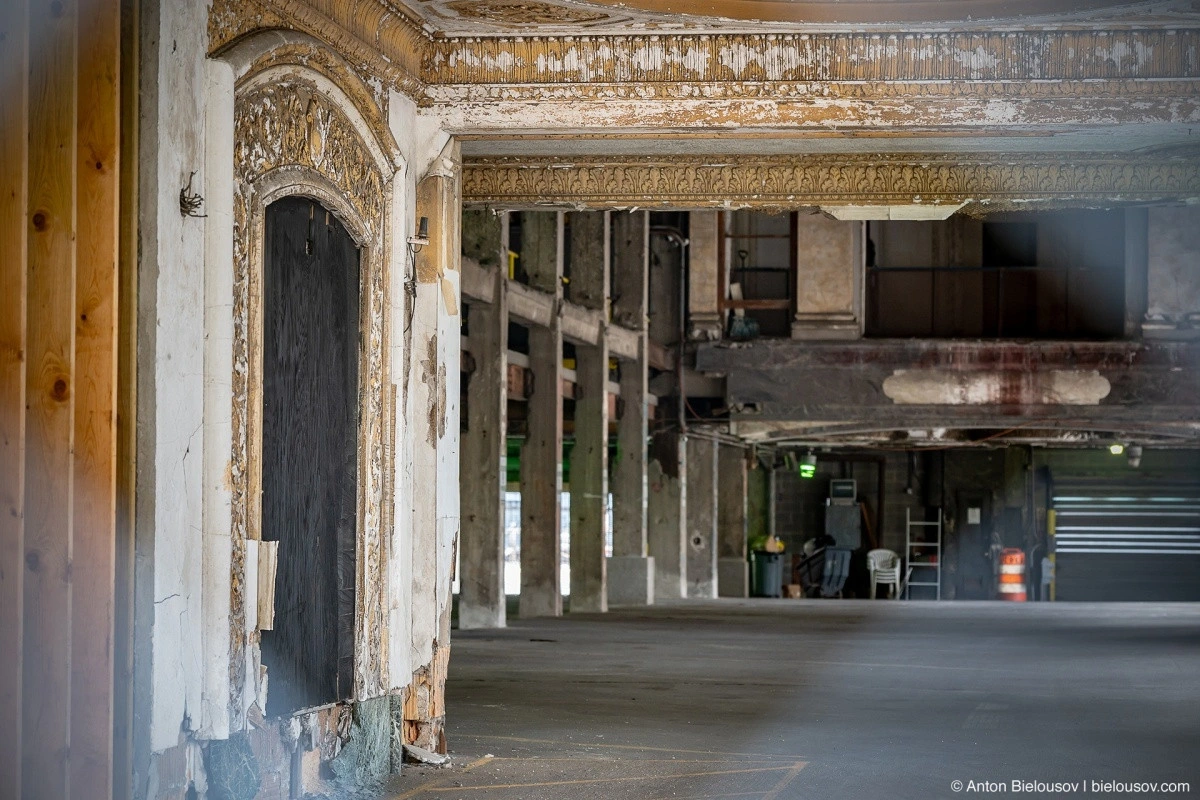
Ornate ceilings — check.
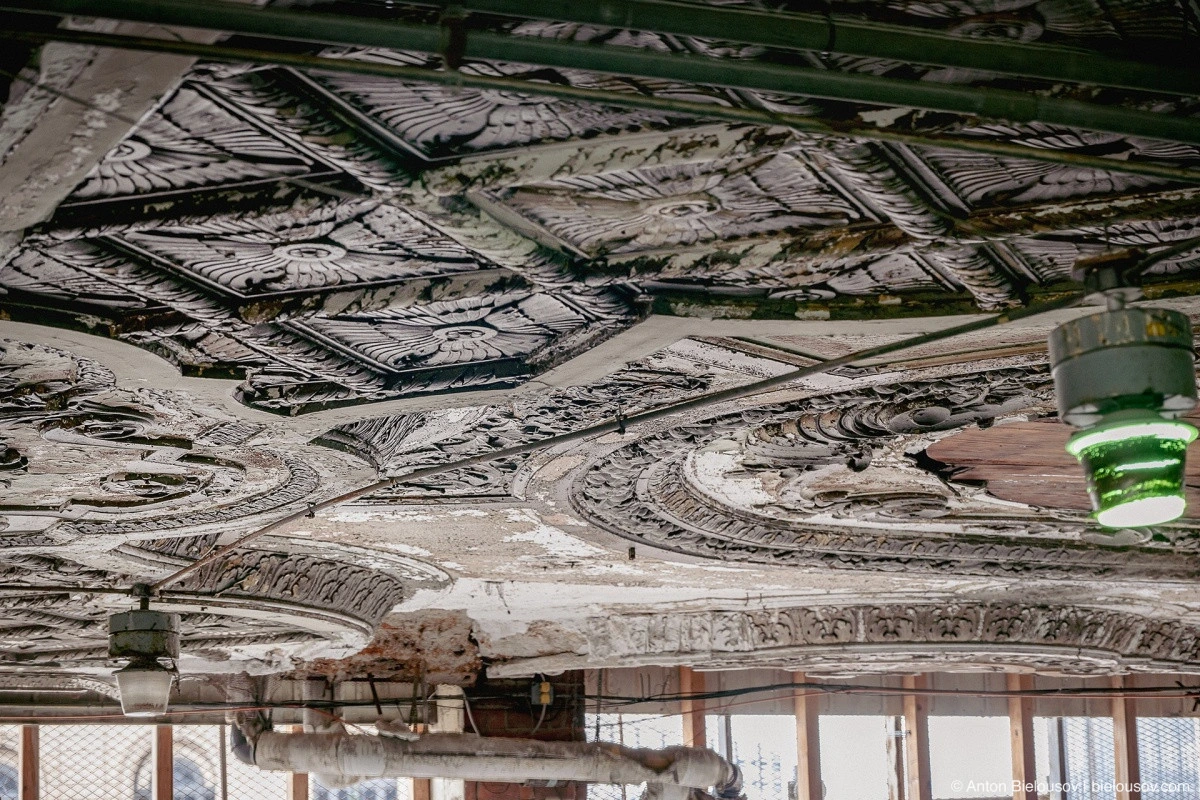
Brush Park
On the outskirts of downtown, there are several neighborhoods with old, expensive houses in the Victorian style.
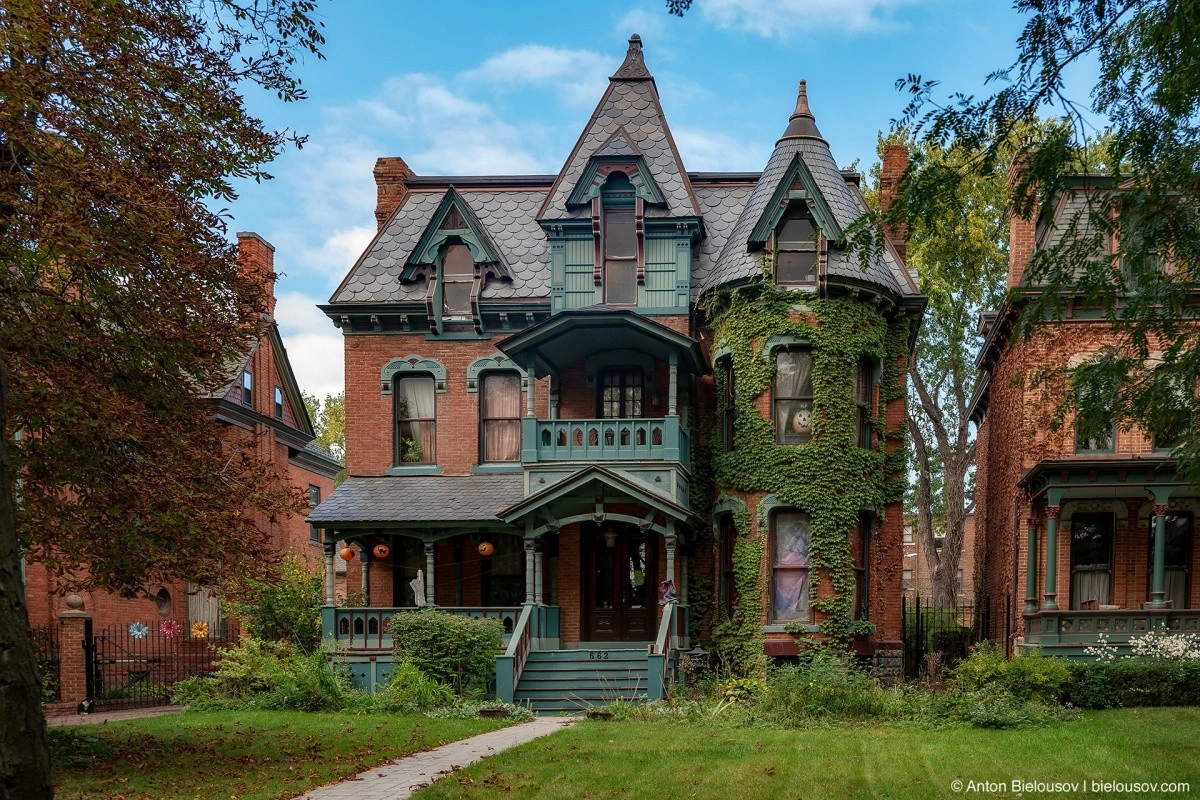
In the historic district of West Canfield, for example, there’s an entire street of them.
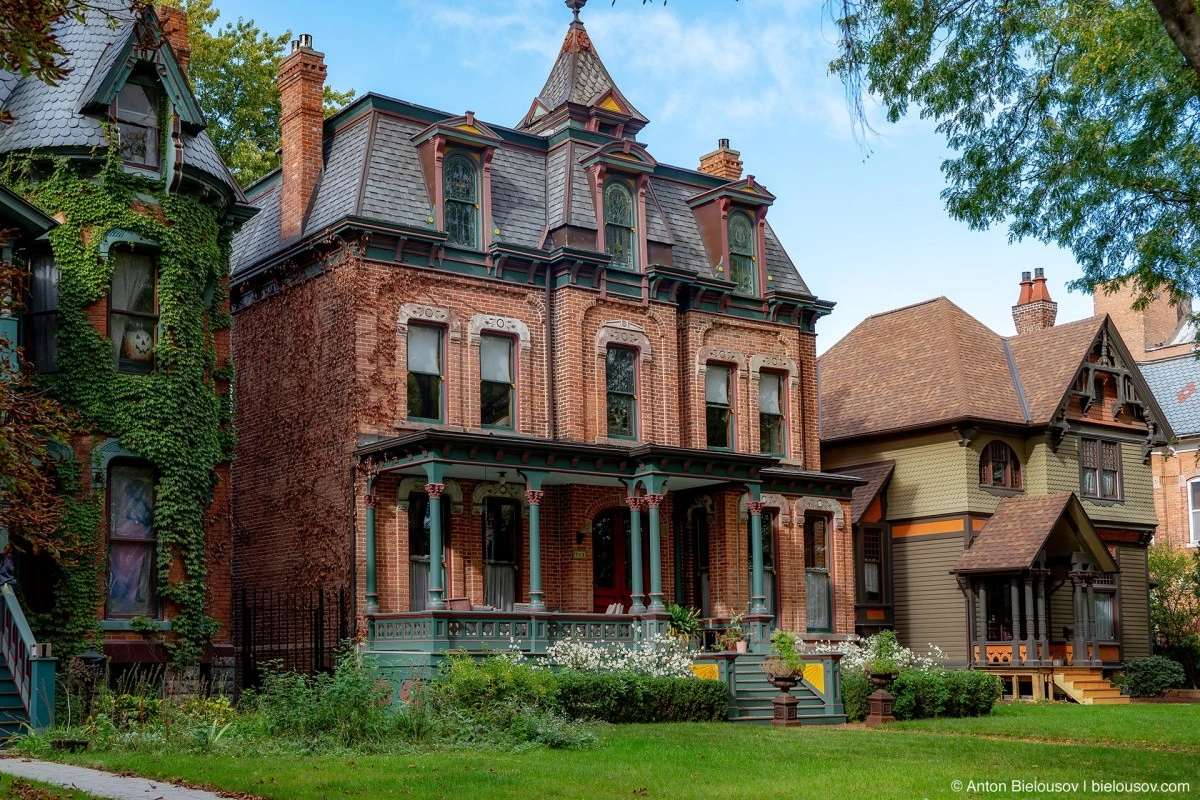
Some have also been preserved in the Brush Park area.
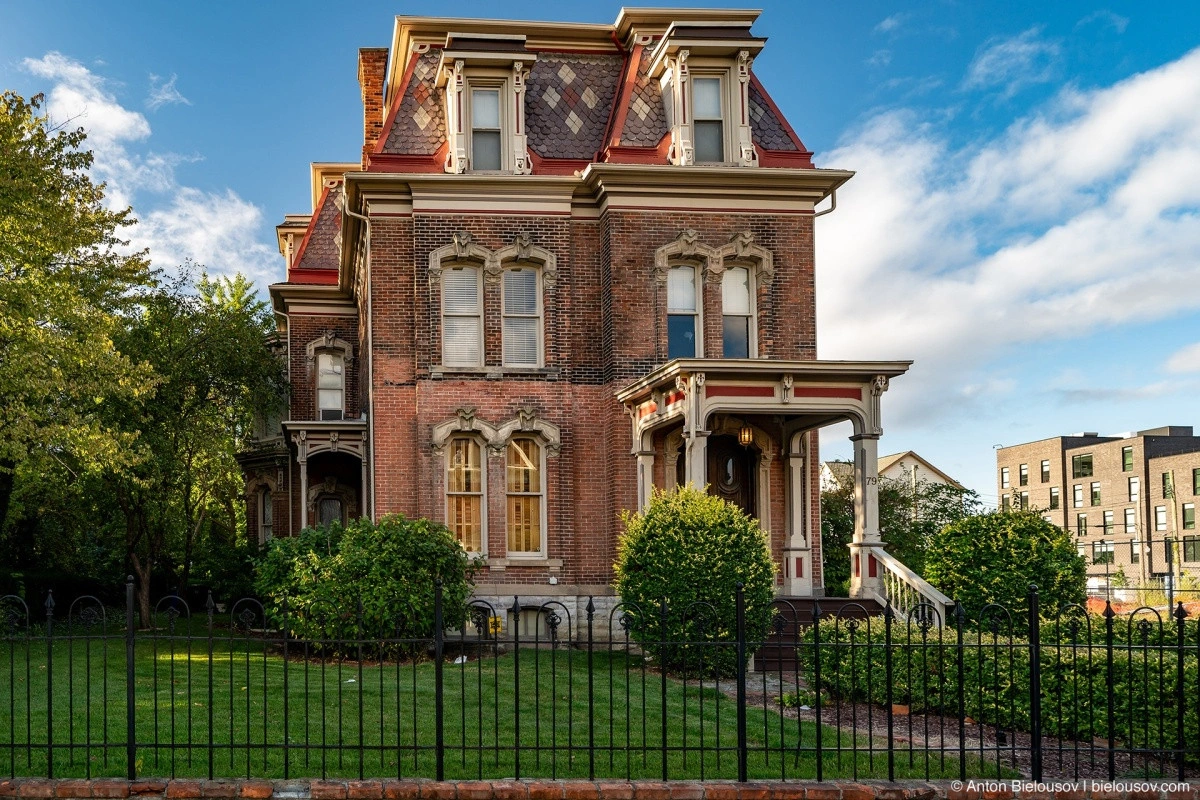
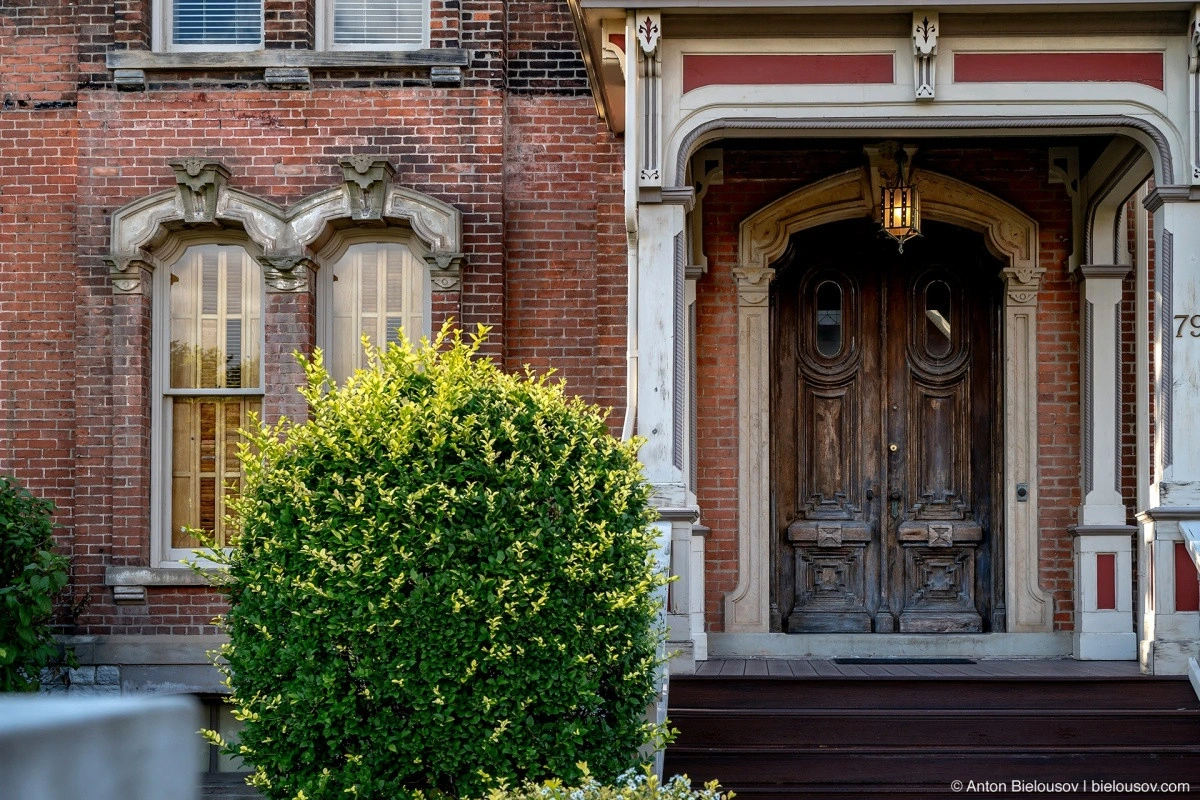
This neighborhood, however, is also considered one of the neglected ones, although there are already new developments in some areas.
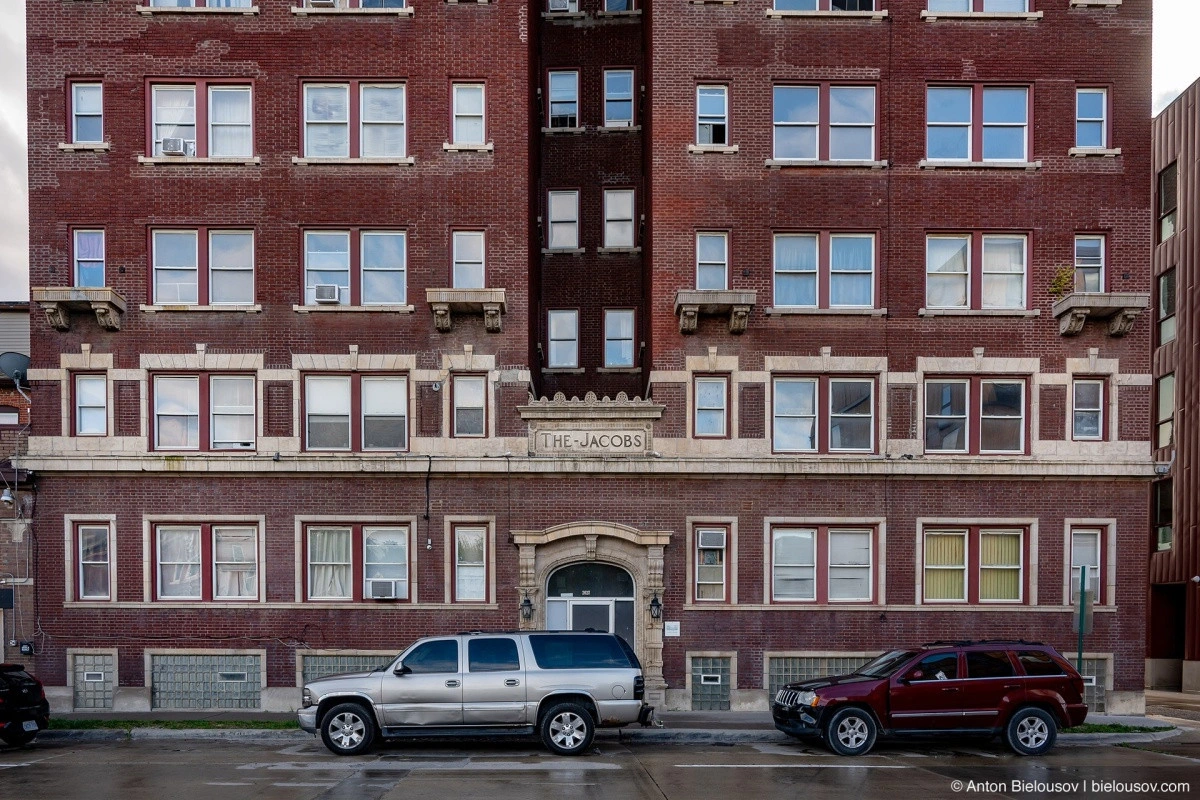
Currently, there are about 78,000 abandoned buildings in Detroit.
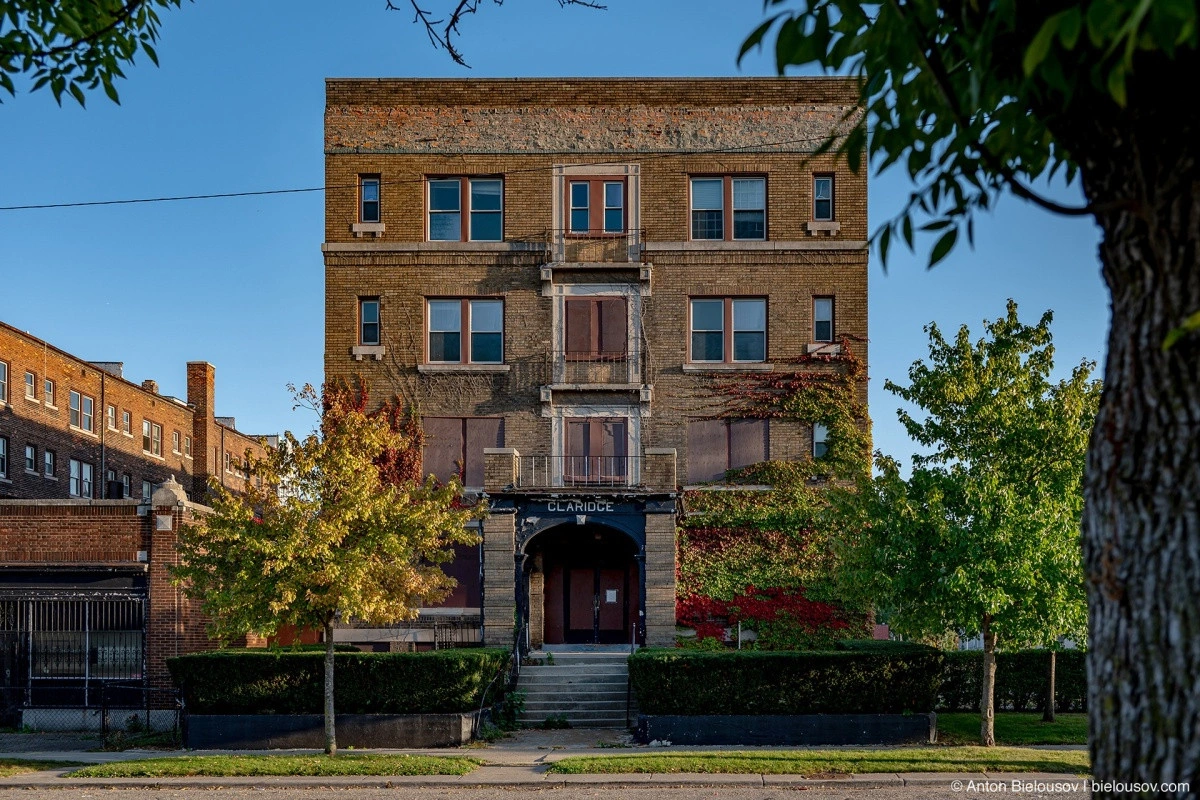
Over half of them are planned for demolition — that's nearly a quarter of the city's entire infrastructure.
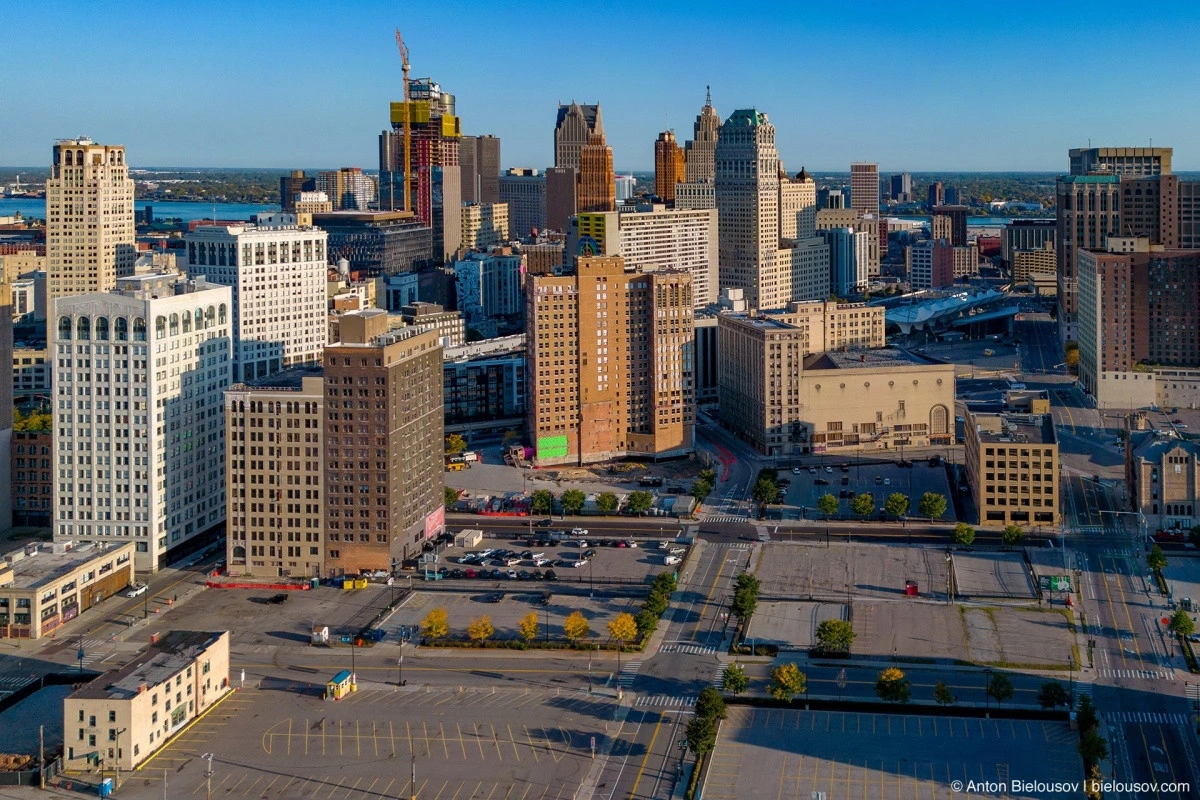
Where demolished buildings once stood, there’s either a green lawn left or it’s concreted over to create parking lots.
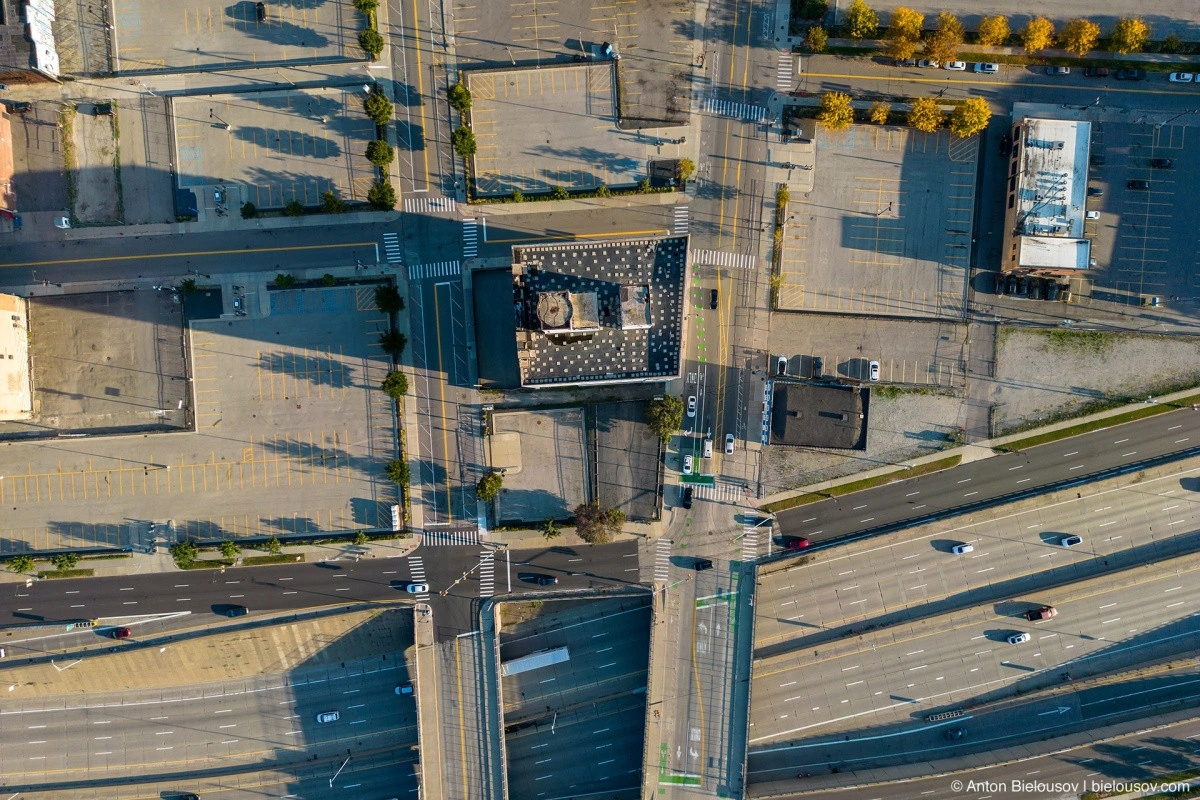
Even abandoned multi-story parking garages can be torn down, only to make way for yet another… unnecessary new parking lot. But when they’ll get around to doing this is still unknown.
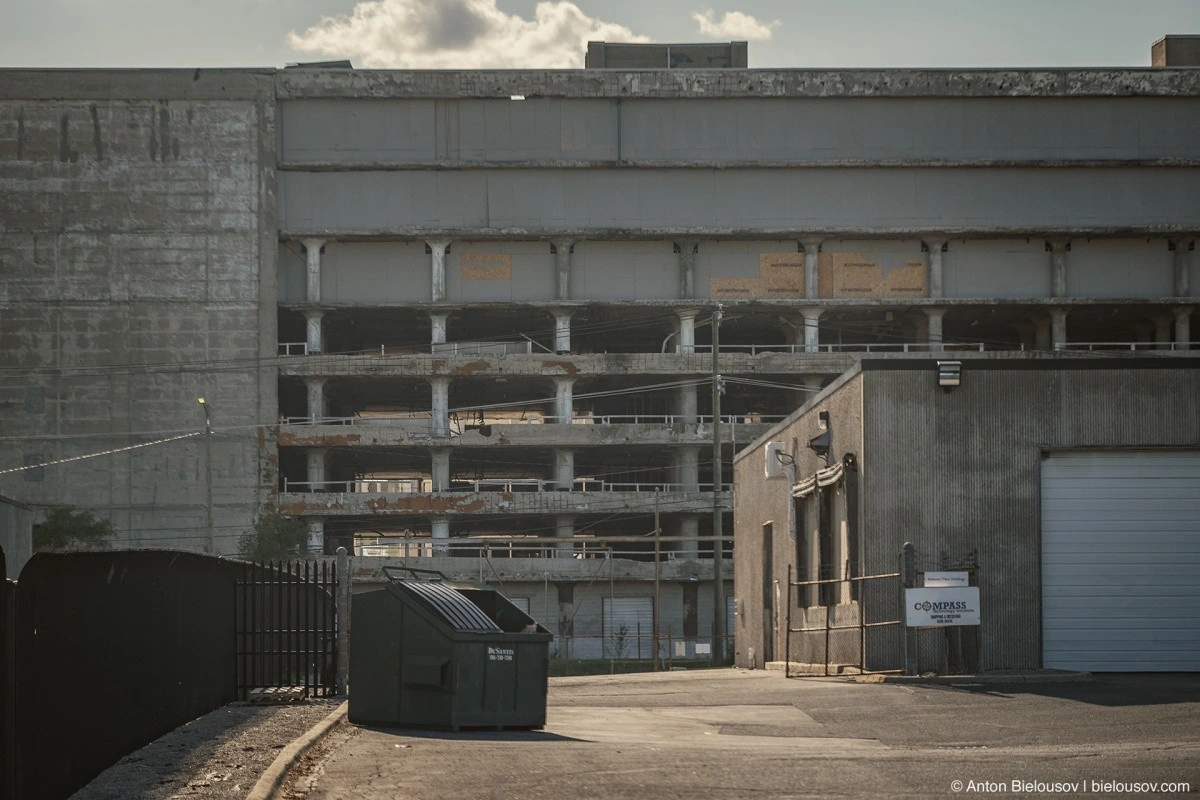
Needless to say, the city now has far more parking spaces than cars. At least with multi-story garages, there’s one advantage — you can go up to the roof and take photos of the city from above.
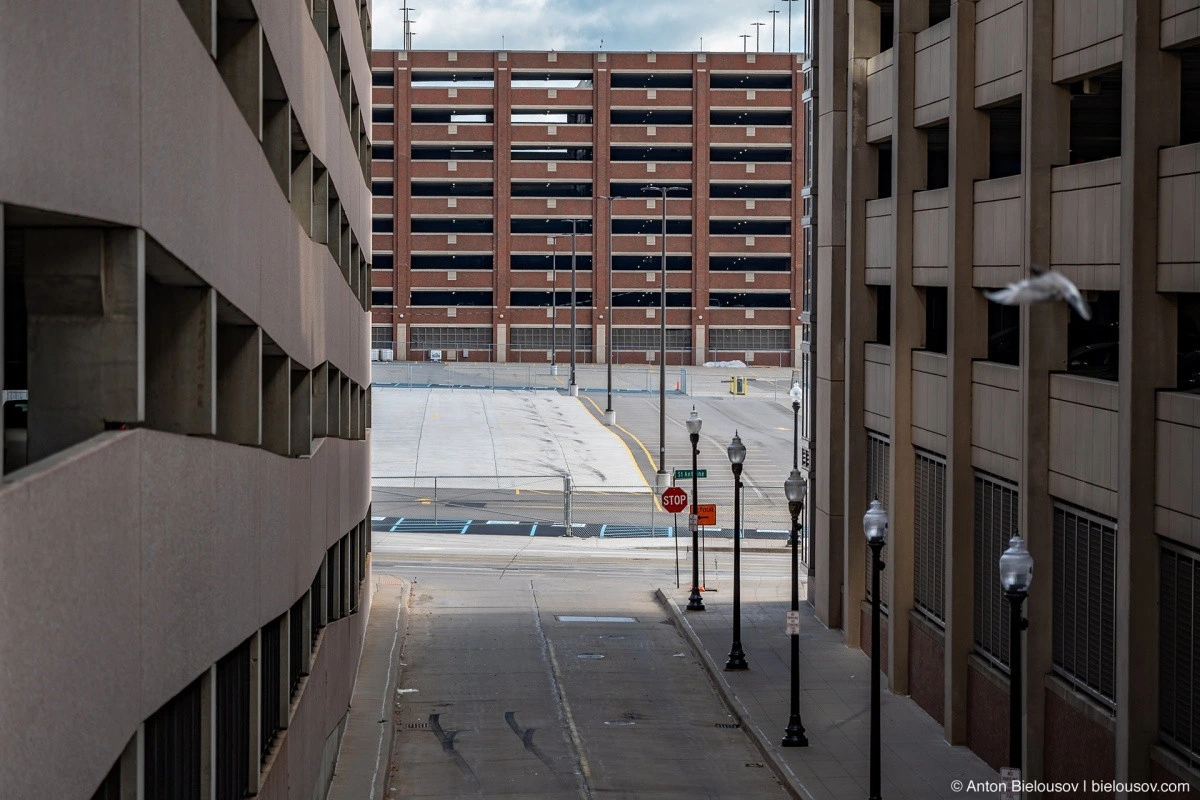
What immediately catches your eye in Detroit is the empty roads.

During a week in Detroit, I saw only 3 or 4 Teslas — after Vancouver, this was quite a refreshing detox.
Not that there are no cars at all, rather they’re simply rare. This has given rise to a unique culture of crossing streets: “if there’s no one around — I go.” Perhaps that’s why most traffic lights in the city aren’t controlled and operate on a timer.
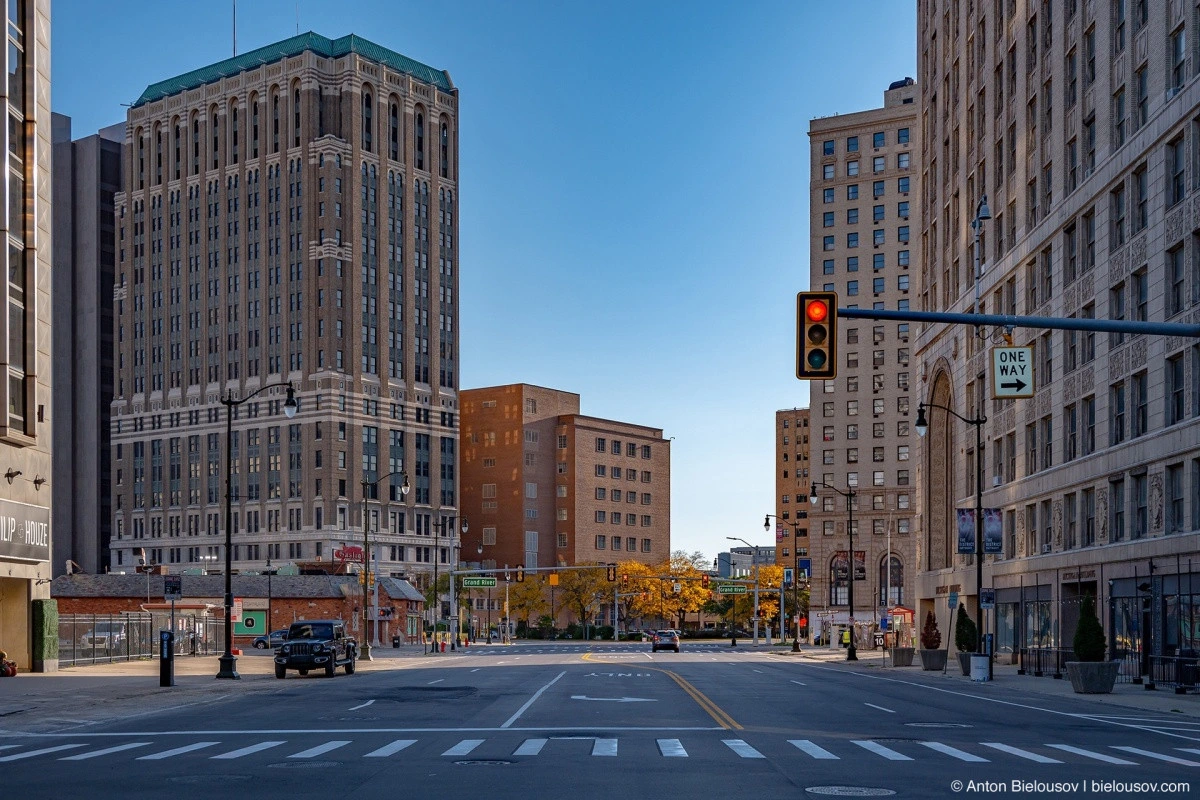
Another culture born from empty streets is guys like these.
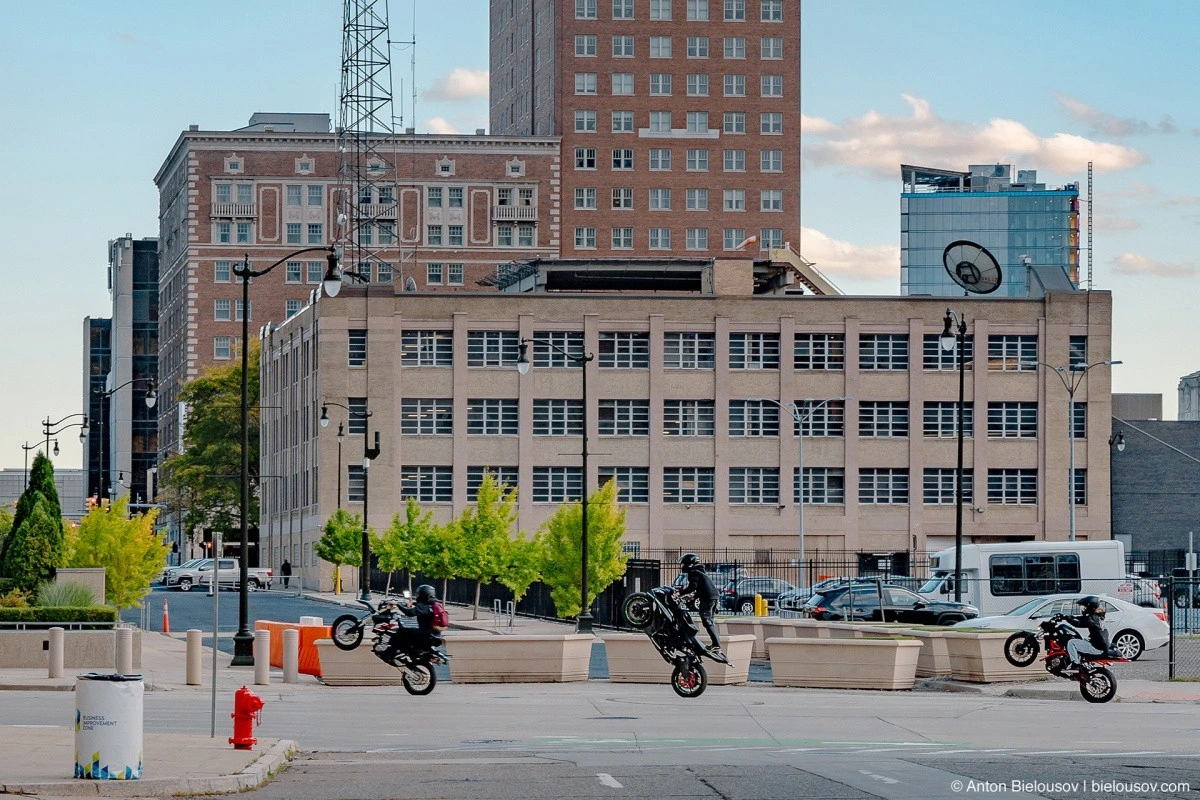
Morning «rush hour» on one of the city’s main historic streets — Michigan Avenue.
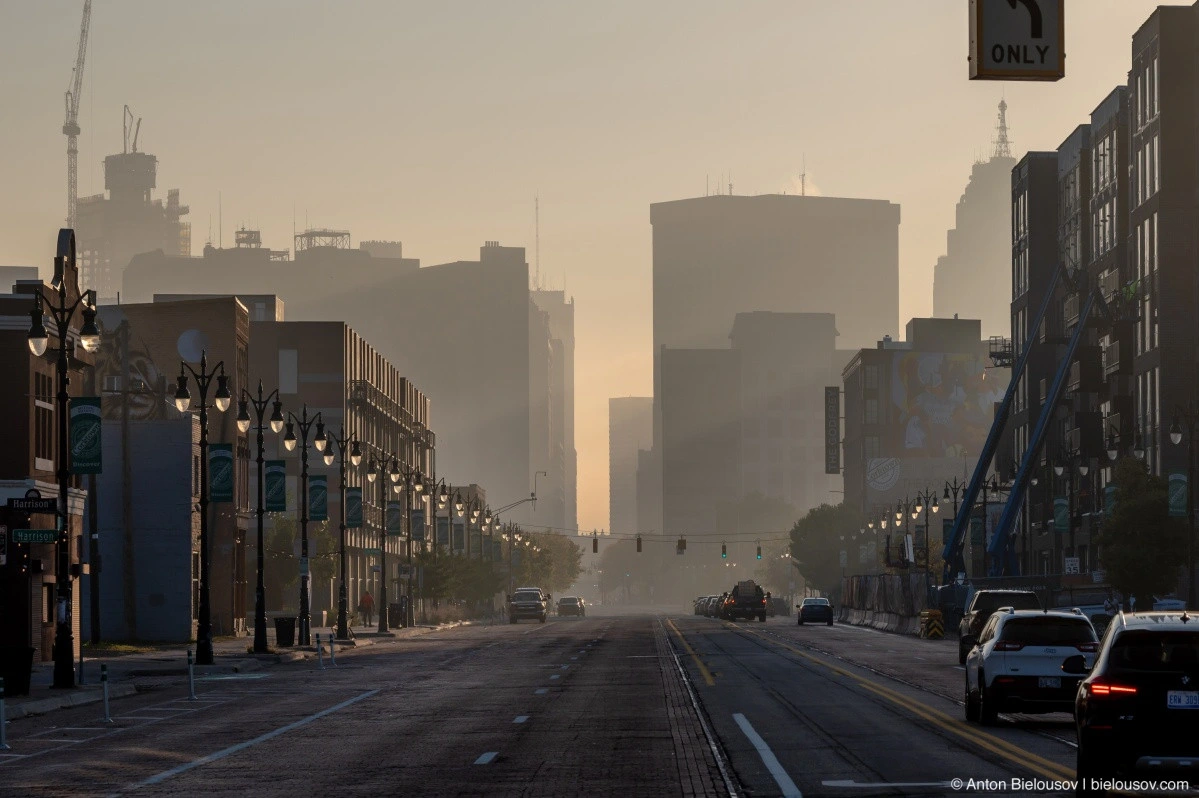
Michigan Ave. And once again, the post-apocalyptic vibe is evident here.

In this large city, you can still see water towers.
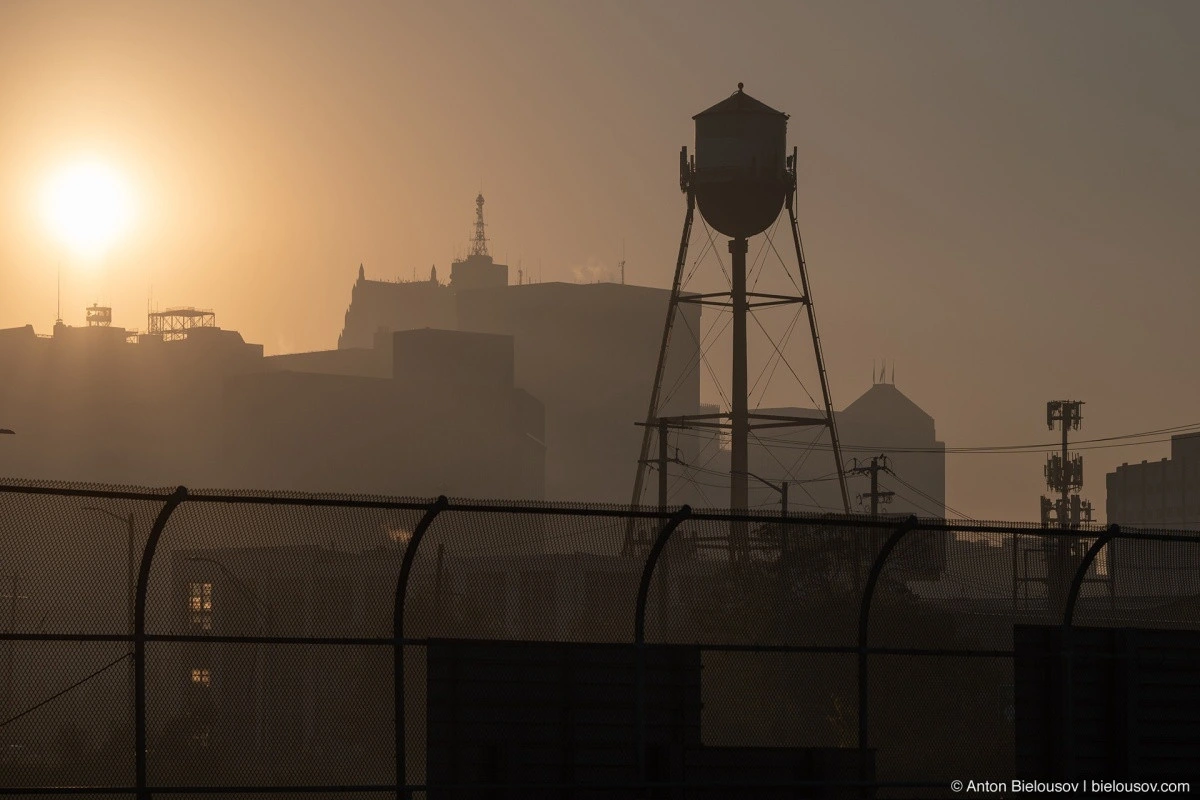
Another tower on a rooftop.
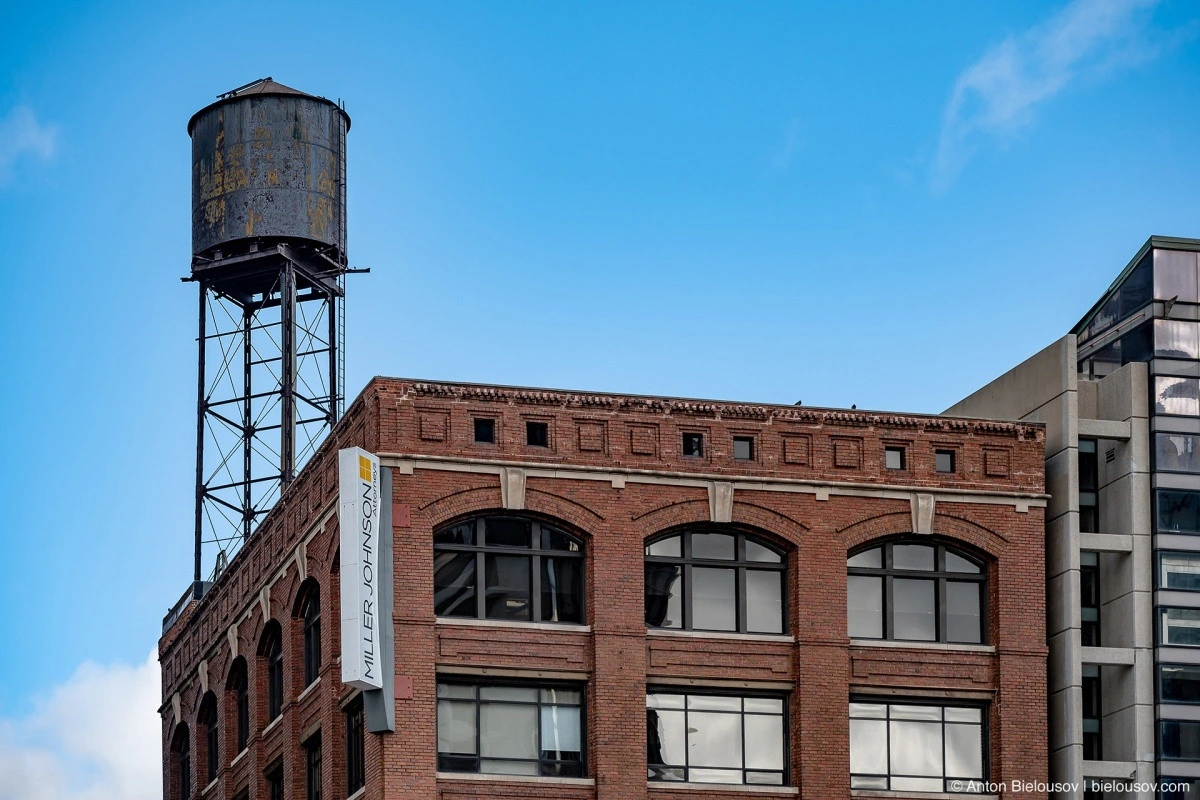
The houses with boarded-up windows strongly resemble photos from my hometown Kharkiv over the past two years. Only Detroit didn’t have a crazy neighbor, nor did it experience any technological disaster. As Ptushkin says, «this is all his own doing.»
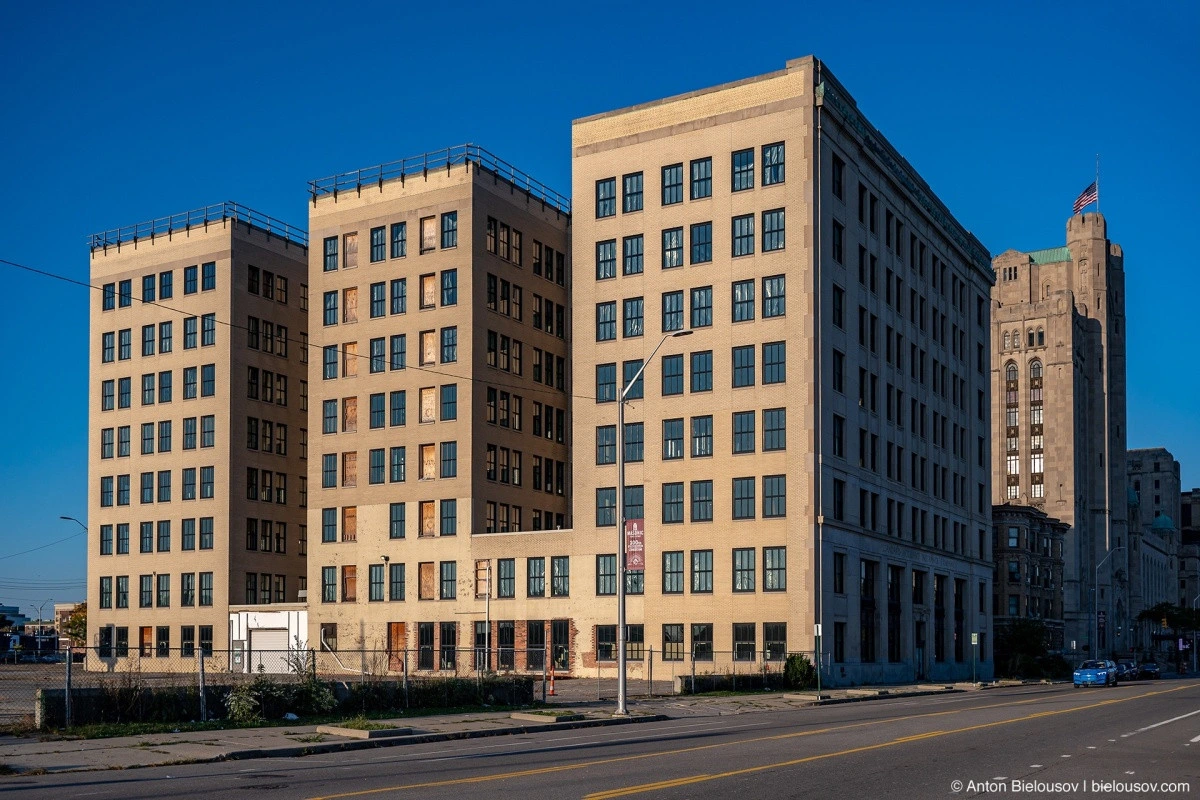
It’s almost inconceivable that half of the skyscrapers in downtown are also empty.
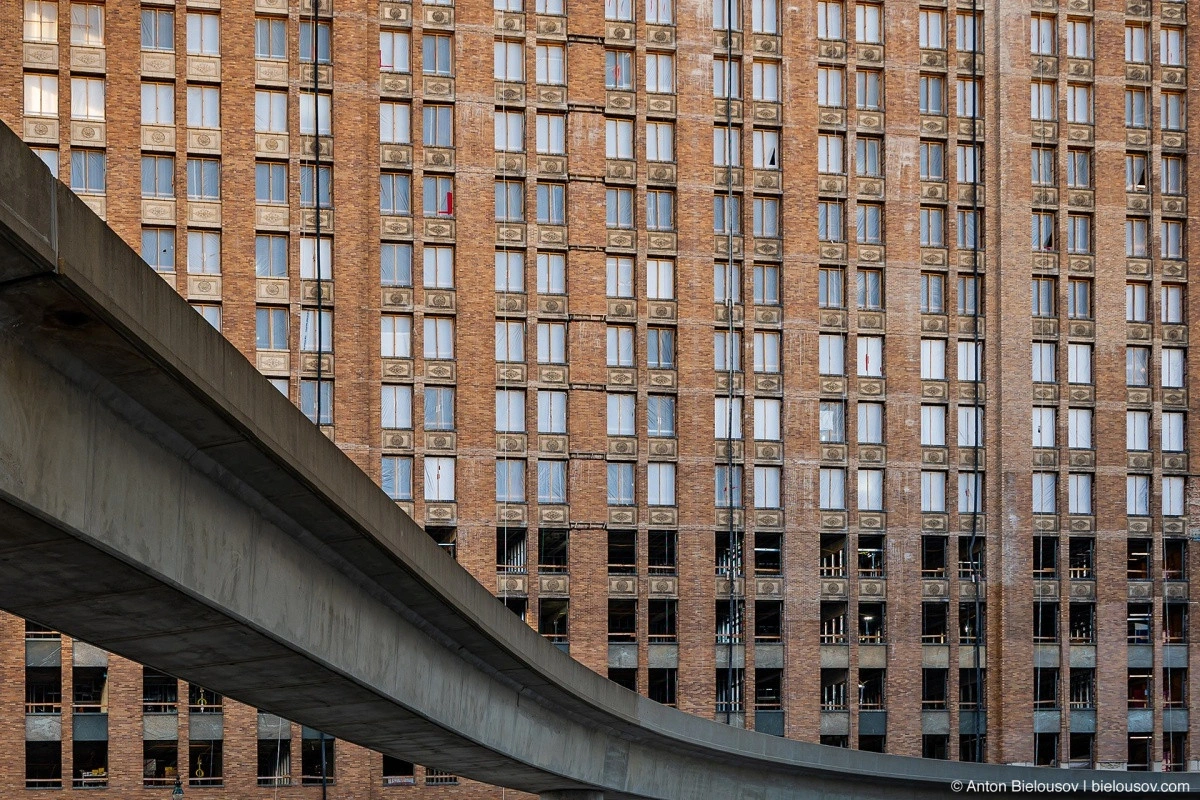
Sometimes the view in the city center resembles a mock-up of New York’s downtown at Universal Studios.
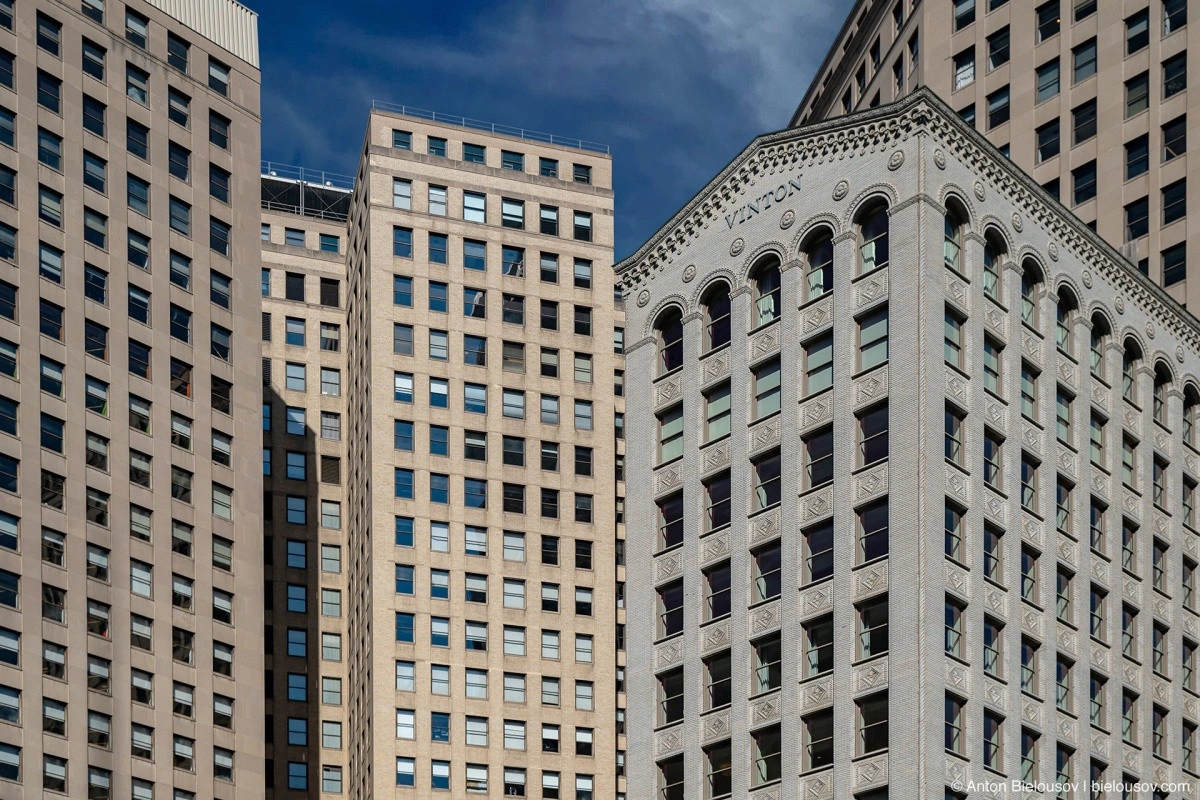
Yet the development here remains quite dense — after all, this used to be the 4th largest city in America!
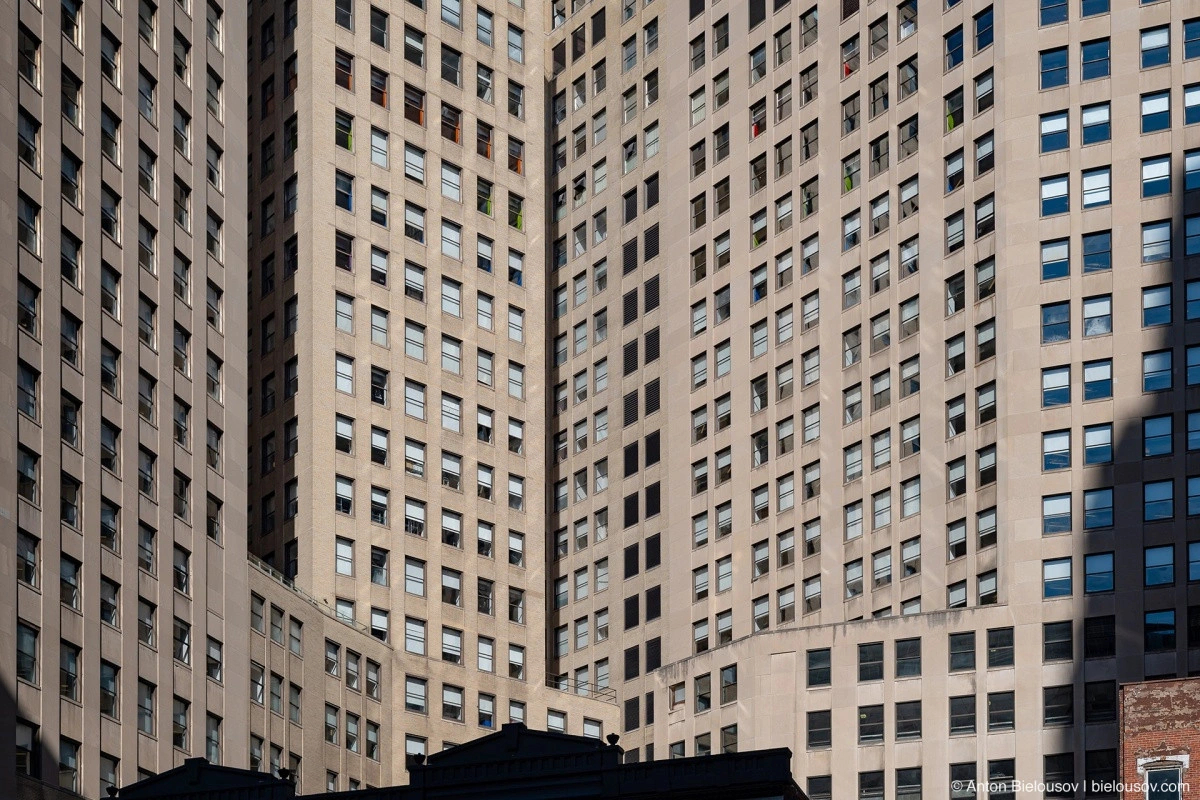
And during the height of the skyscraper boom.
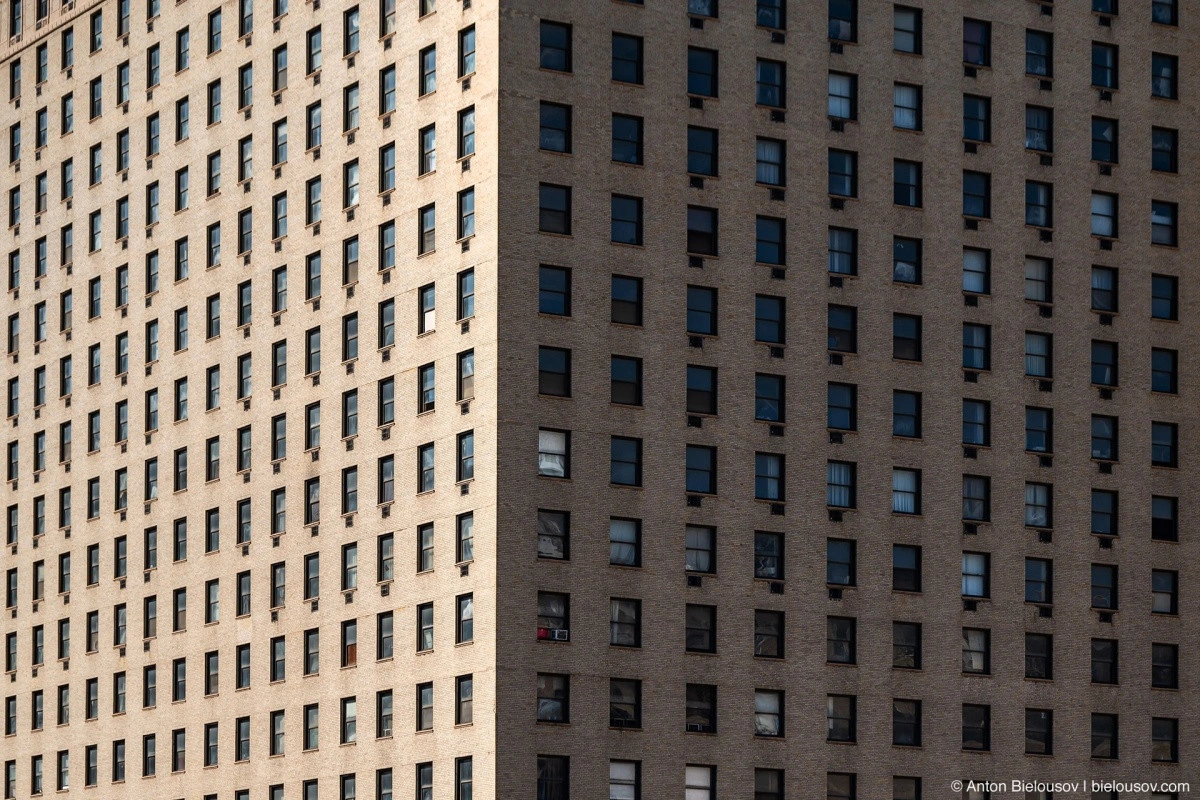
I must admit, many of the skyscrapers built during Detroit’s golden years have truly magnificent architecture!
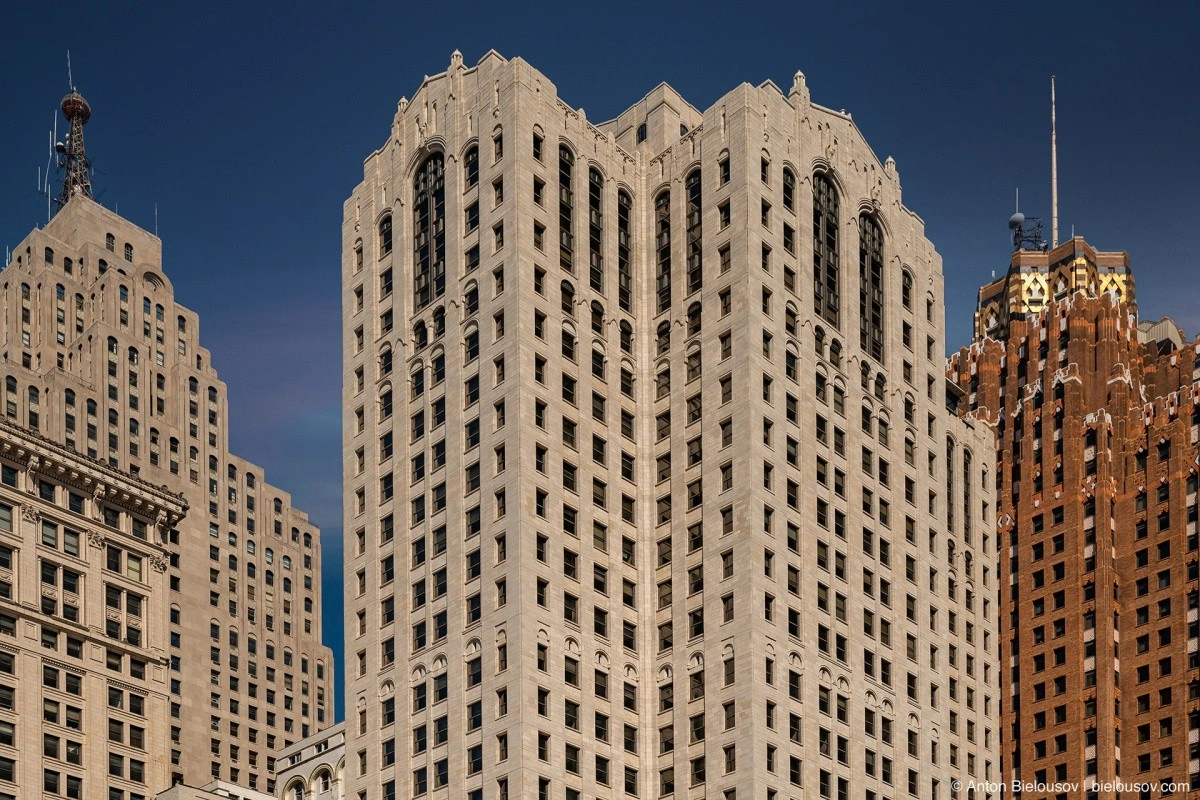
But perhaps the most impressive of all is this one, the brown building.
Guardian Building
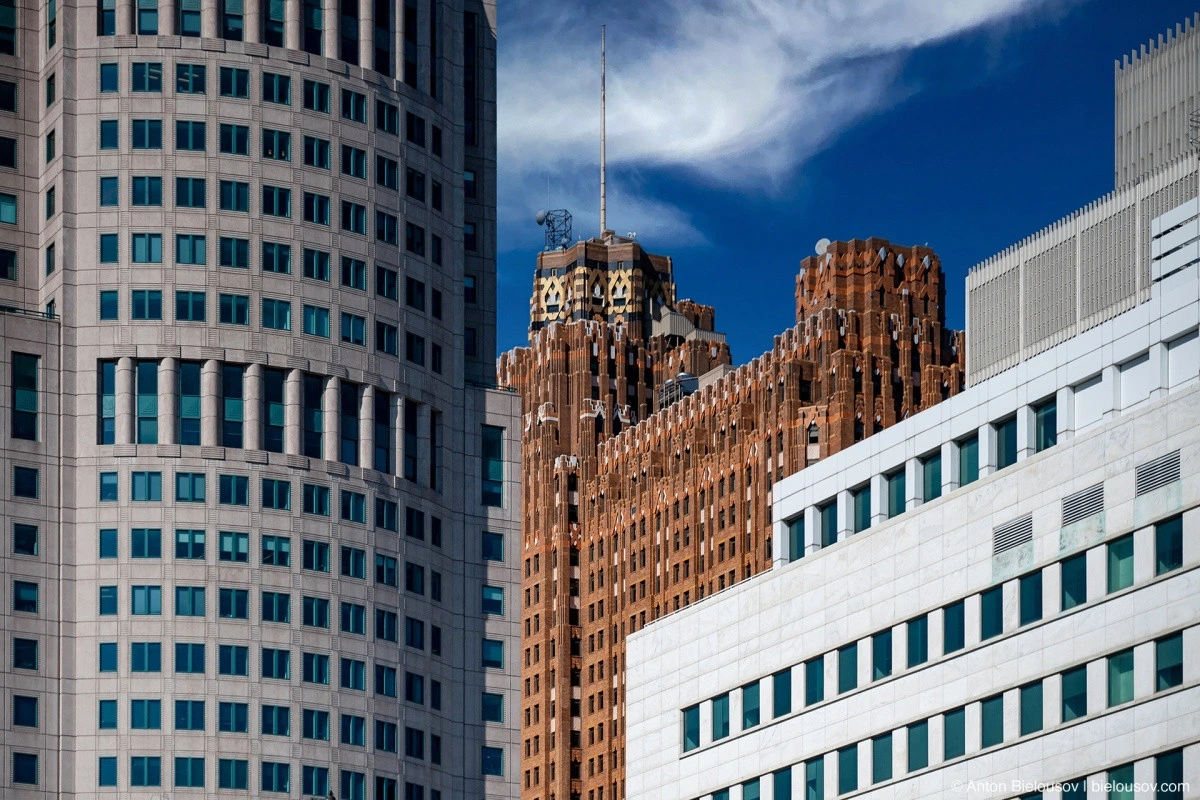
Built in 1928 for Union Trust Bank, today this 150-meter skyscraper is considered one of the most striking examples of Art Deco style and is a national historic landmark.
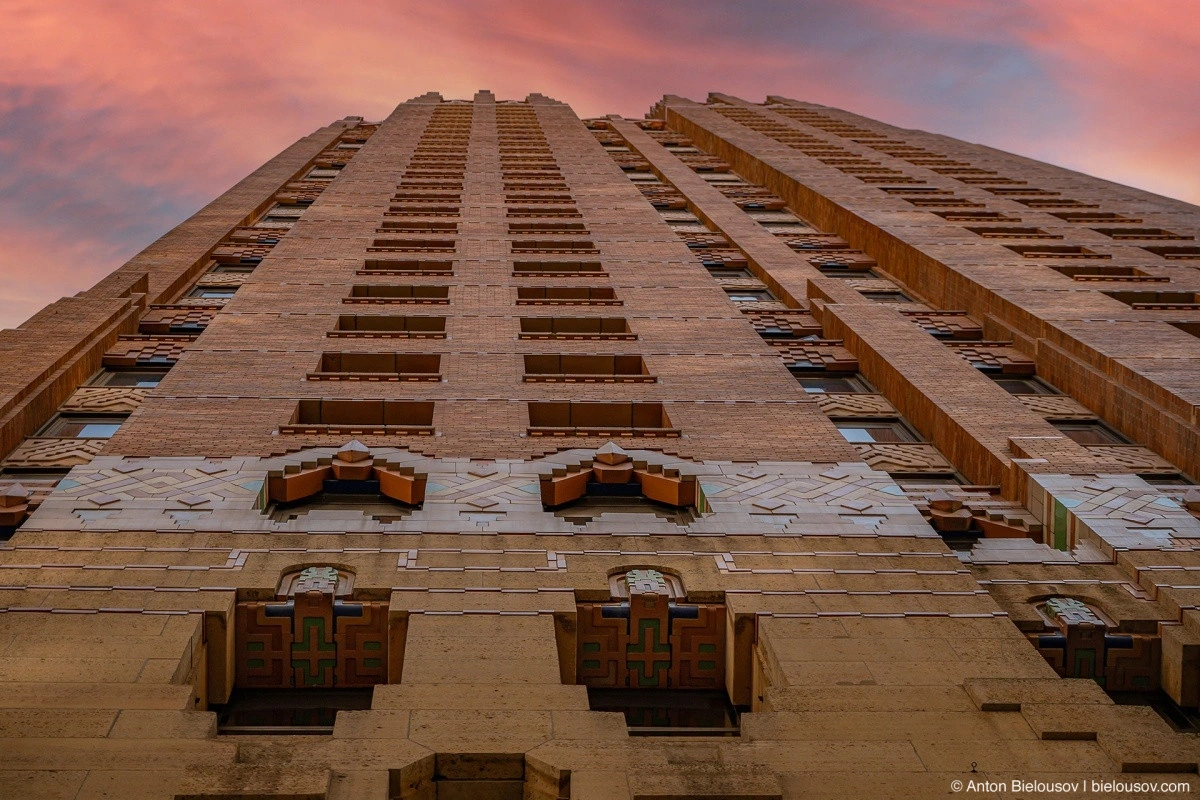
The octagonal and elongated shapes of the building somewhat resemble a cathedral, and it was aptly nicknamed the «Cathedral of Finance.»
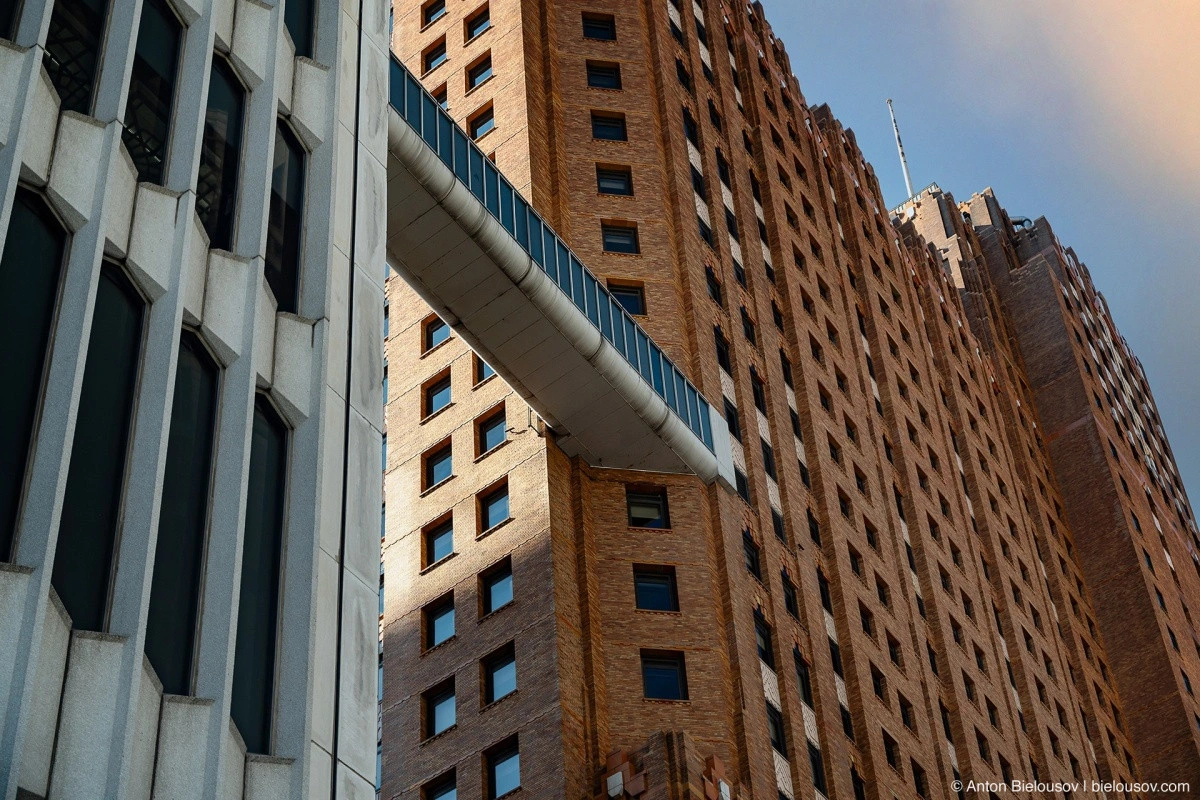
At about the 14th-floor level, it connects to the neighboring skyscraper via a pedestrian walkway — the Detroit Skybridge.
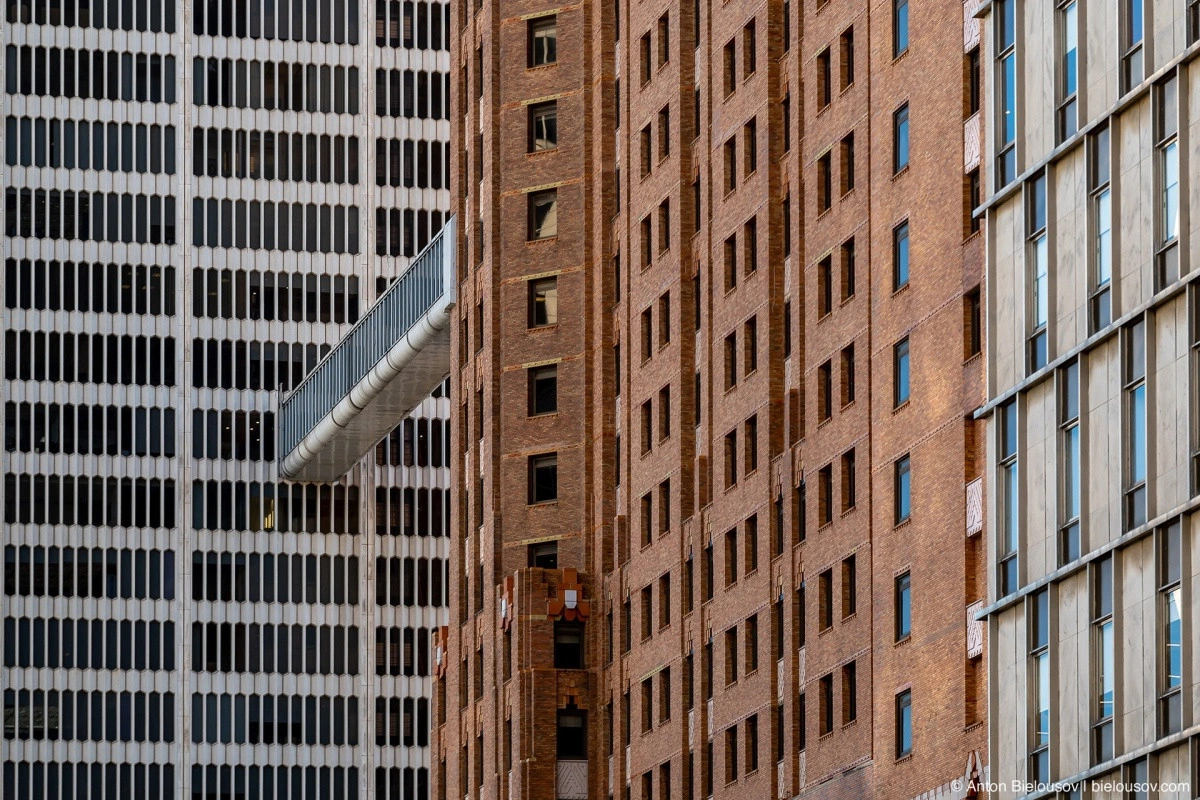
Out of its 40 floors, only a few have been restored and are leased as office spaces or event venues.
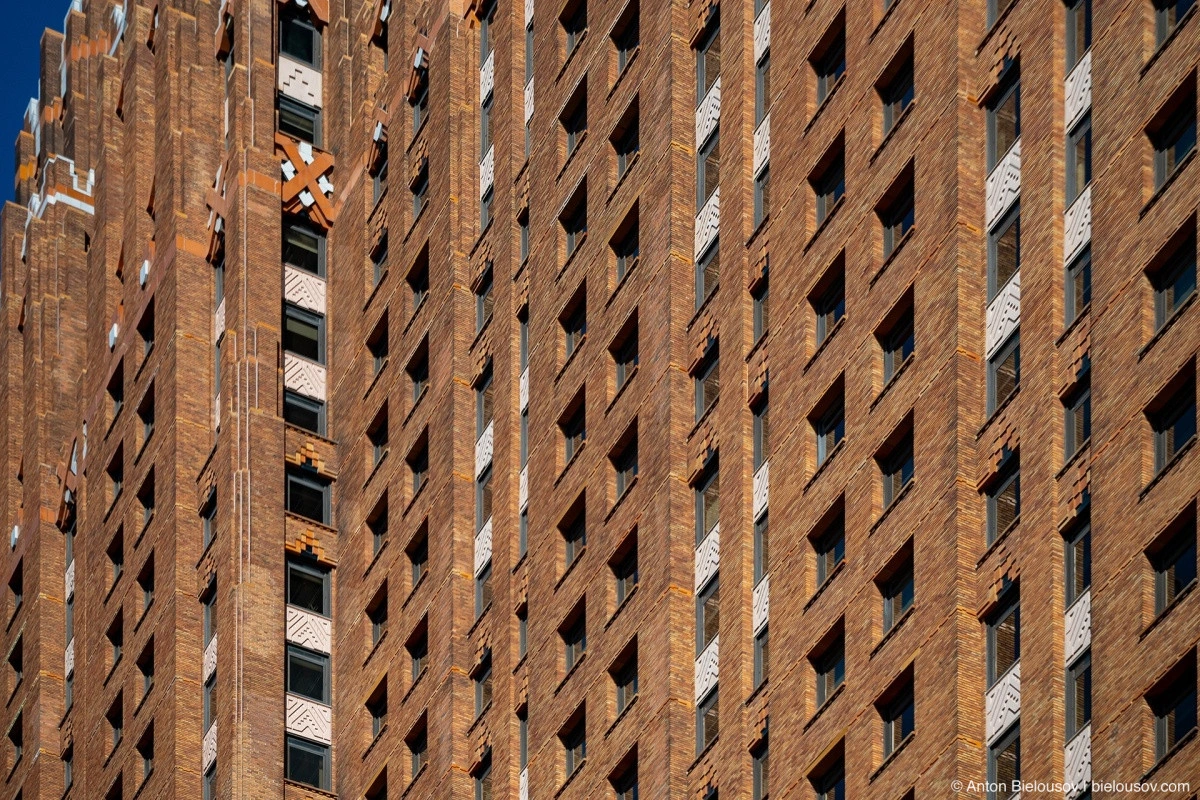
However, the lobby is open to the public; moreover, it houses several small cafes and restaurants.

In fact, that’s how I stumbled upon it, almost by chance, while searching for a cafe with a great view. The grand hall of the old bank has been transformed into a food court.
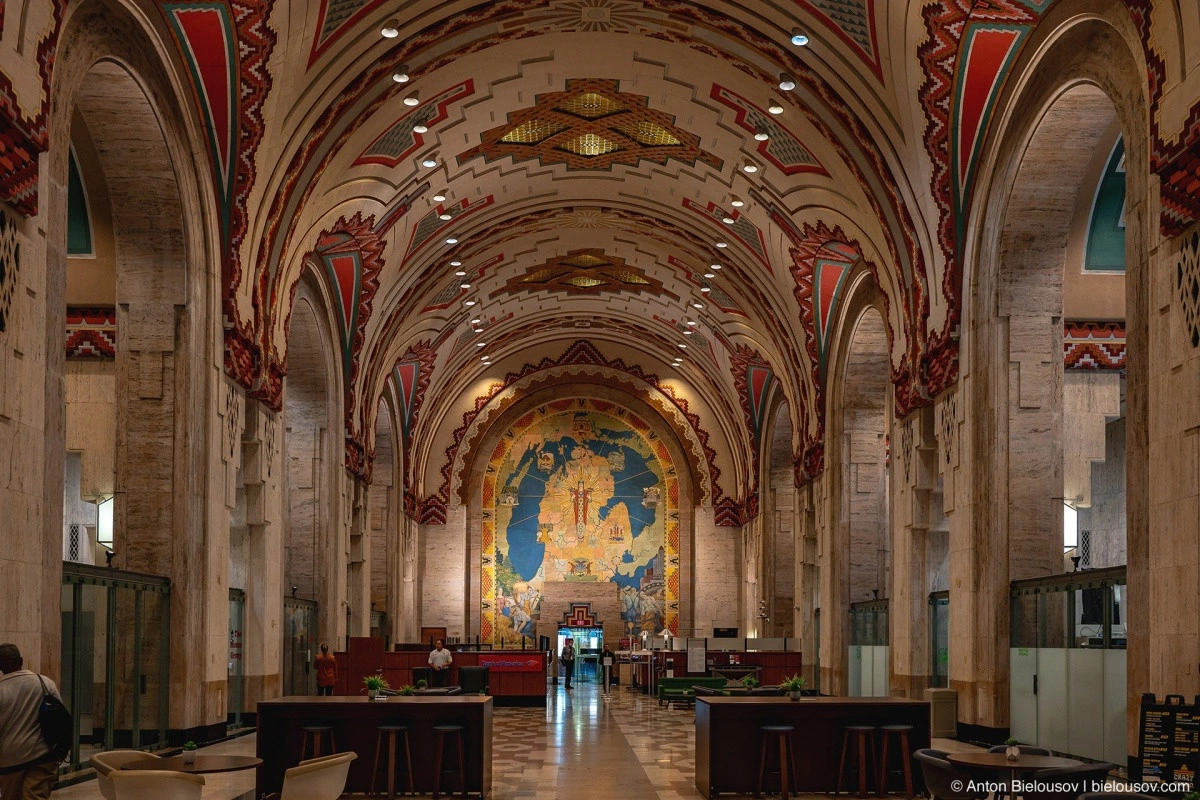
Where cashiers and clerks once worked, you can now buy coffee or tacos (though the options are limited), sit at one of the tables in the center, and admire the truly epic interior with motifs inspired by Native American cultures.
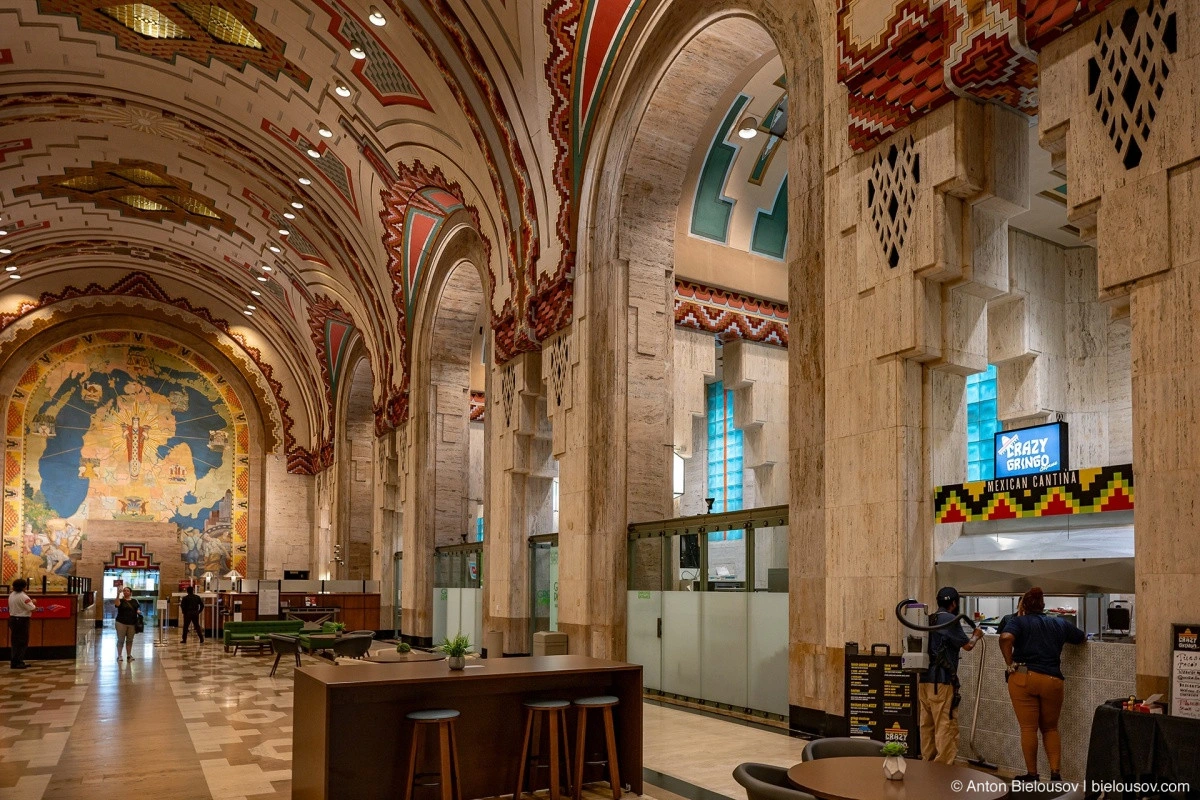
For instance, I spent a long time marveling at the ceiling and the mosaic at the end of the hall. I just didn’t want to leave, even though my coffee and croissant had long been finished.
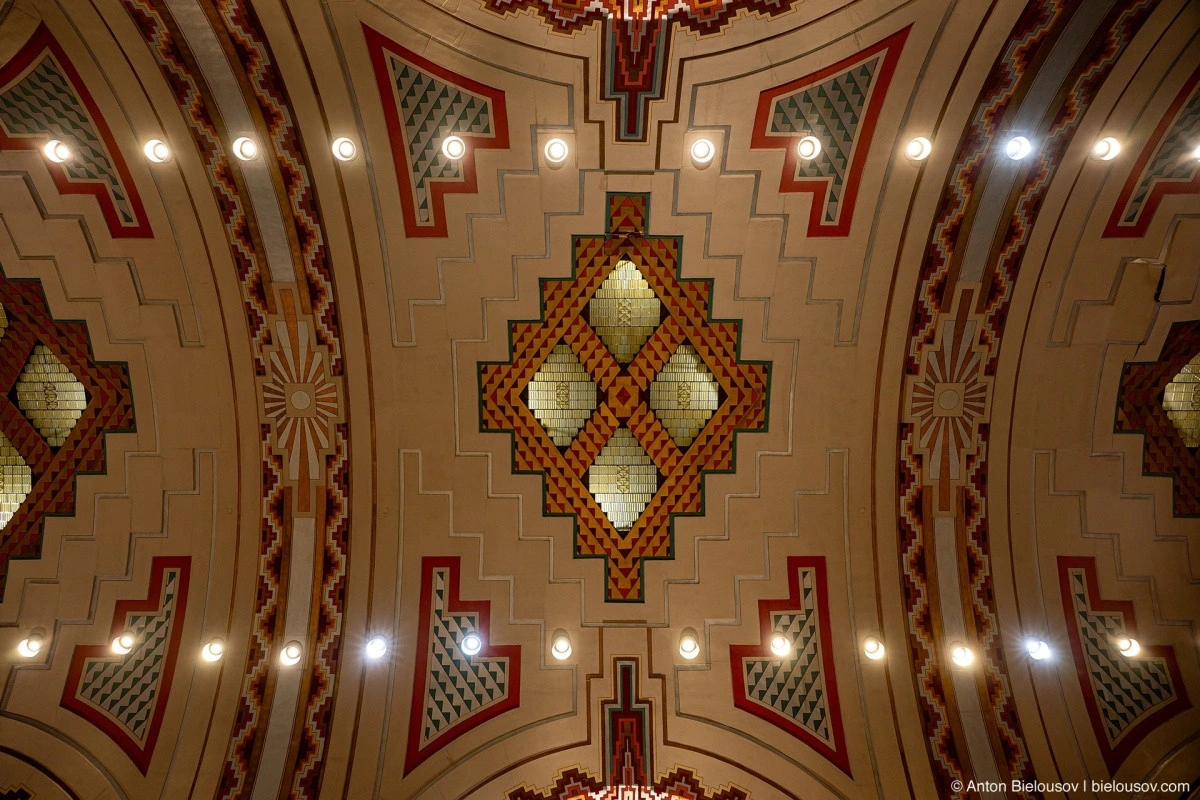
I really wanted to come back, but on Sunday I couldn’t get in — the whole hall was rented out for a wedding, so I can say I was lucky to have gotten in at all. By the way, scenes from «Batman v Superman» and 4 «Transformers» movies (Age of Extinction) were filmed here.
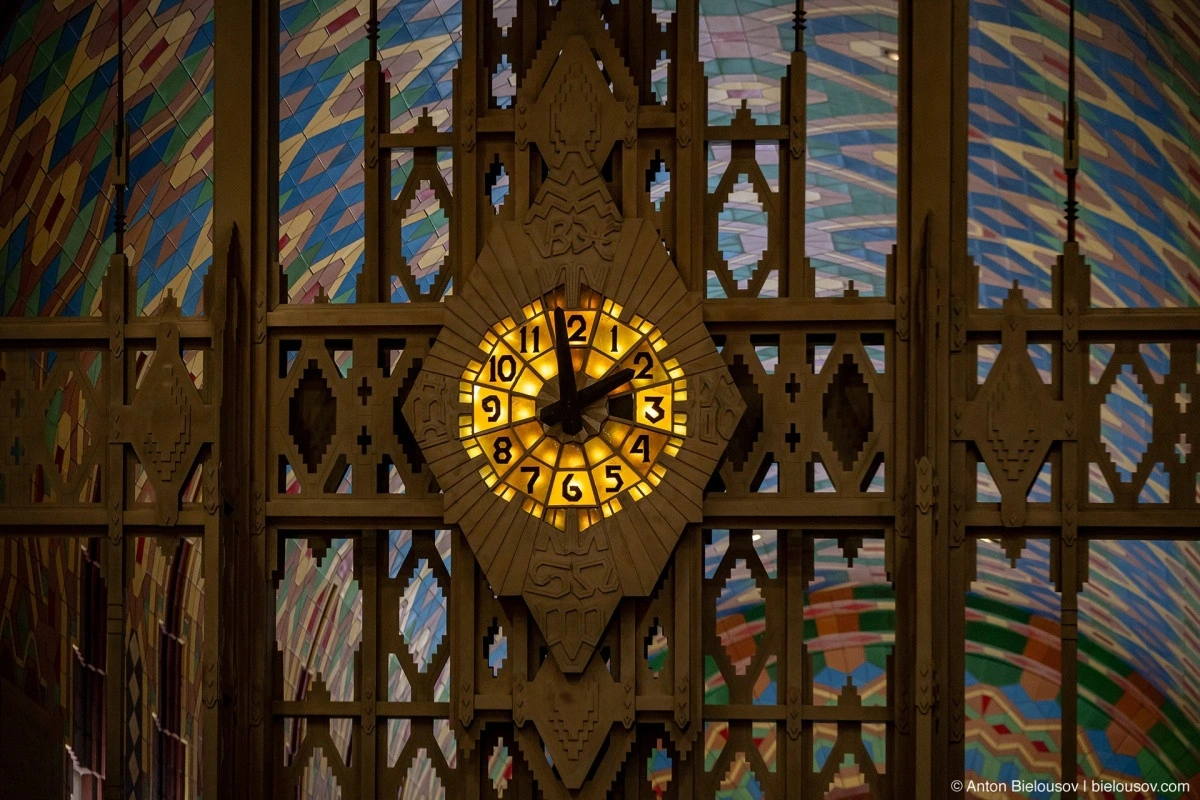
On the outskirts of downtown, there’s another stunning Art Deco building with a retro-futuristic design — the MGM hotel and casino. Or rather, styled as such, since the building was constructed in 2007.
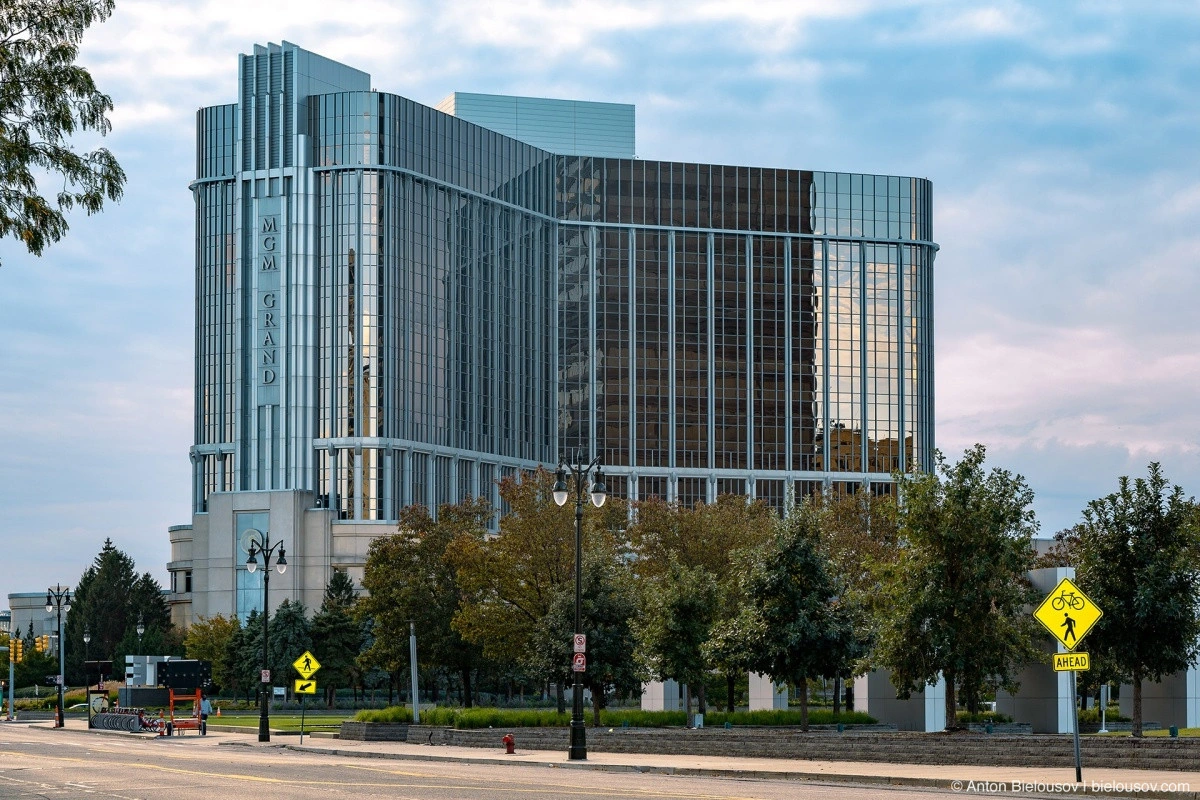
The historic Wayne County Building from 1903 resembles an opera house. Compare it, for instance, with Alaska’s Capitol…
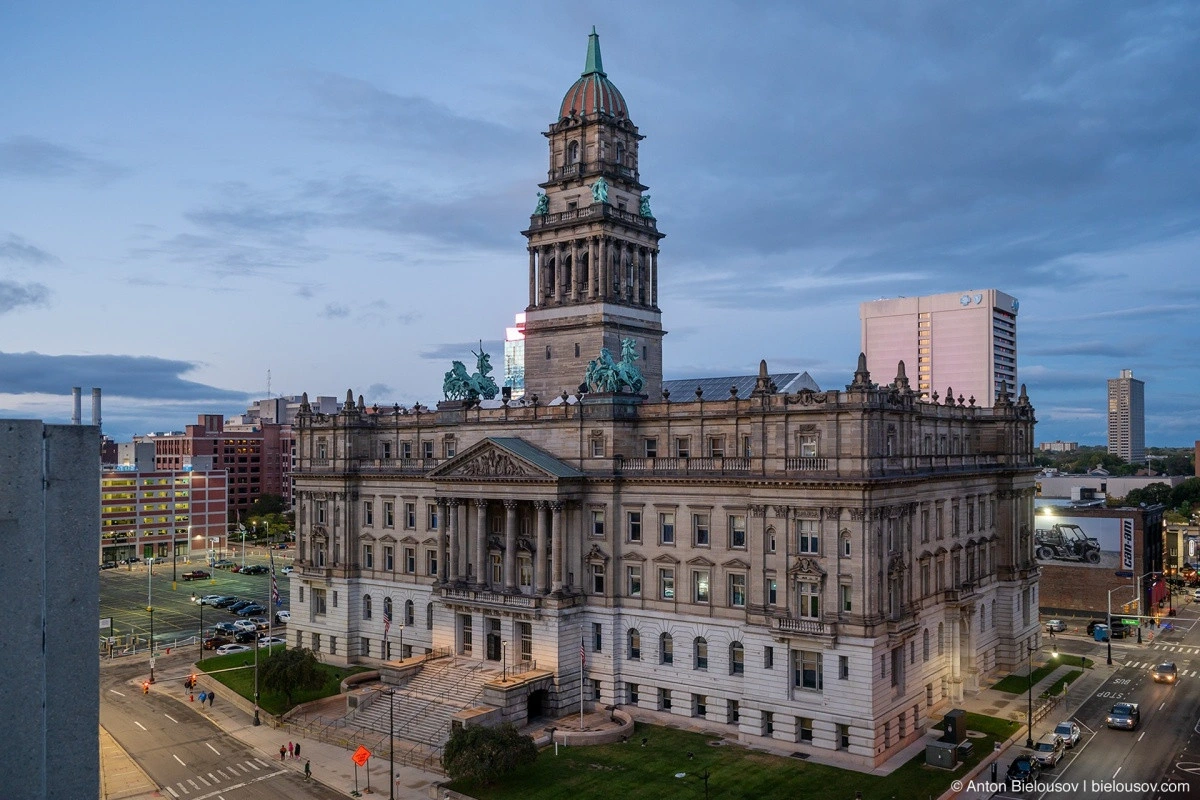
Grand Masonic Temple
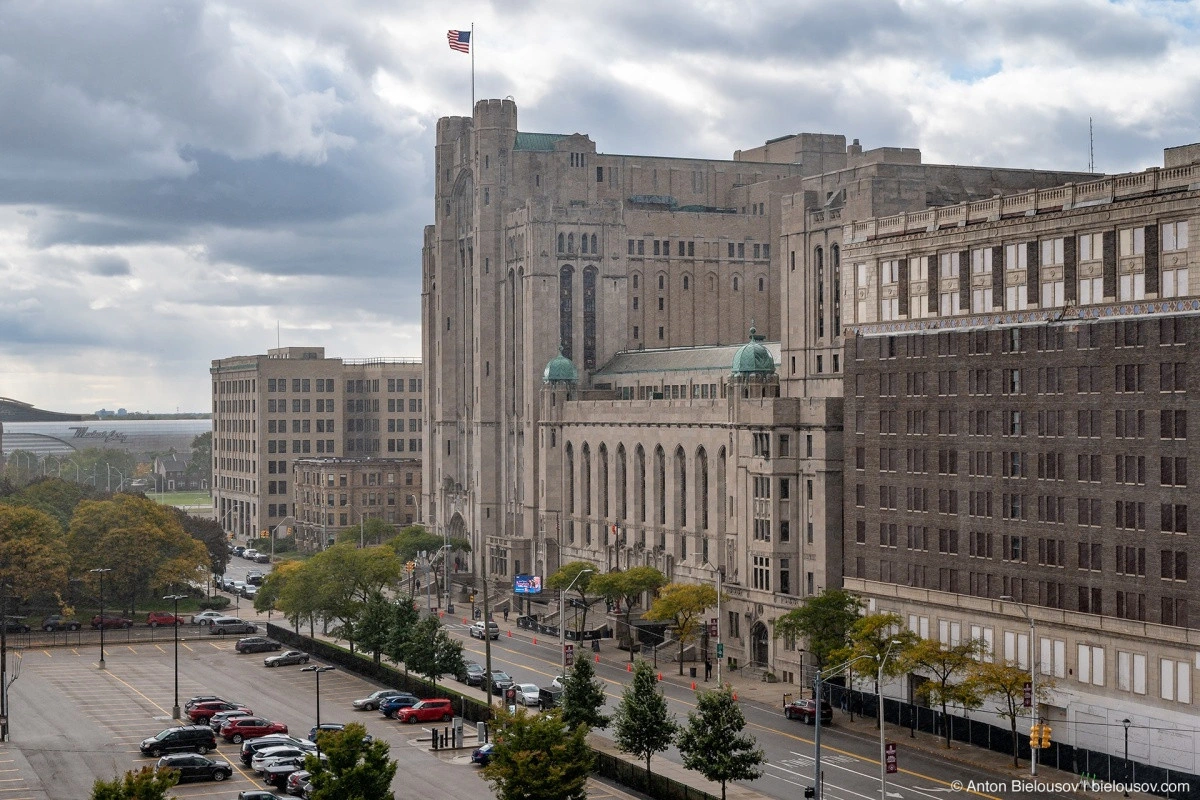
Detroit is also home to the largest temple of Freemasons, aptly called the «Grand Masonic Temple.»
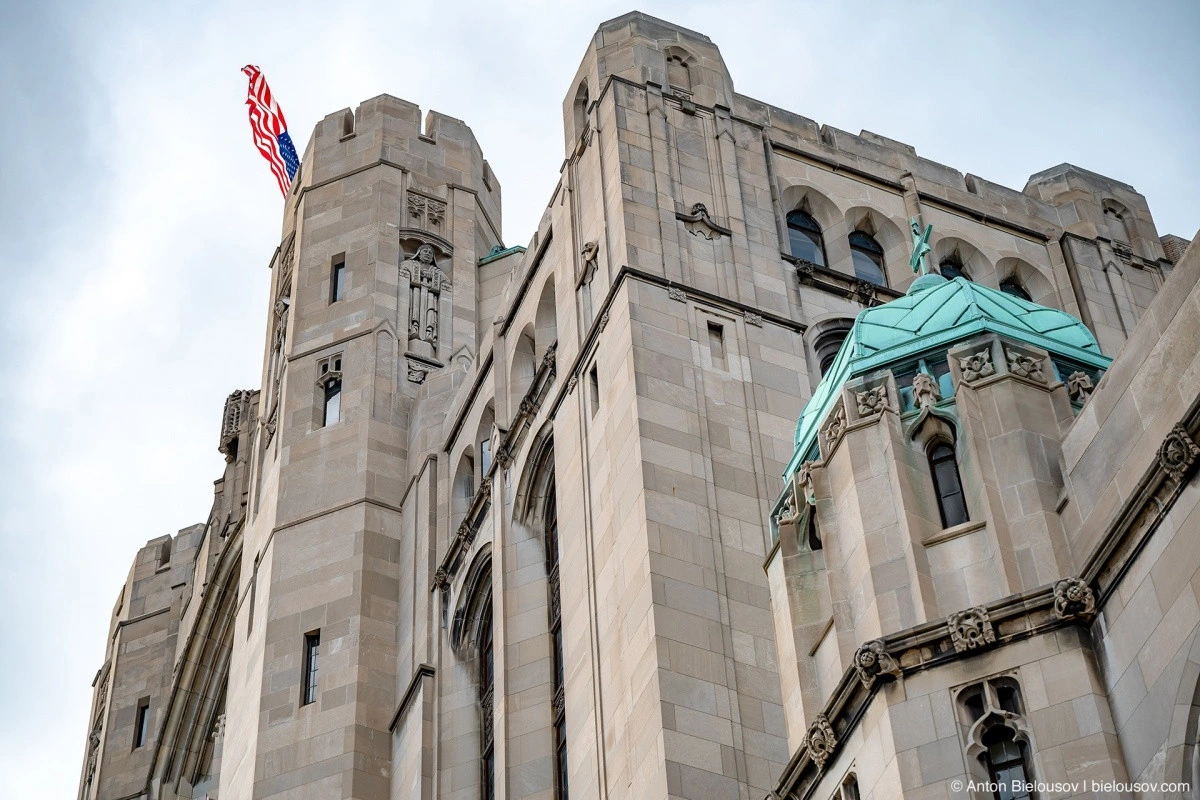
Founded in 1922 and completed in 1926, this neo-Gothic temple is adorned with Templar imagery, mystical elements, and symbols that hold deep significance in Masonic tradition.

For example, here’s a whole array — a guiding star, the letter G, and a Masonic calendar date (A.L, Anno Lucis — Latin for «Year of Light»).
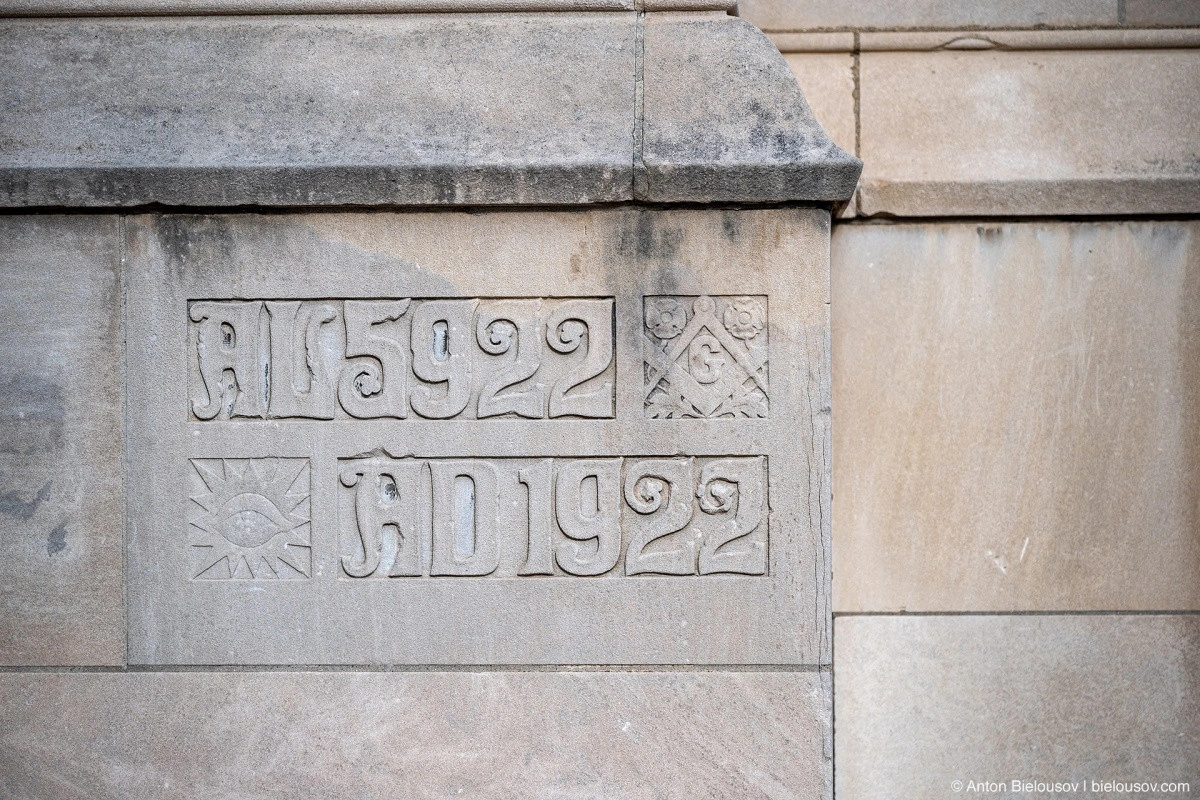
But from the back, the temple honestly looks like… some kind of prison.
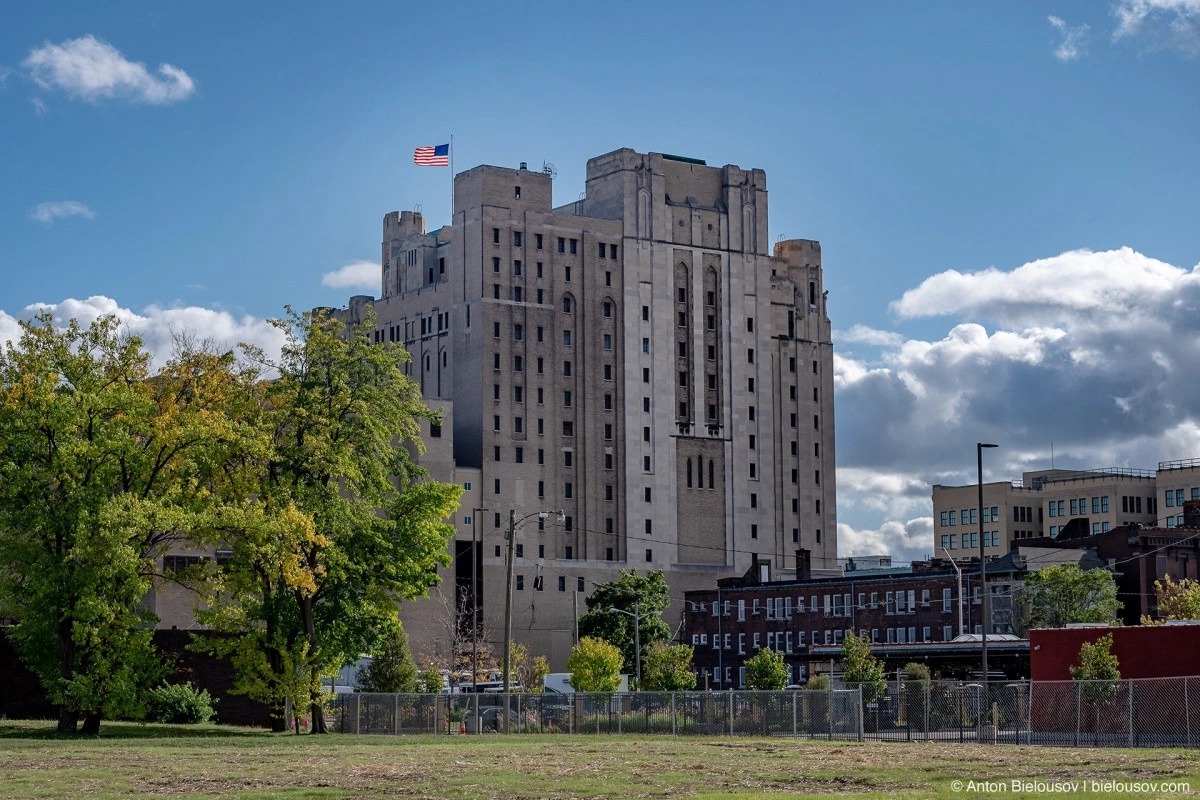
In general, I didn’t get inside either, and for the same reason — it was a weekend, and several events were being held inside. Not Masonic events, no, just that entry on that day was ticketed only.
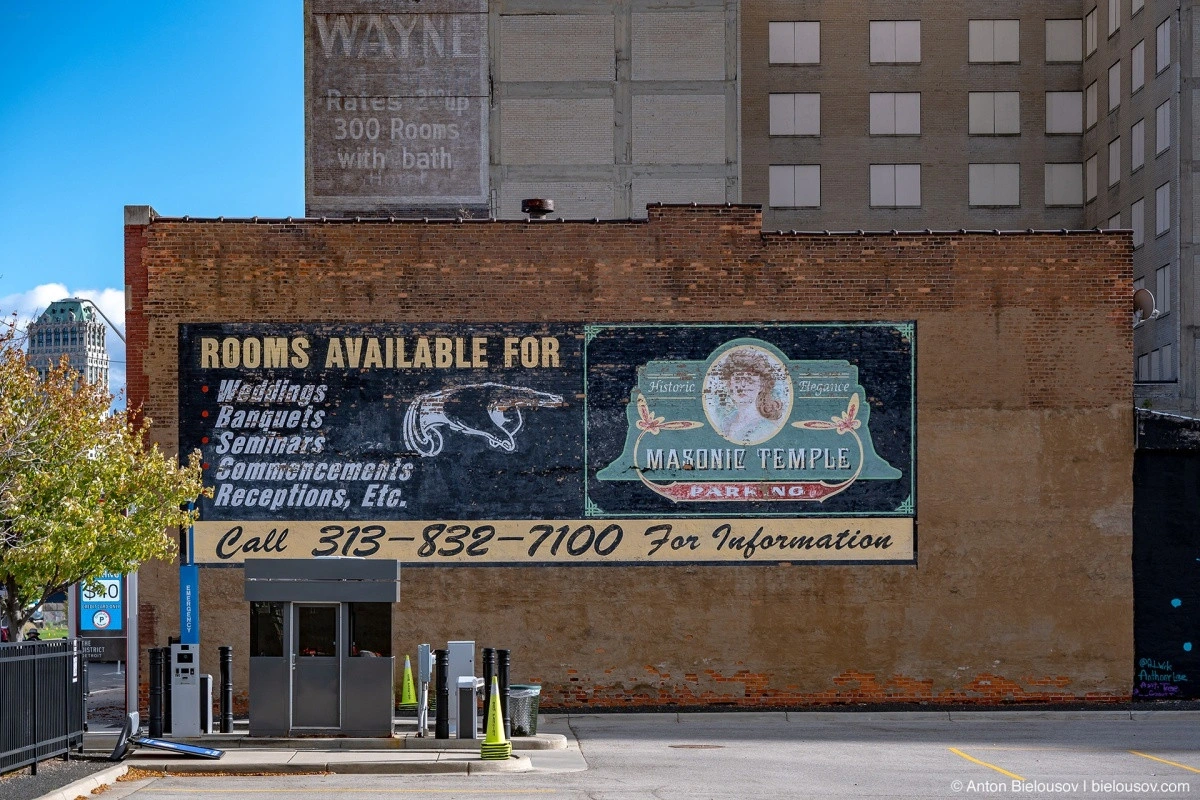
However, I wasn’t too upset here — judging by the photos, the interior seems relatively simple. For instance, the Basilica of Sainte Anne de Detroit is far more intriguing in this respect.
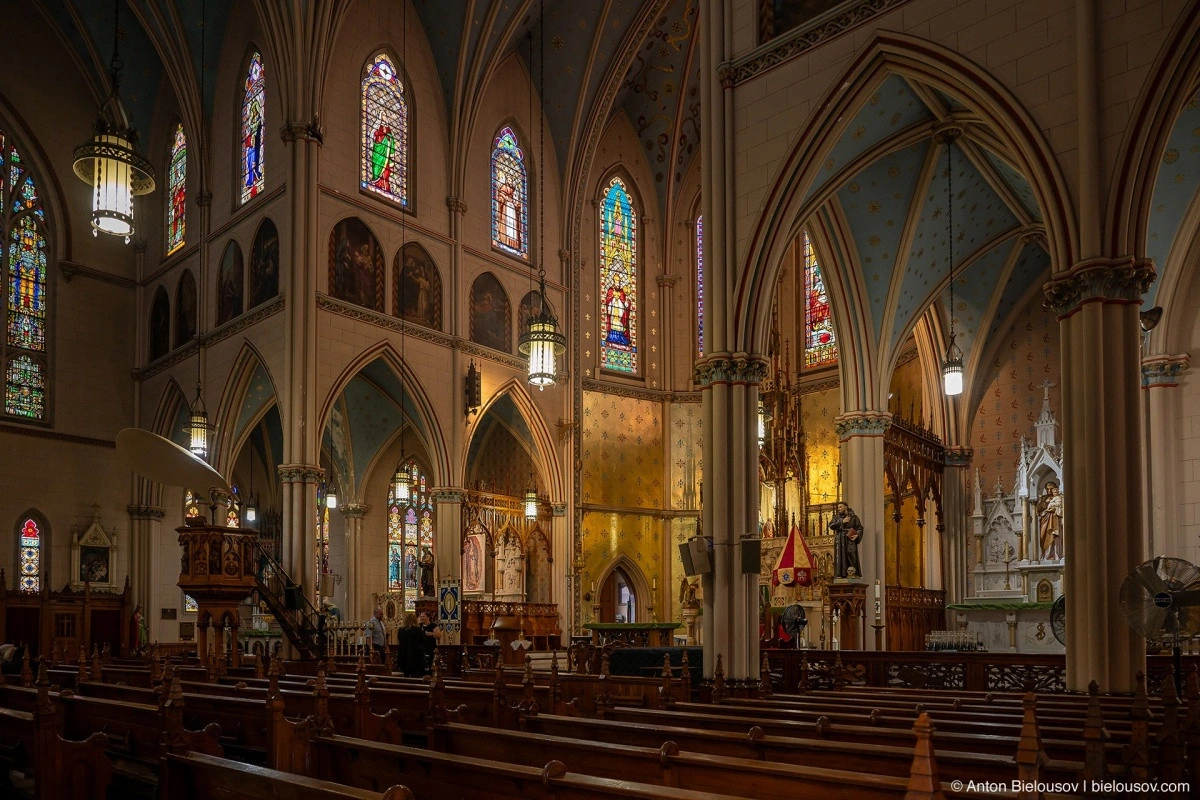
Michigan Central
One of Detroit’s most famous historical buildings is the Michigan Central Station.

In the late 90s, criminal gangs settled in the station building, a fact that became known when the Top Gear car show filmed here in 1997, and at one point, Jeremy Clarkson found himself staring down the barrel of a gun: “It’s a long, complicated story but we were trying to do some filming and some people thought we were trespassing on their turf. It was pretty nasty. And this time, 100 yards from where that happened, I was having dumplings in a goose broth.” — Jeremy Clarkson [The Drive]
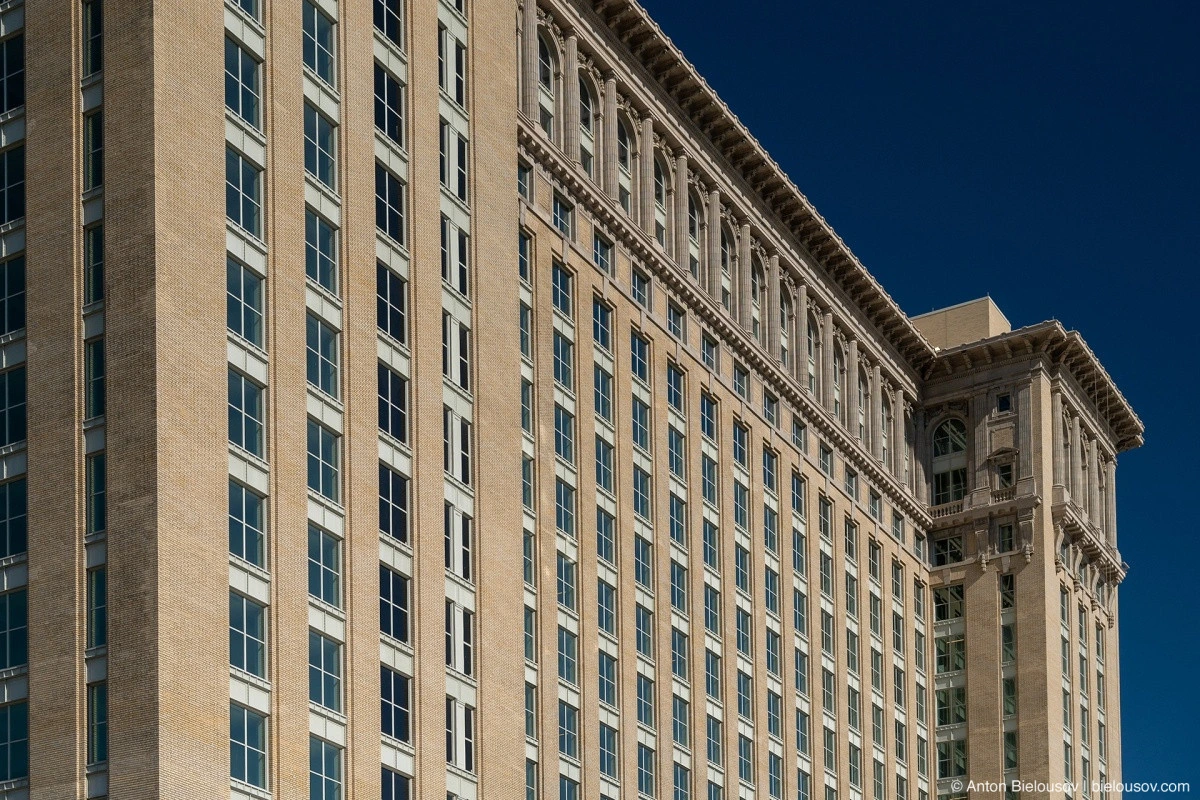
Previously, it was possible to enter the station building, and soon it will reopen its doors to the public, but for now, active finishing works are ongoing. In the summer of 2024, a grand reopening was held with celebrities, concerts, and fireworks.
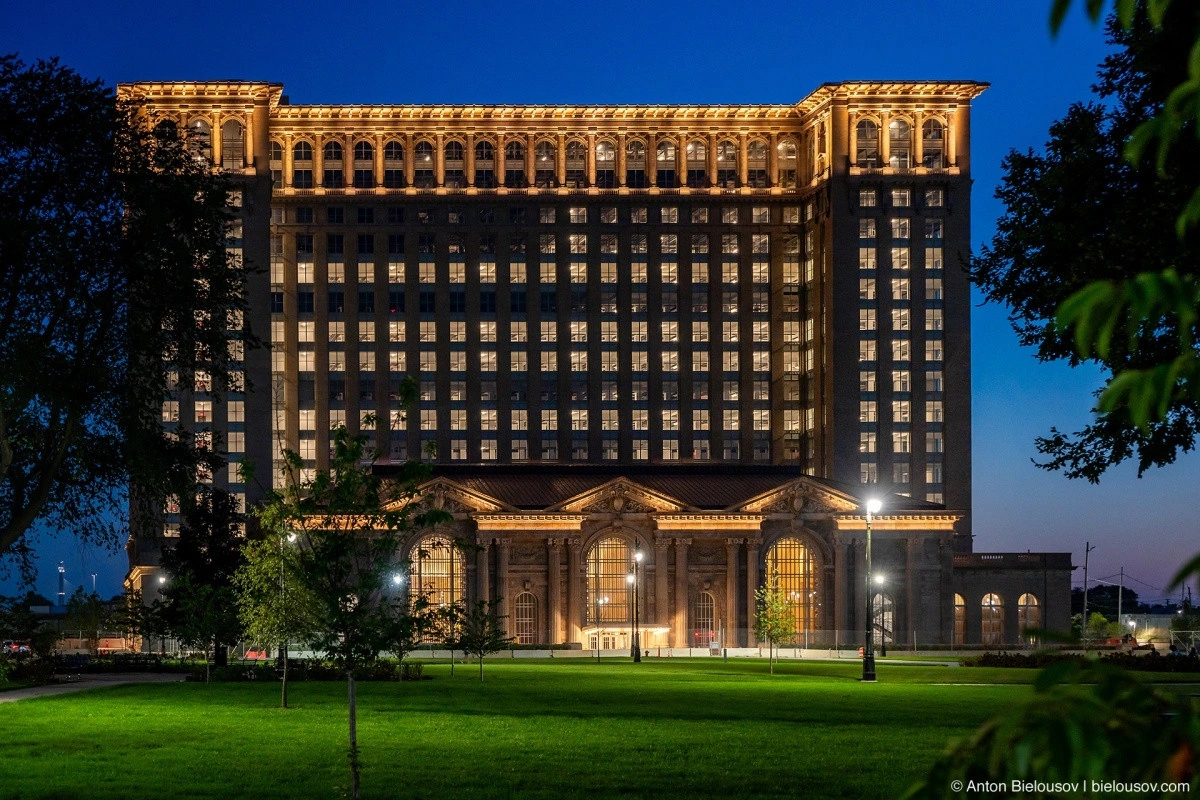
$740 million was allocated for the restoration of this historic building and the transportation infrastructure!
The approach to the project more closely resembles an archaeological one rather than an architectural one — $4 million was spent on restoring the ceiling cladding, where each tile was marked to ensure it was returned to its original place after restoration.
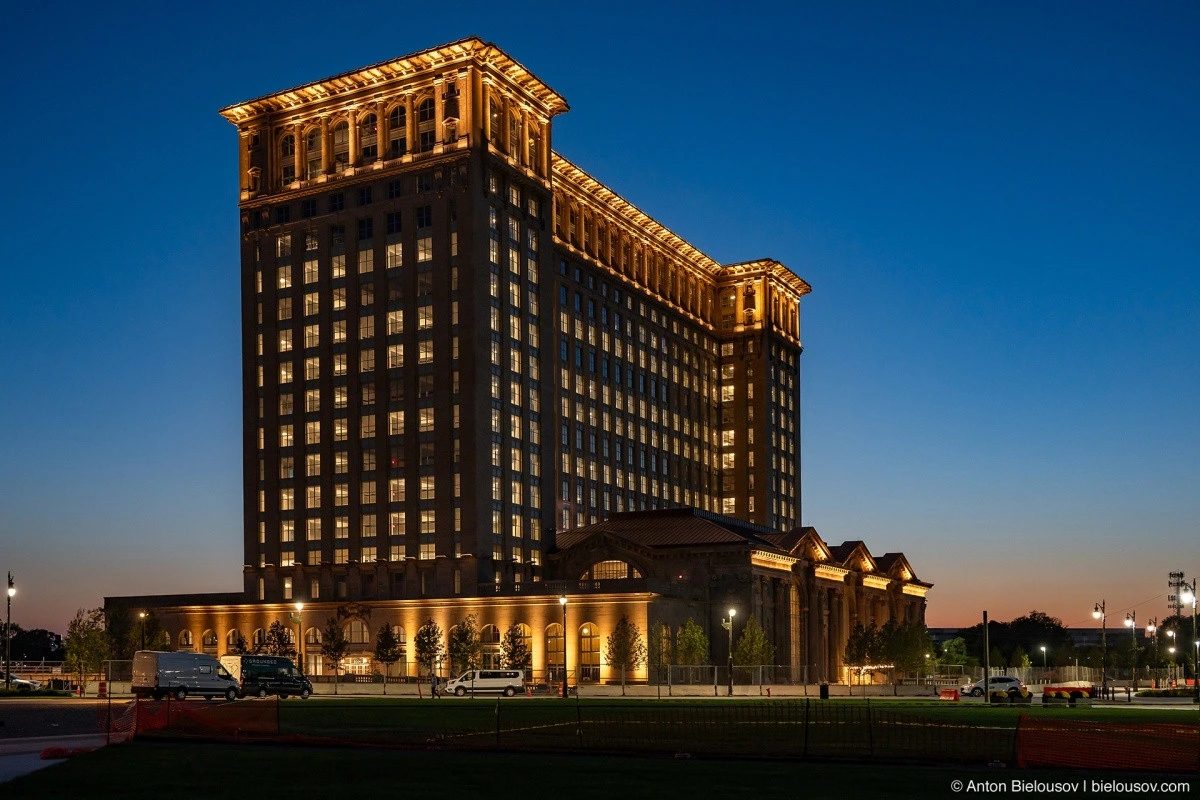
In front of the station building, a park has been laid out, with benches designed as swings. You can also find similar ones on the city’s main street.

The work has been ongoing for the seventh year, and in my amateur opinion, the end is near.
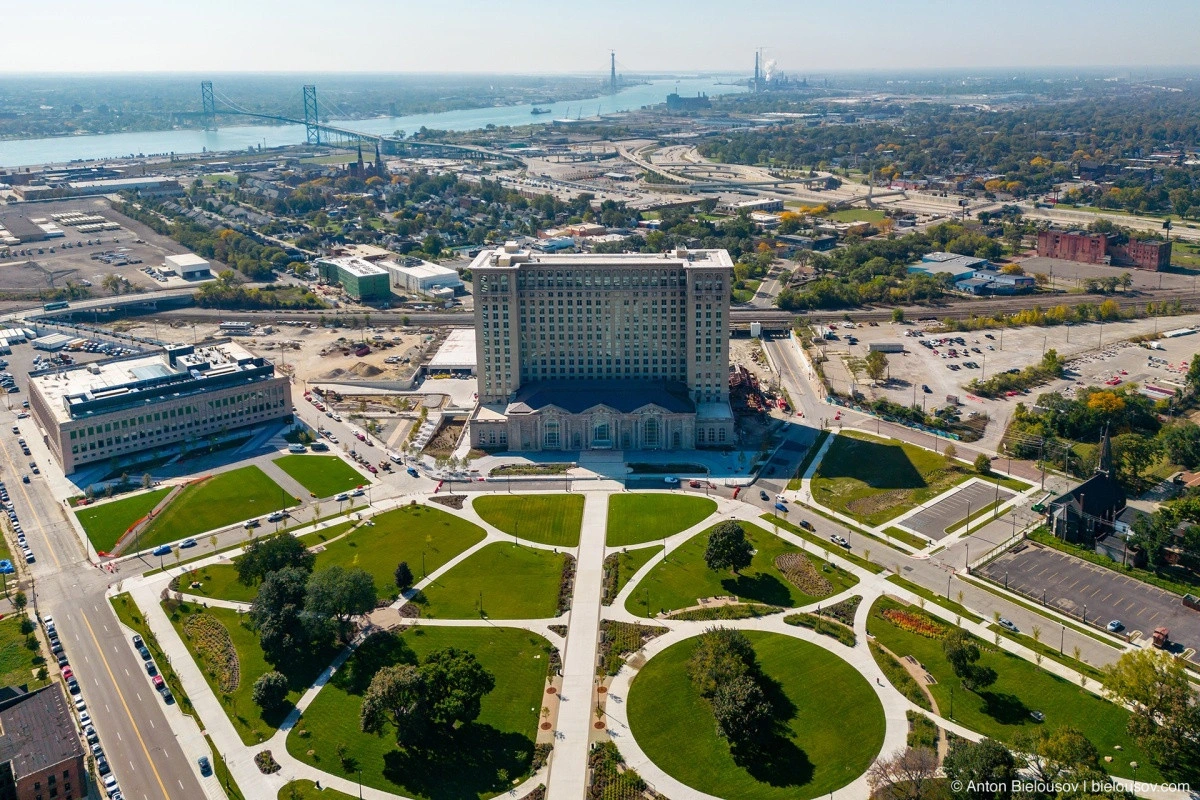
Thanks to significant investments in the transportation hub, businesses are gradually returning to Michigan Avenue. There is a prevailing opinion in the city that this area will soon begin to develop rapidly, and those who have secured a spot here won’t regret it.
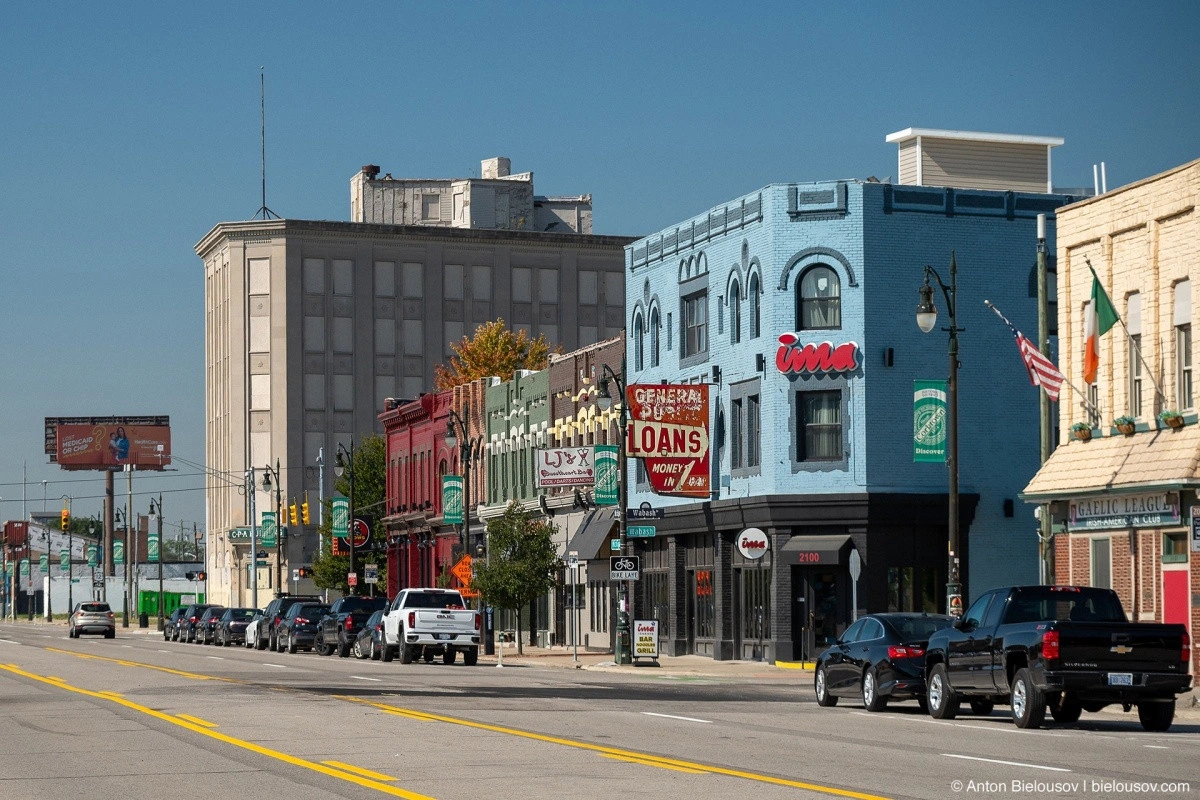
Apparently, even divine presence has returned here. «Believe on…» — I’ve never encountered such an expression before, but as it turns out, it’s used only in an archaic and religious context.
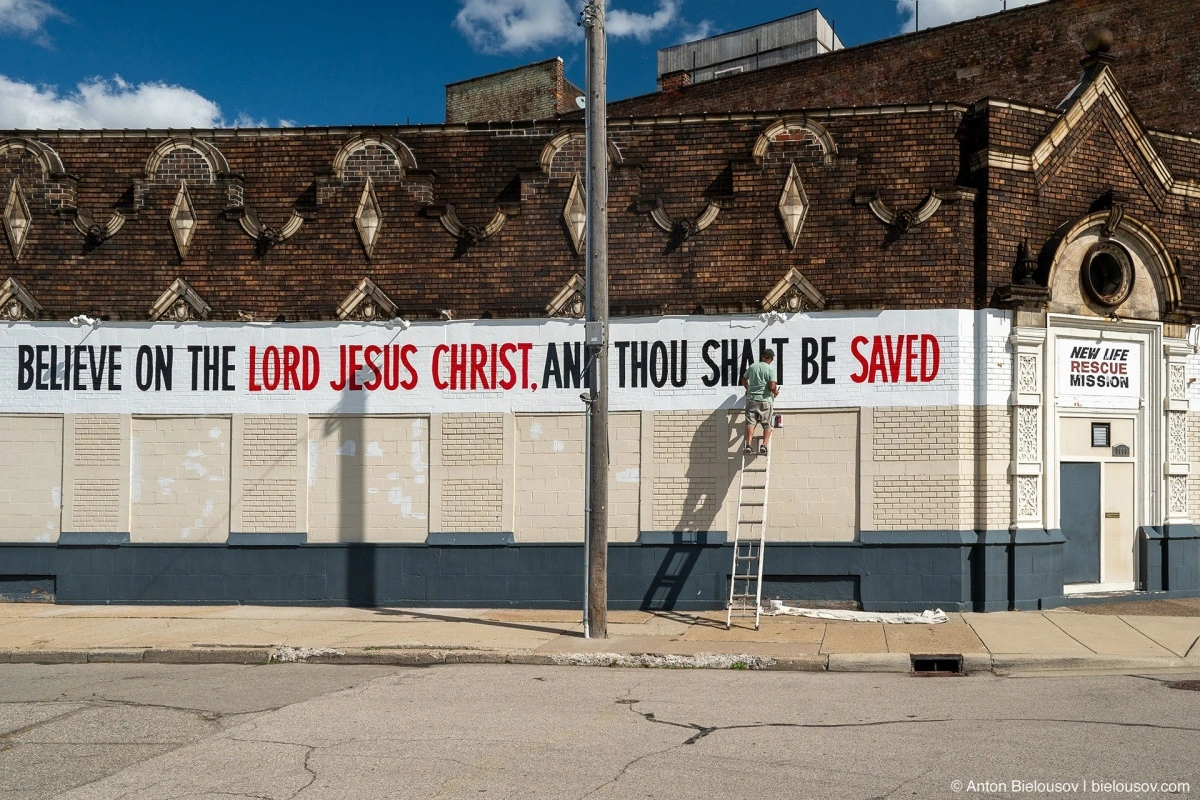
The revival of Detroit began a few years ago, shortly before the pandemic — and it started in the city center.

Woodward Avenue — the main street, the same one where Ford drove his first prototype and opened his first workshop — is now almost fully restored. It’s clean, moderately green, and all the building facades have been updated.
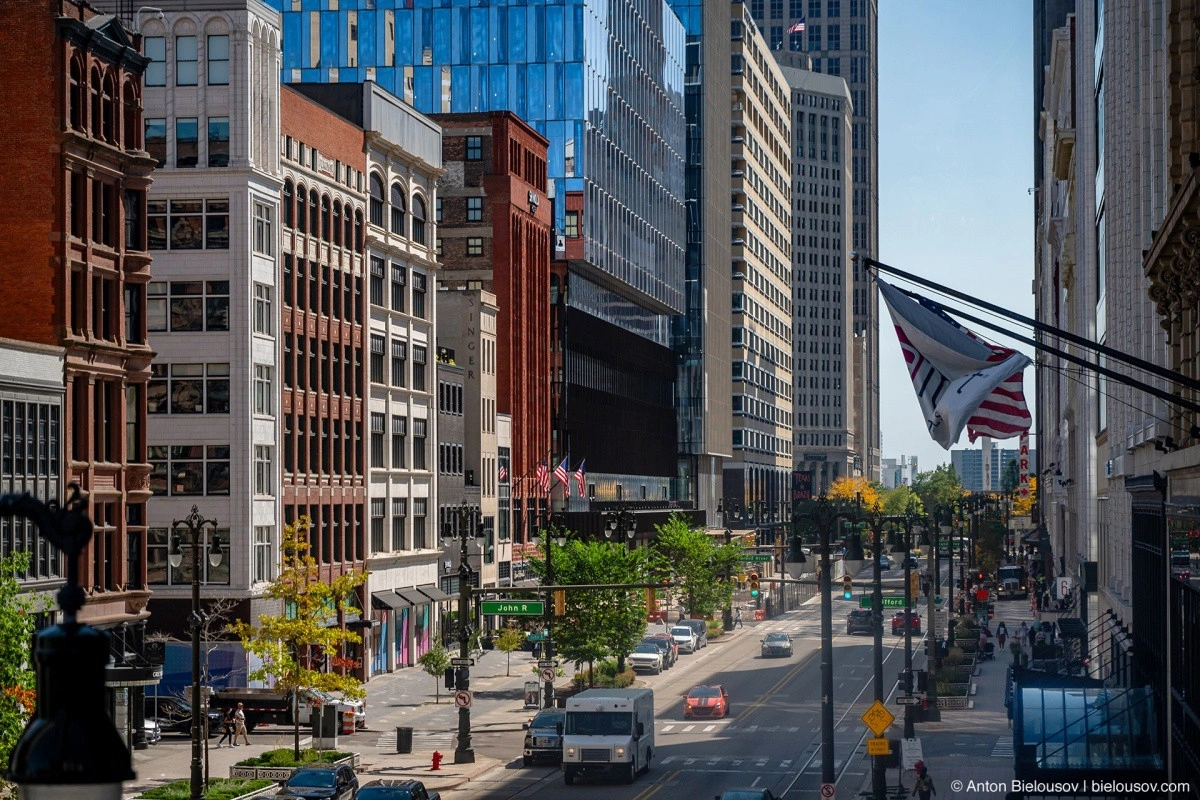
In the Greektown neighborhood (easy to recognize by the flags), the majority of the city’s restaurants are concentrated.

If I may use the overused epithet «hipster,» Detroit could probably outshine both Seattle and Portland.

Take, for instance, the alleys between skyscrapers, turned into pedestrian streets!
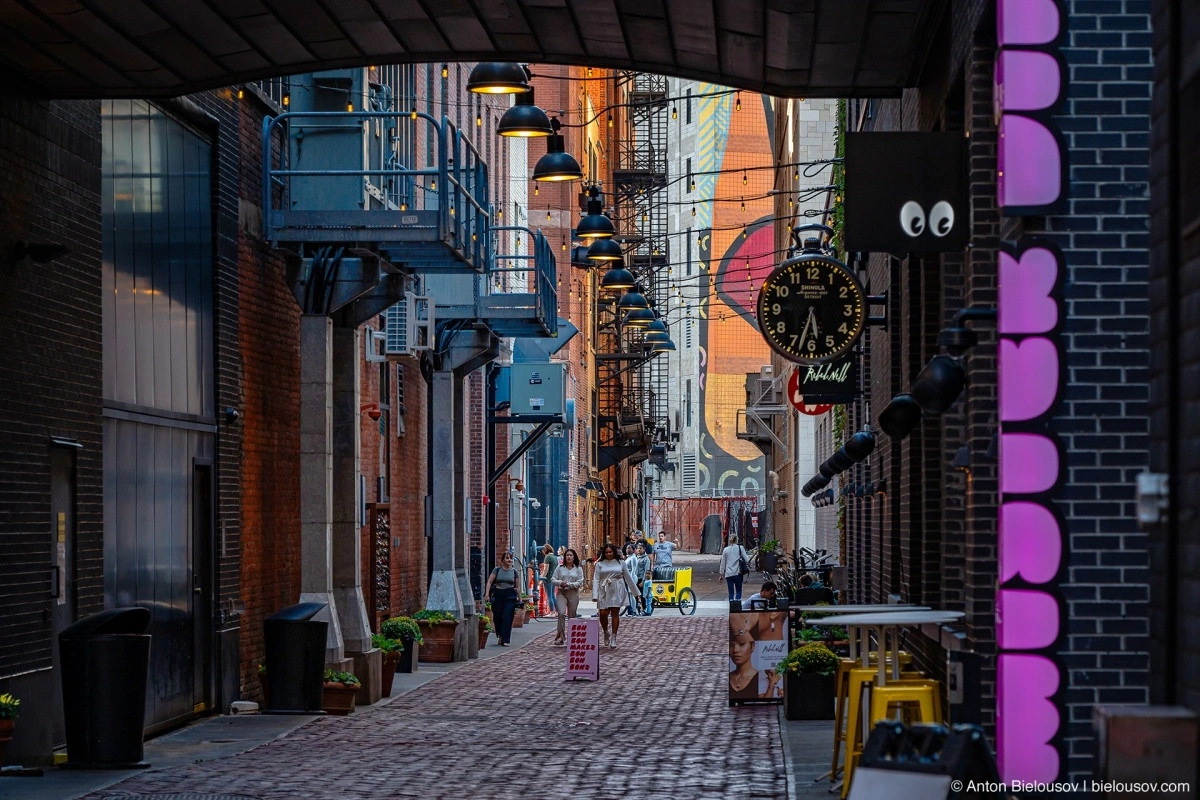
Even those used solely for garbage disposal are, for the most part, at least not messy.
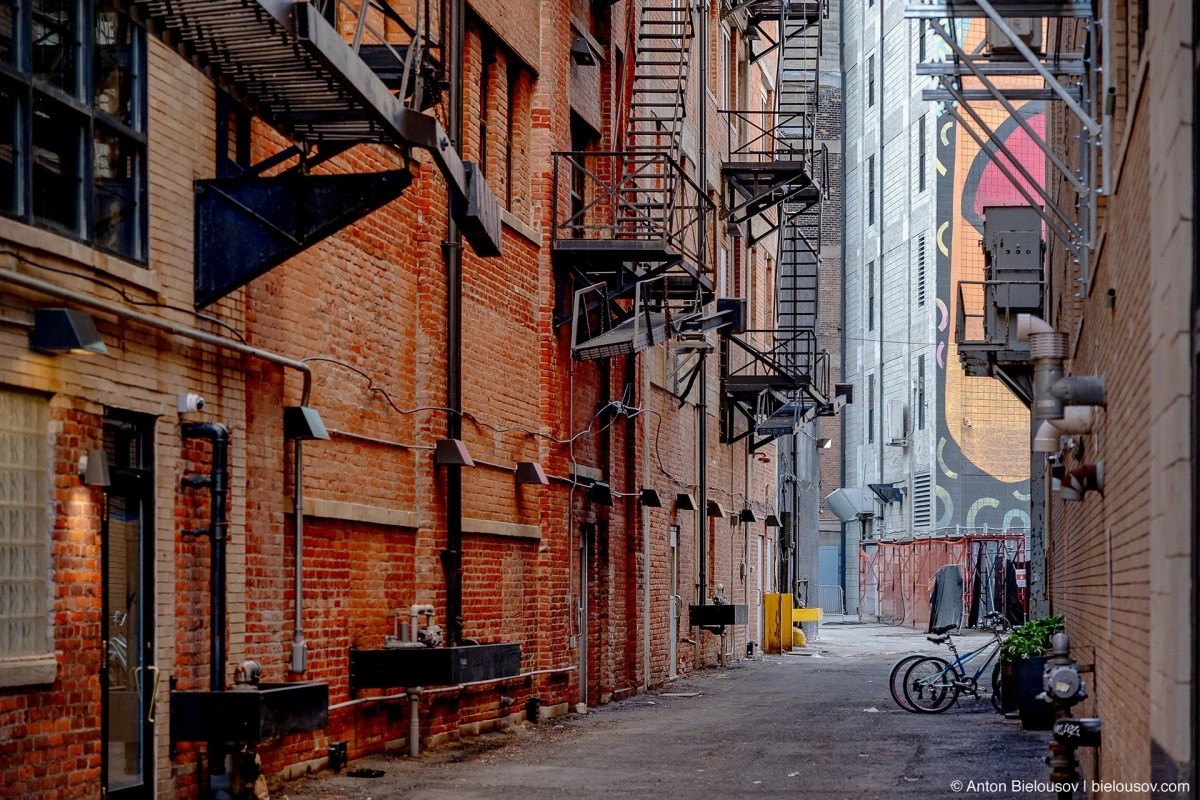
There are two notable features in Detroit’s high-rise developments.
The first is the massive number of fire escapes.

What’s typically shown in movies as New York is, in reality, more likely to be found in Chicago or here. Or even on a studio lot in Hollywood.
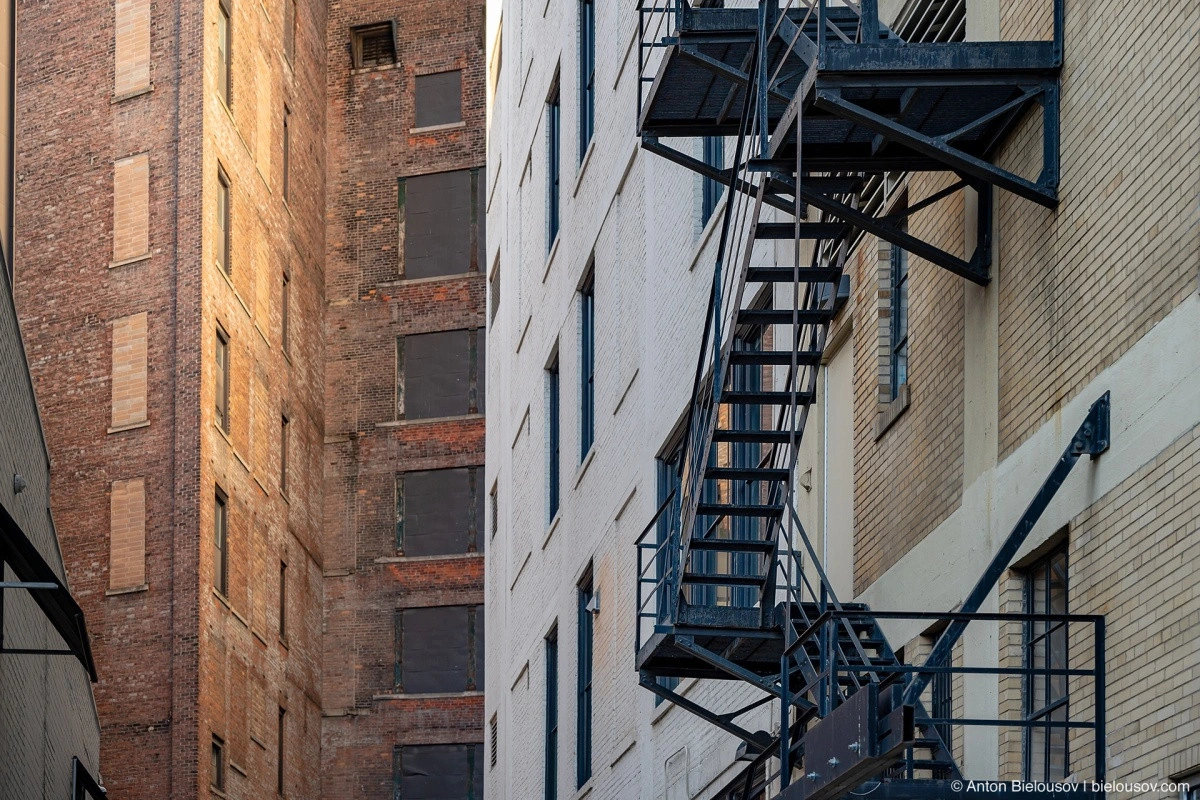
There are even ornate ones like this. Though, I imagine that in a brick building, wooden stairs would burn first.
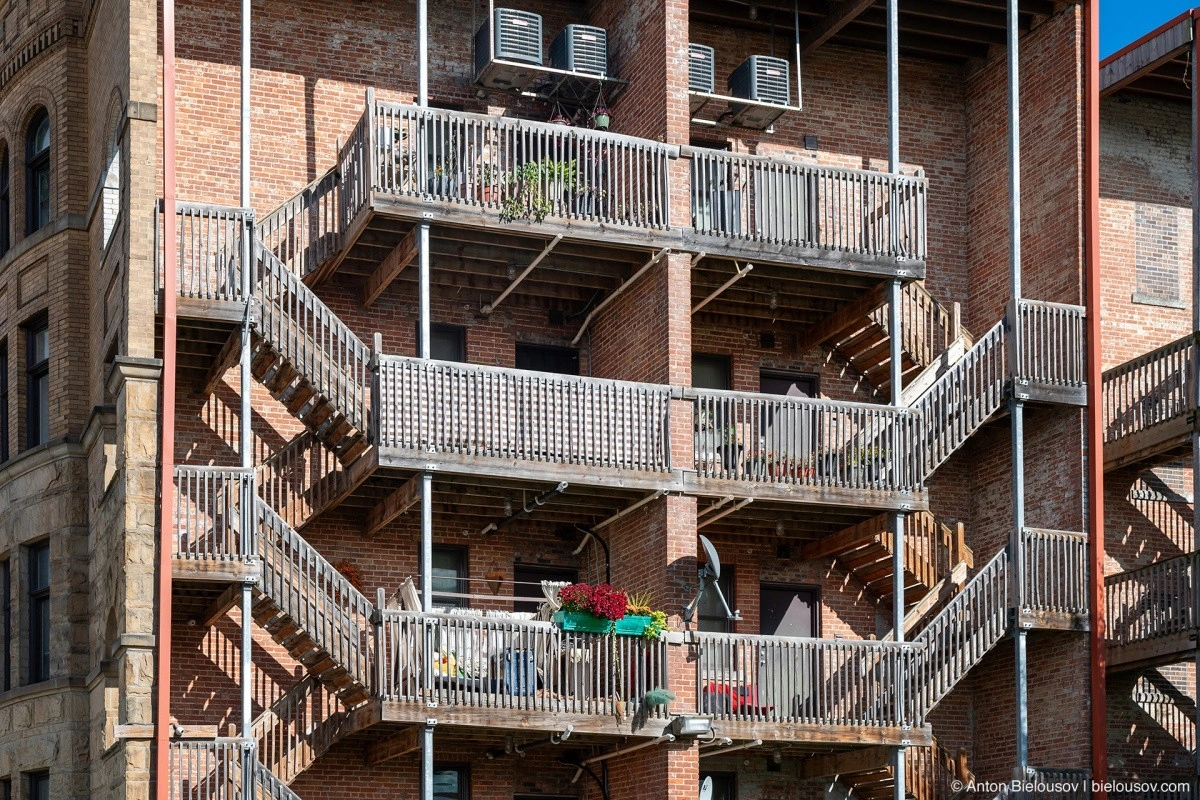
The second feature is transformer boxes raised to the level of the second floor. As the saying goes, this is how I learned the city is in a flood-risk zone. These transformers appear along sidewalks like mushrooms after rain, shortly before a new building begins construction nearby.
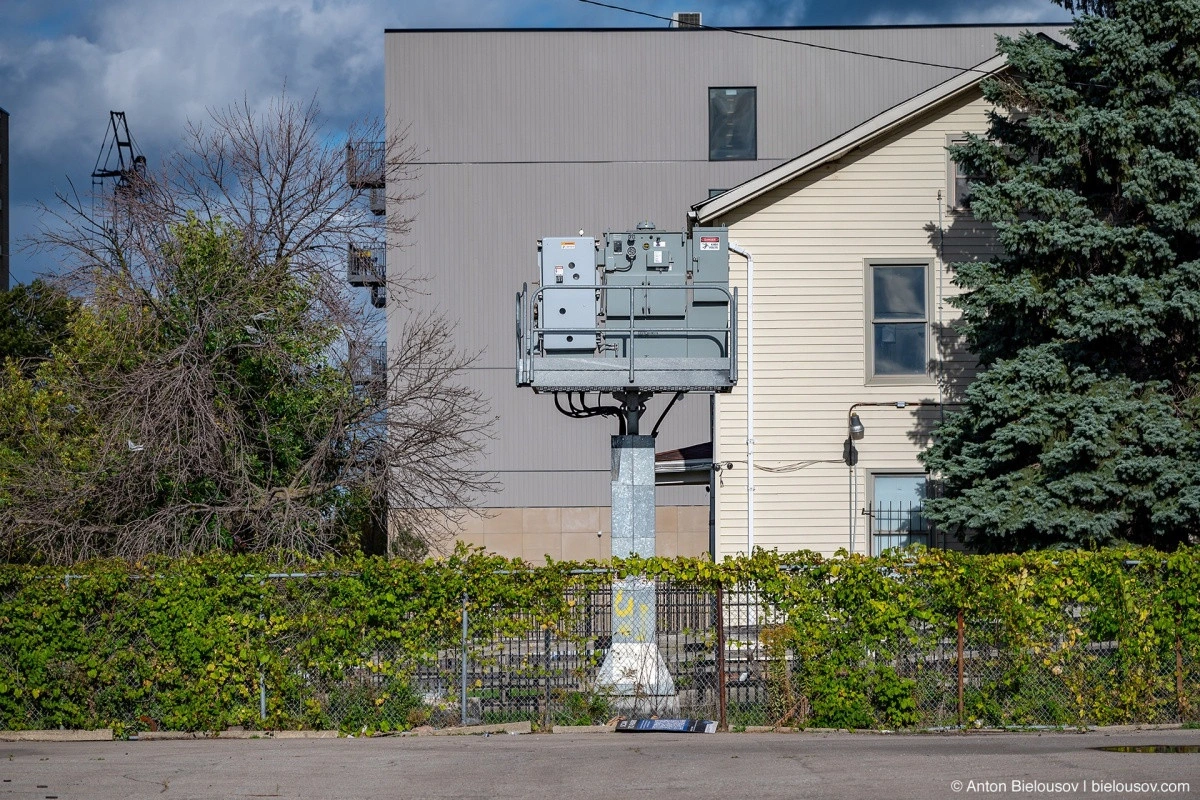
In alleys, they climb up the walls of buildings like ivy.
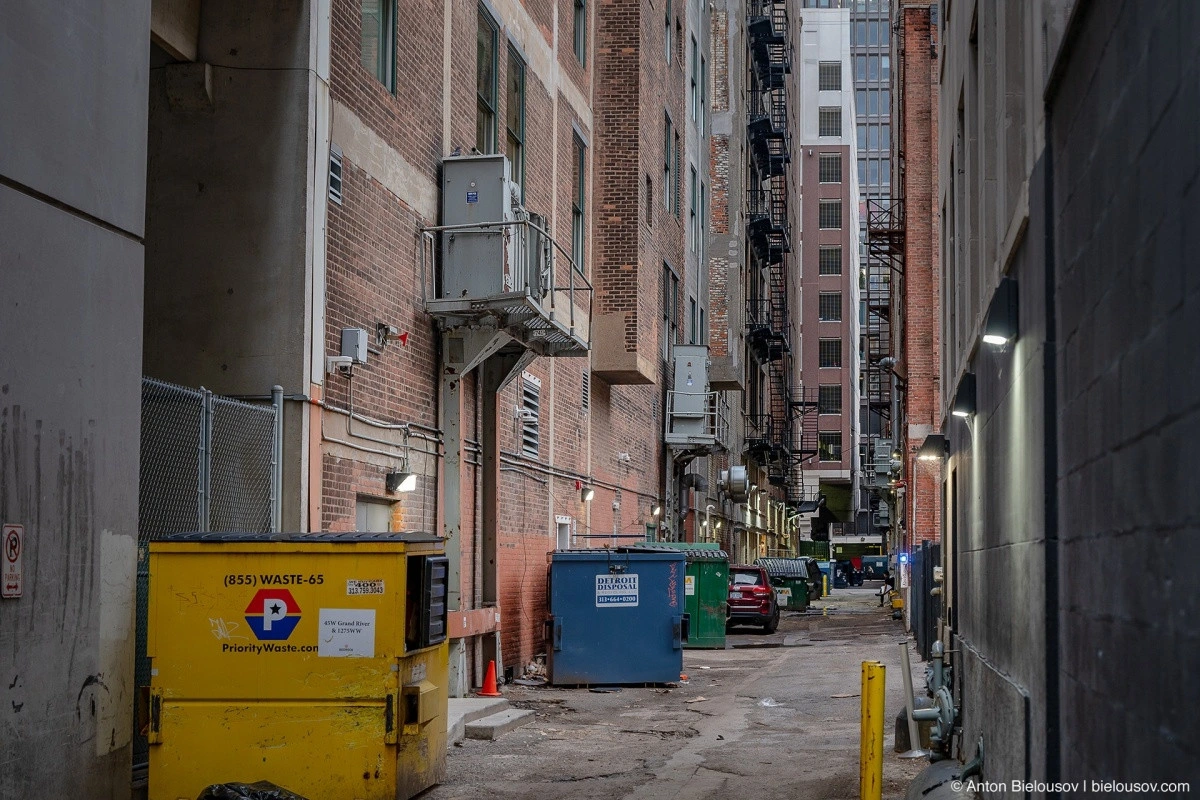
New developments in the city center. Instead of a playground… a fire pit? Maybe even a gas one. And, once again, a transformer box on a “chicken leg.”
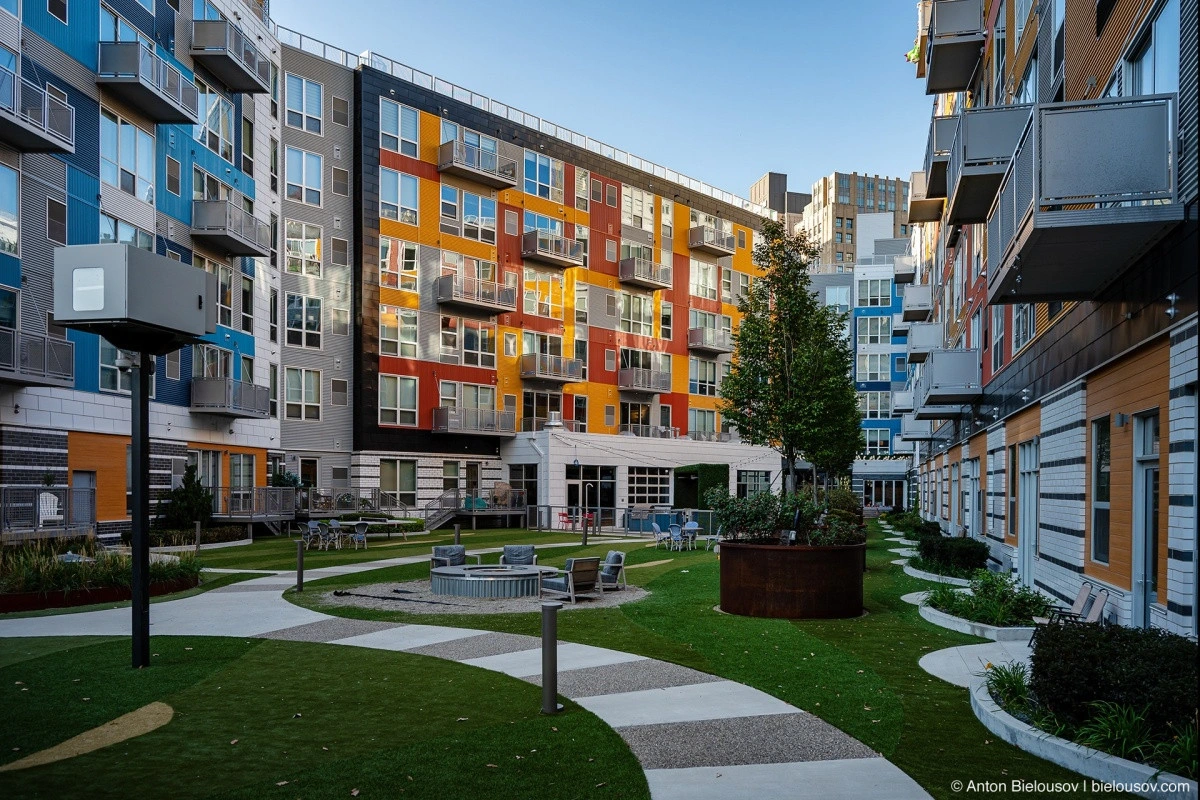
Quite modern, don’t you think?

The architectural design of many new buildings suggests thoughts of social housing and shipping containers, similar to Vancouver.
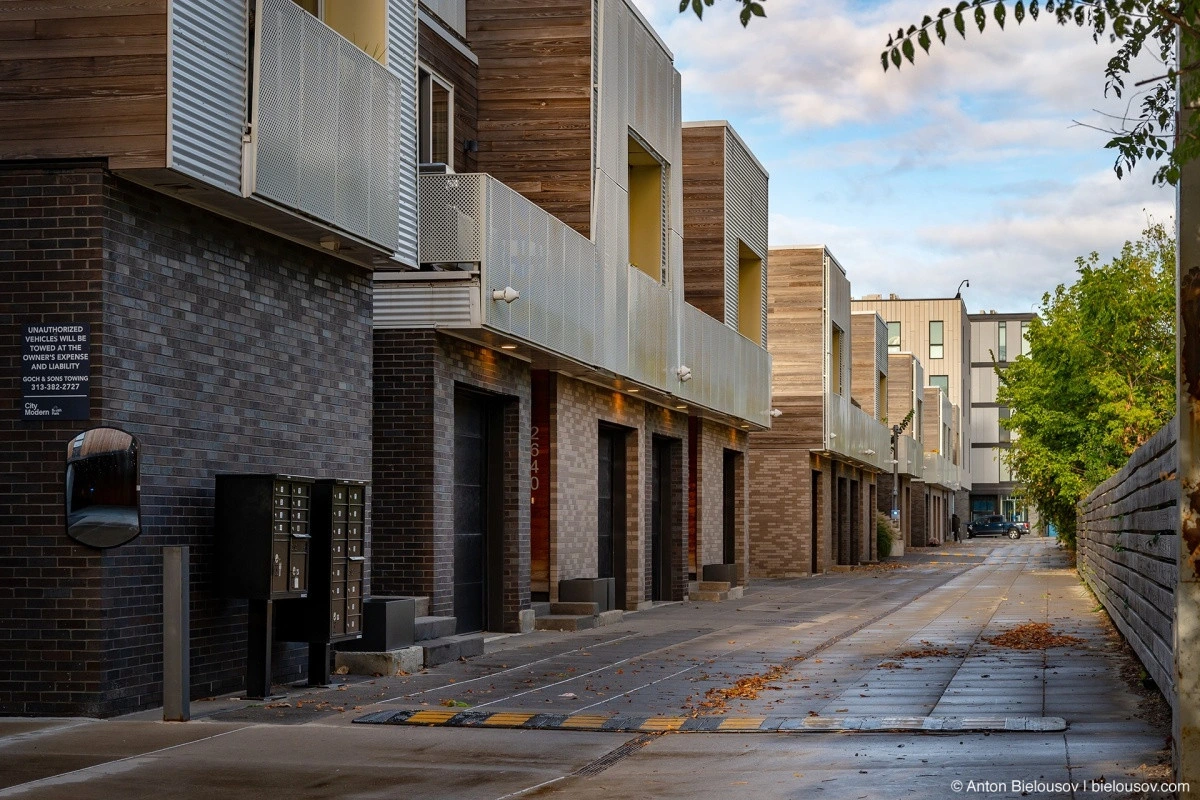
Although there’s some of that here too, in recent years they’ve learned to construct them in such a way that, in the finished result, you can’t even tell what they’re made of.
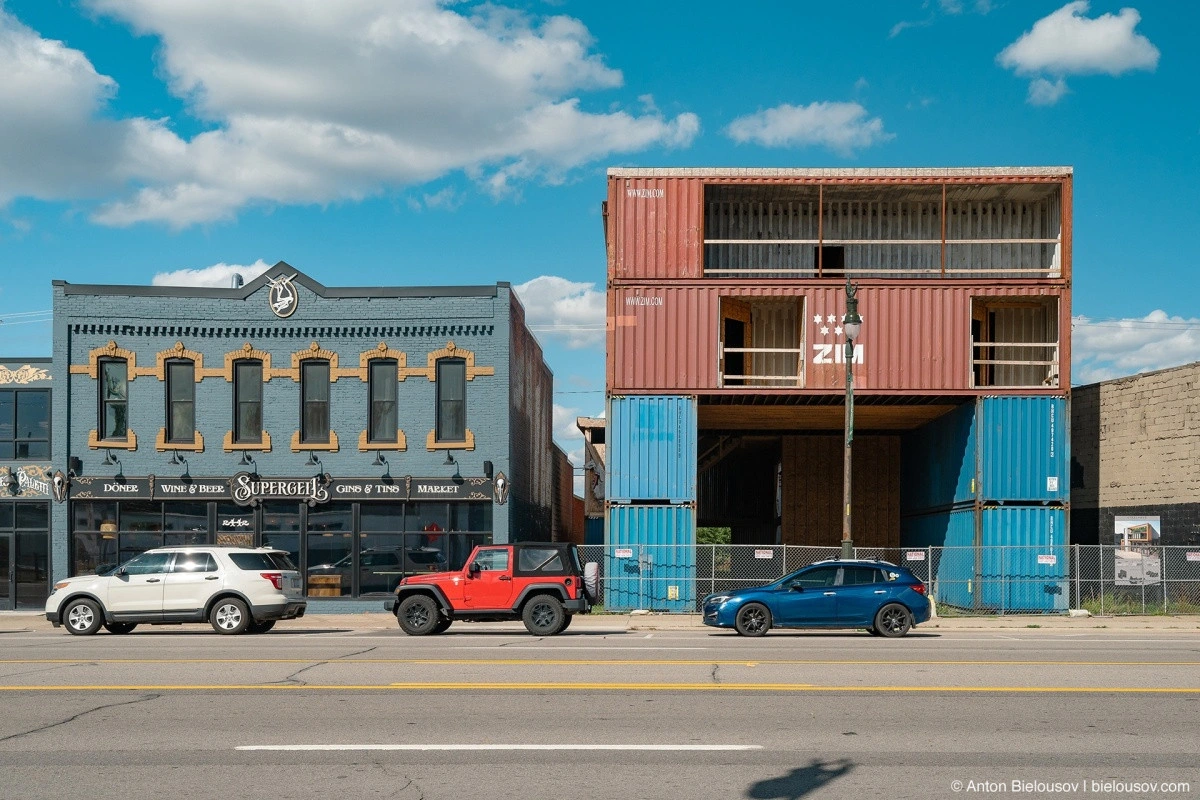
Renaissance Center
Another recognizable symbol of Detroit (and visible from nearly any point in the city) is the complex of seven towers — the Renaissance Center.
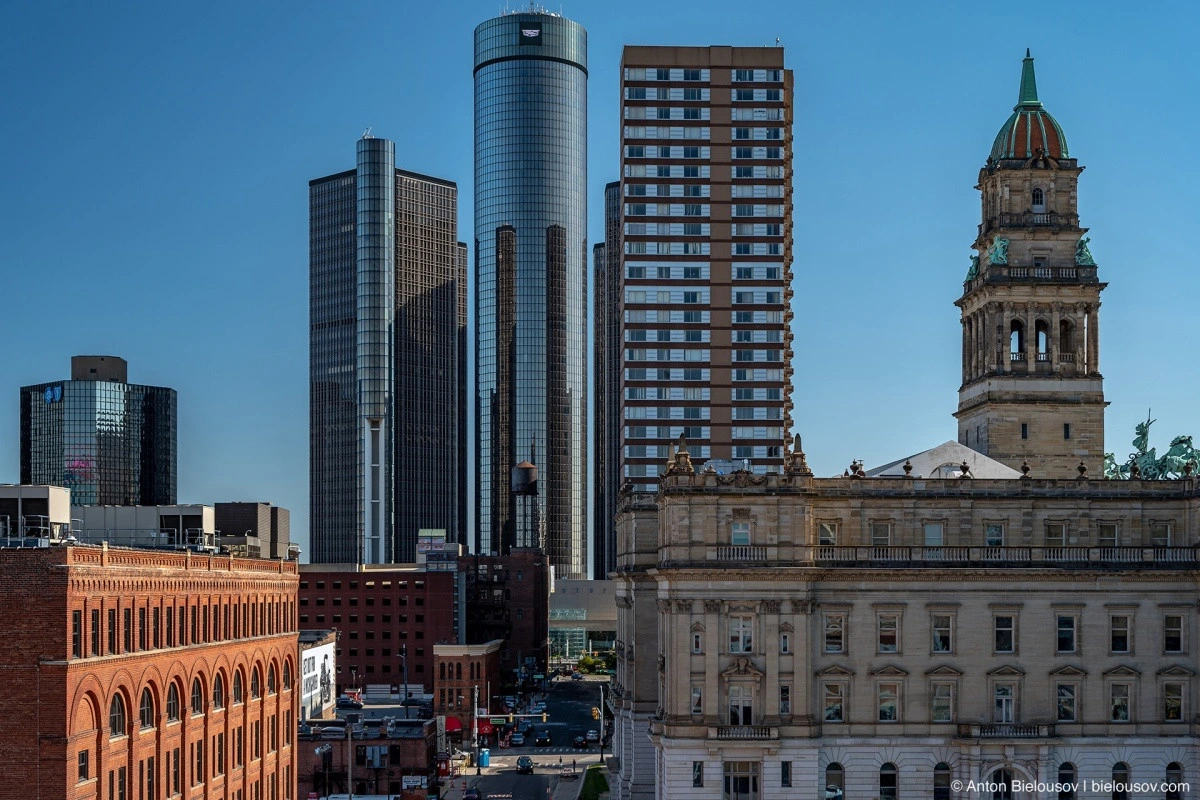
Built in 1977 on the banks of the Detroit River, it was part of a plan to revive the city following the events of the 1960s. I wonder if they would have built it had they known then that the city’s problems were just beginning?
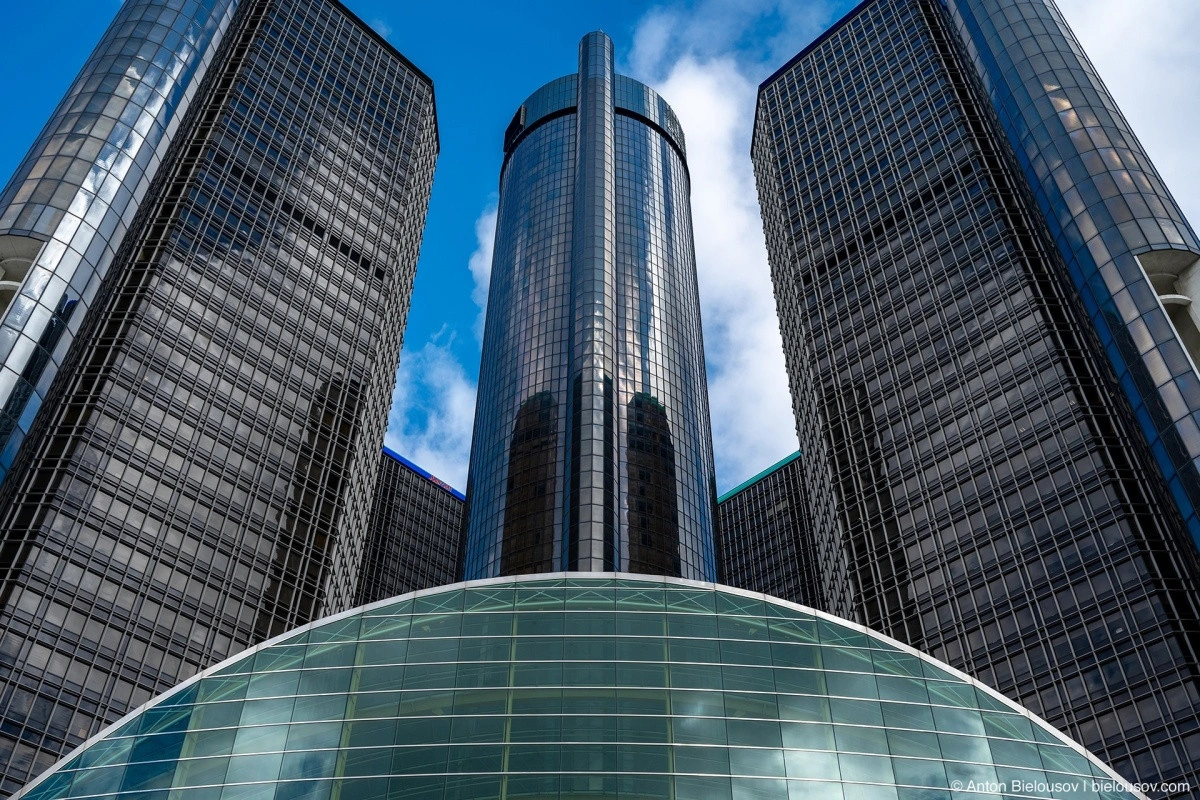
Either way, today it houses the headquarters of General Motors, a Marriott hotel, restaurants, shops, and exhibition centers.
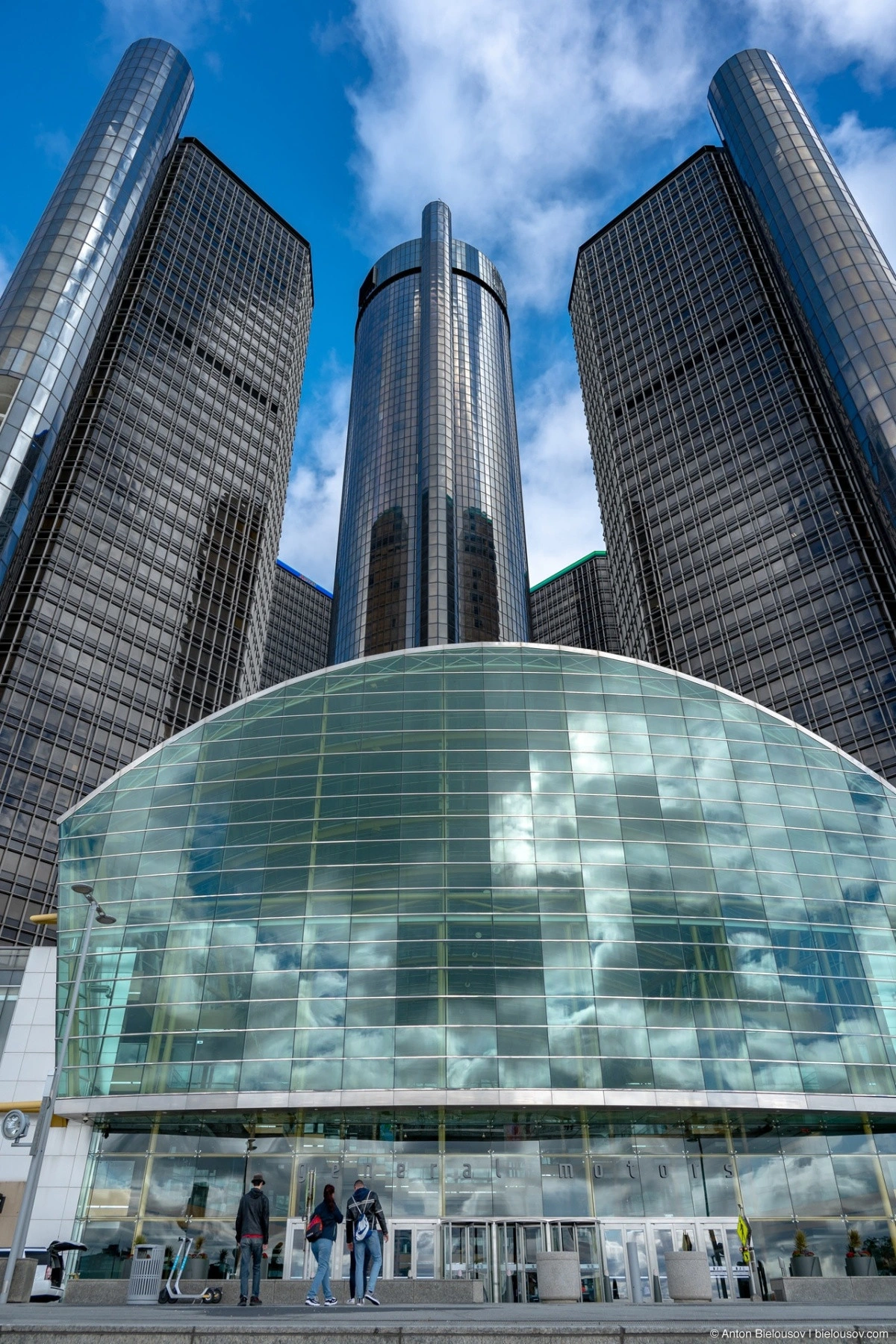
I certainly don’t regret going inside — the atrium offers a breathtaking view upwards.
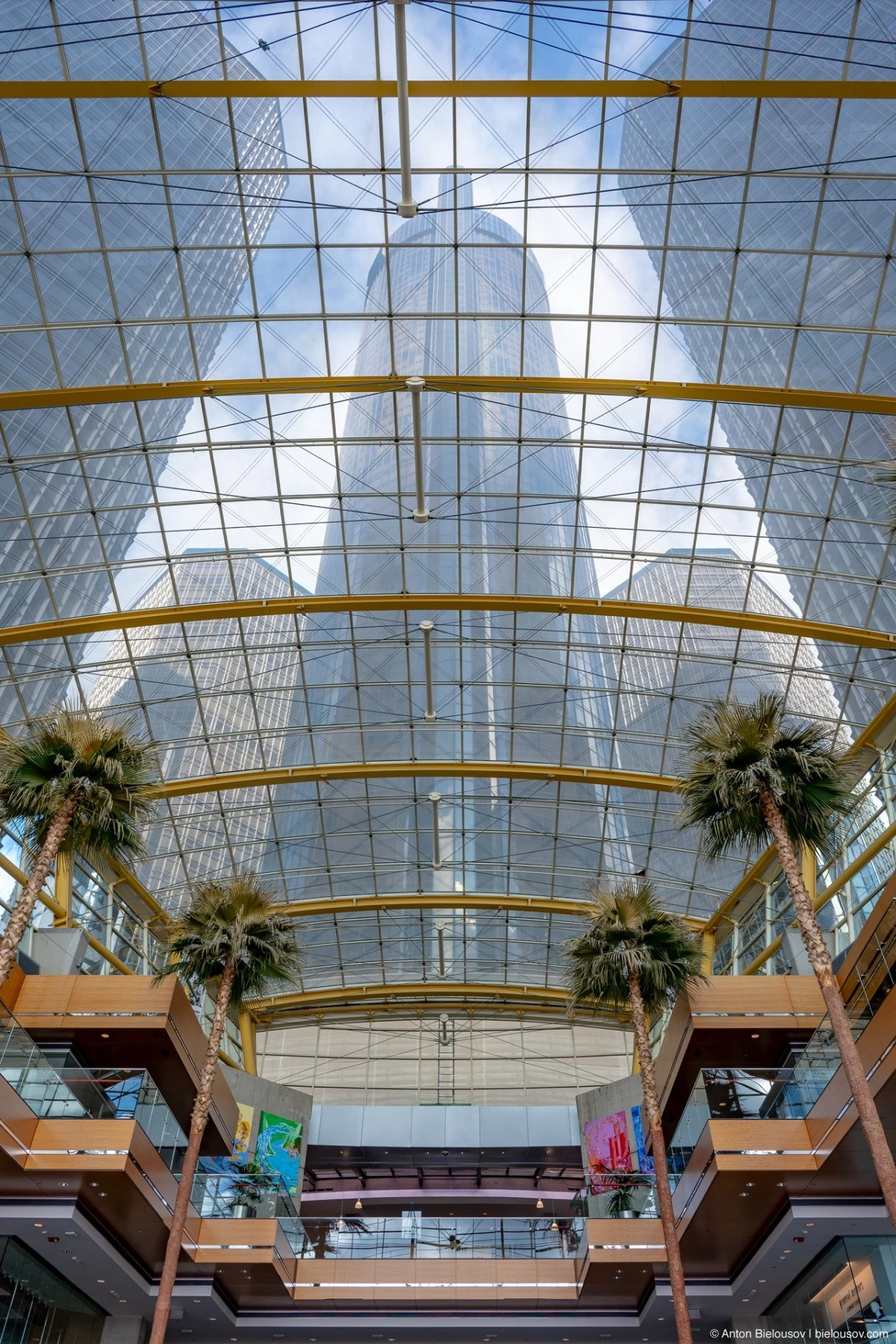
At the very least, there’s a small exhibition of GM vehicles — mainly Cadillacs, Buicks, and Chevrolets.
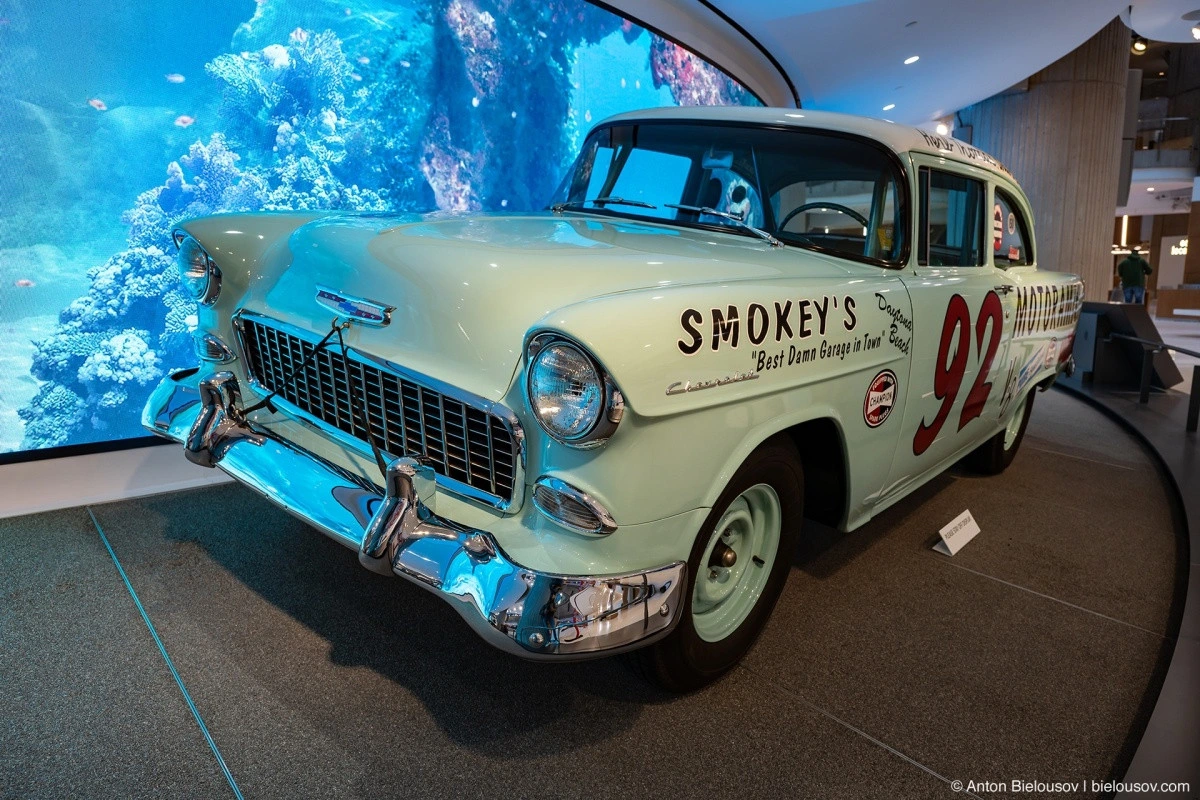
There may not be many legendary cars among them, but there’s definitely one…
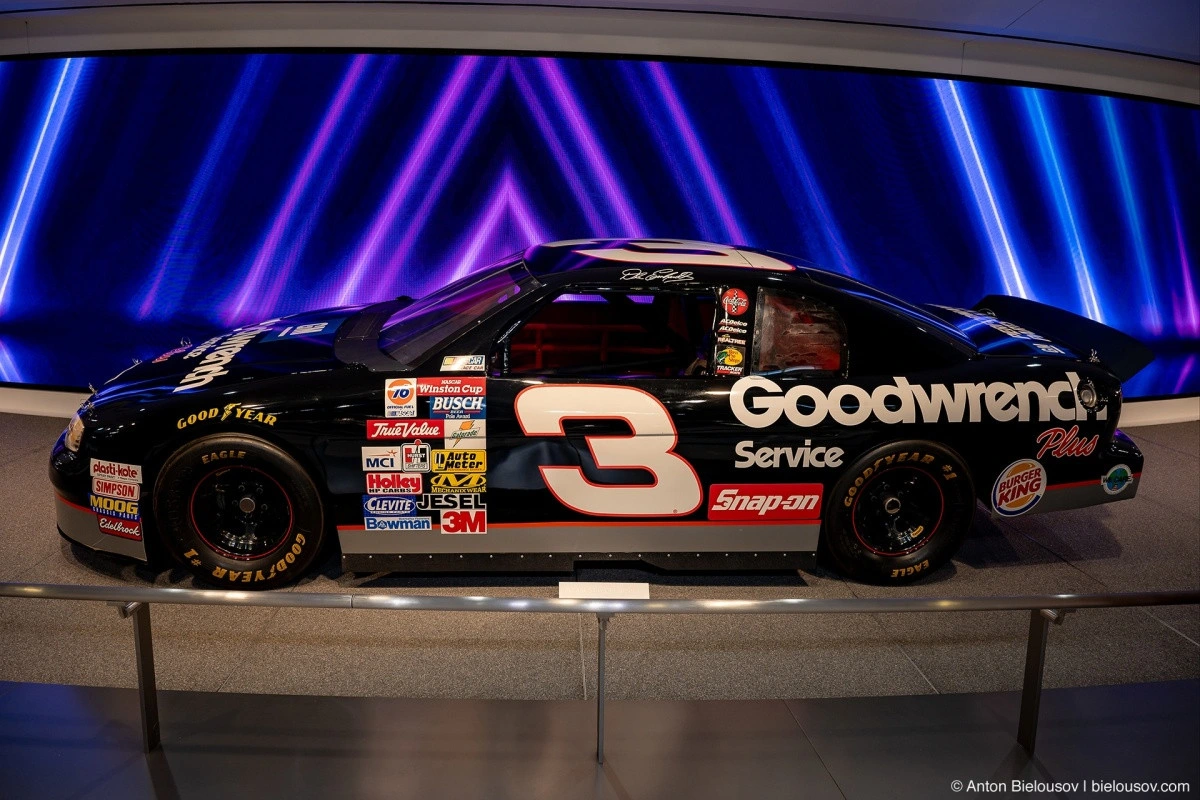
However, I couldn’t find the way to the observation deck, which, according to rumors, should be here. As far as I understand, access is only available to Marriott guests or visitors of the rather pretentious restaurant on the 74th floor. But you know what? It’s not a great loss when you have a drone…

This is approximately the view you’d get from the upper floors of the towers.
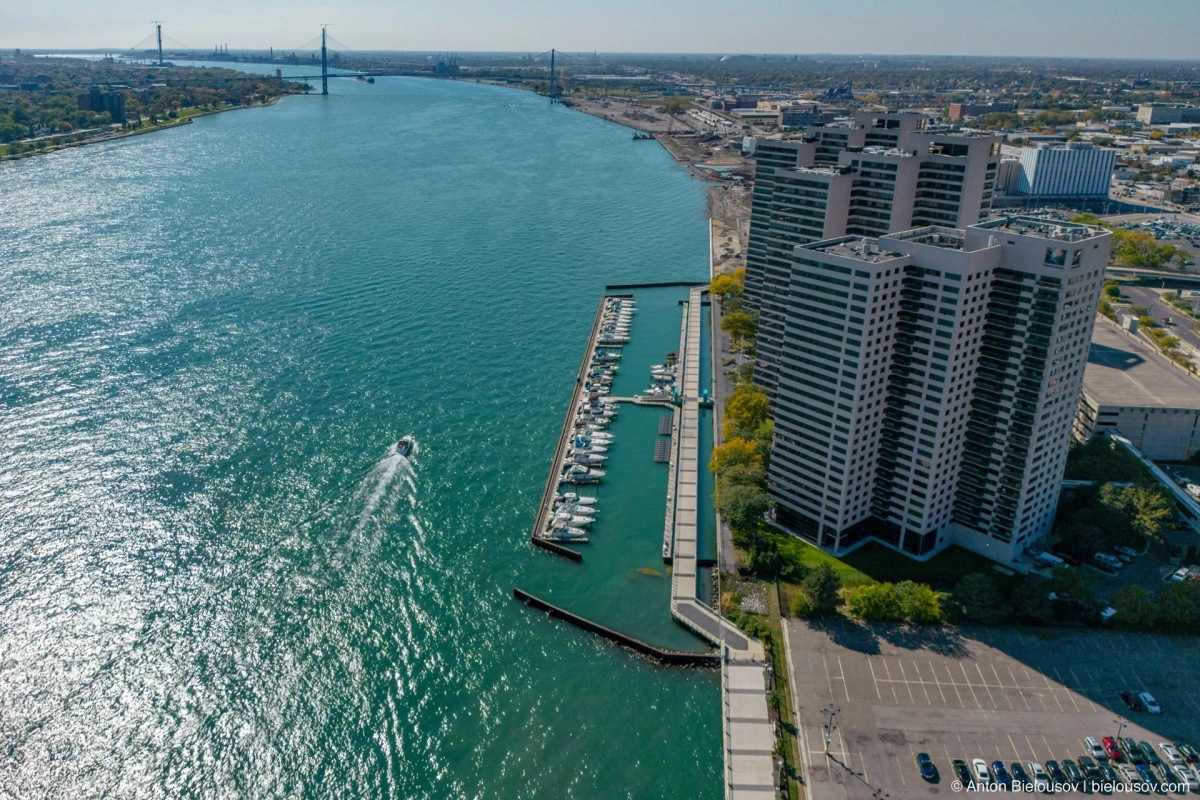
And what’s on the other side of the river? Across the river is Canada.
That’s my hoooome (in E.T.’s voice).
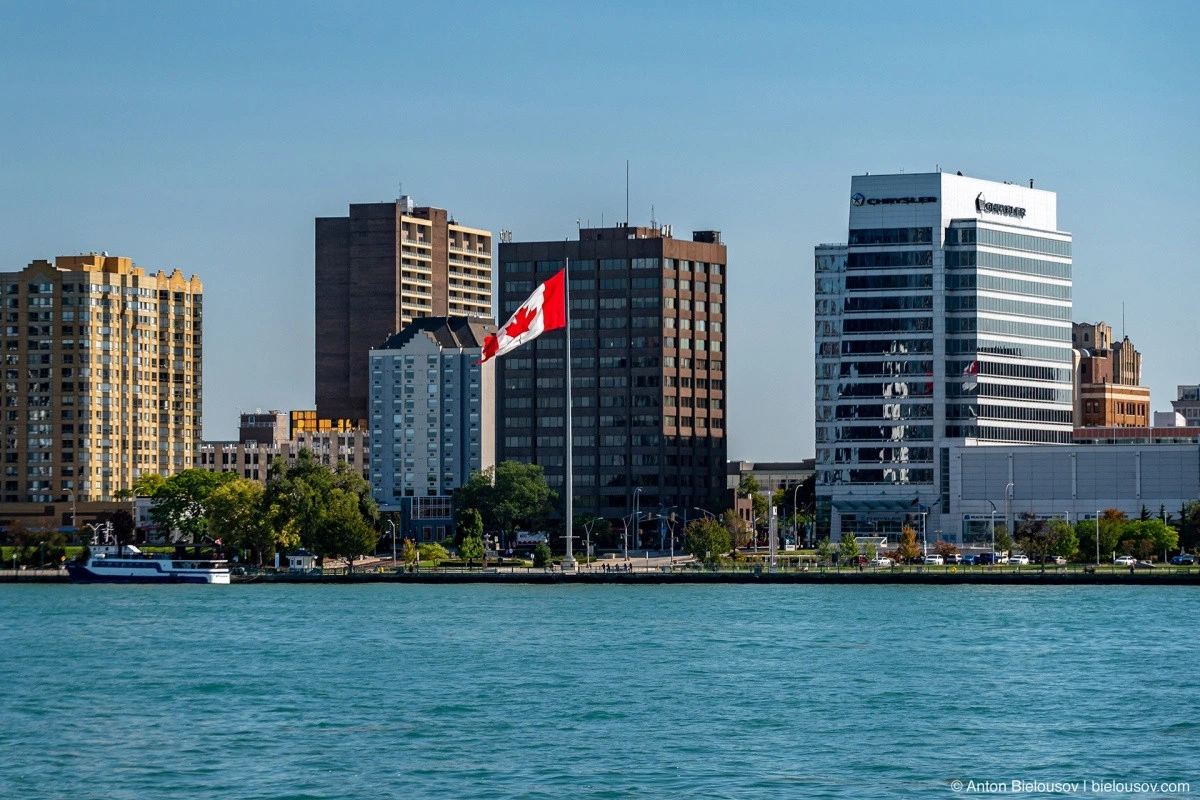
Directly across the river from Detroit lies the town of Windsor, ON.
Underground Railways
Before the Civil War (1861) in the United States, there existed a developed network of routes by which African Americans escaping slavery in the southern states traveled to northern cities, particularly to Detroit. There were local sympathizers here who helped them hide from persecution and eventually cross over to Canada (then still a British colony). This system was called the «Underground Railroad.»
«So that no one would suspect…»
Despite the name, there were no actual tracks, and the system wasn’t necessarily underground. However, tunnels and catacombs did exist in Detroit, and buildings in the city center that served as temporary shelters were called «stations;» people who helped transport escapees to the other side were referred to as «conductors,» and the escapees themselves were called «passengers.» The city itself also had a code name — «Midnight.»
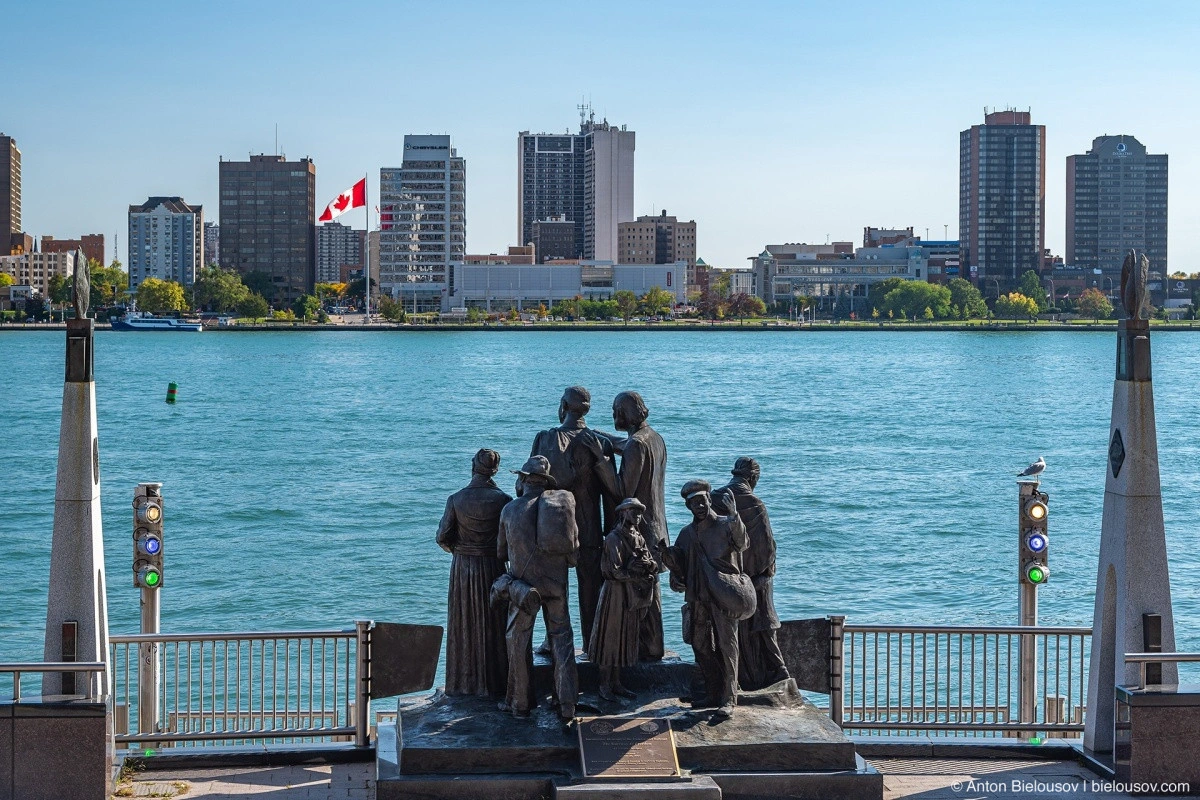
Through these gates to freedom in Detroit passed about 45,000 out of 75,000 former slaves who became passengers on the «Underground Railroad.» Today, a memorial — the Gateway to Freedom — stands on Detroit’s waterfront, depicting 8 African Americans escaping slavery and a «conductor» pointing towards Canada, across the Detroit River.
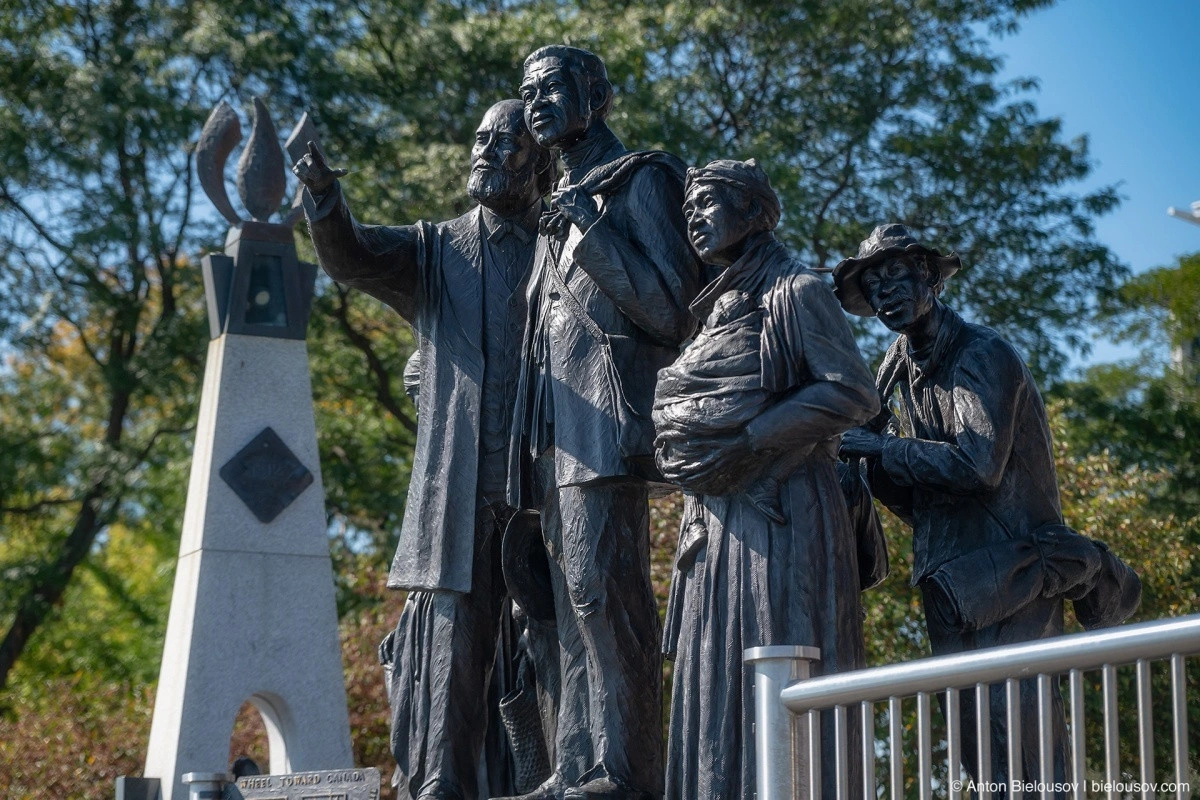
Today, the only preserved «station» of the Underground Railroad is located in the basement of the Second Baptist Church.
Ambassador Bridge
Another gateway to Canada — in modern times.
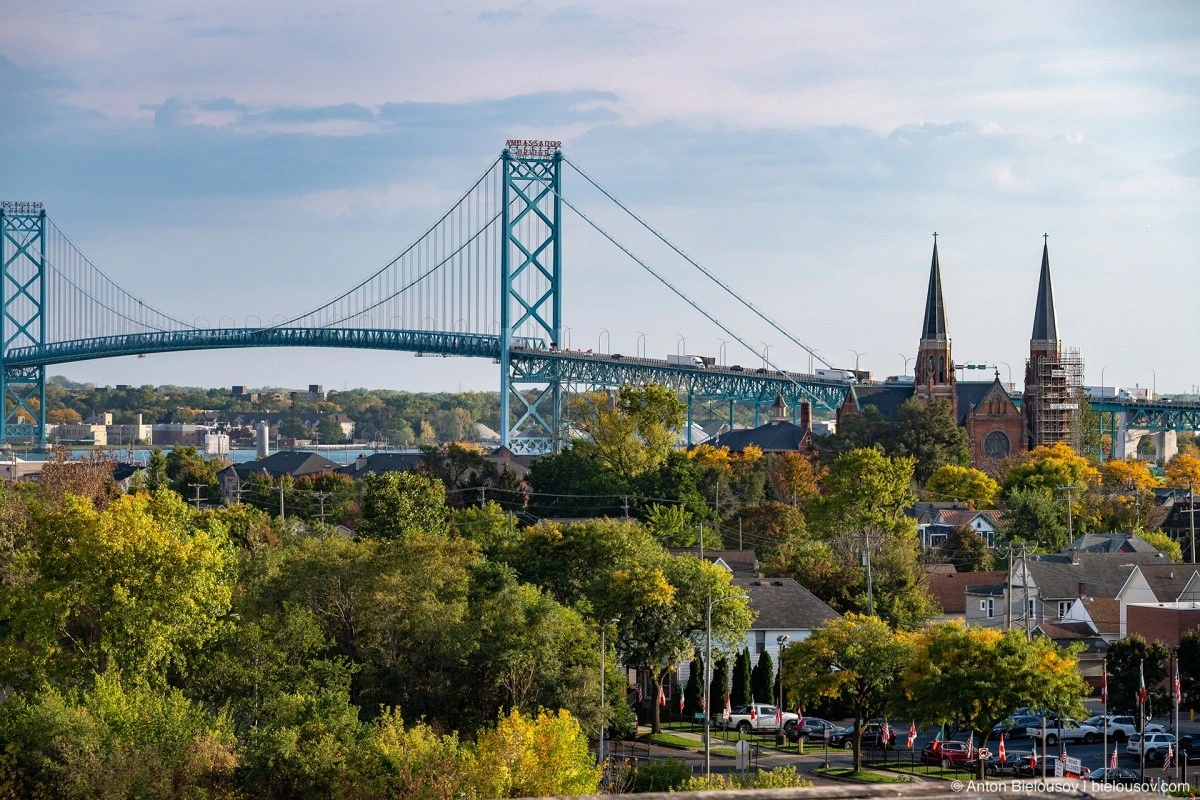
At the time of its construction in 1929, this was the longest suspension bridge in the world (its length is 564 meters).
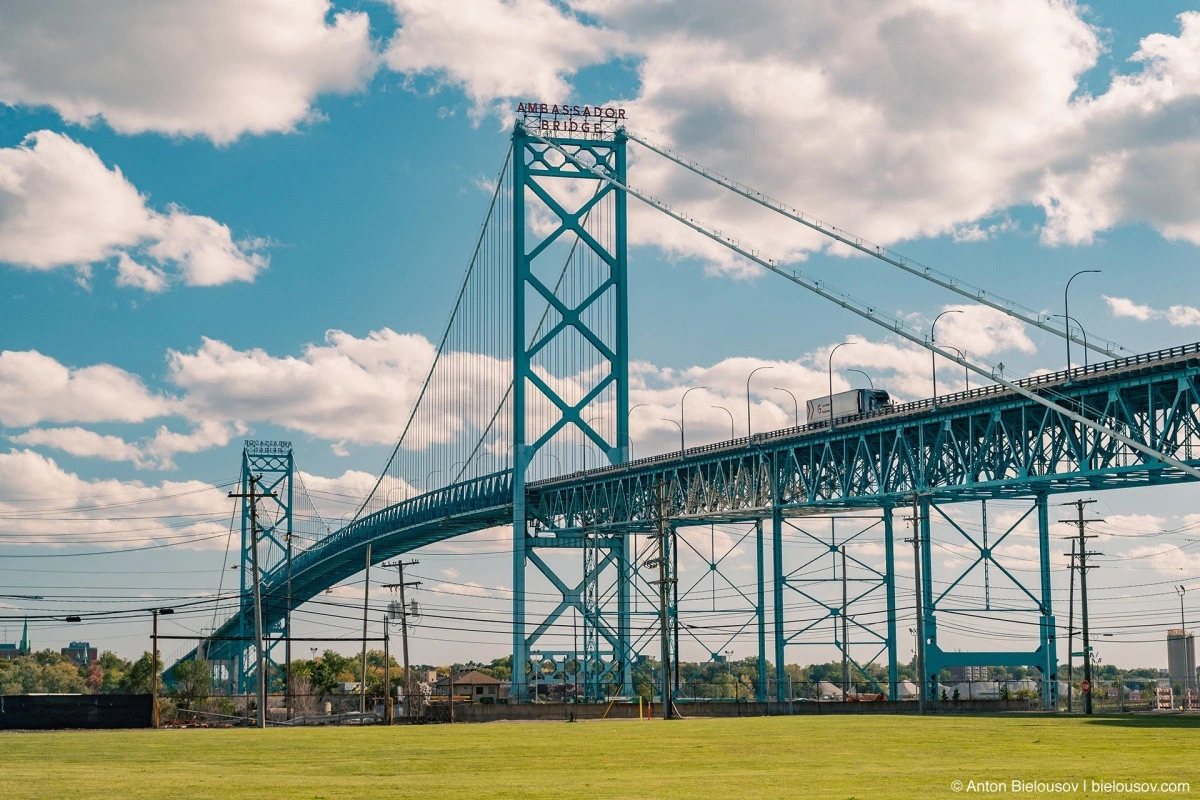
This is one of the busiest border crossing points between the United States and Canada, and interestingly, the bridge is privately owned. This means someone earns revenue from every truck in the endless stream that crosses the bridge. And indeed, they do seem to move in a nearly continuous flow.
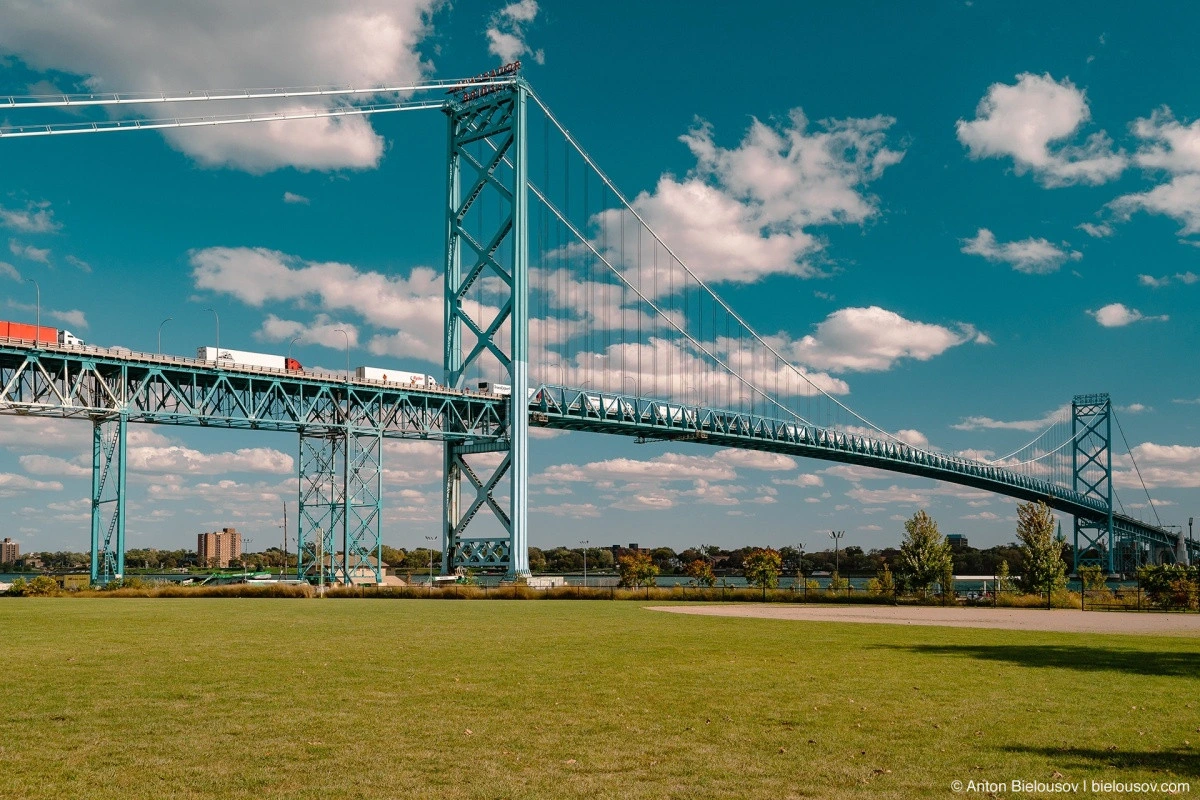
In a small park under the bridge, I came across this public restroom:
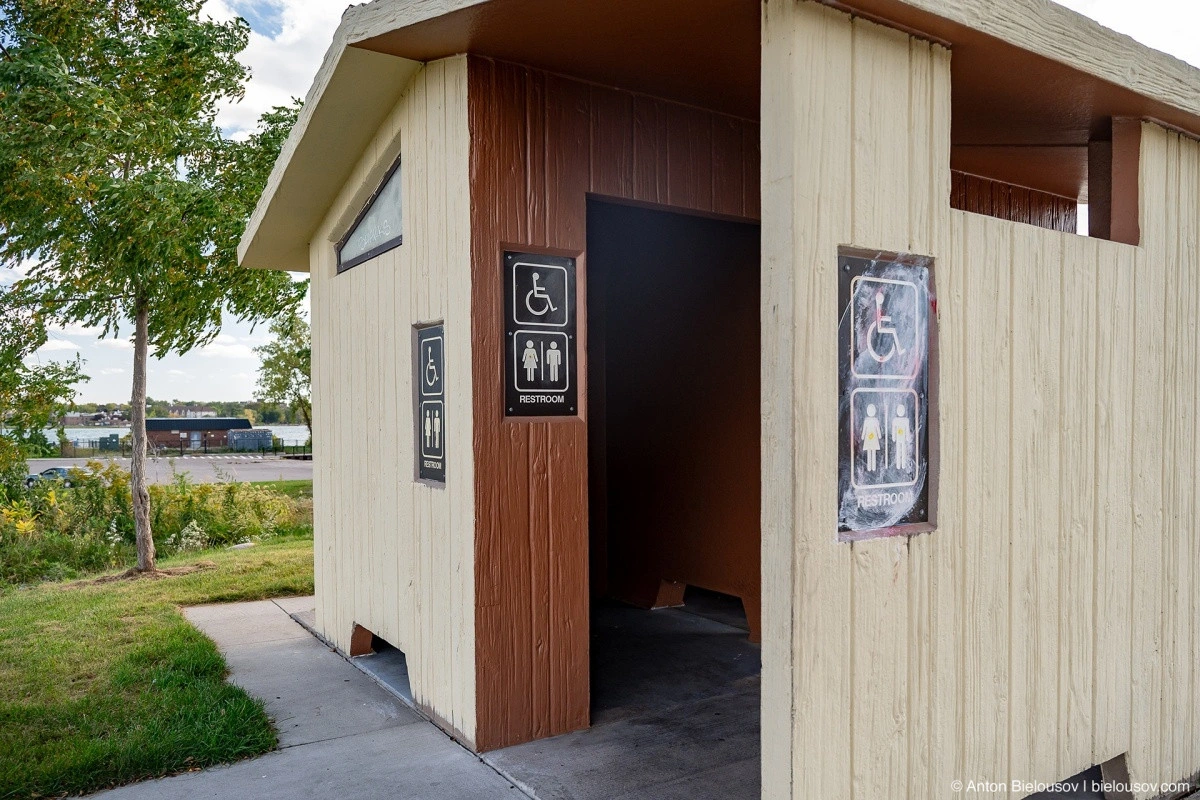
- It’s unisex — both male and female, which is fine.
- It has no doors — also fine, as such things exist in Normandy.
- But the positioning of the toilet — facing the entrance…
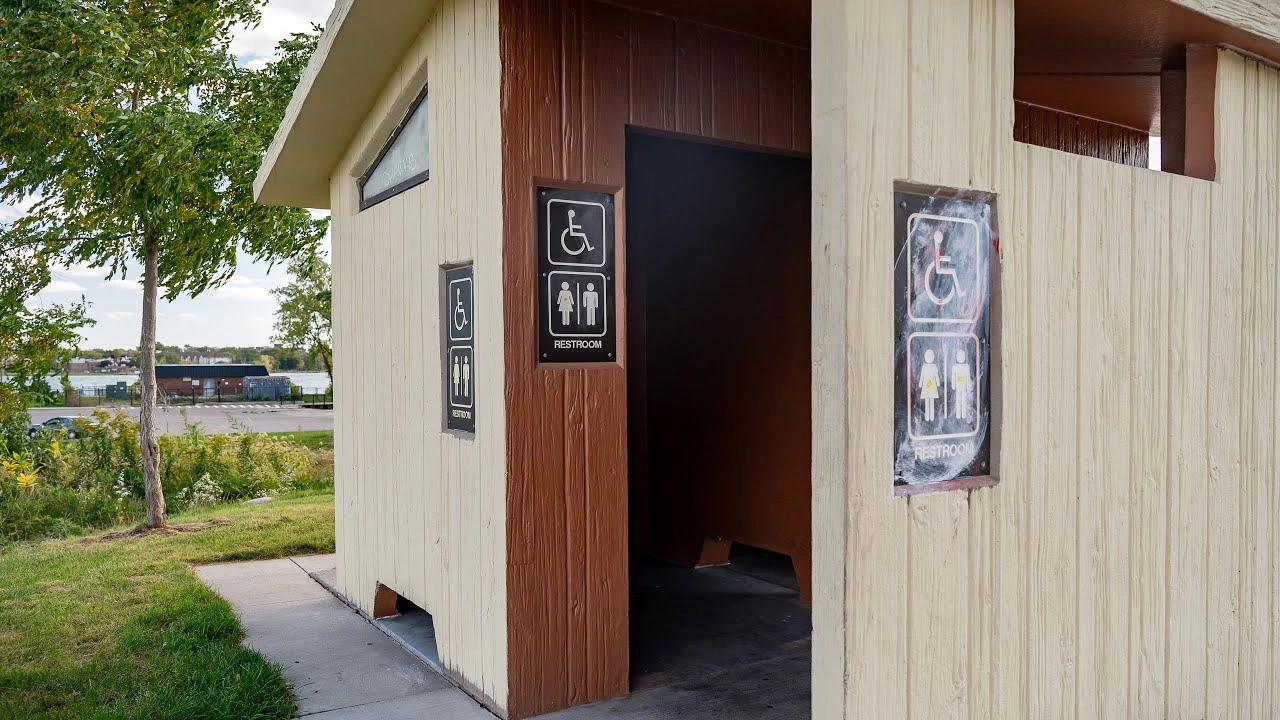
Hart Plaza
And right on the waterfront lies the city’s main square.
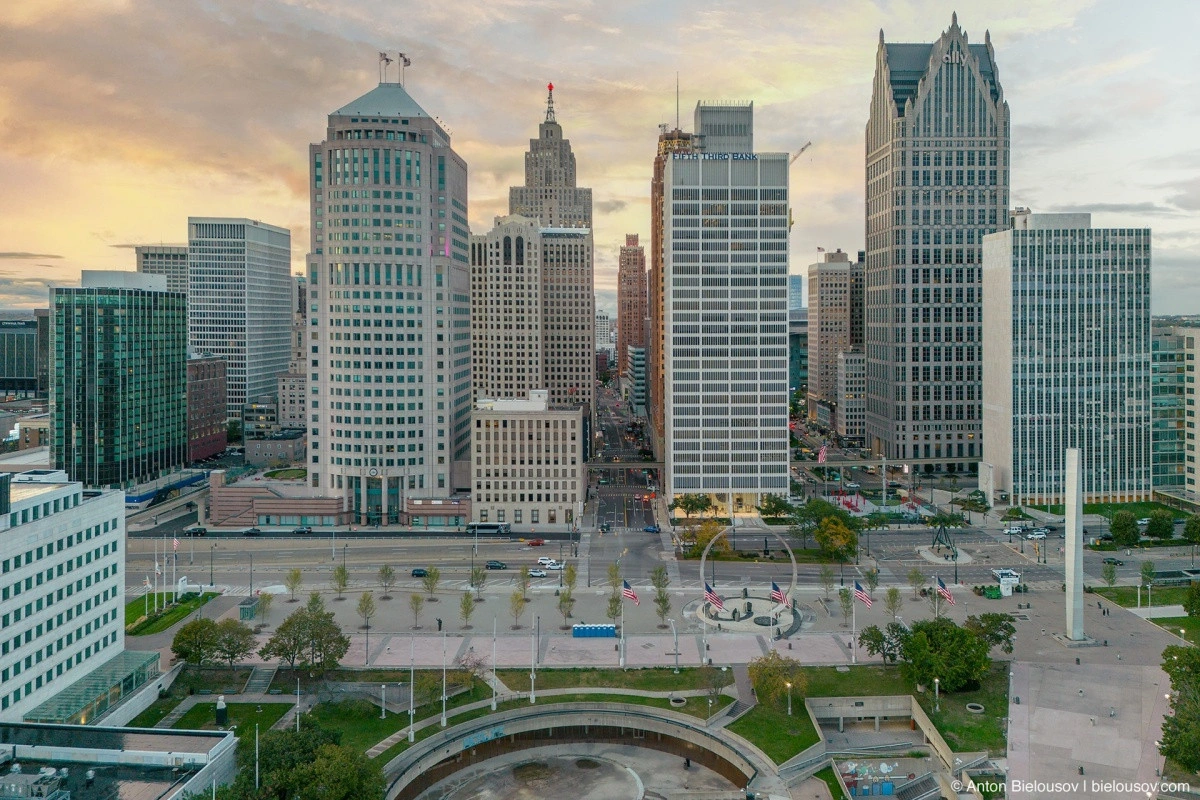
It’s literally filled with various monuments, pillars, and statues, as if someone had overplayed Sim-City.
Here’s the «Fist» — a monument to boxer Joe Louis.
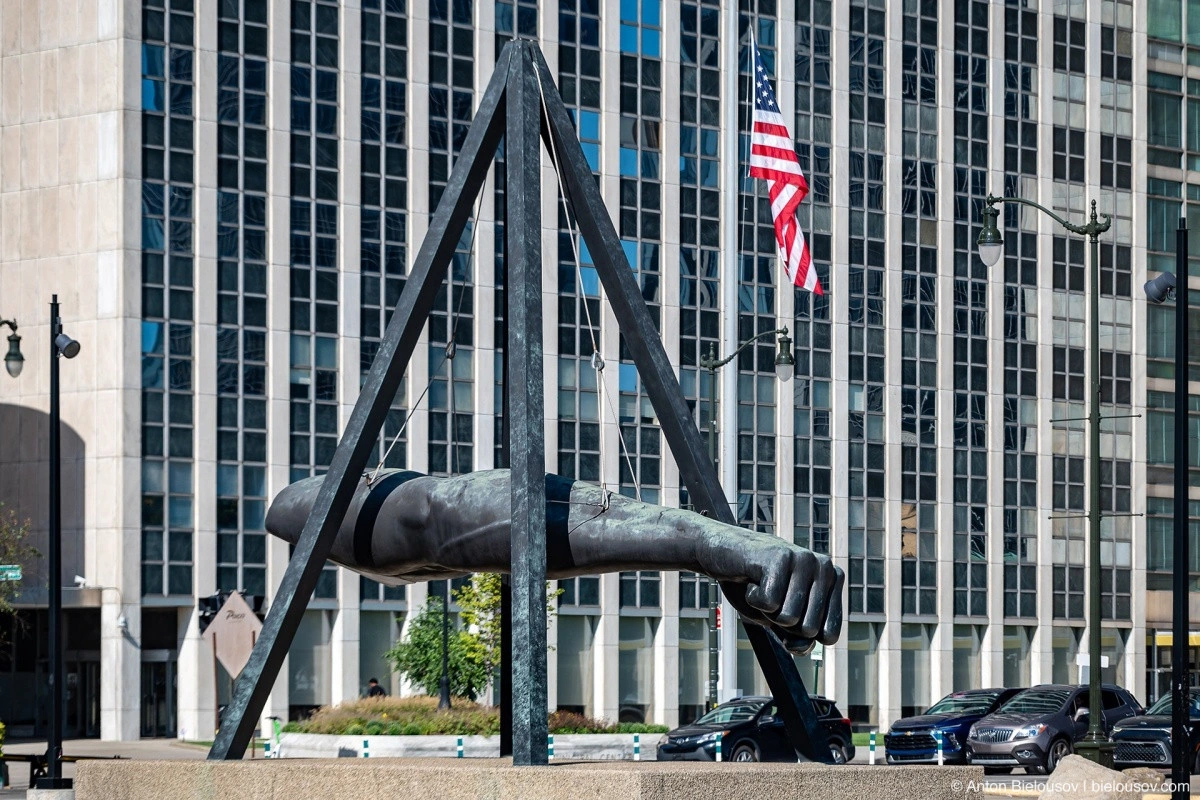
And the Horace Elgin Dodge Fountain — yes, the very Dodge that’s Ram, Charger, Challenger, or even Viper.

And the «Transcending Arch,» which literally transcends all boundaries (and yes, that’s how it translates).
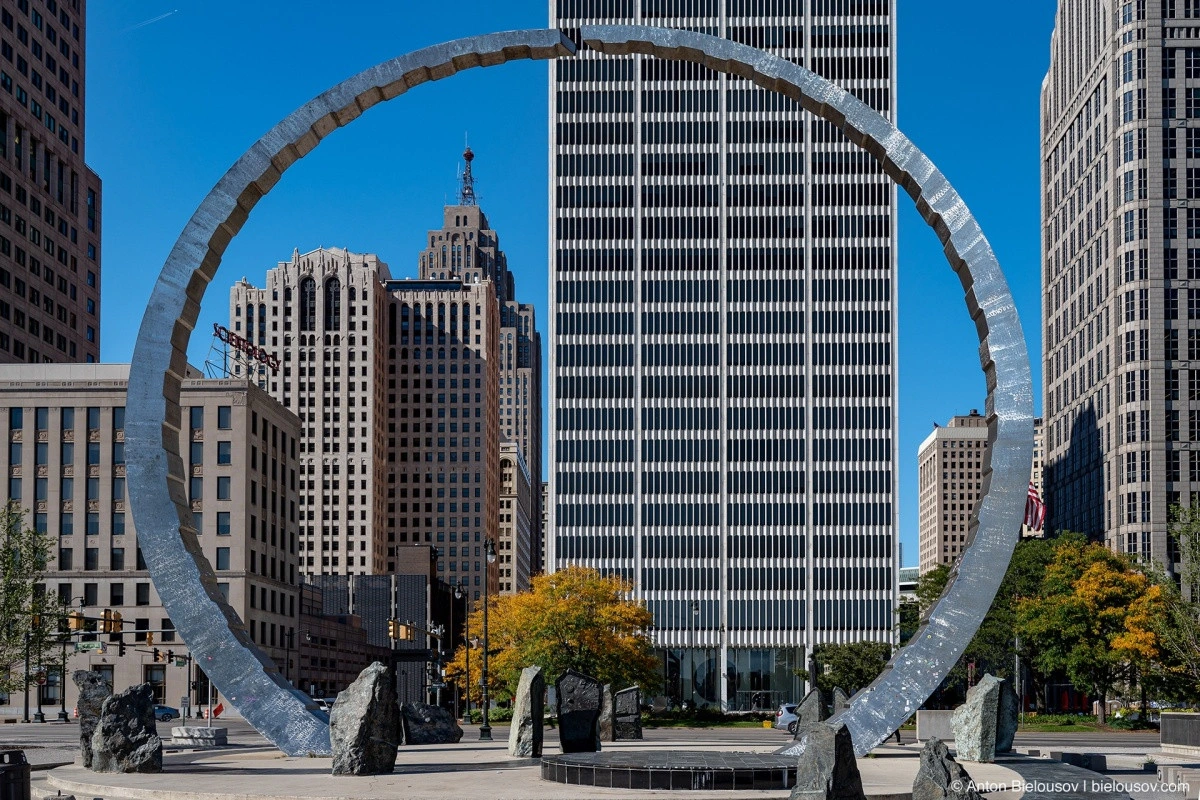
There’s something about it that feels like Stargate, though it has nothing to do with the film and was built in support of the labor movement.
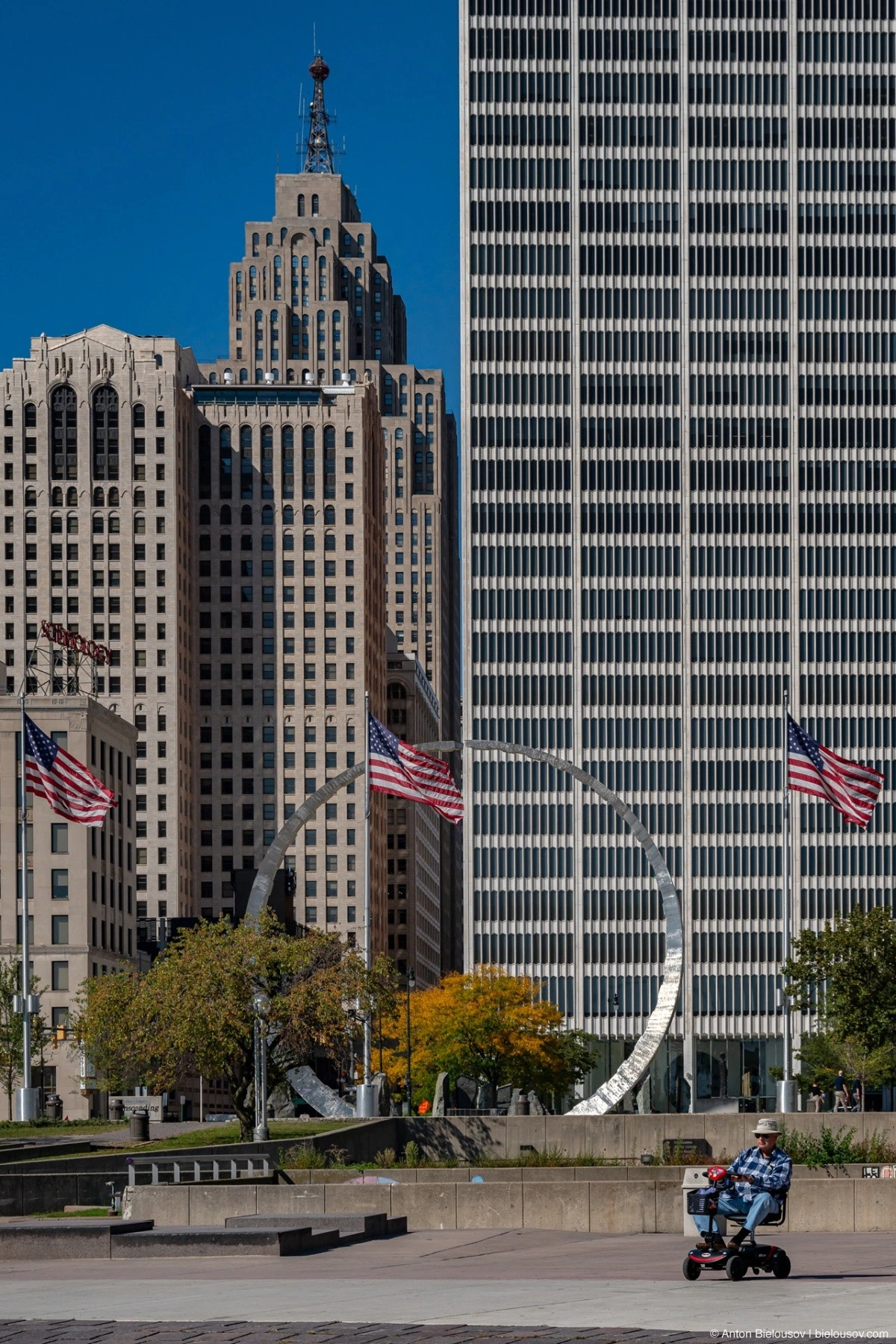
At the entrance to the square stands the Spirit of Detroit monument. In one hand, it holds a family, and in the other — a glowing orb. You can see it on the emblems and logos of many city services.
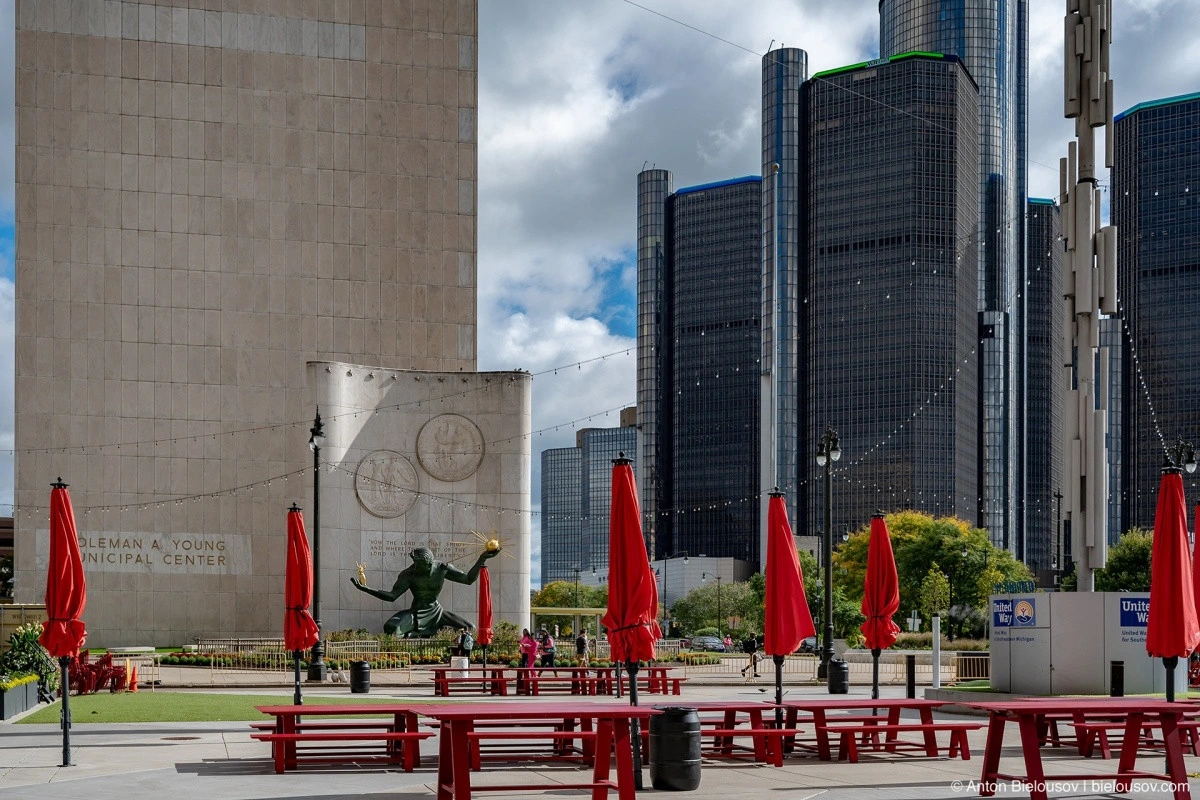
The Underground Railroad memorial, by the way, is also here.
QLine
Right next to the Spirit of Detroit, rails suddenly start at the edge of the sidewalk.

In 1925, Detroit was one of the first cities in the United States to launch trolleybuses (funded by the automobile industry). Trams (on horse-drawn carriages) had appeared here as early as 1863, and in 1893, the first electric tram ran through Detroit’s streets. The system lasted until 1956, when cars completely replaced them in the city. A story very similar to Vancouver, by the way. Only Toronto managed to hold on for more than 100 years.
But 60 years later, when the city began to recover, the first tram in over half a century once again ran through its streets when, in 2017, the QLine tram line was opened (derived from the word Quick, as in «fast»).
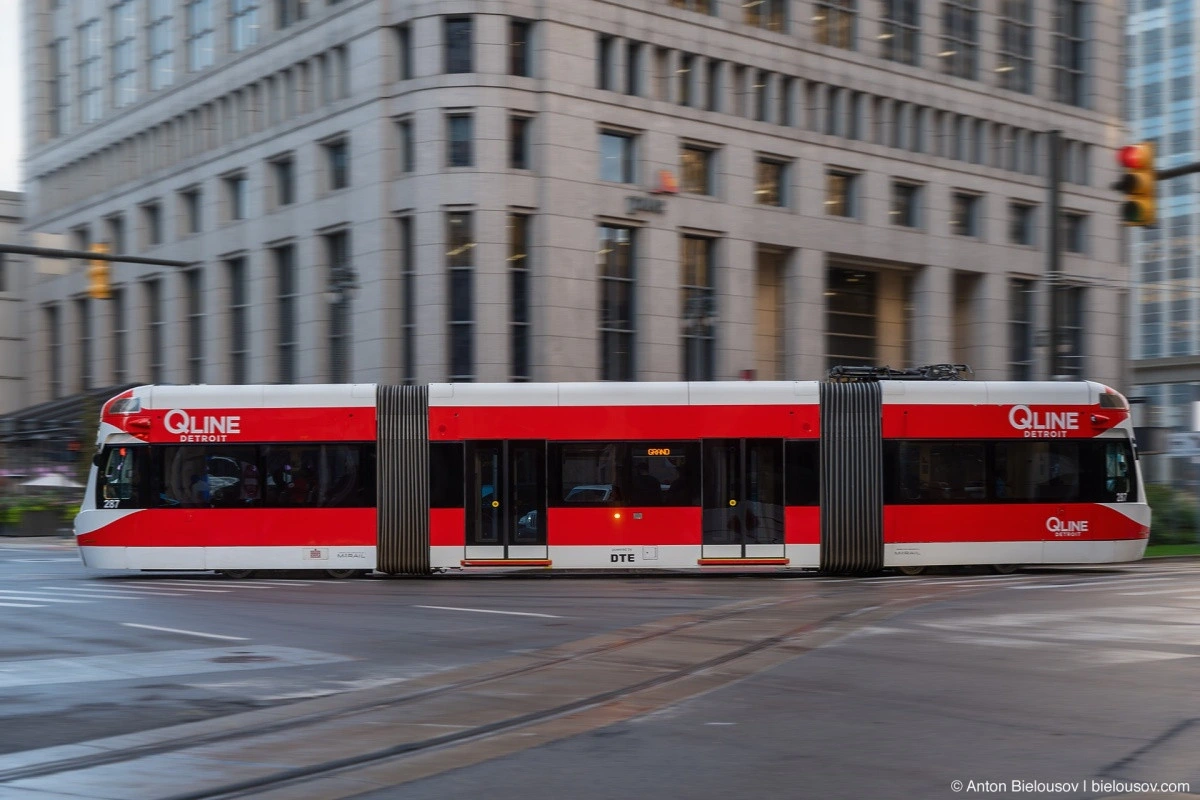
I walked around the new tram a few times before realizing what was unusual — about it and the street in general. It turned out that it… has no wires!
The prayers and curses of photographers around the world have been heard? Just look at the clear blue sky over Woodward Avenue!
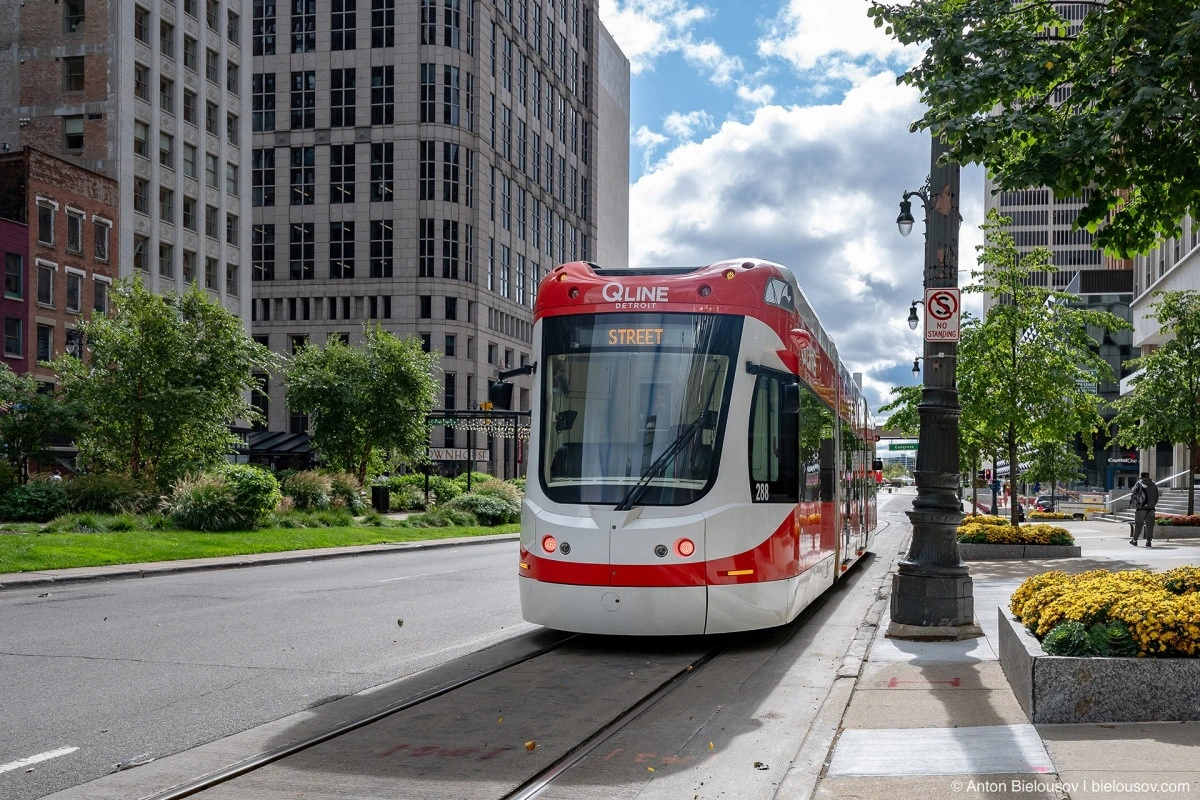
It’s not even about the absence of wires, but rather that they’re there… and then they’re not.

Mostly at stops, short stretches of contact wires are pulled, only a few meters long. When the tram stops, it raises its pantograph to recharge its batteries.
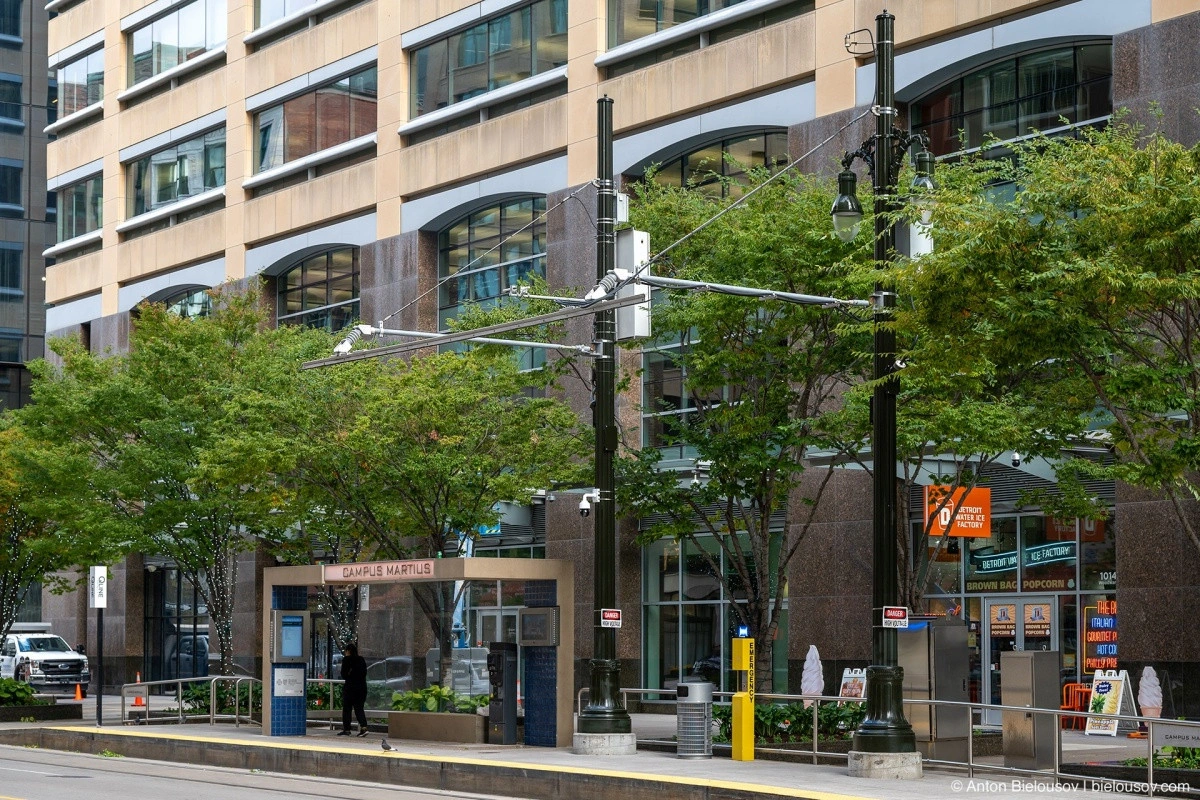
On the 5-kilometer route, there are 20 stops, so there’s no need for a particularly large battery.
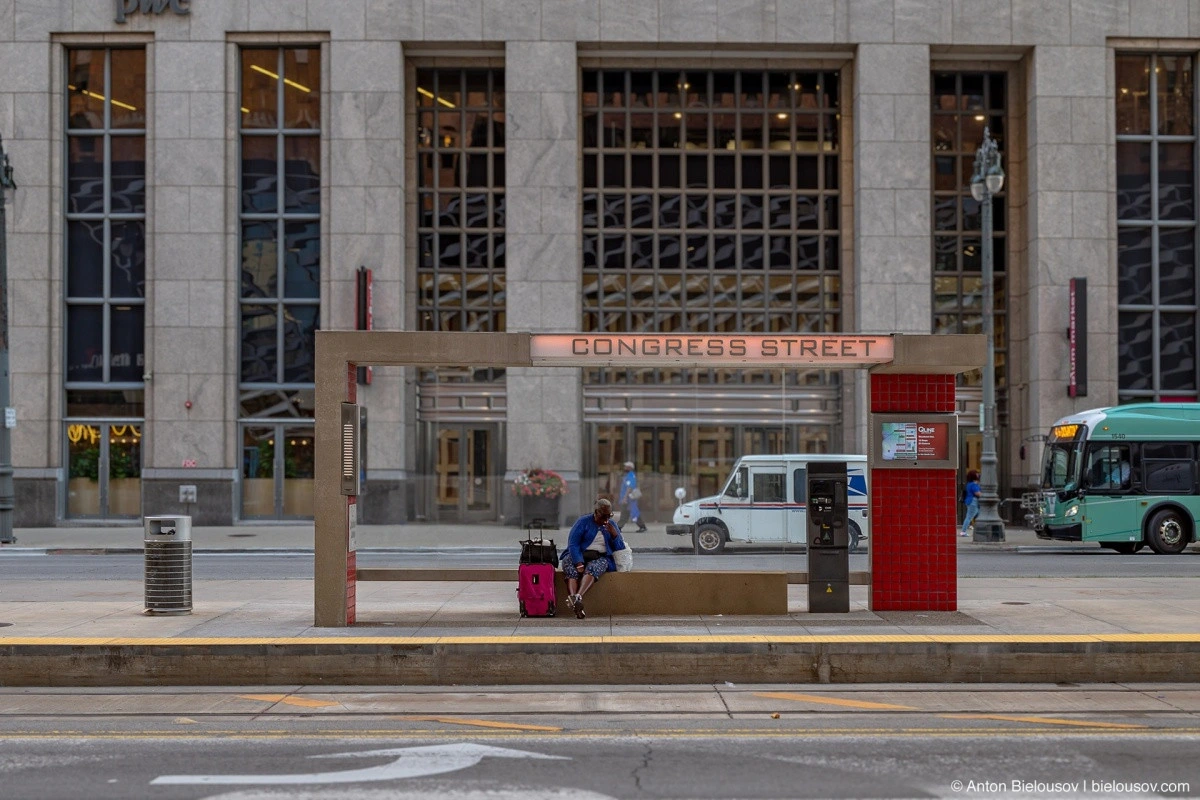
The tram tracks run along the city’s main street and through the Wayne County University campus. You can ride the tram from the river to the history museum, which I hadn’t planned to visit, but how could I not go in?
Most stops (except for a few furthest from the center) are located on the sidewalk side, and all of them have platforms level with the tram doors, making it easy to board with or without a wheelchair.
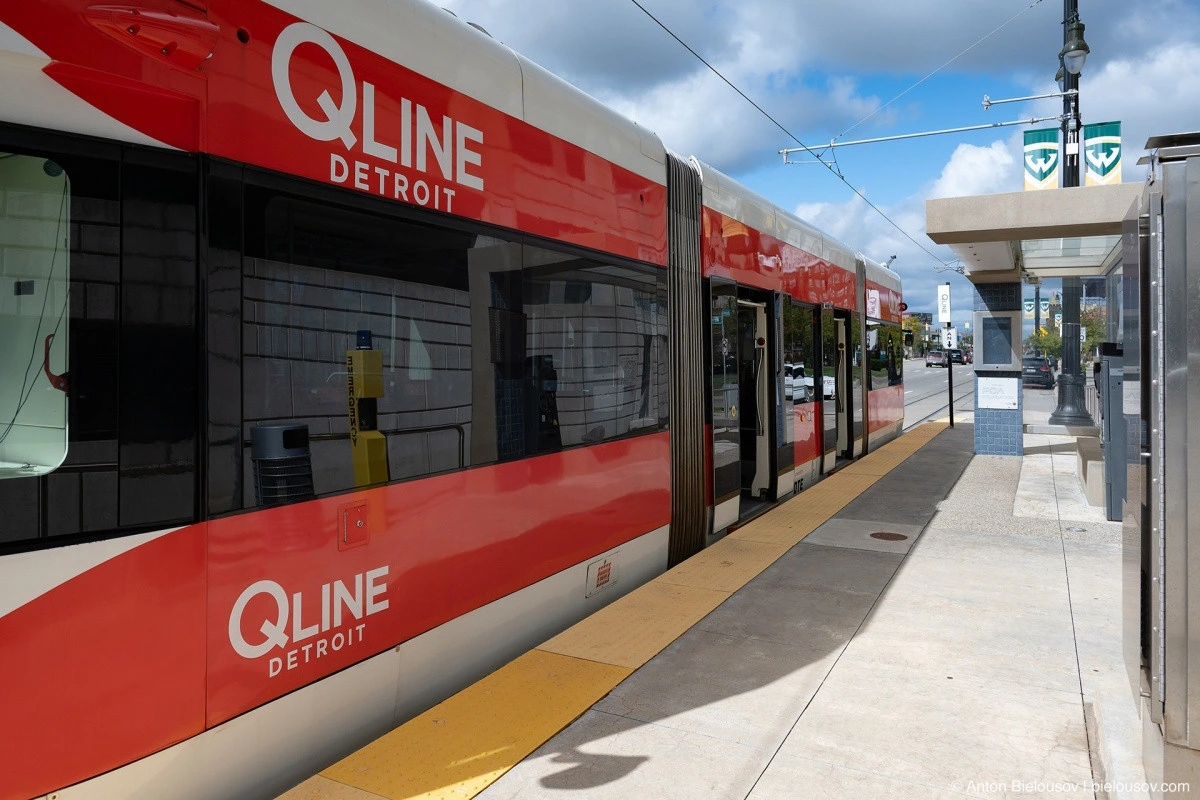
There’s an opinion, of course, that this layout of tracks (at the edges of streets rather than in the center) hinders cars from making turns, but I’d argue that they obstruct no more than bike lanes — at least trams are more noticeable than bicycles. Outside downtown, wires are more frequent than in the center.
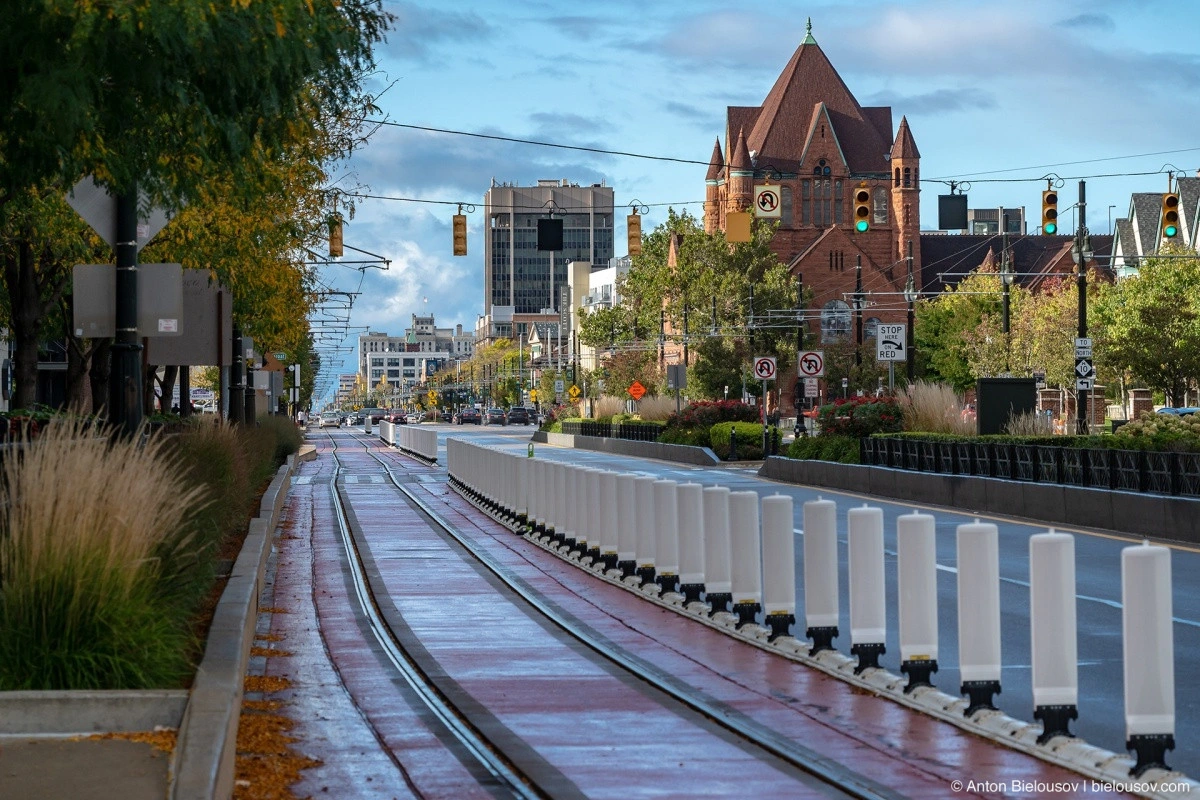
The carriages are filled with instructions — where to place your bike, where your dog should go, which button to press to request a stop.
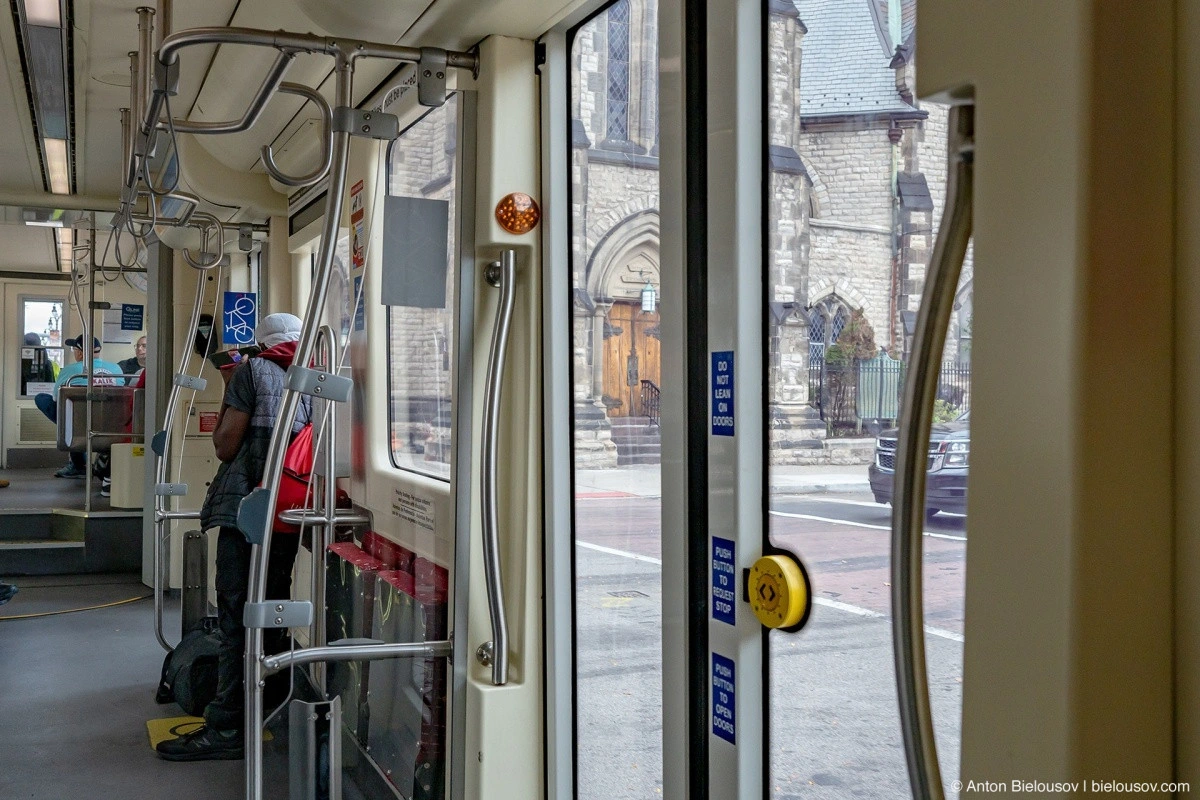
It’s almost overwhelming. But hey, there’s Wi-Fi onboard.
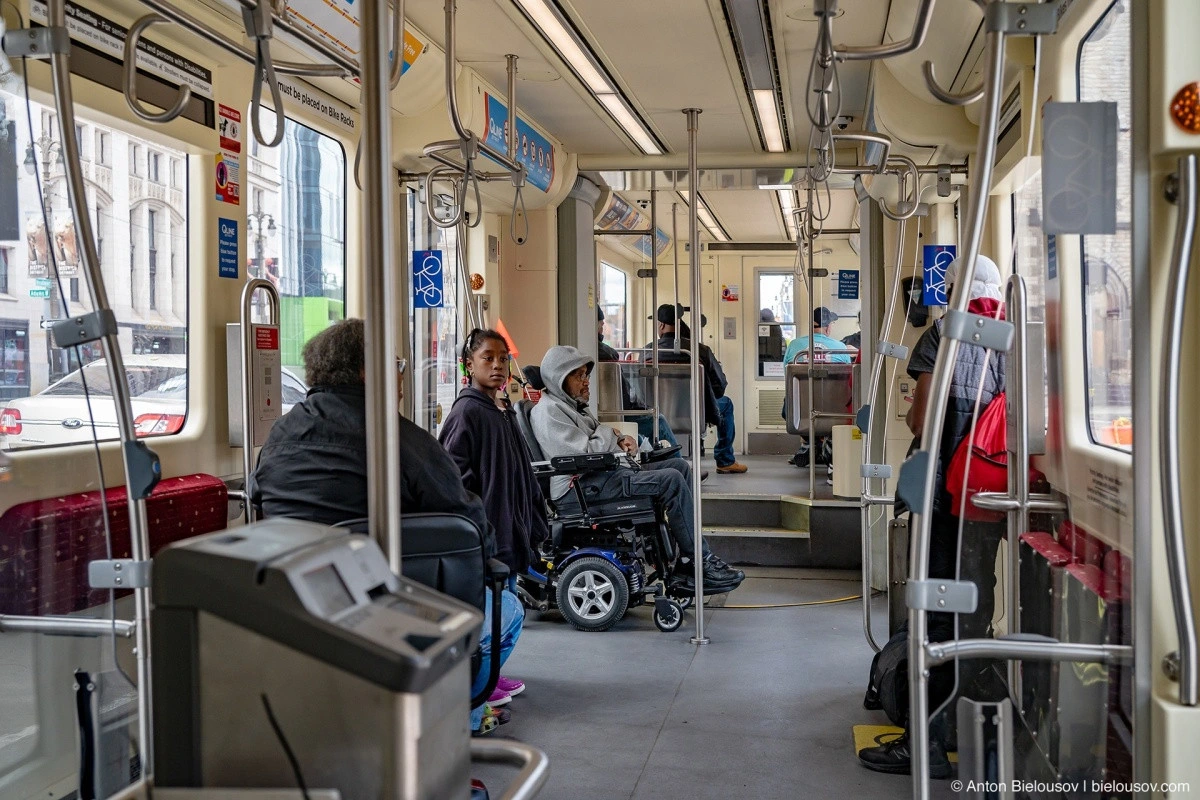
The fare is $2 for 4 hours or $5 for a day pass, and it also includes bus rides. But on Fridays and Saturdays, rides are free.
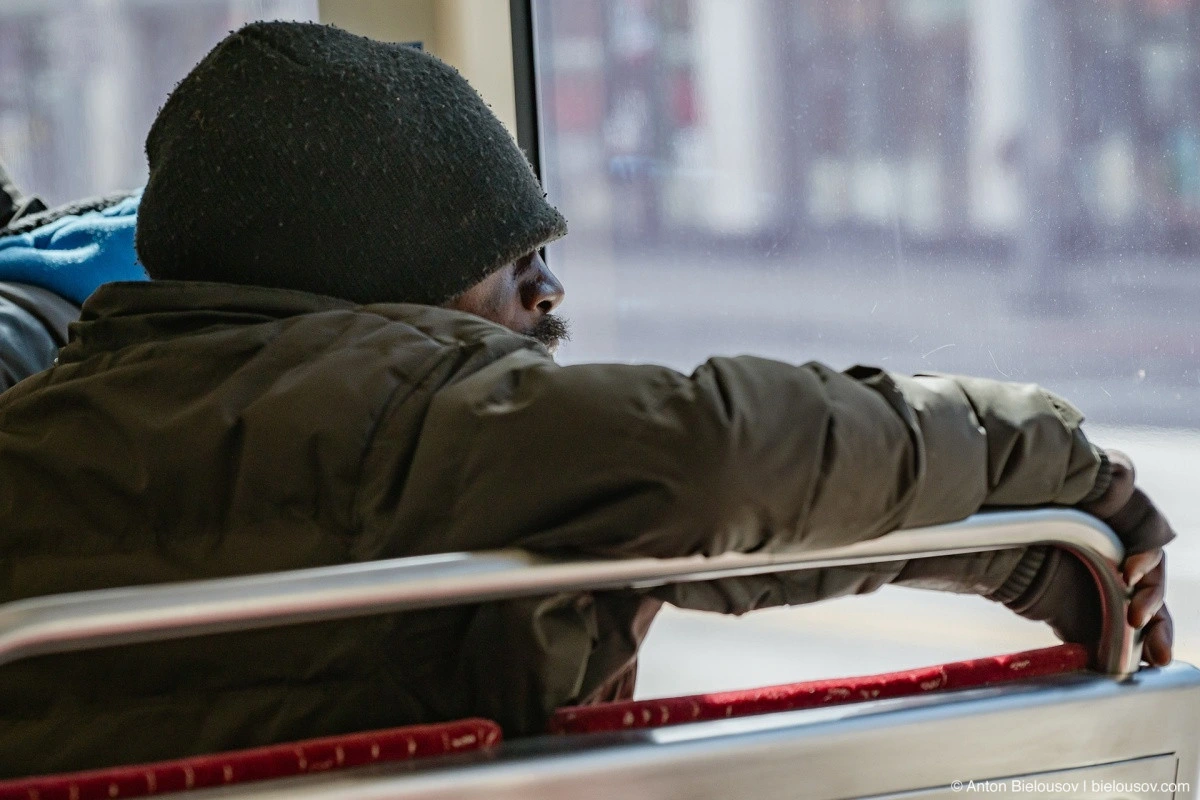
The central bus station of Detroit. The number of routes and vehicles still leaves much to be desired.
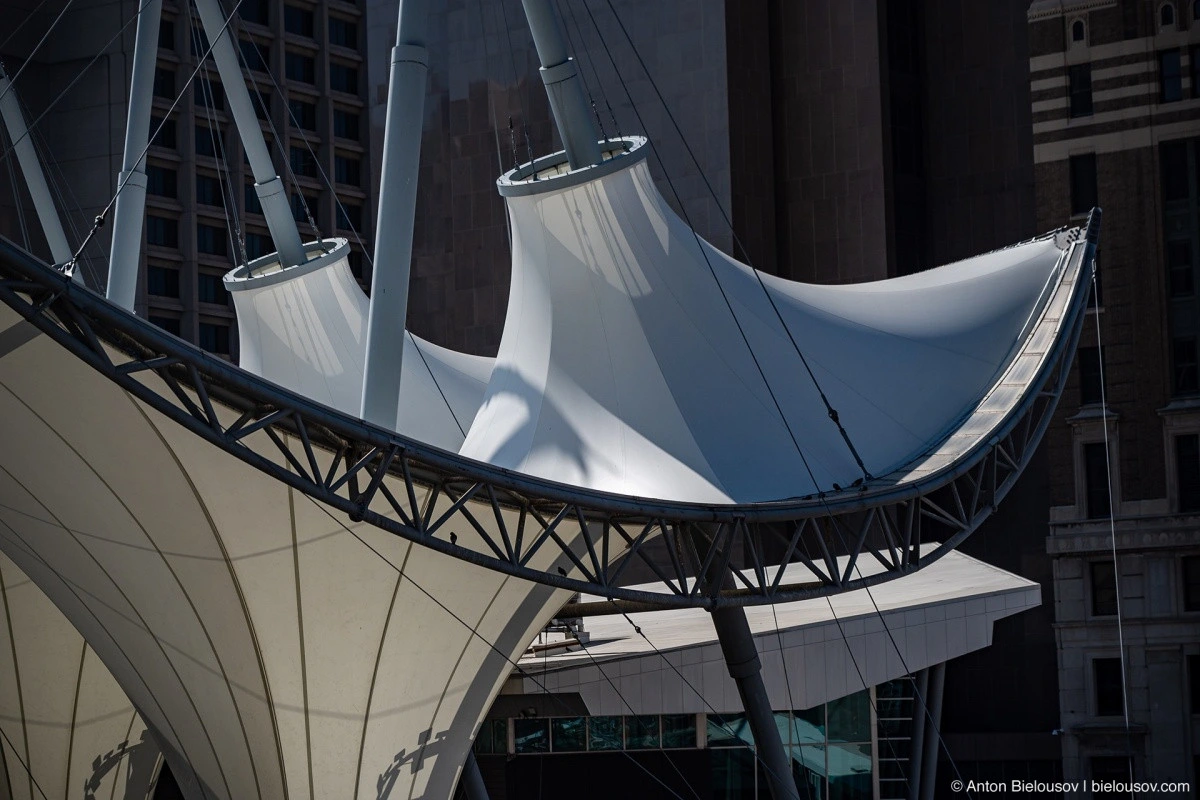
People Mover
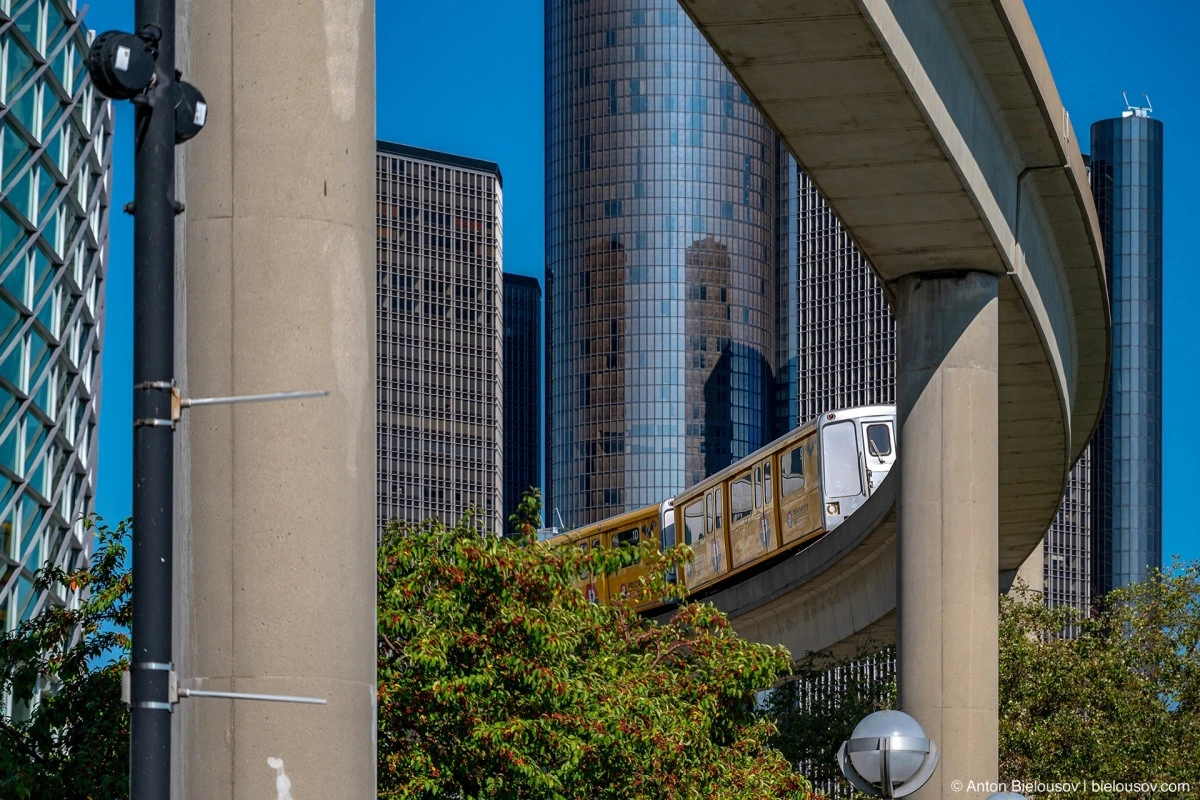
I think the QLine impressed me even more than the automated light metro system with the simple name «People Mover»… or «Human Carrier»?
For the record, Wikipedia calls it «People Mover» as well.
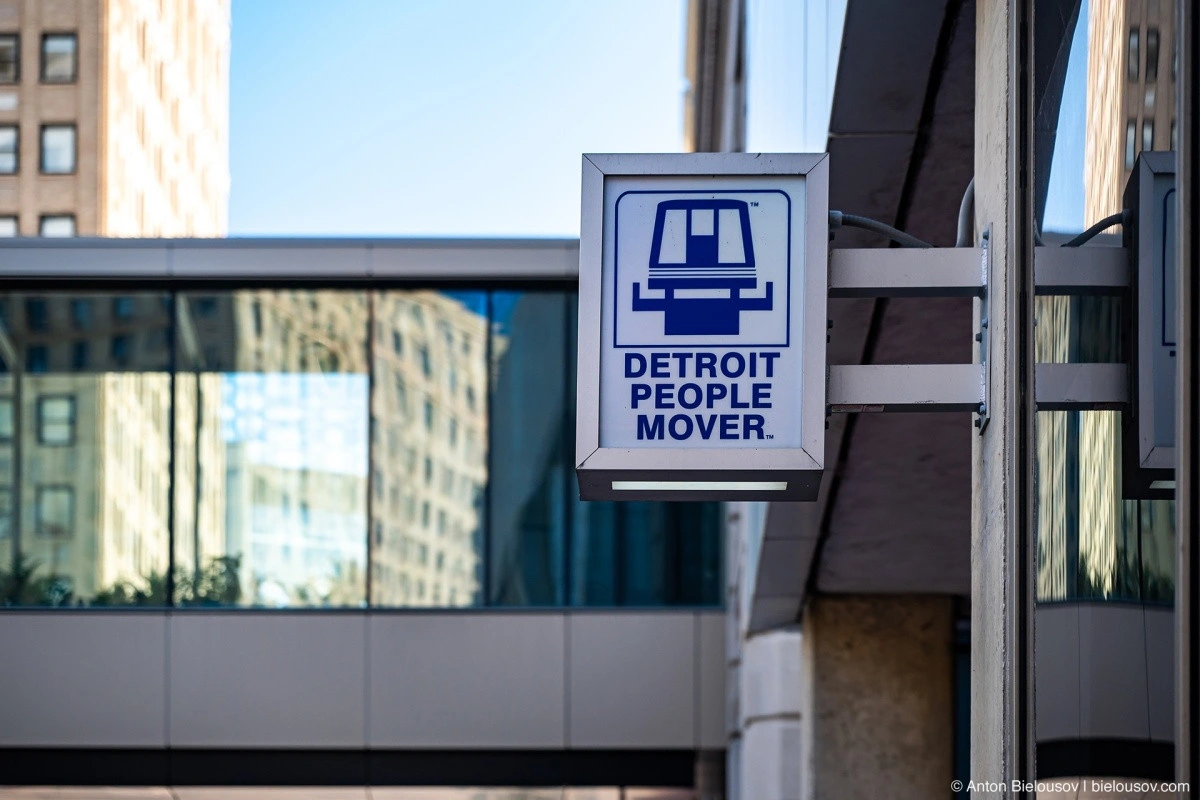
To Vancouver residents, the train may seem quite similar to SkyTrain; I even found a label on the carriage saying «Made in Canada,» but the carriages are tiny, like scaled-down models at 1:1.5.
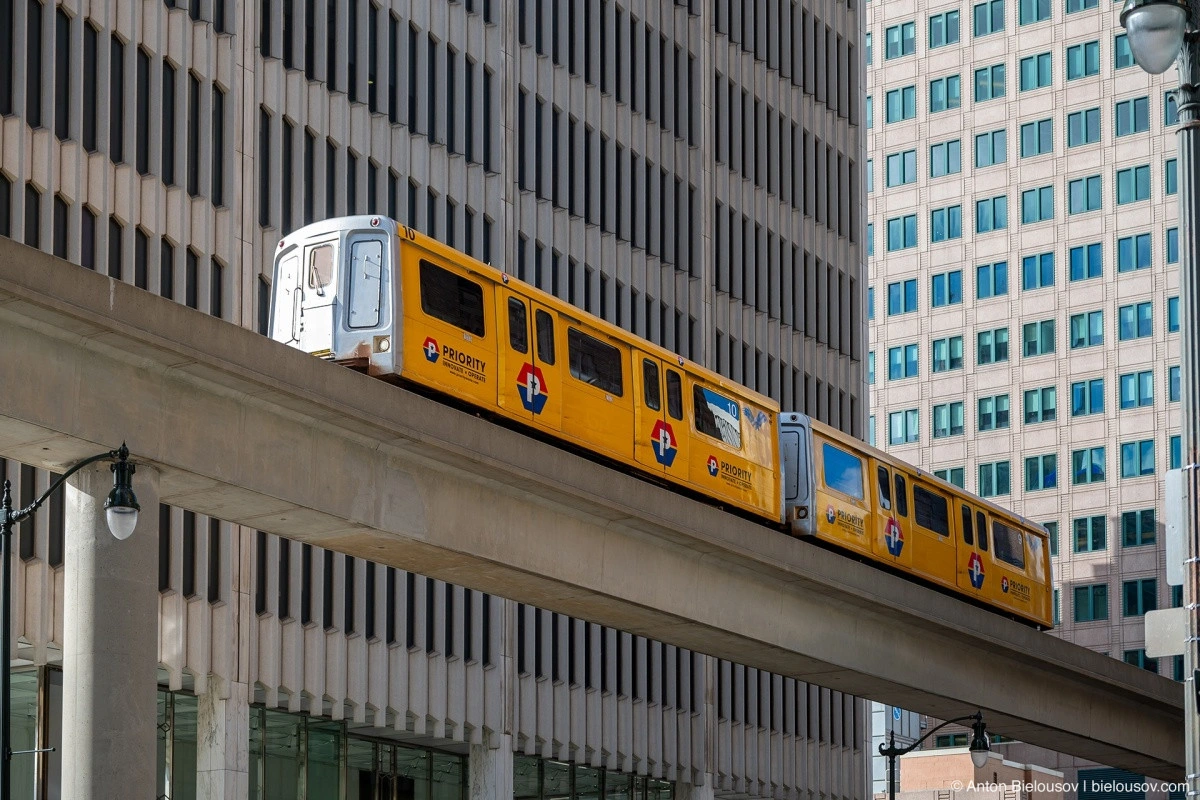
That said, alongside SkyTrain, it’s one of the few automated transport systems in North America.
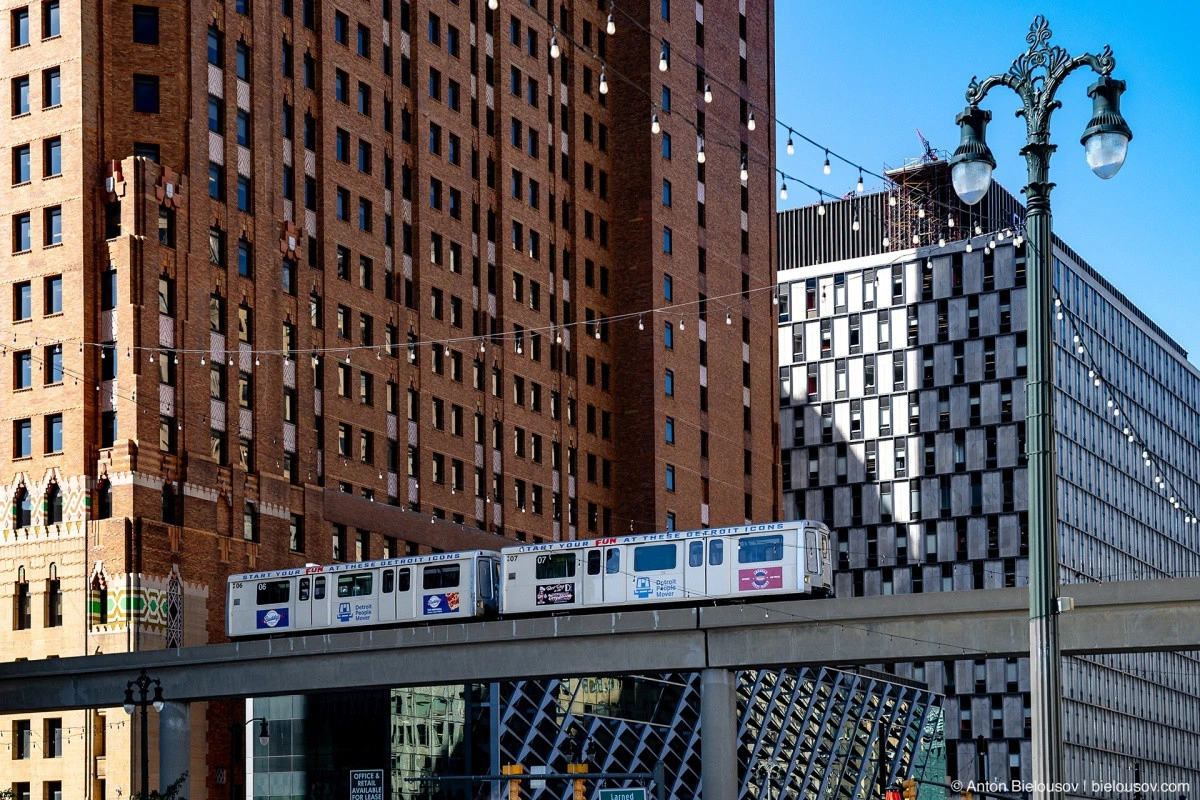
Rides are free during business hours on weekdays, while at other times they cost 75 cents. You can pay with any combination of coins, but if you only have paper bills, you can buy tokens from a machine.
Starting January 2, 2024, People Mover launched a pilot program offering free rides throughout all of 2024.
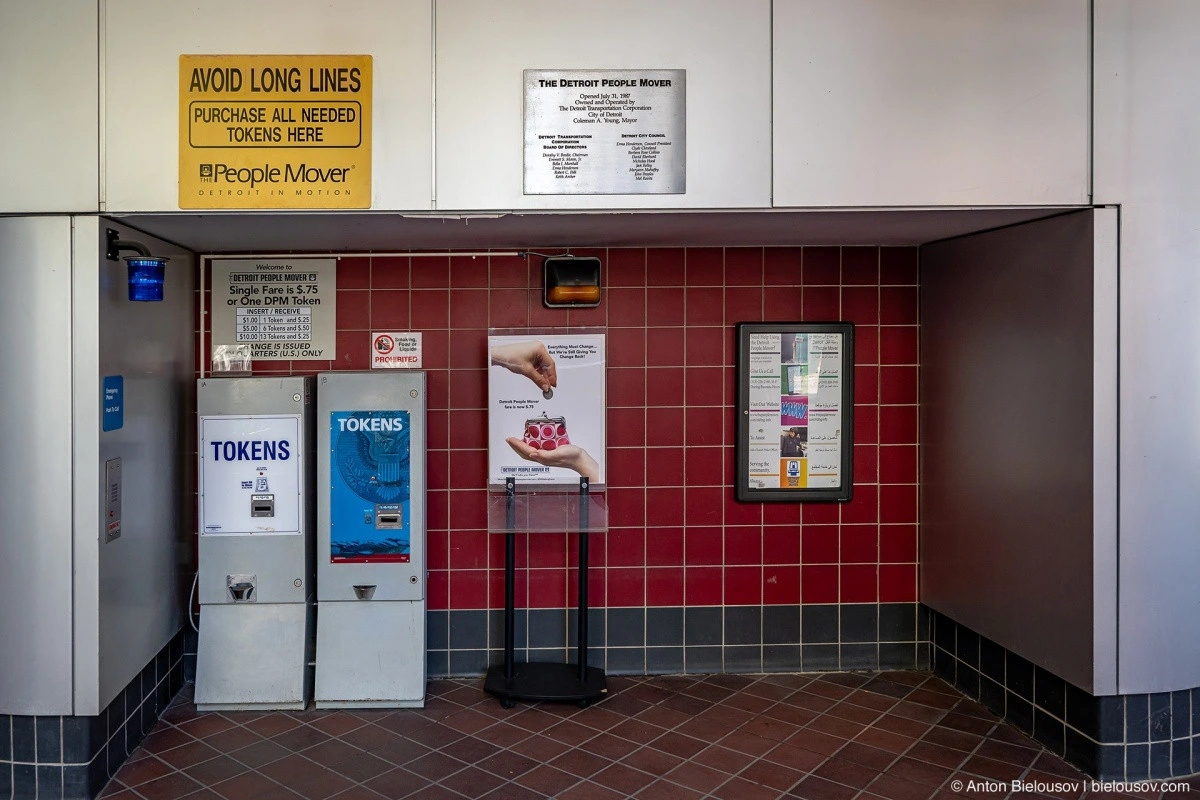
I hadn’t bought tokens since my days with the TTC in Toronto — naturally, I gladly fed a couple of bills into the machine and even took a token home as a souvenir.

The station turnstiles.
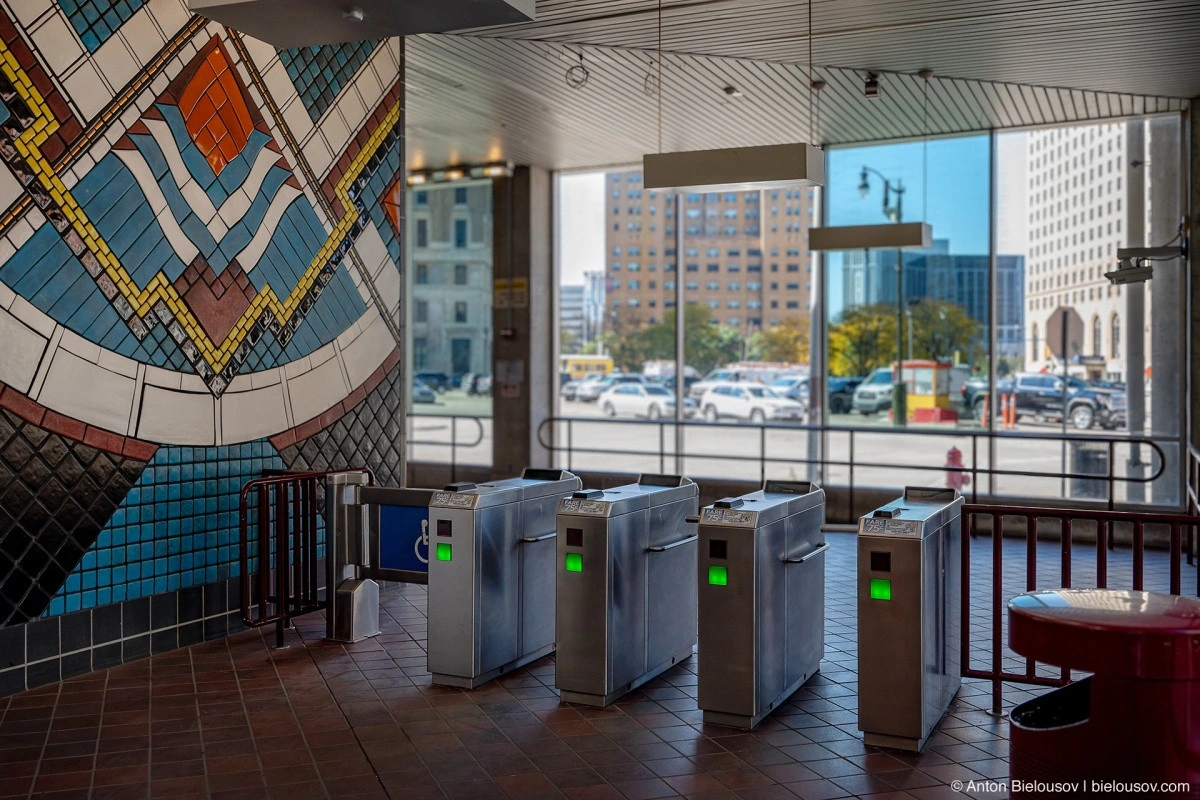
Paid my fare, fair and square.
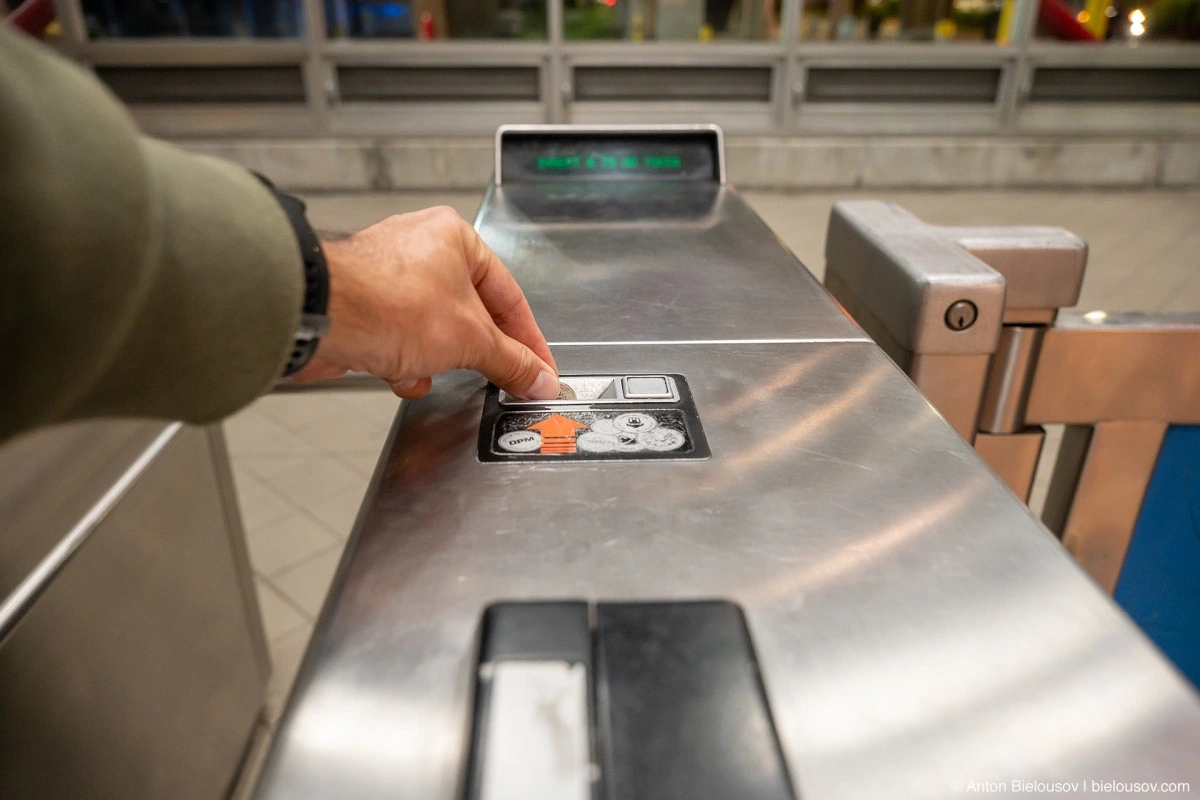
Since People Mover is an elevated metro, every station has an escalator leading up. But the next photo isn’t about the escalator — it’s about the mosaic! It gave me a warm nostalgic shiver from childhood.

The People Mover line is single-track and circular. Trains run at intervals of 5 to 8 minutes.
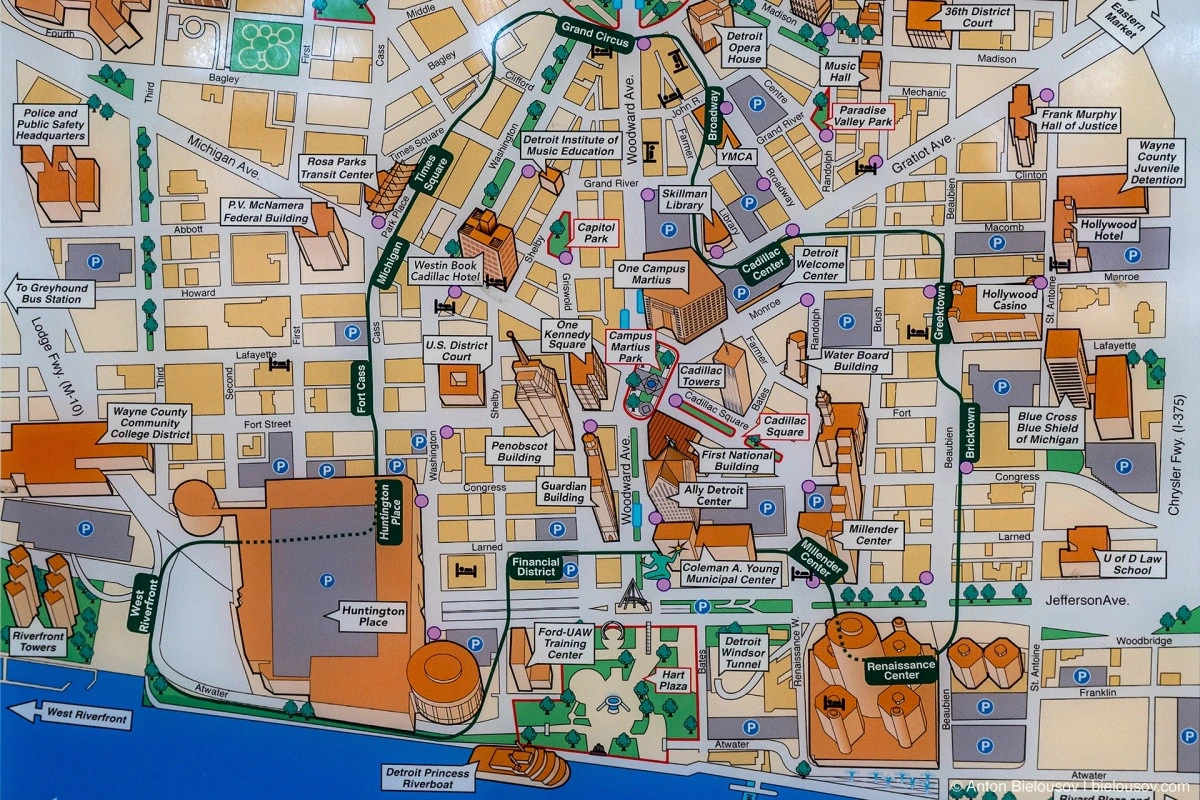
The nearly 5-kilometer route around downtown has 13 stops.
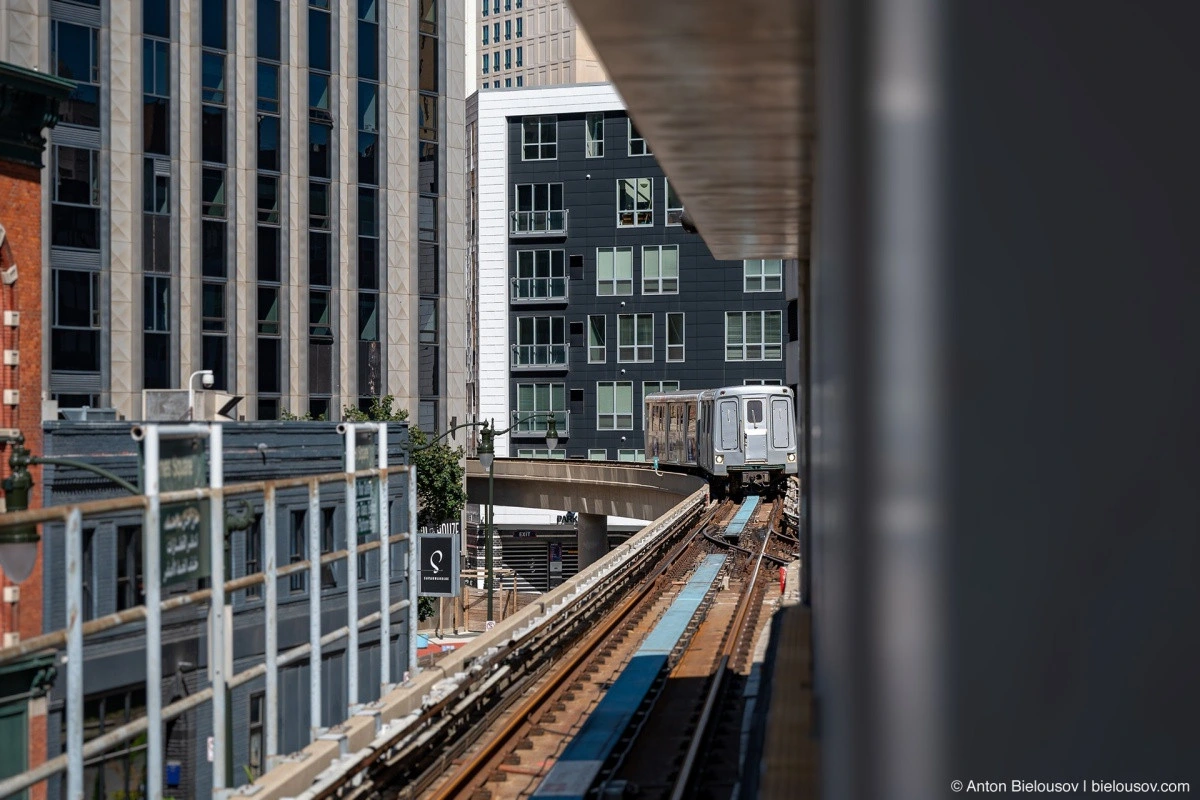
In principle, you can hop on a train and ride it until you’re dizzy.
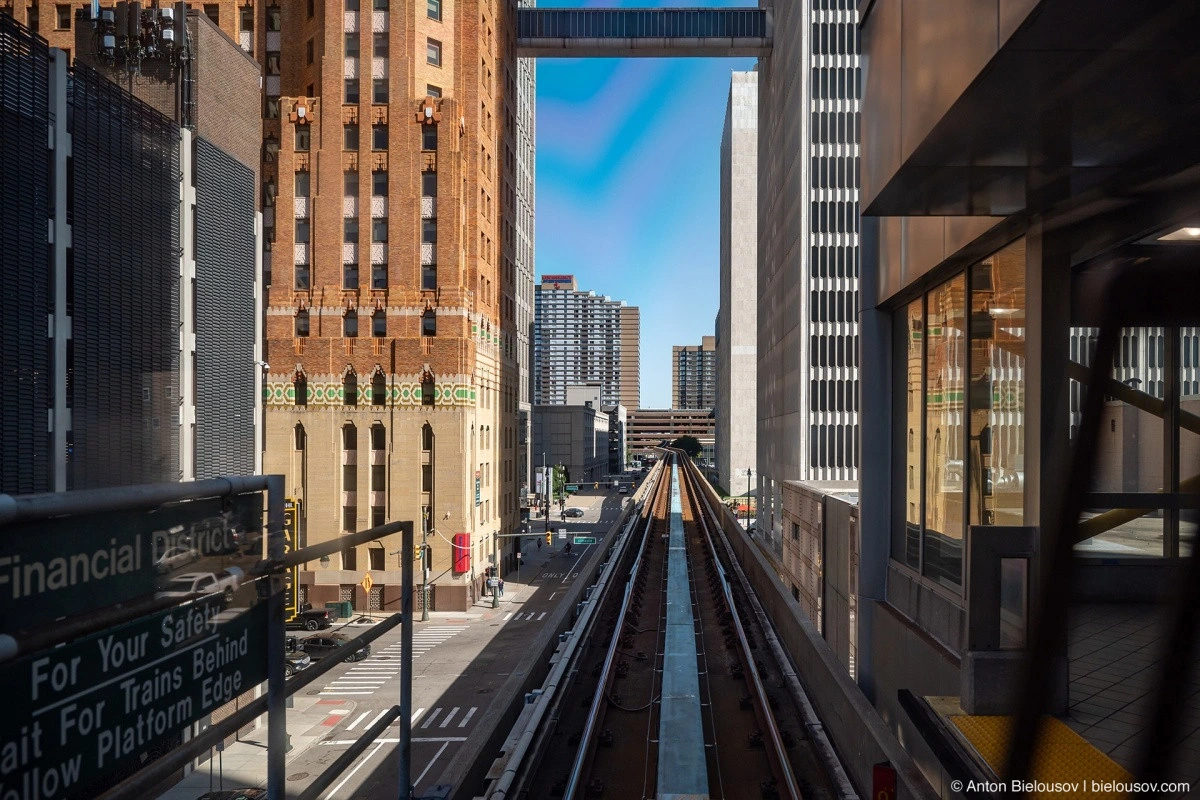
It’s a great way to view downtown from all sides before diving into it.
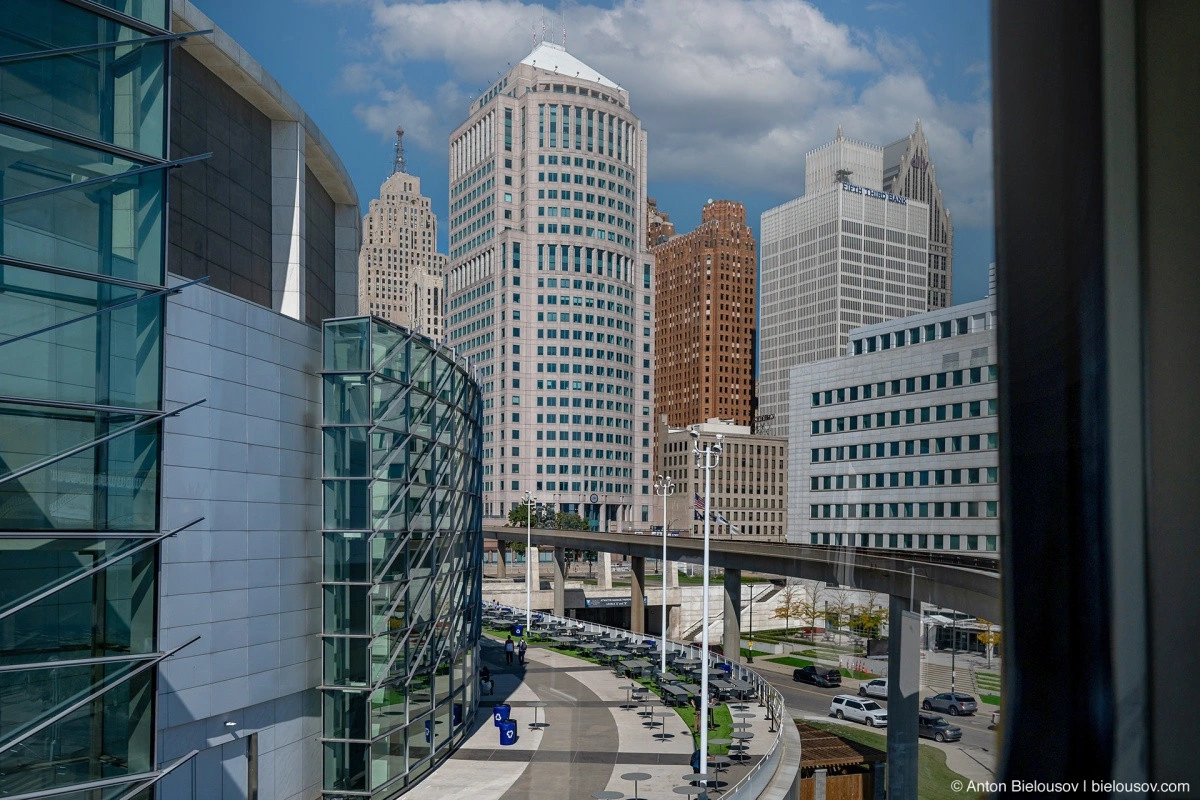
That’s, in fact, how I started my acquaintance with the city, if not for one but…

The problem is that the carriages themselves are somewhat dirty, with smeared and scratched windows, and they have a persistent smell of unwashed humanity inside.
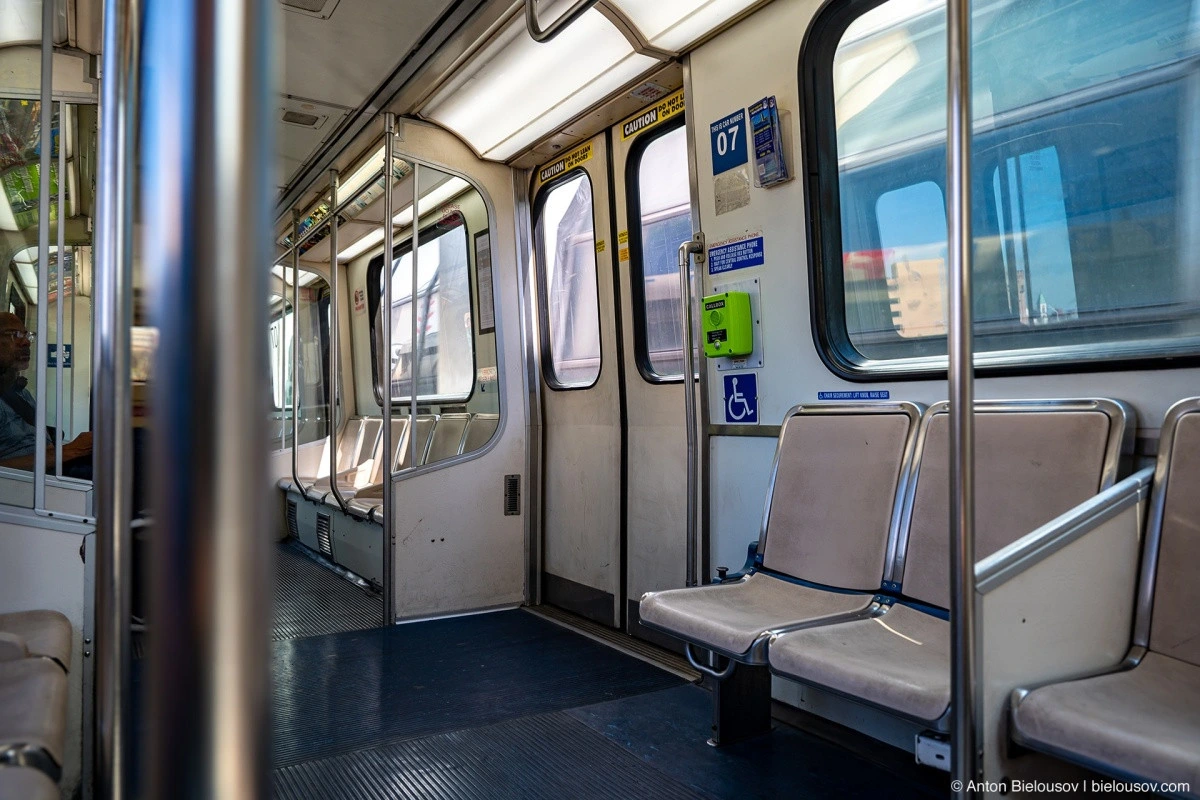
Social ads in the carriage recommend not flaunting gadgets, not attracting attention with annoying sounds, and staying vigilant.

Before the coronavirus pandemic, line security was ensured by transportation police patrols, but afterward, only private security companies are stationed at stops.
During the pandemic, the People Mover and the newly opened QLine were halted for nearly 2 years.
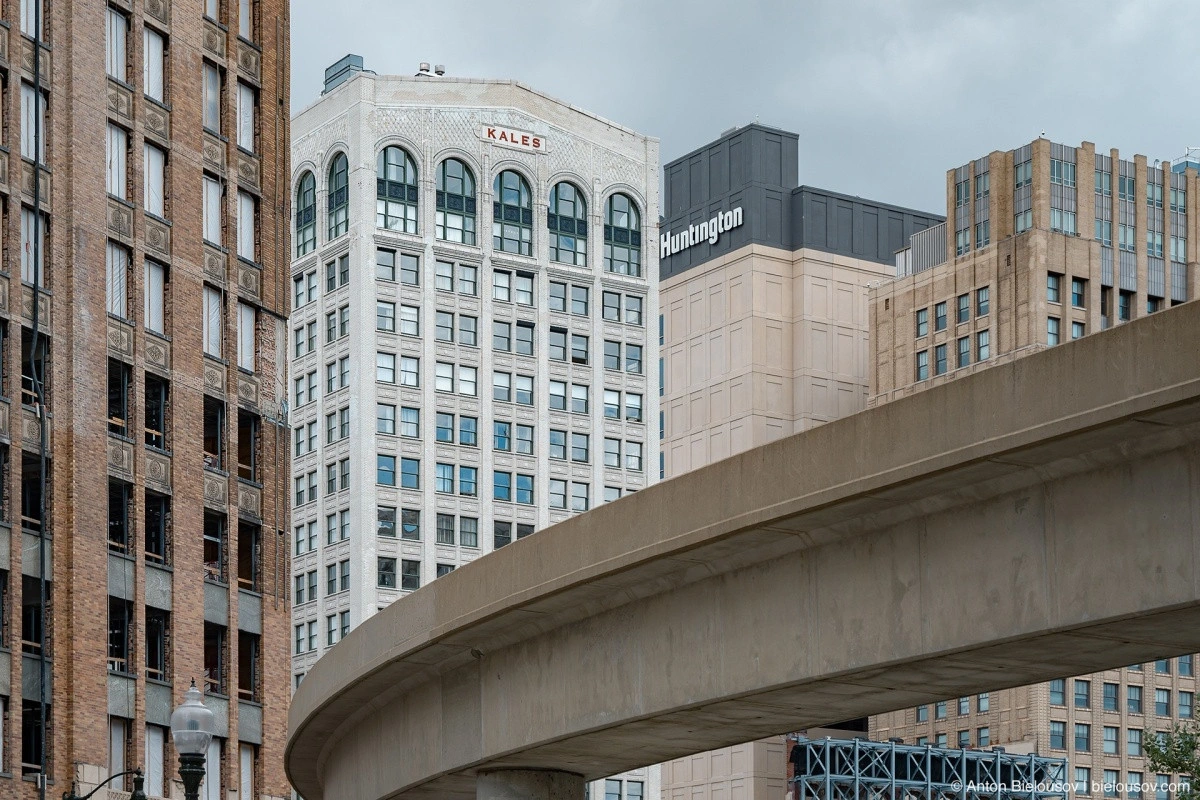
The People Mover turned out not only to be a convenient tour around downtown for 75 cents but also quite a useful means of public transportation (unlike Seattle’s monorail). For instance, I saw workers from numerous construction sites in downtown using it during lunch breaks, and I myself rode halfway across the city on it to buy a special Detroit-style pizza…
Food in Detroit
Knowing the situation in Detroit well, I had no expectations whatsoever of its cuisine. And, as often happens when you have no expectations, I was pleasantly surprised in the end. Of course, Detroit isn’t a country, and talking about some national cuisine here wouldn’t make sense, so there are only two criteria — the overall quality of the restaurant business and the presence of some signature dish.

What I almost couldn’t find in Detroit (within walking distance without a car, at least) was any sort of local brewery. That’s because Detroit prefers something stronger — here, you’re more likely to find private distilleries producing whiskey (hence the name Corktown, which literally means «cork town»).

When, tired from wandering around Corktown, I ordered a beer at one of them, they brought me… two.

When I asked, «Who’s the second one for?» they replied that they feel very sad when visitors drink alone, so they serve the beer in two half-sized mugs so I could clink glasses with myself! Haha! Fair enough. I clinked glasses, discussed the results of the photoshoot, and even argued about future plans.
These are the kinds of details I’m talking about — this, and a little extra attention to the interior than just doing basic renovations. In Vancouver, you get used to gloomy eateries where the only thing “restaurant” about them is the price.
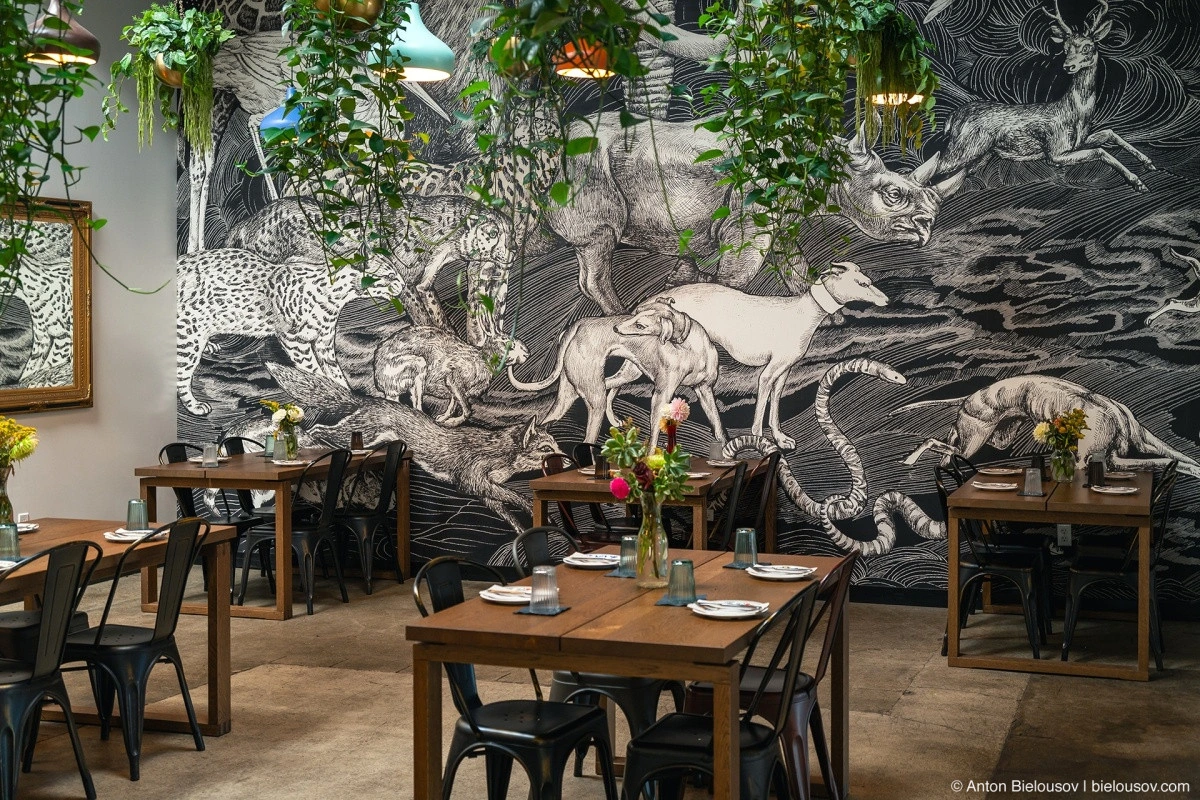
Right in the city center, there’s this little spot — American Coney Island.
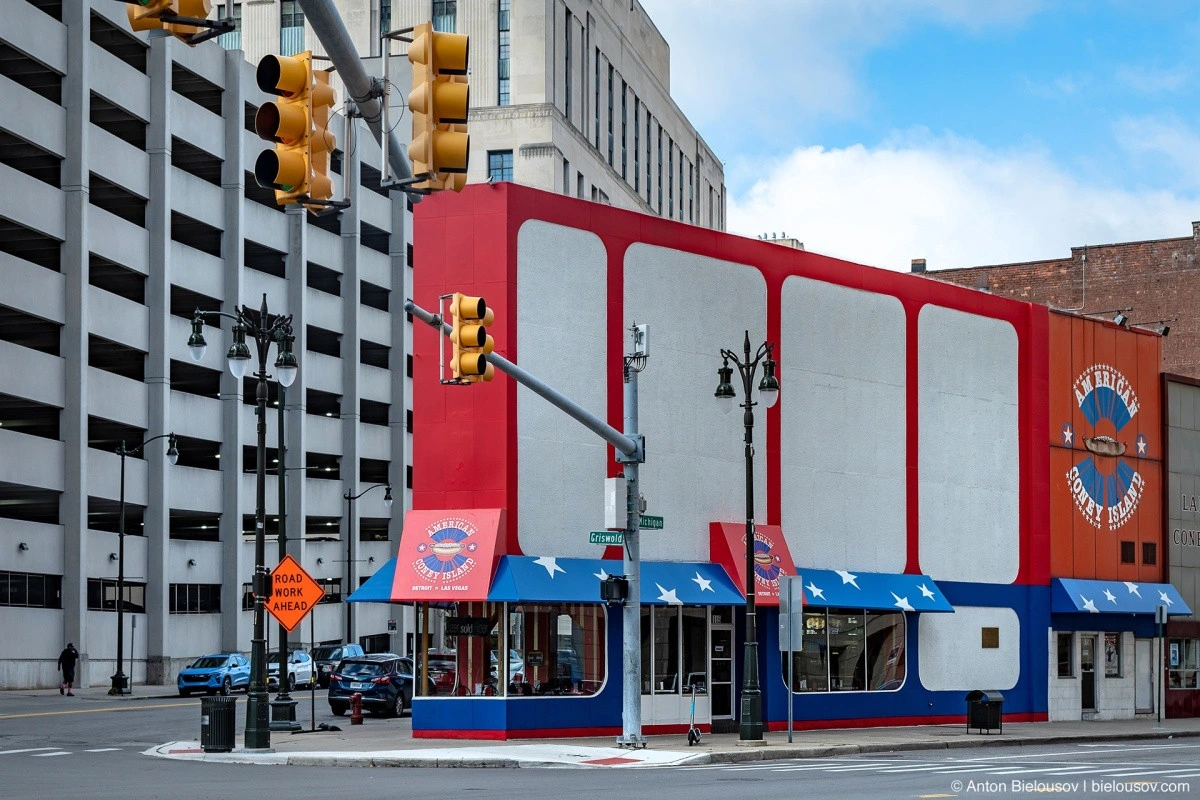
Opened in 1917, this atmospheric restaurant has been offering its famous hot dogs for over a century.
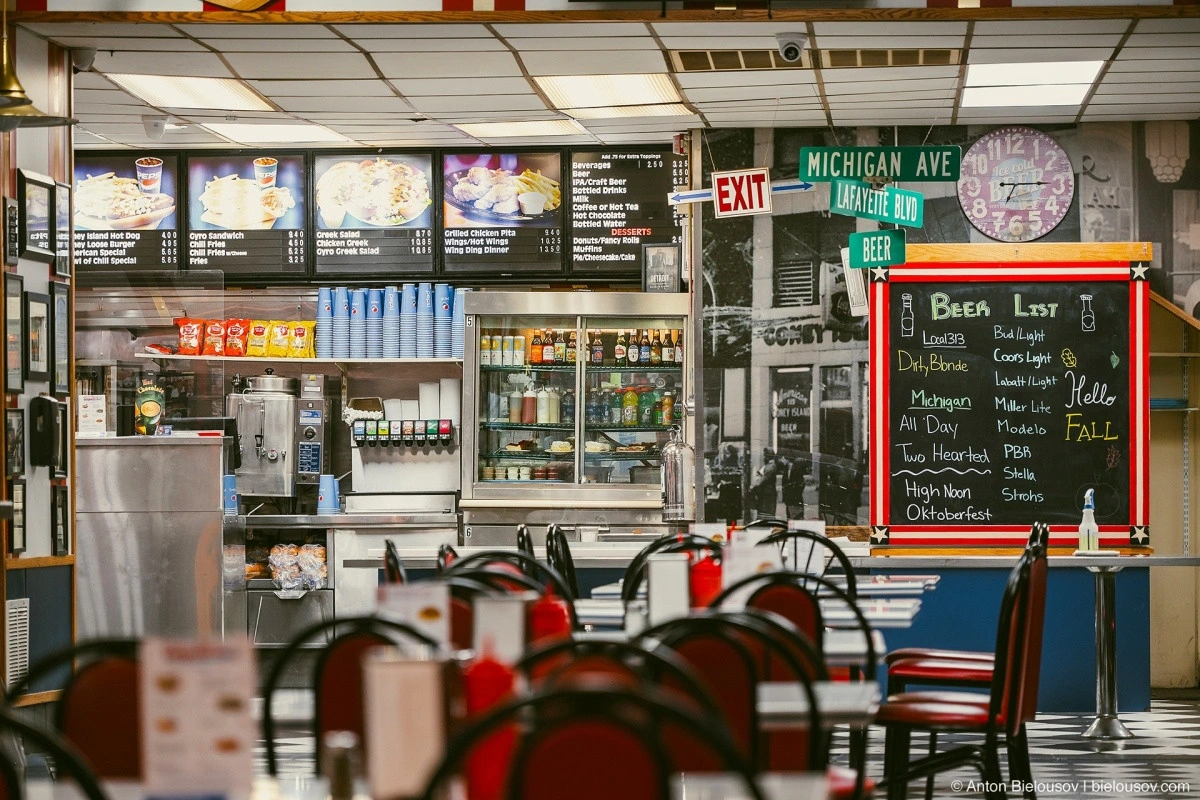
The Coney Dog, priced at $4, includes a rather small Vienna sausage on a steamed bun along with the signature chili and gravy sauce, mustard, and chopped onions. It even has its own Wikipedia page!
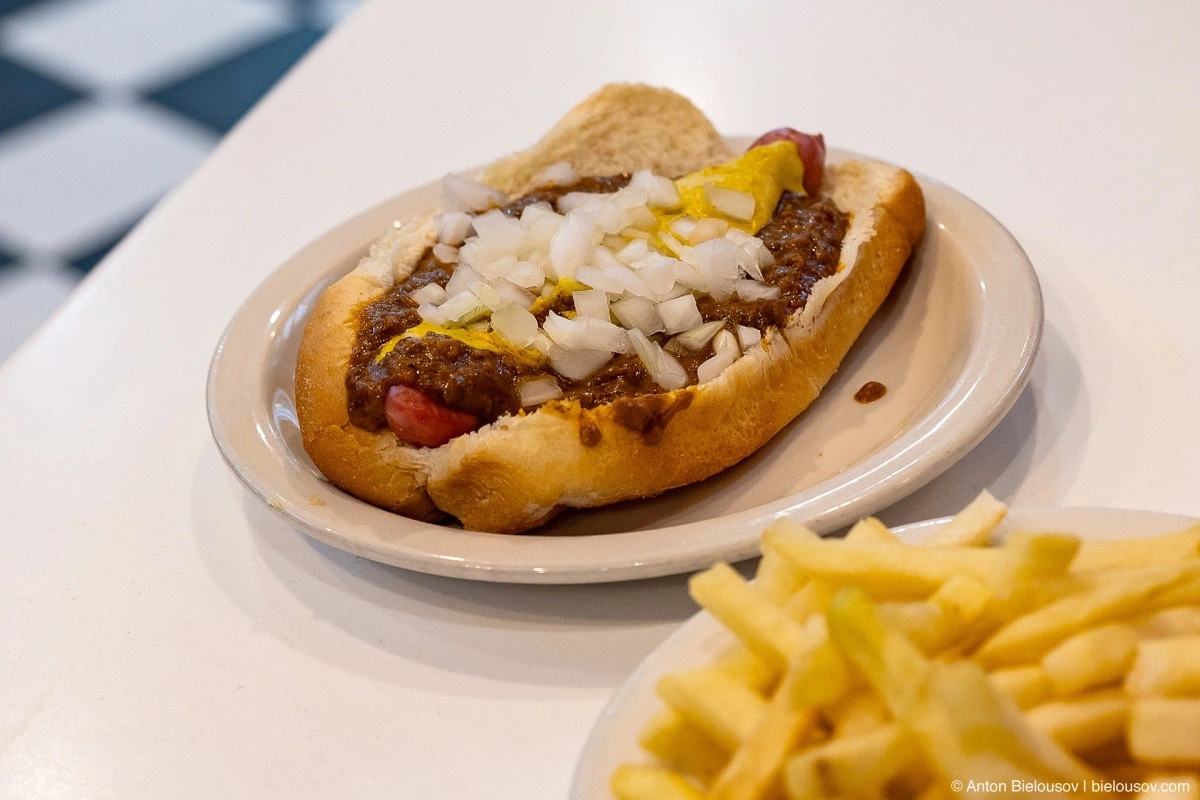
I wouldn’t say it’s to die for, but it’s worth trying — it’s hard to compete with Costco’s jumbo dog for $1.50, but it’s quite good.
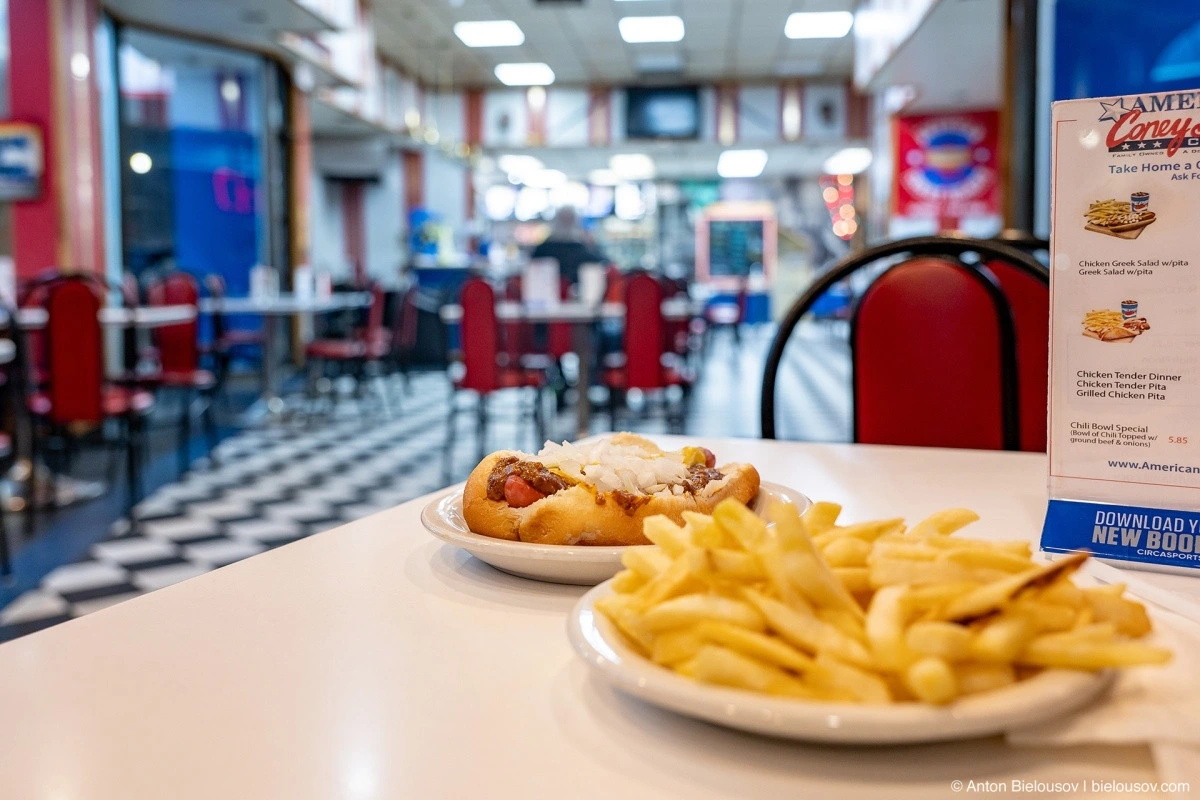
The main reason to come here isn’t for the hot dog, but for the atmosphere of a classic American diner from the 50s. What makes it authentic isn’t the checkered floor or red iron furniture, but this person.
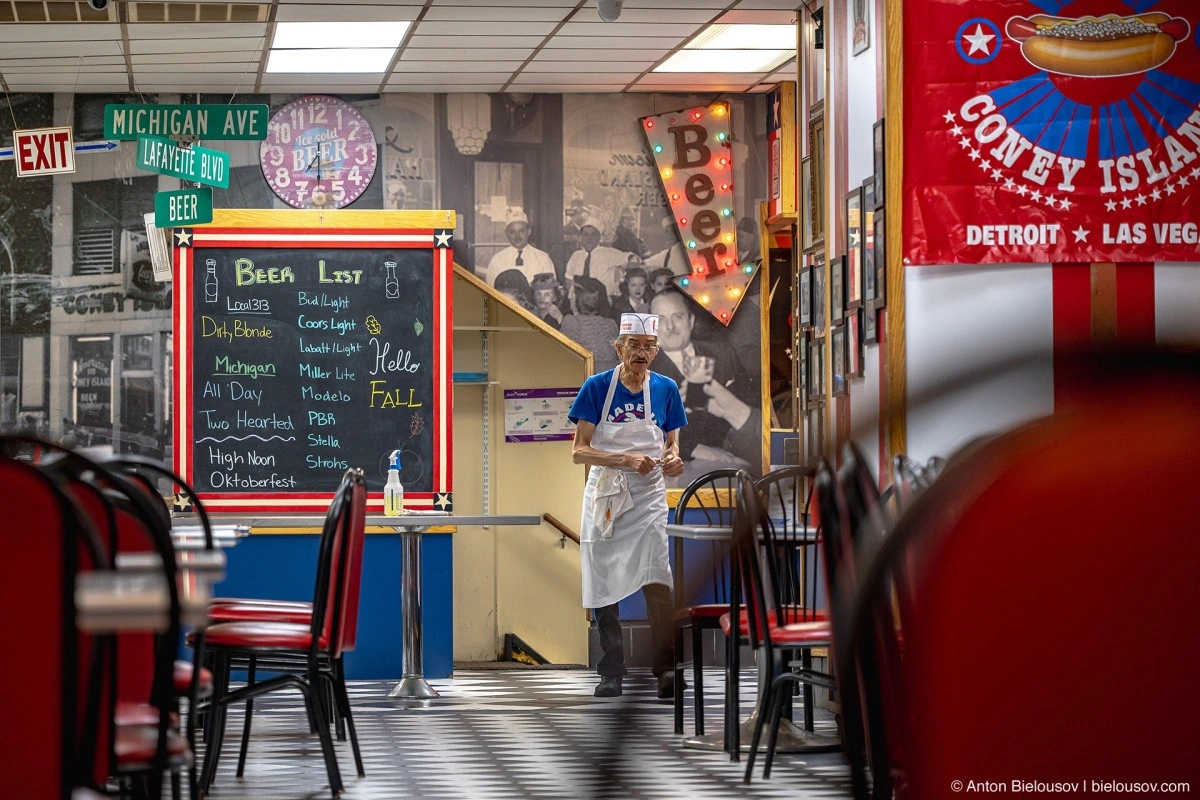
Bobbie is undoubtedly the soul of this restaurant. For instance, as soon as he takes your order, he shouts it to the kitchen while walking back, sometimes adding a few of his own comments about it.
And you can also grab a table at the very corner with a stunning view of all three surrounding streets.
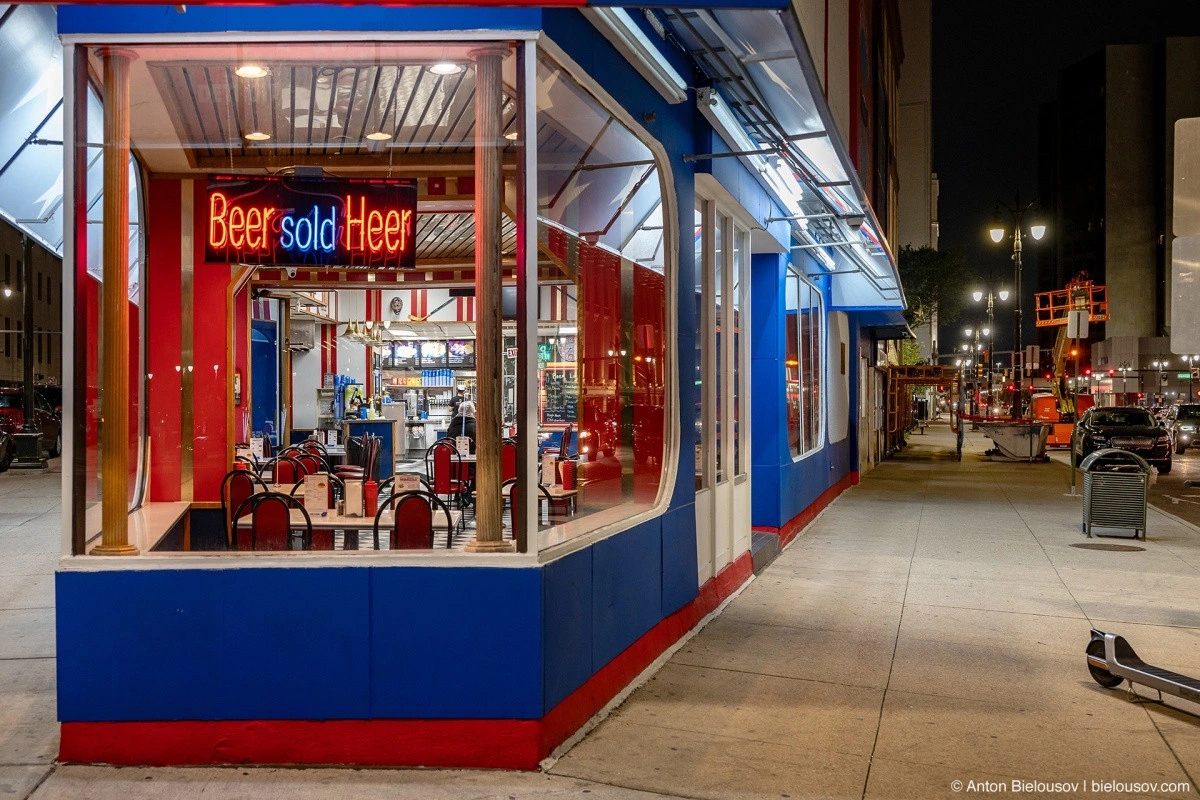
However, the signature dish of Detroit isn’t the Coney Dog, but Detroit-style pan pizza.
Authentic Detroit-style pizza has two features. Firstly, it must be square. As explained to me, that’s because… round pizza isn’t Detroit-style pizza. Fair enough.
Secondly, the sauce must be on top of the toppings, not on the dough. Or the cheese must be on the bottom, depending on how you look at it. I suspect the reasoning is similar to the first point.

Detroit-style pizza originated in the 1940s and can be found under this name in many U.S. states.
Replace pepperoni with lamb, add feta and spinach to mozzarella, and you’ll effortlessly get one of the tastiest pizzas I’ve ever tried (Nikki’s Pizza in the Greektown neighborhood comes highly recommended!).
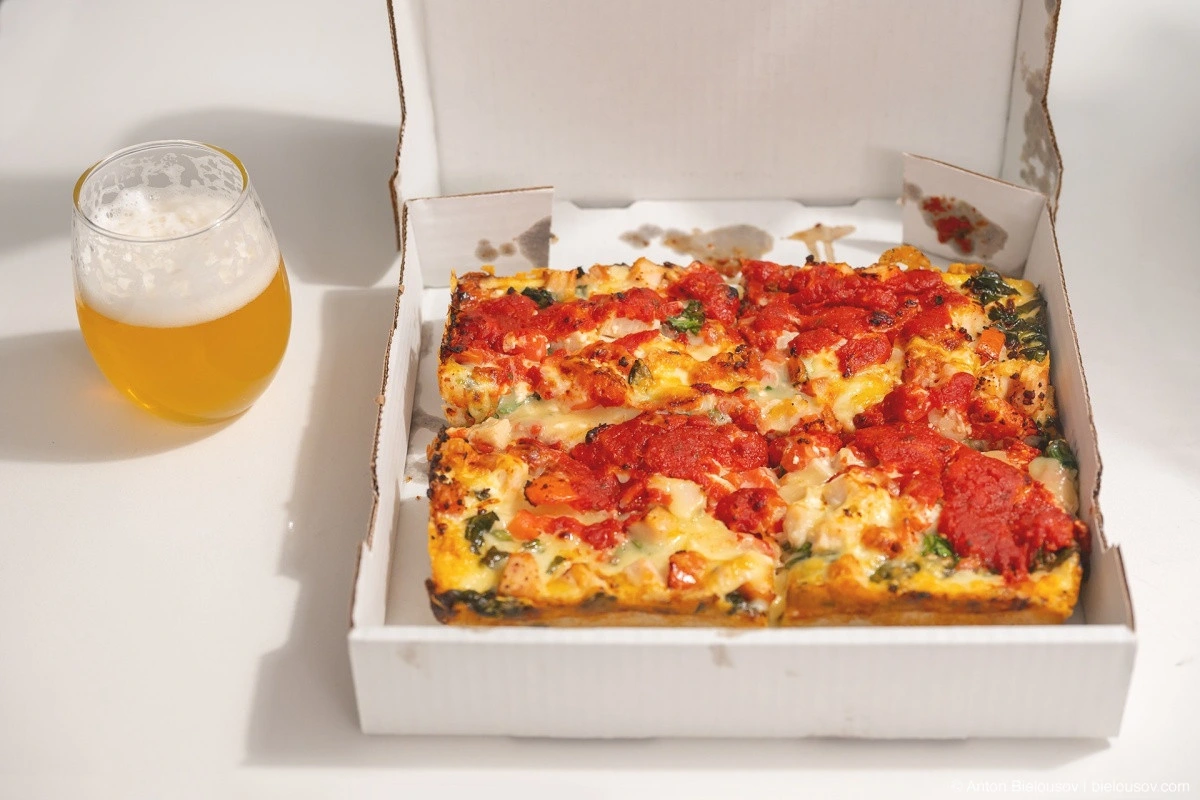
Speaking of pizza, Little Caesars — known under its own brand as well as subsidiary companies Domino’s Pizza and Pizza Hut, and serving as the inspiration for Little Nero’s Pizza from Home Alone — was founded right here in Detroit. And it wouldn’t feel right to wrap up such a long post about Detroit without saying a few words about its people.

Everyone kept asking me when the post about the “bad Detroit” would be, how I crossed the border with a rifle, and all that. But it won’t happen. Honestly, one of the biggest shocks about Detroit was how friendly, communicative, and generally much more open and welcoming people on the streets are compared to those back in Vancouver.

People with their own problems but continuing to smile.

Stylishly dressed.
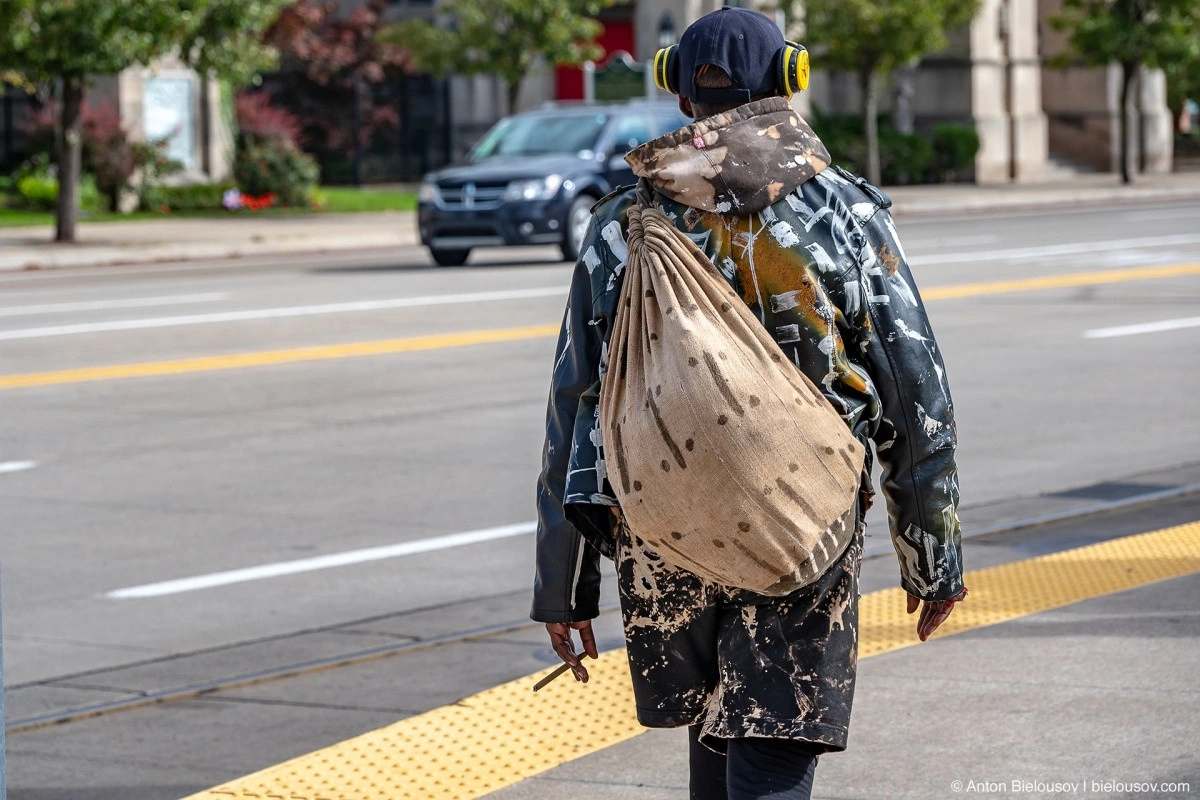
By the way, Miss State with her boyfriend, for a moment…

As evening falls, the city’s atmosphere might darken slightly, but no more than in nighttime Seattle or Portland.
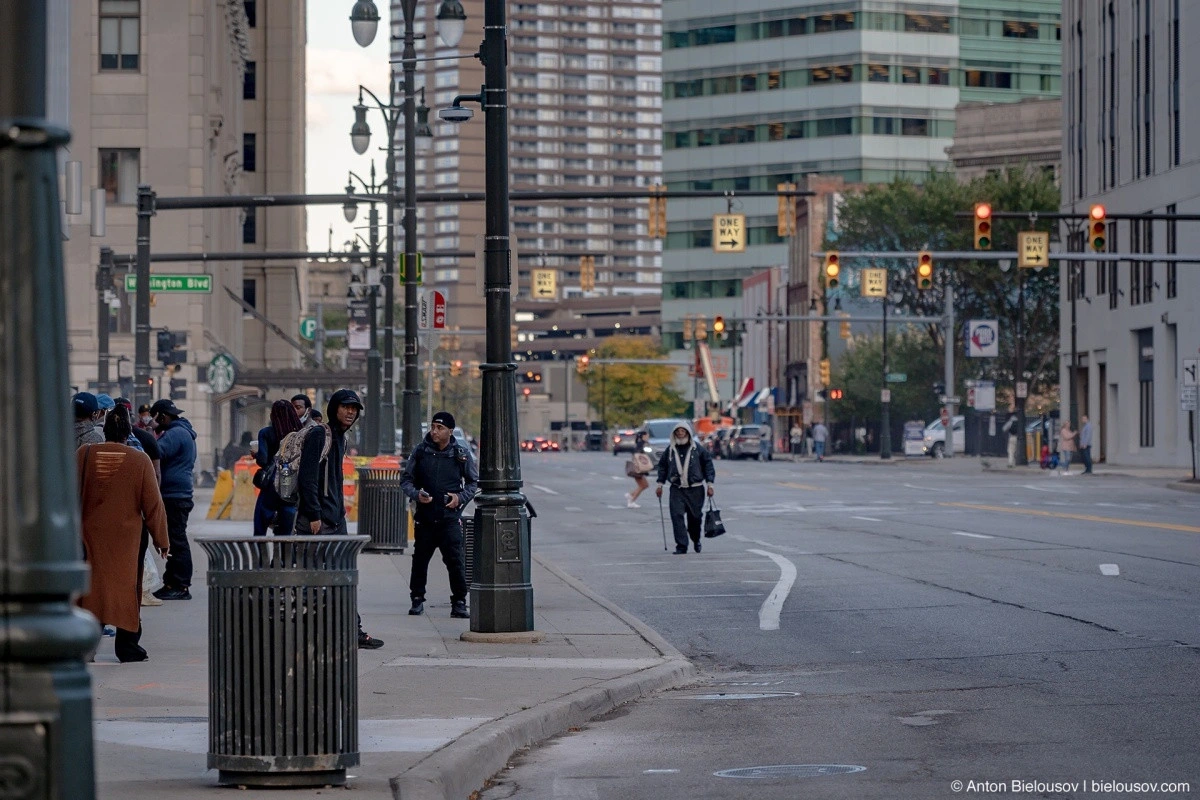
Outside the casino, well past midnight, I encountered a large man, nearly two meters tall, wearing a T-shirt with the slogan «Don’t be afraid of Detroit» — and this is precisely the message I’d like to convey about this city: don’t fear Detroit.
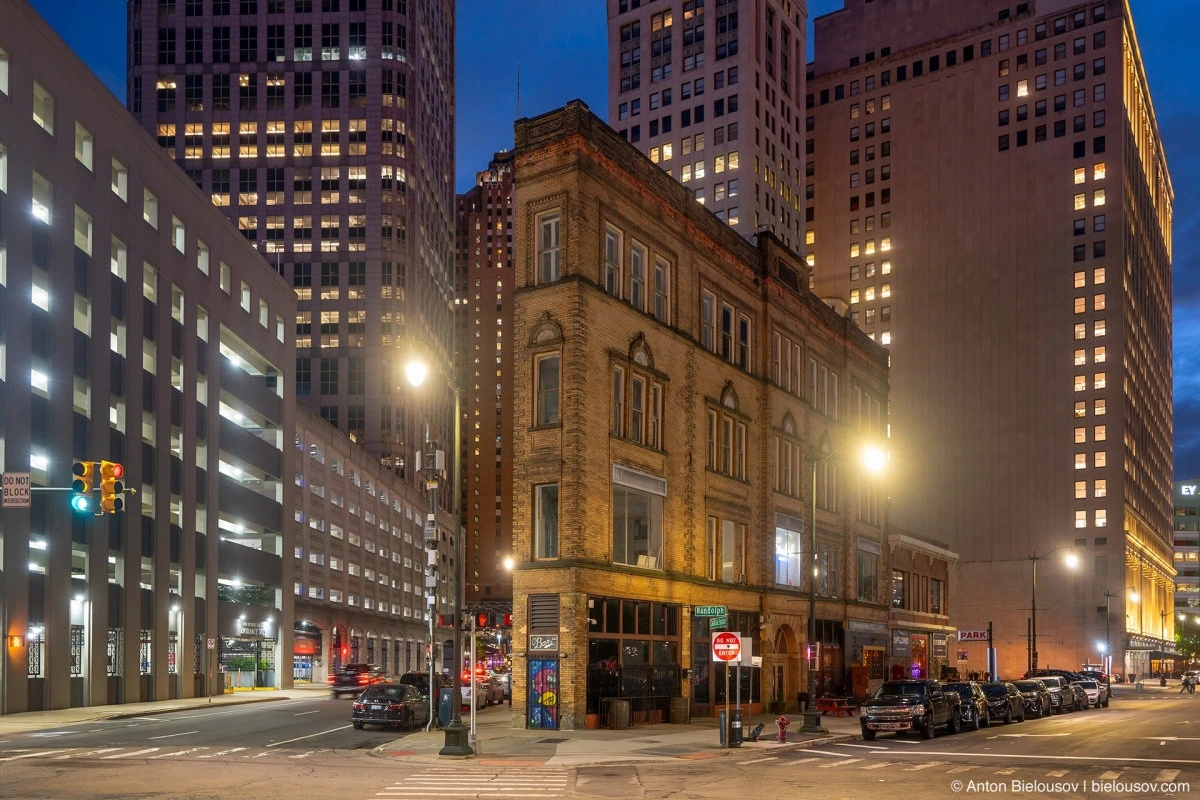
But also, don’t lose your vigilance, of course.
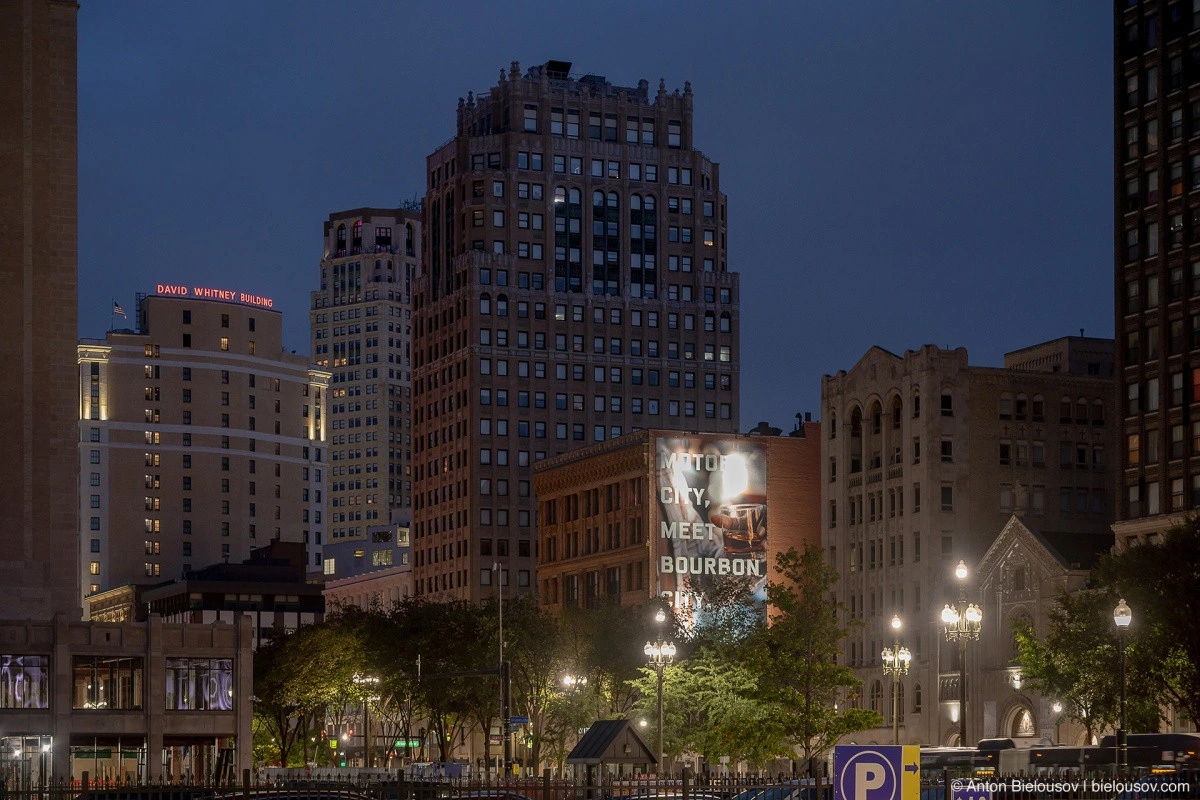
As much as I dreamed of visiting Detroit, I now dream of returning here again and maybe writing about the history of Henry Ford, but that’s for another time.

I initially stayed at the hotel within MotorCity Casino (closest to old Detroit) and then spent several nights at the Sonders hotel (in the heart of downtown). A car wasn’t necessary in the city, where cars essentially originated — everything turned out to be within walking distance. Only on the last evening did I decide to eat pizza at home and brought it on the People Mover to keep it warm. Also, if you’re wondering, there’s electric scooter rental available in Detroit.

